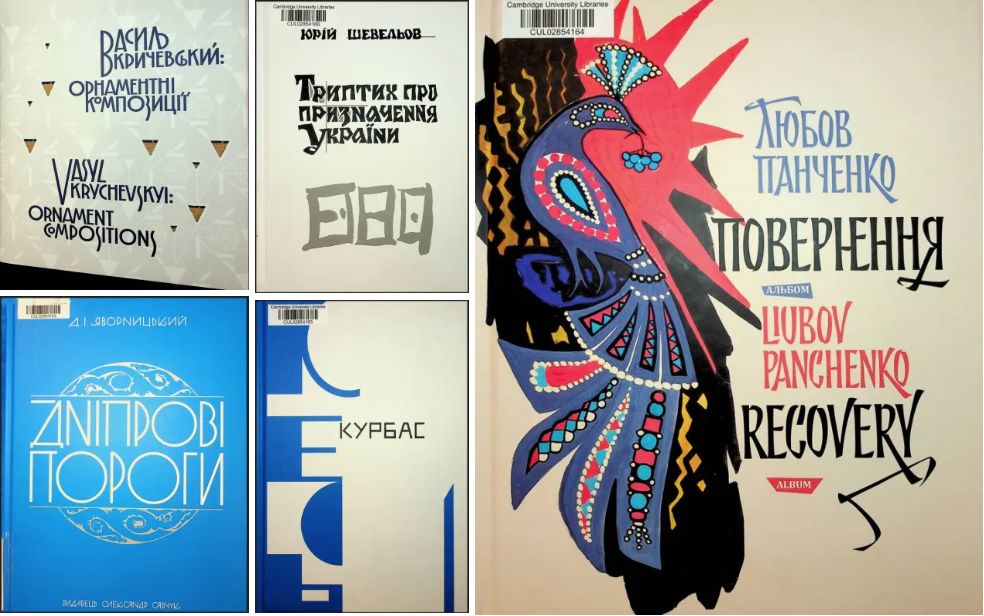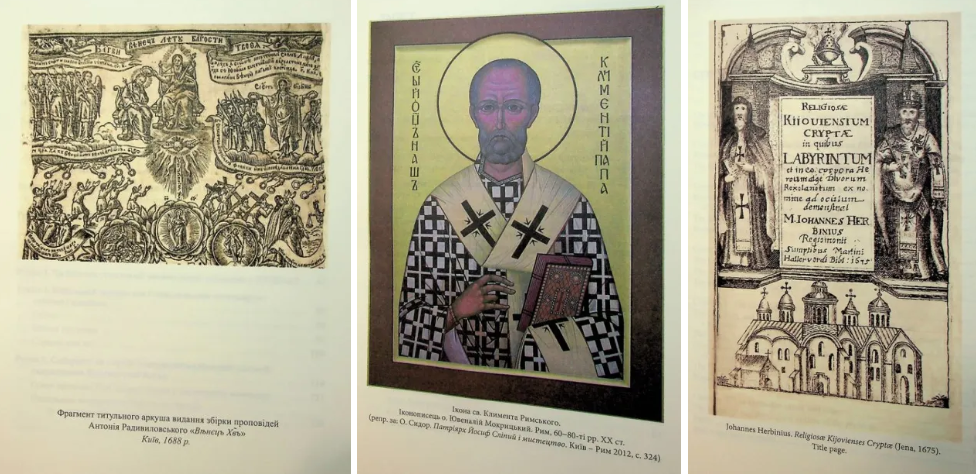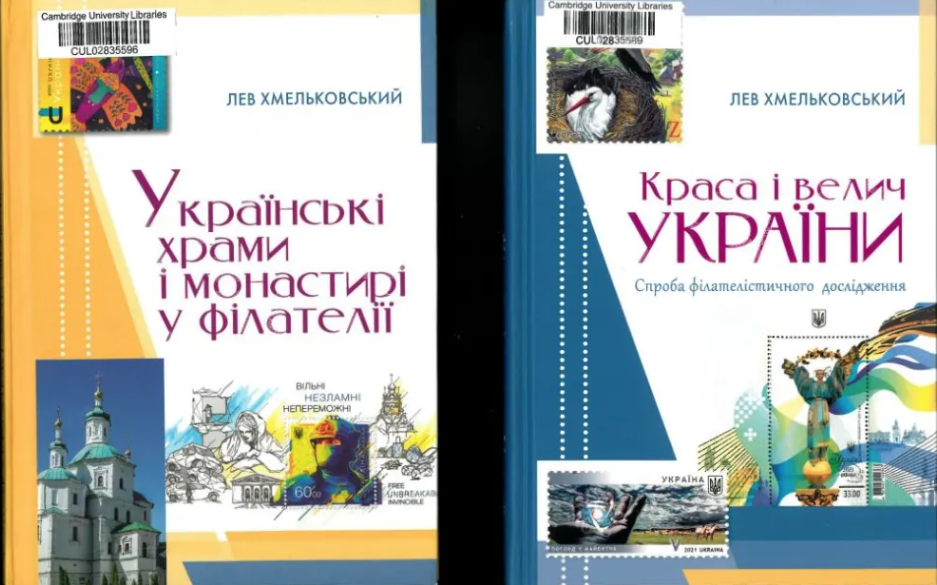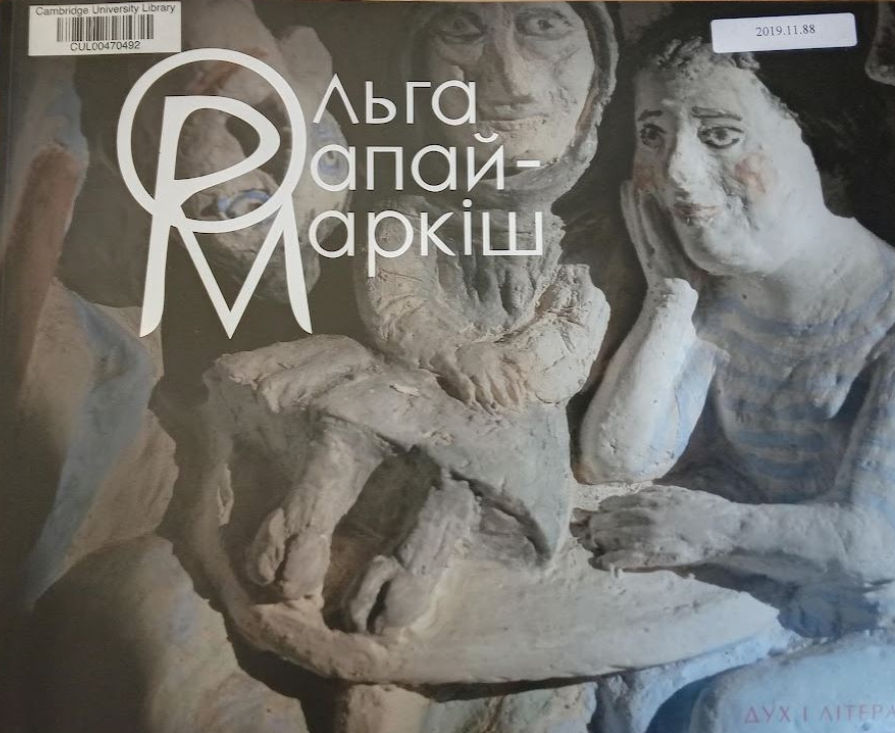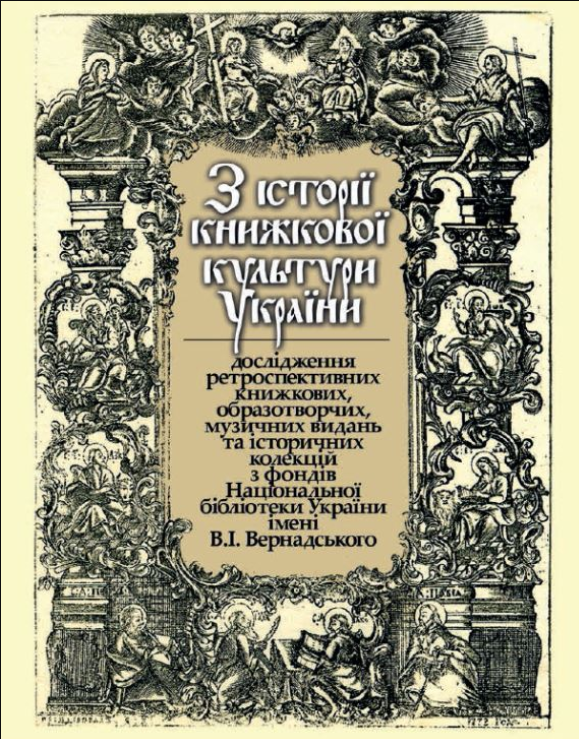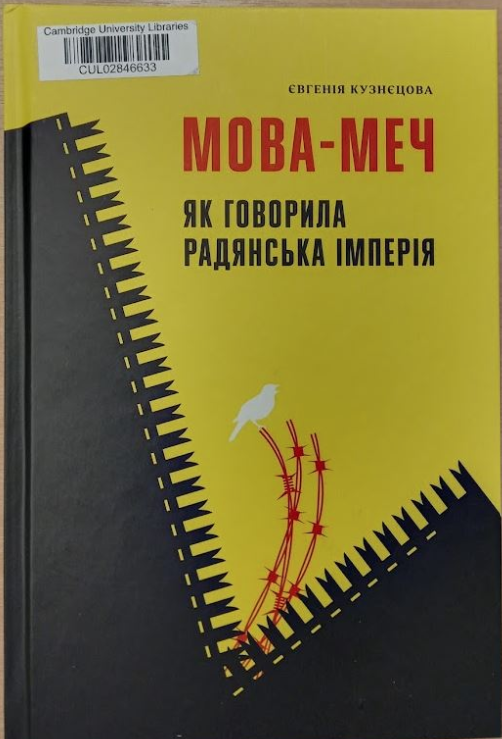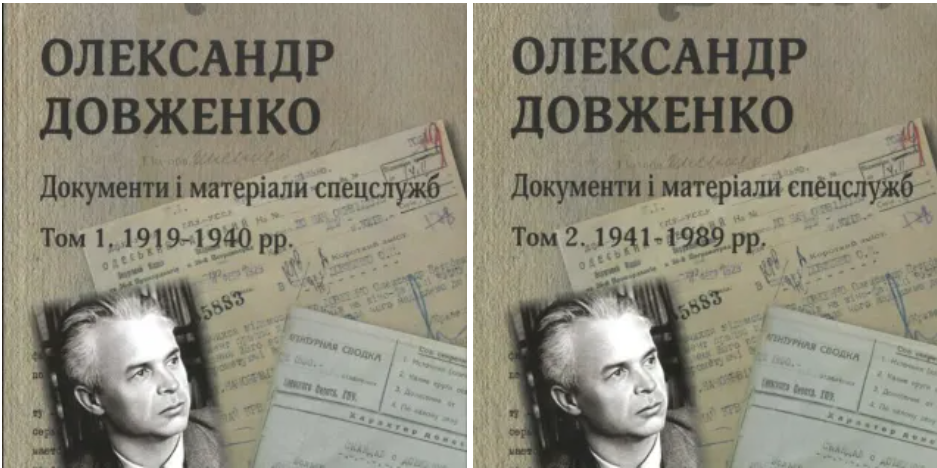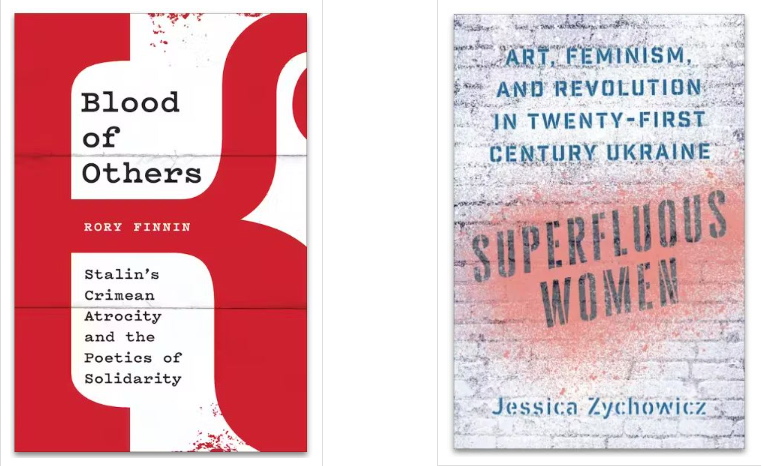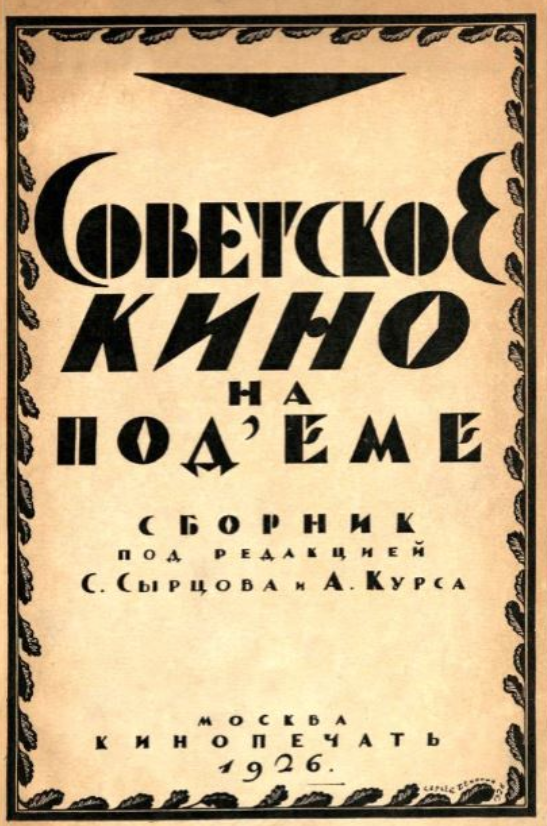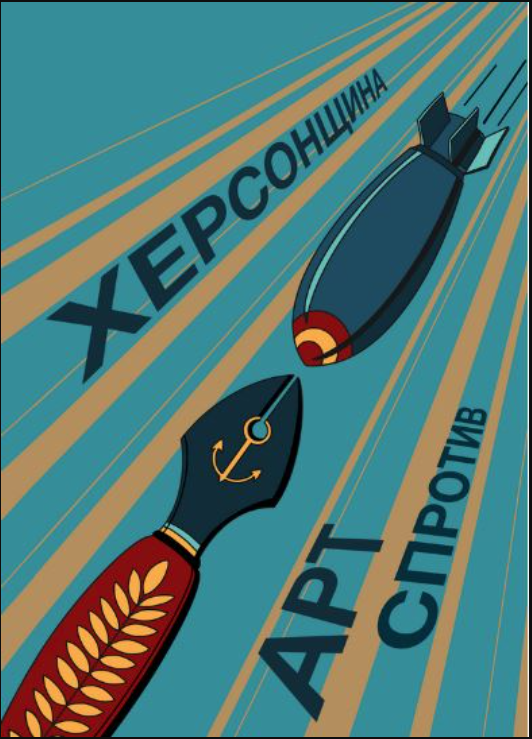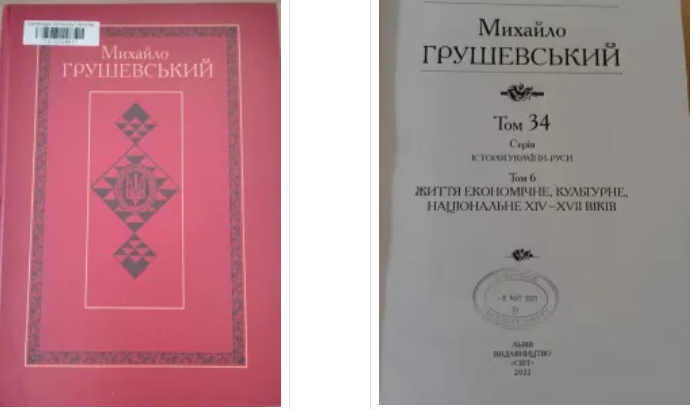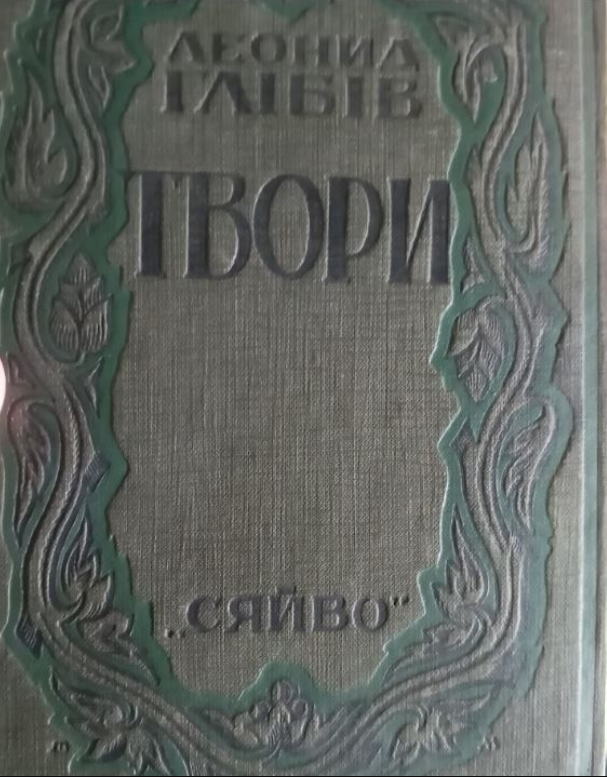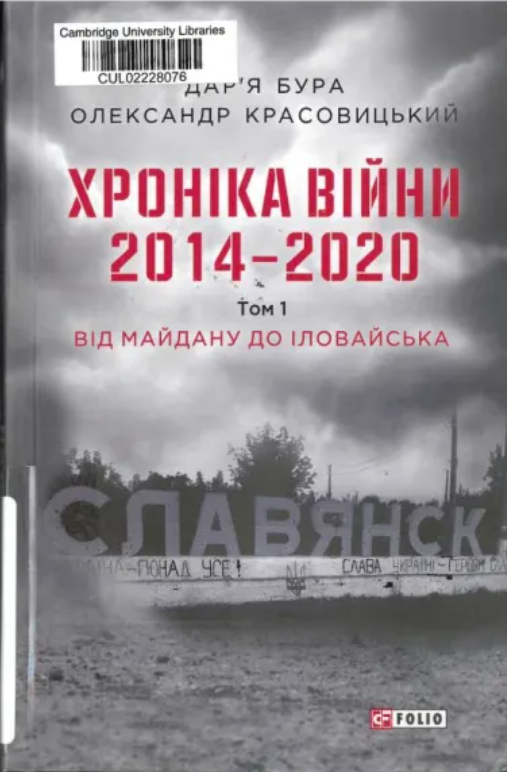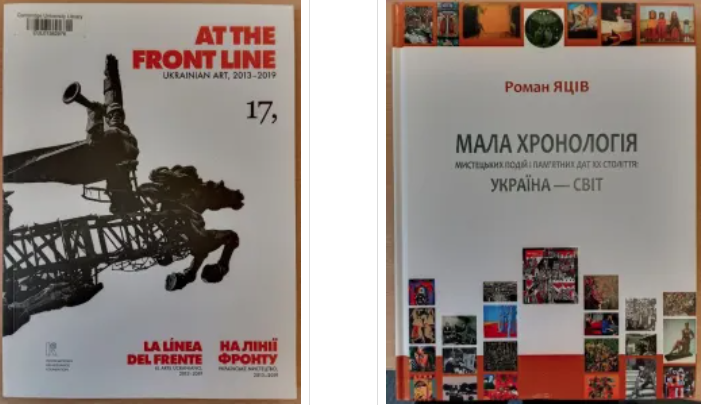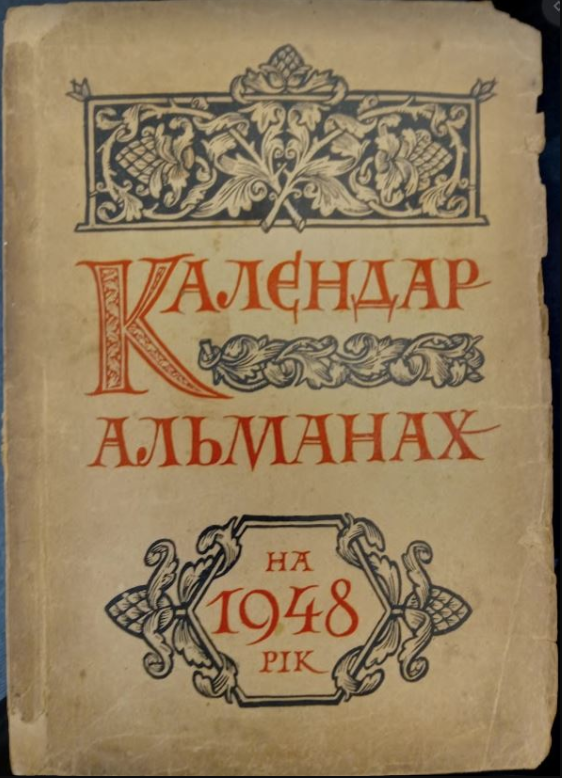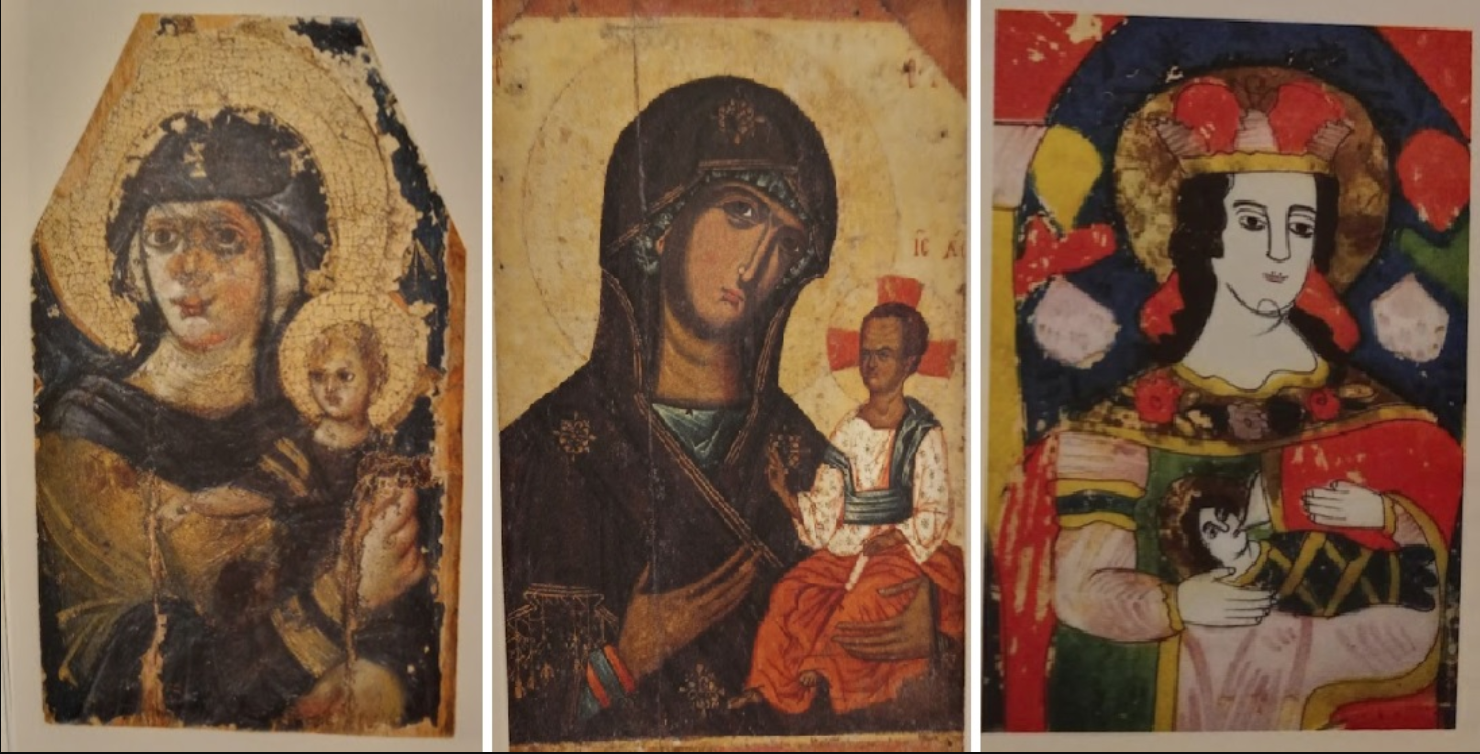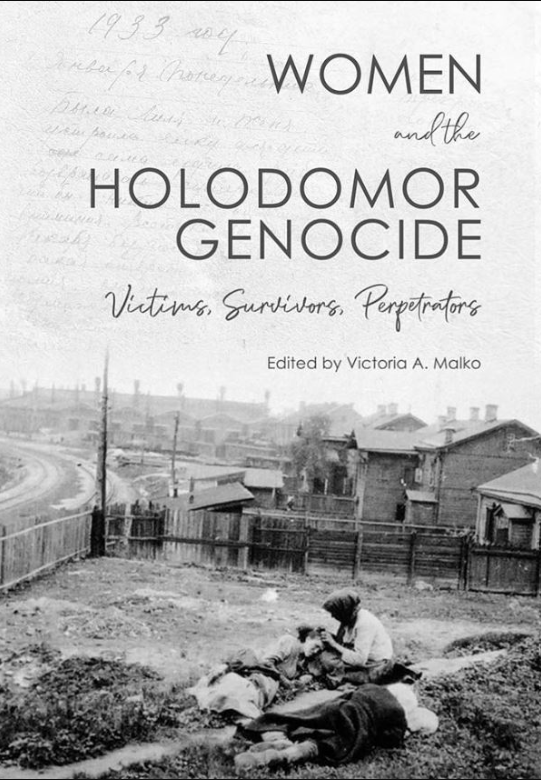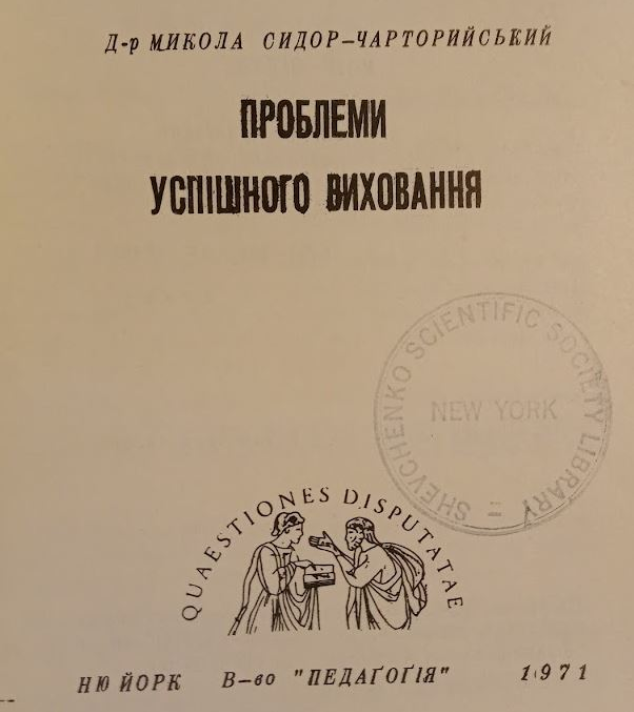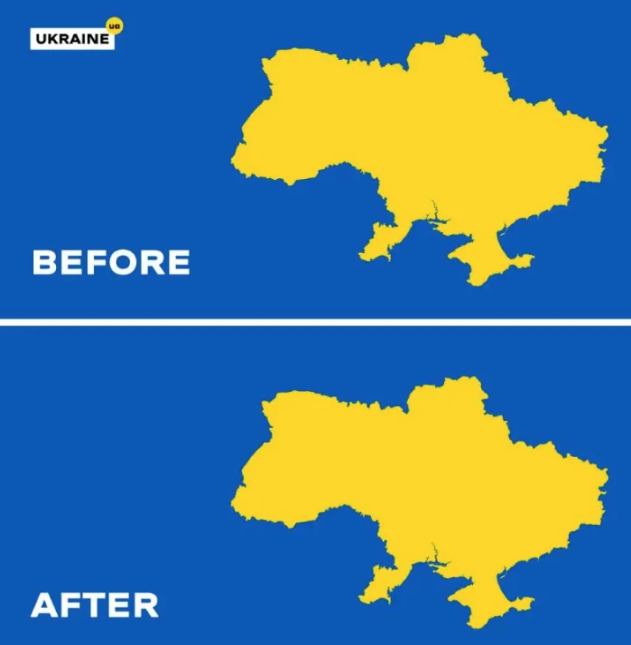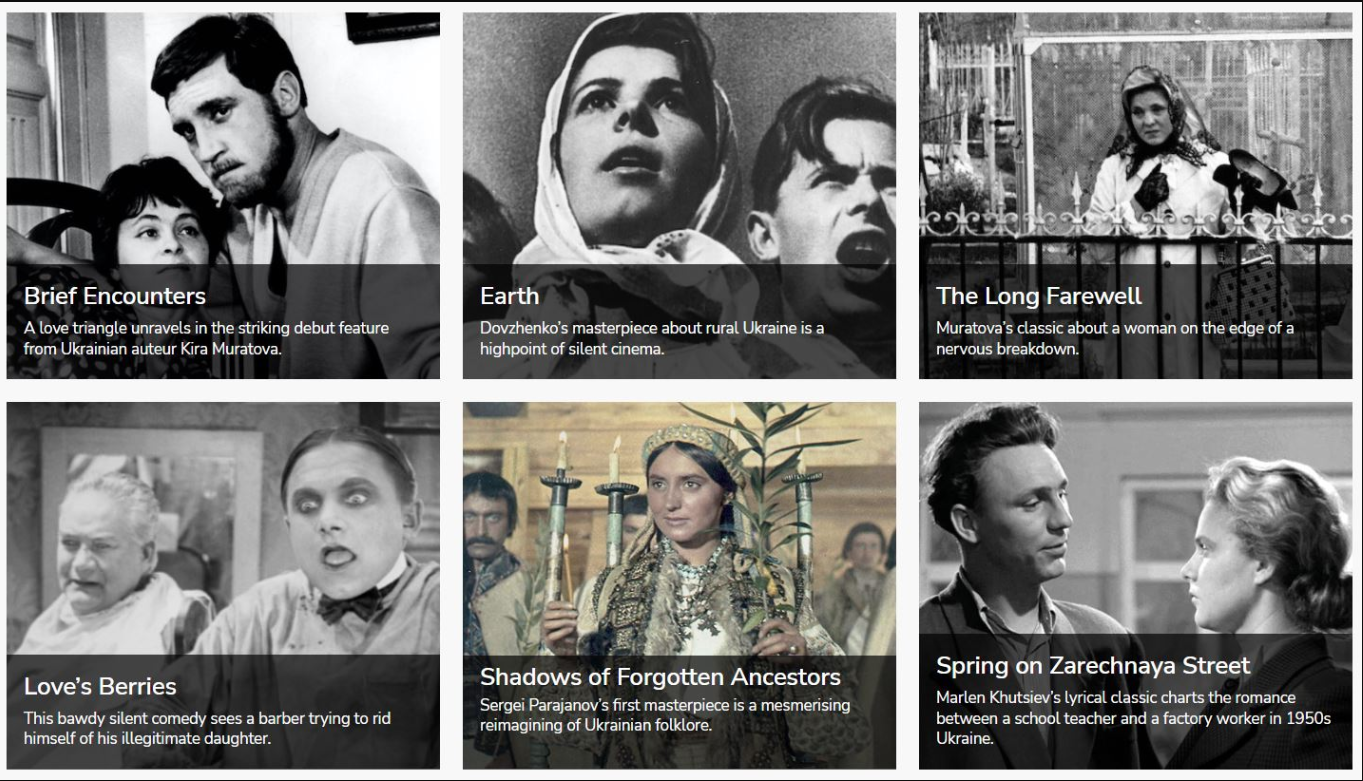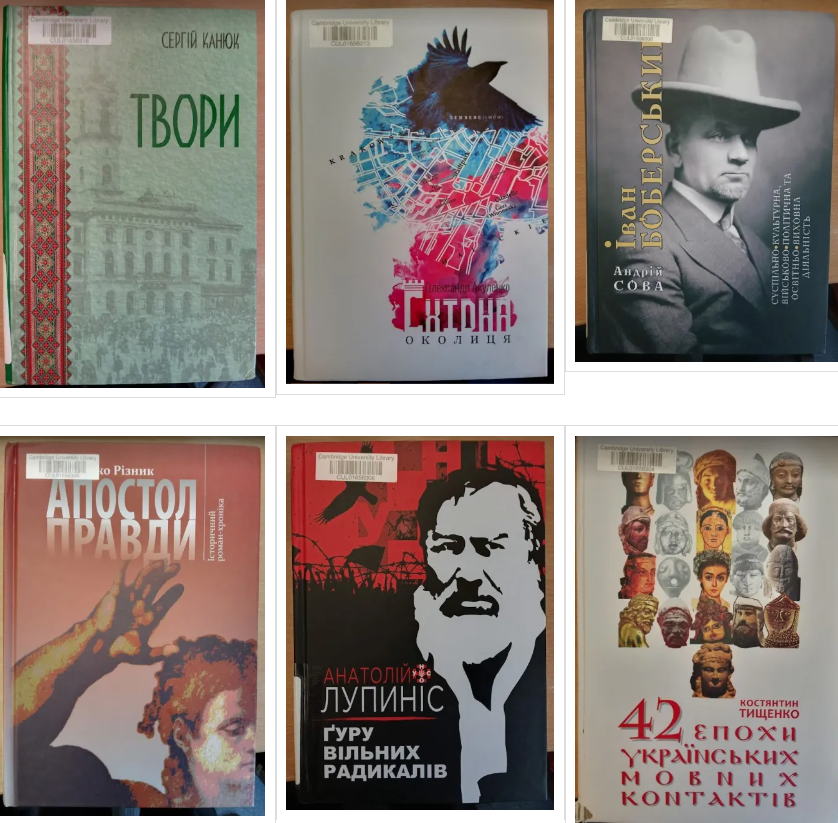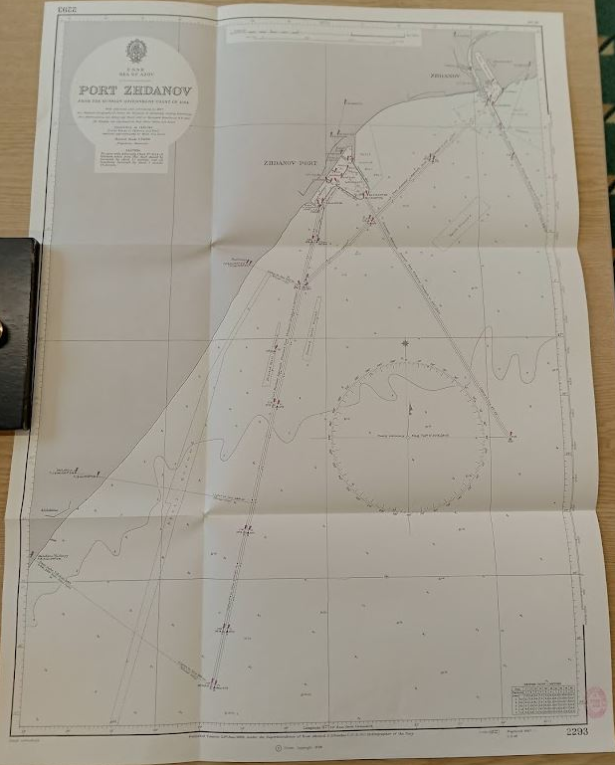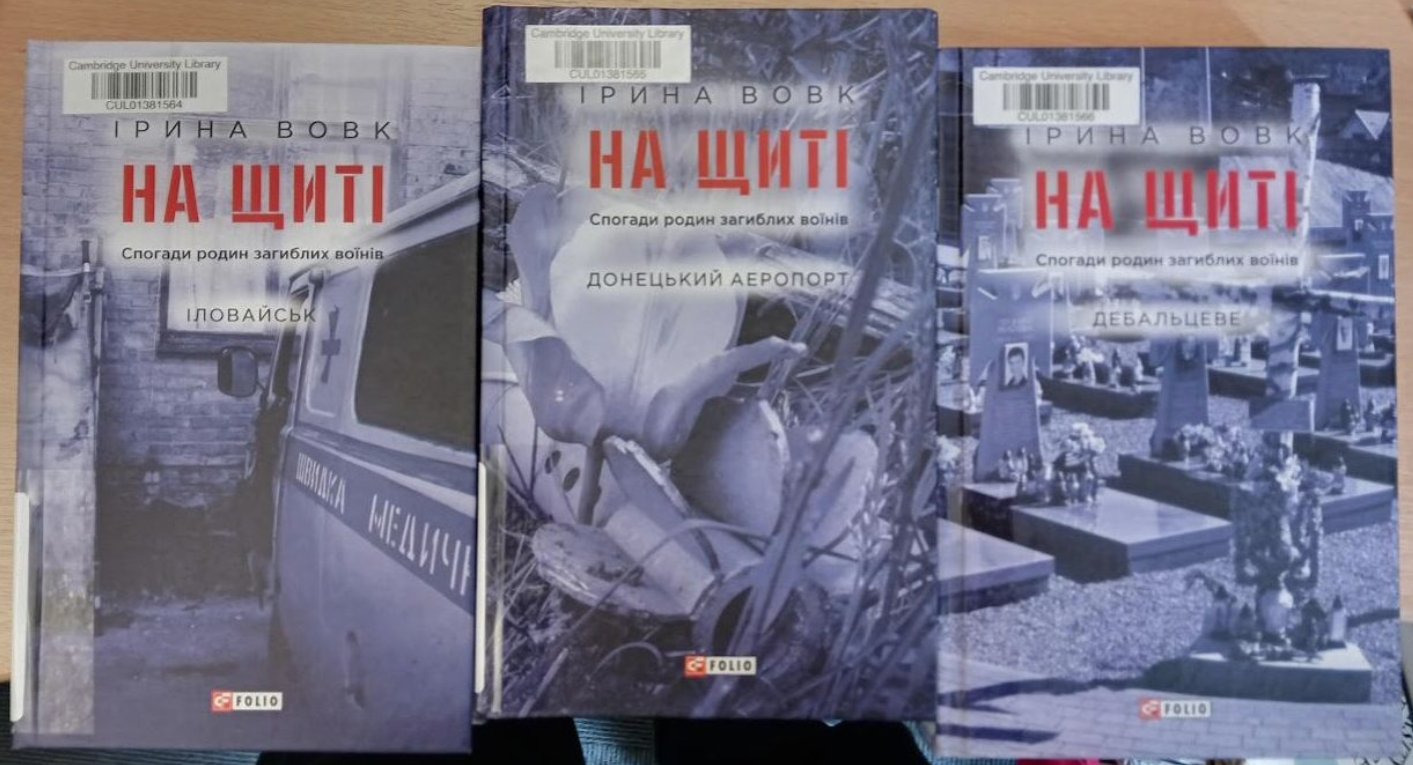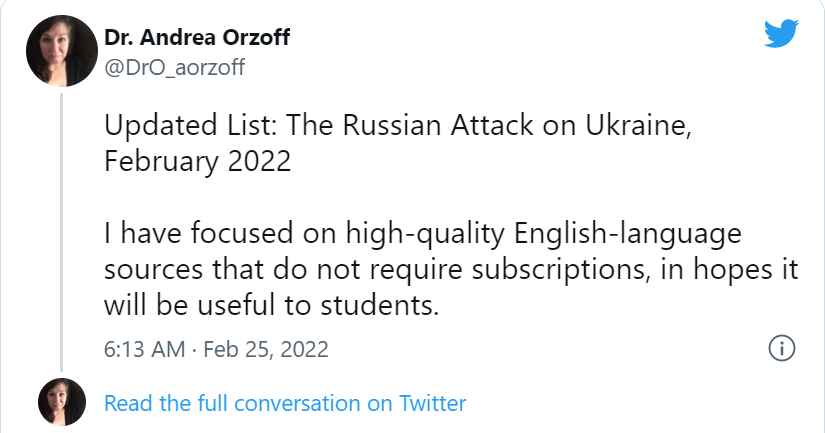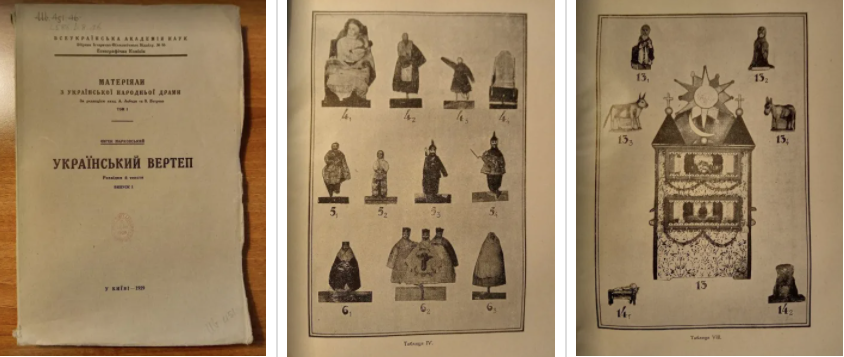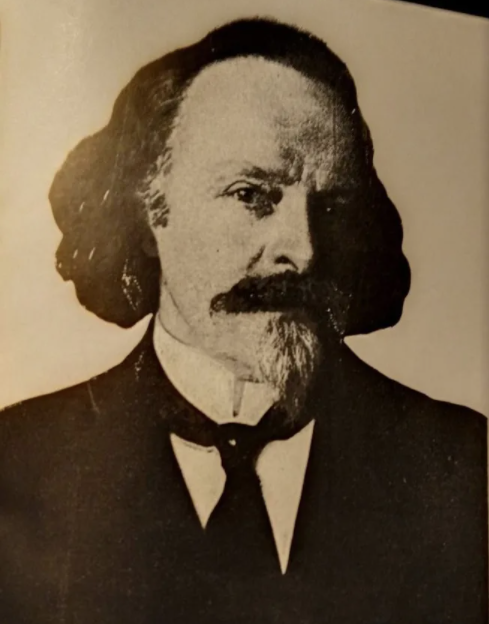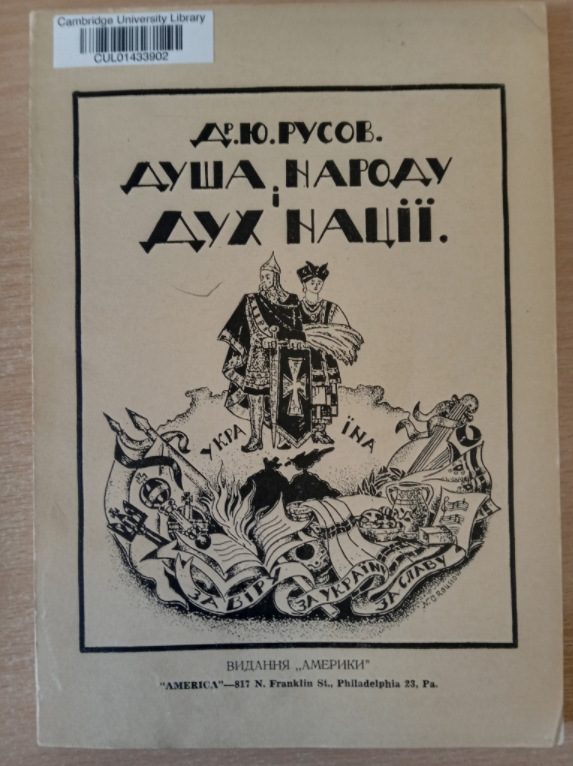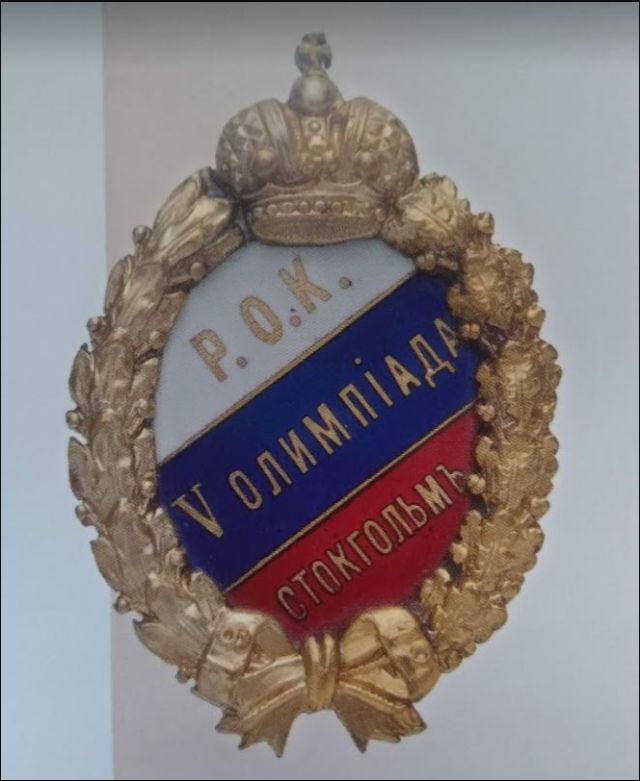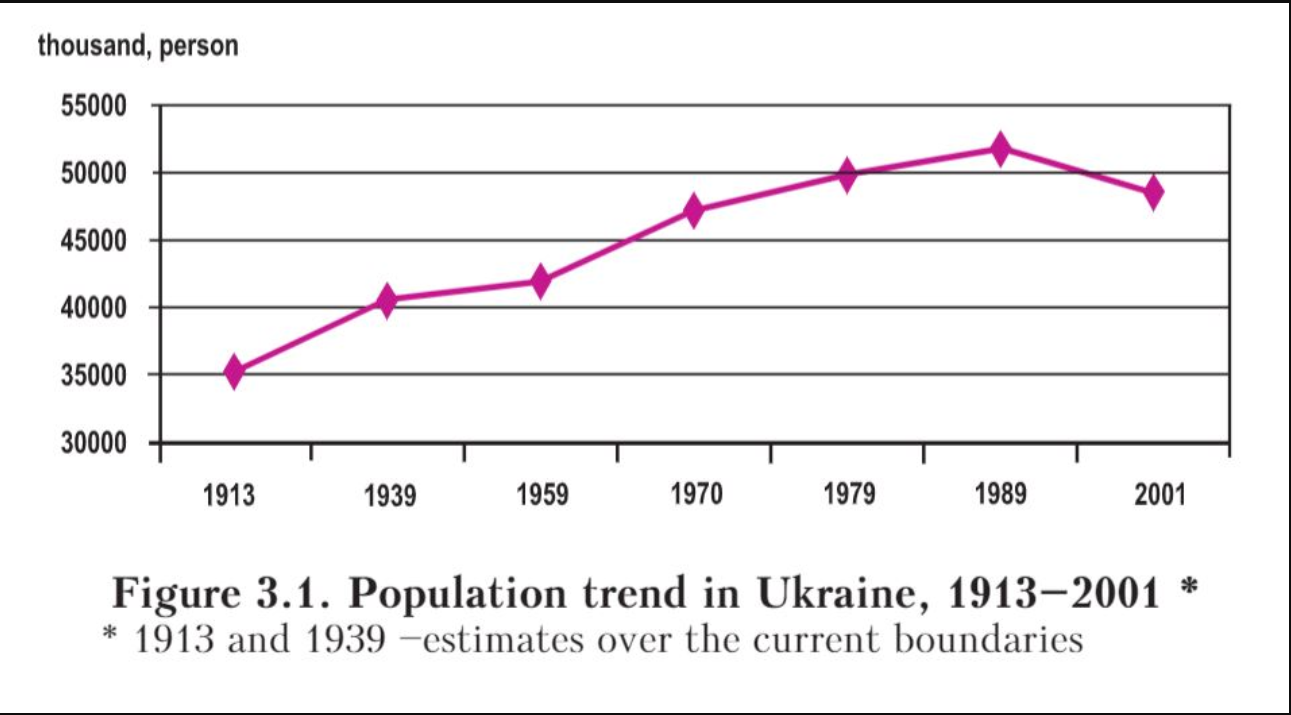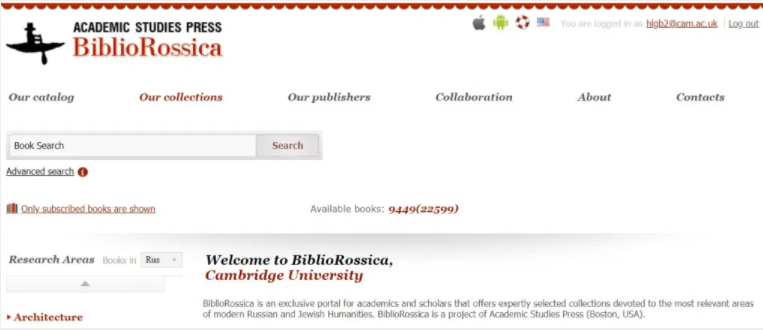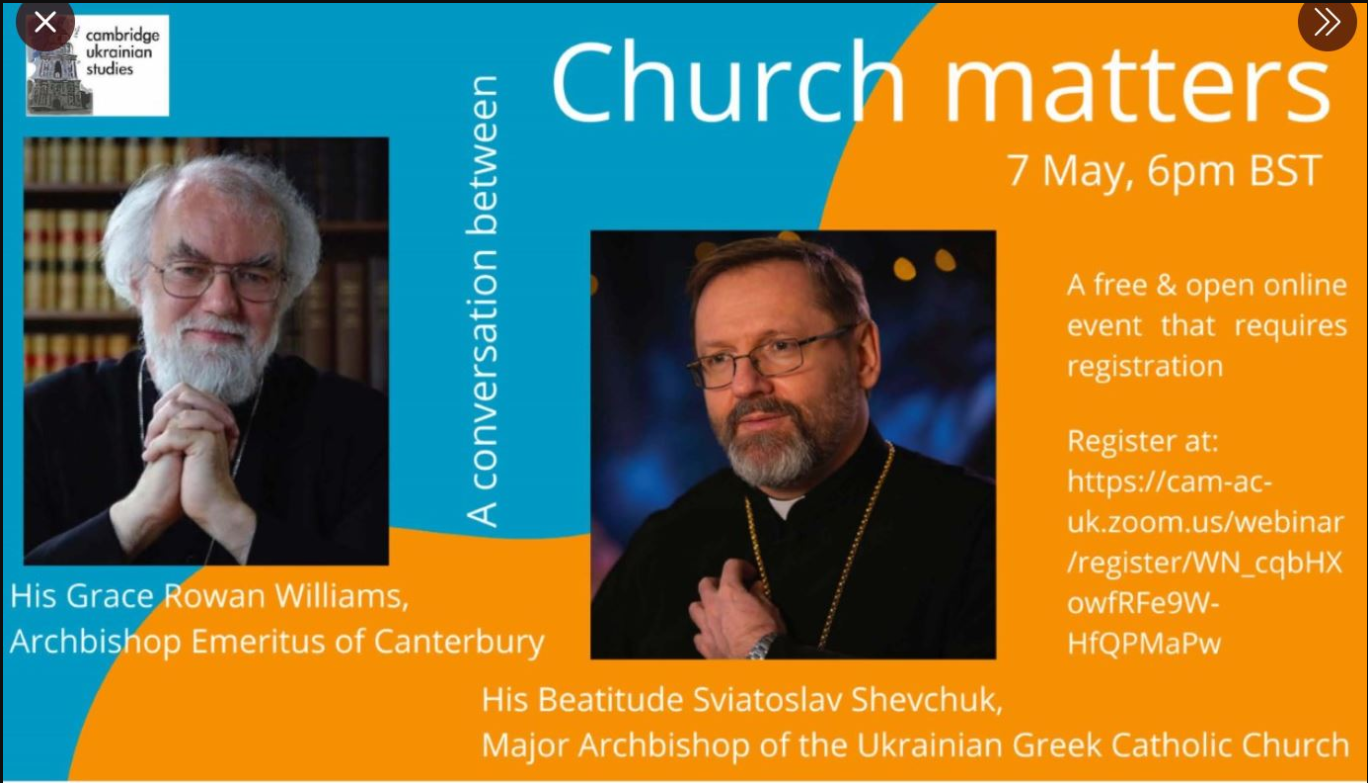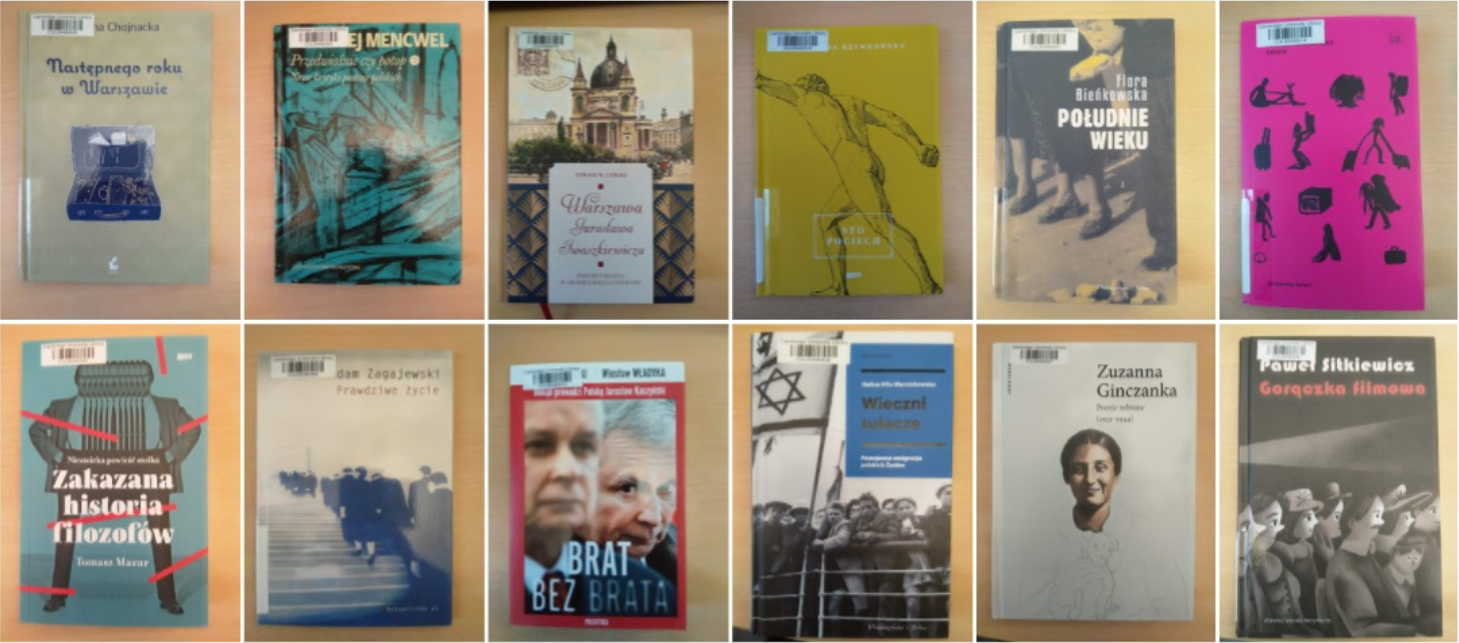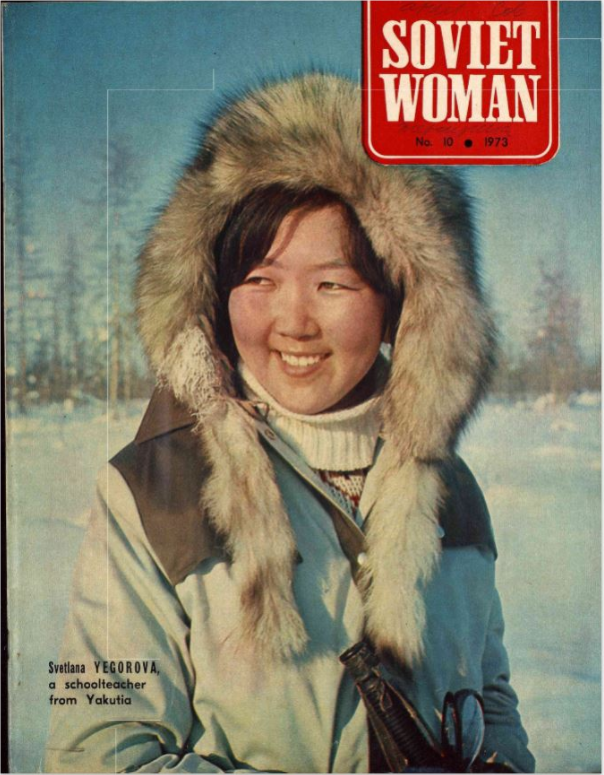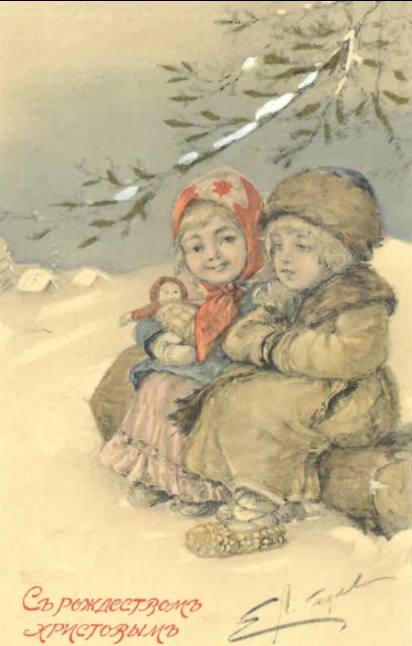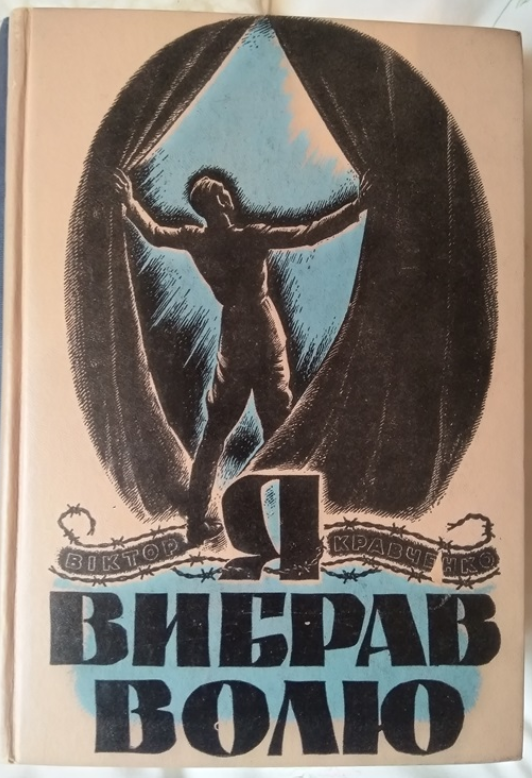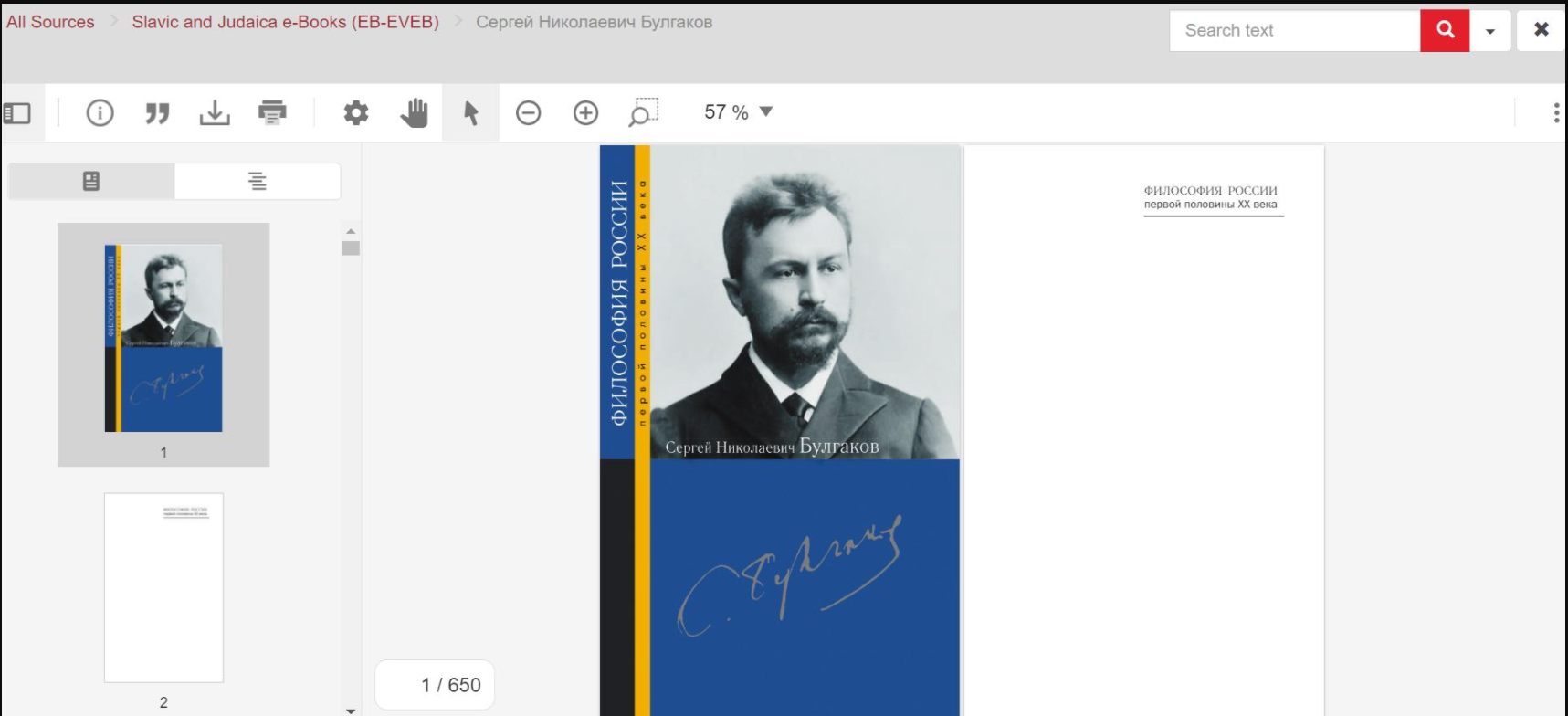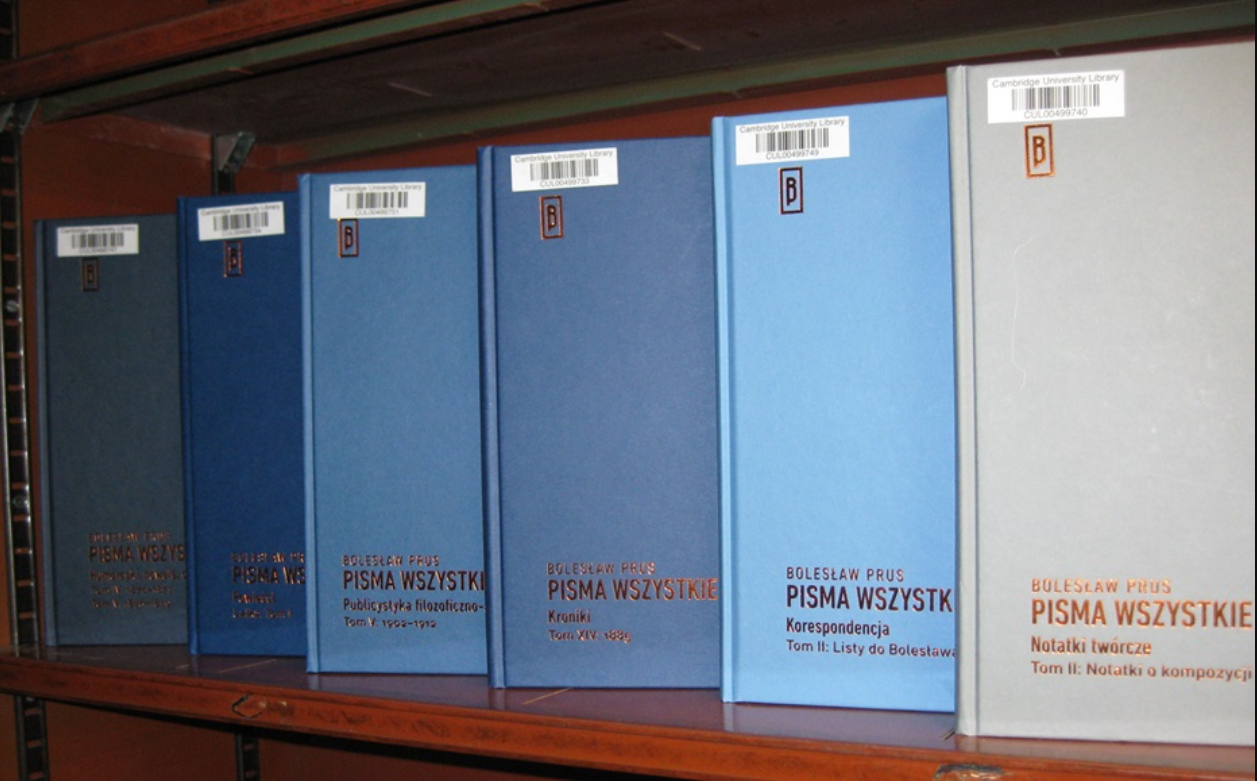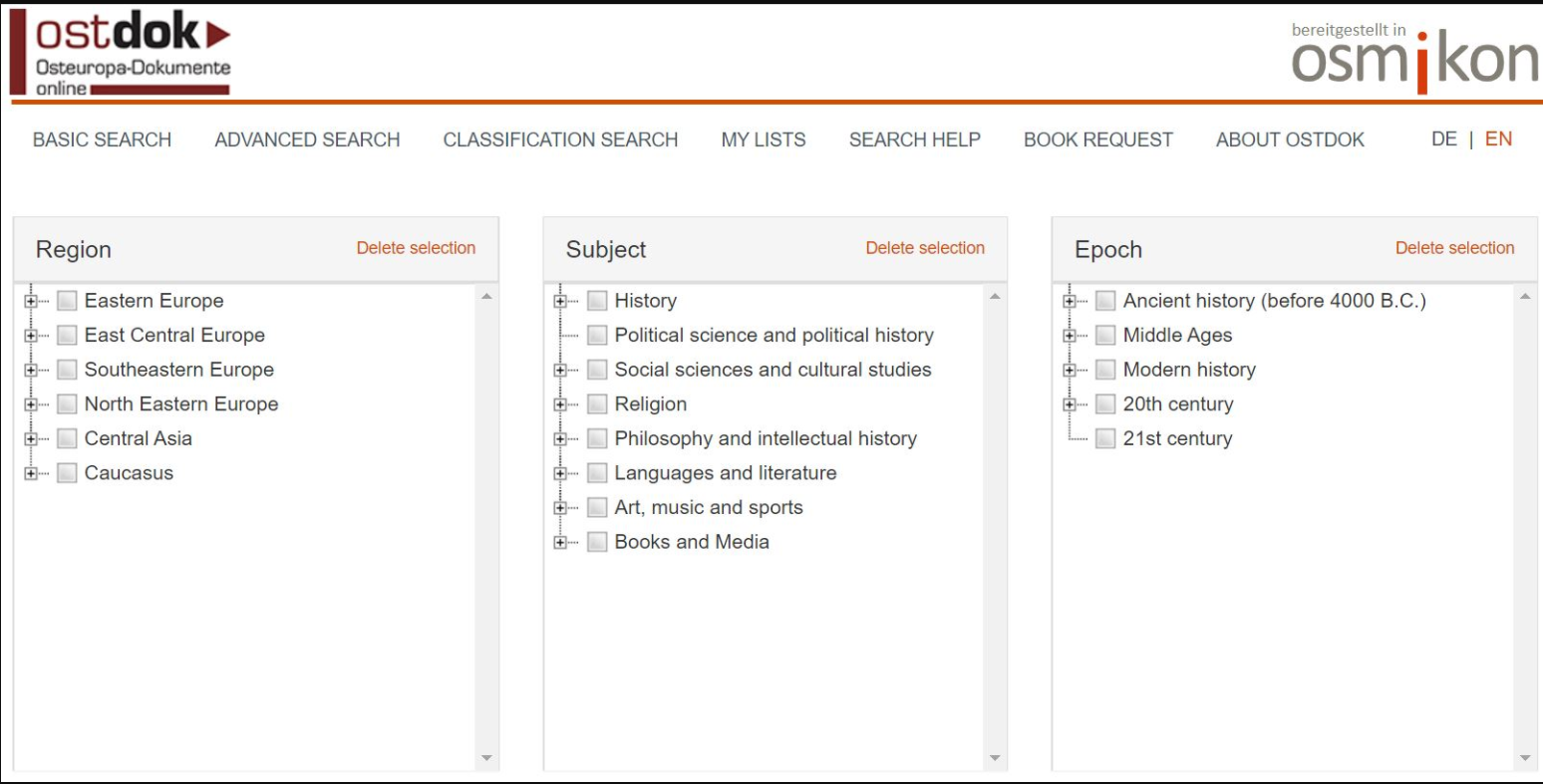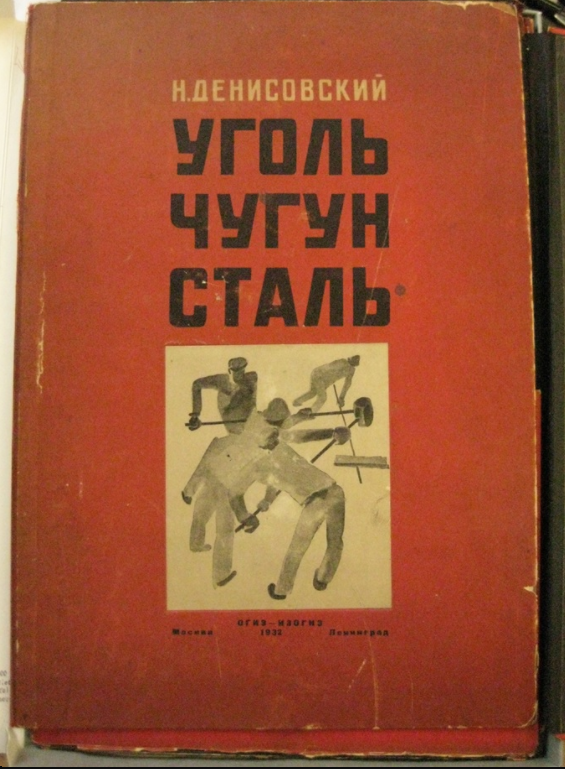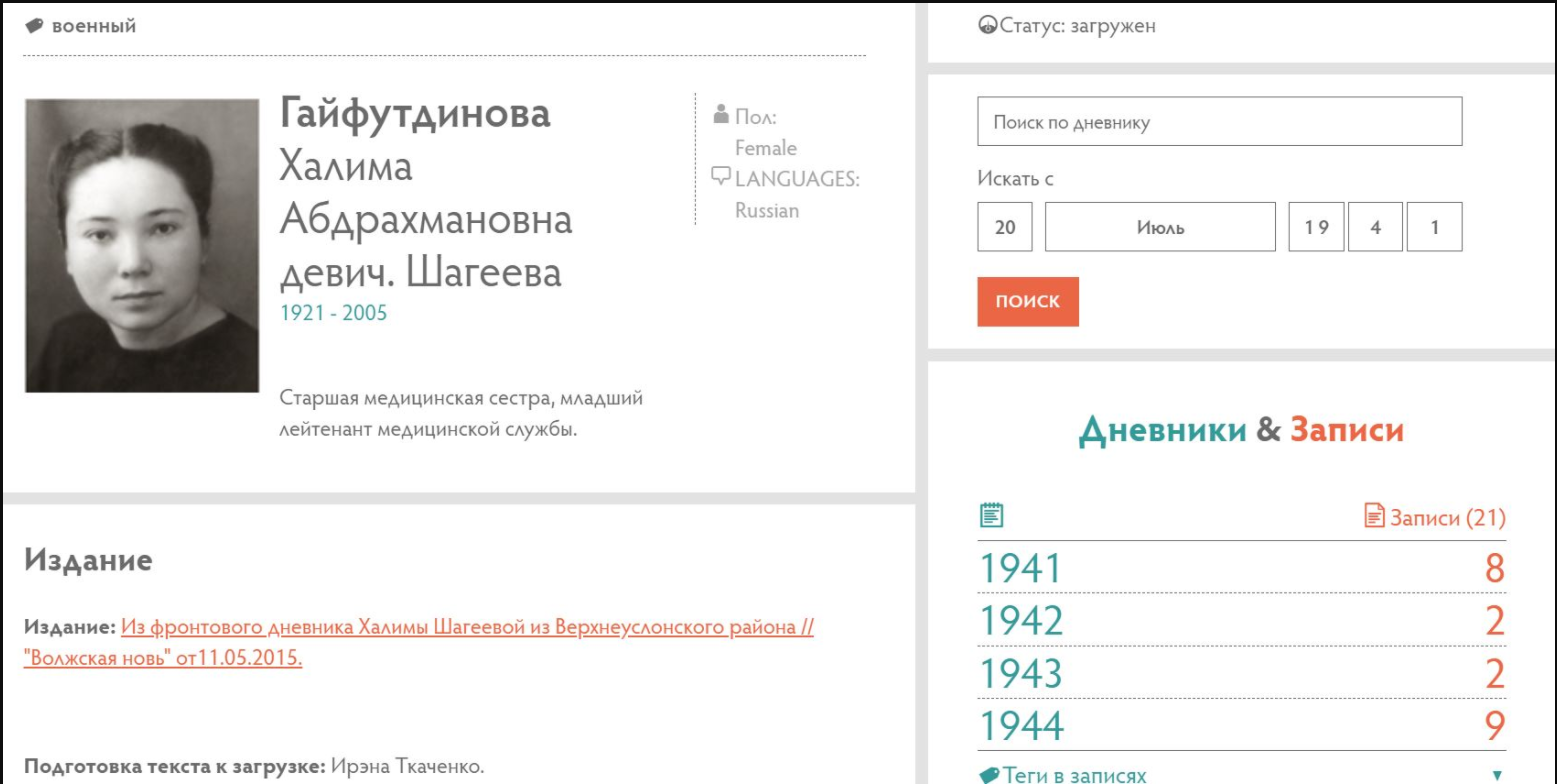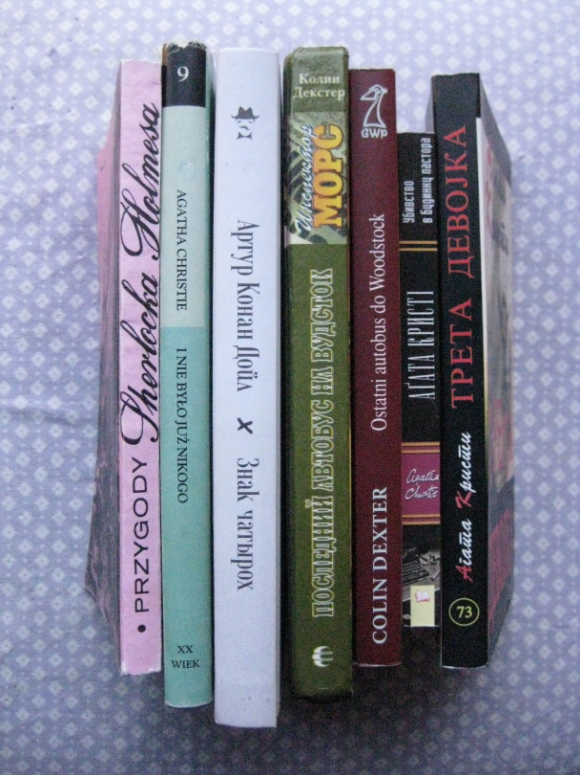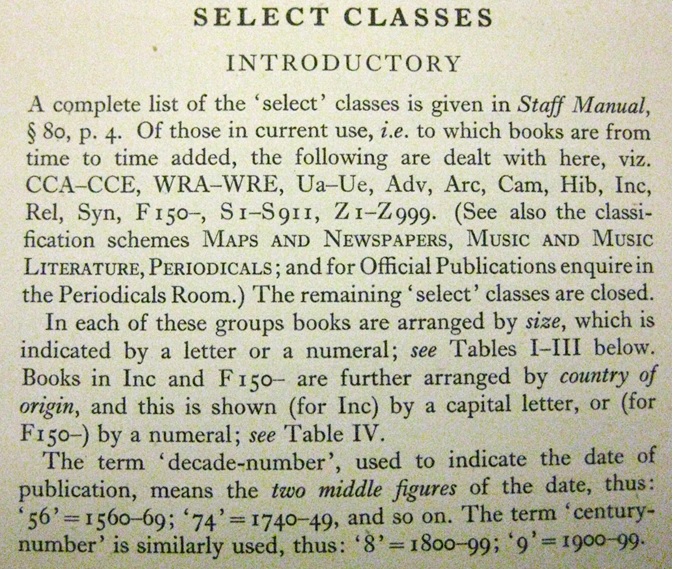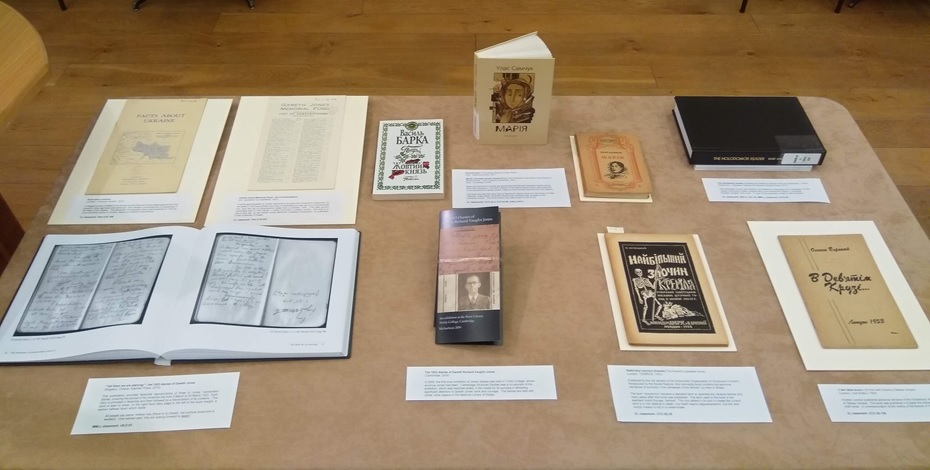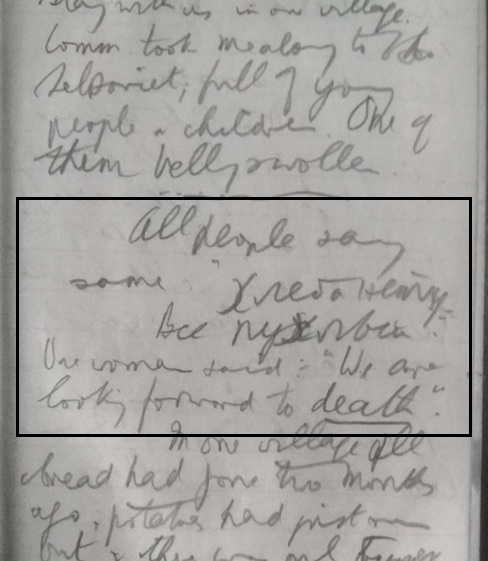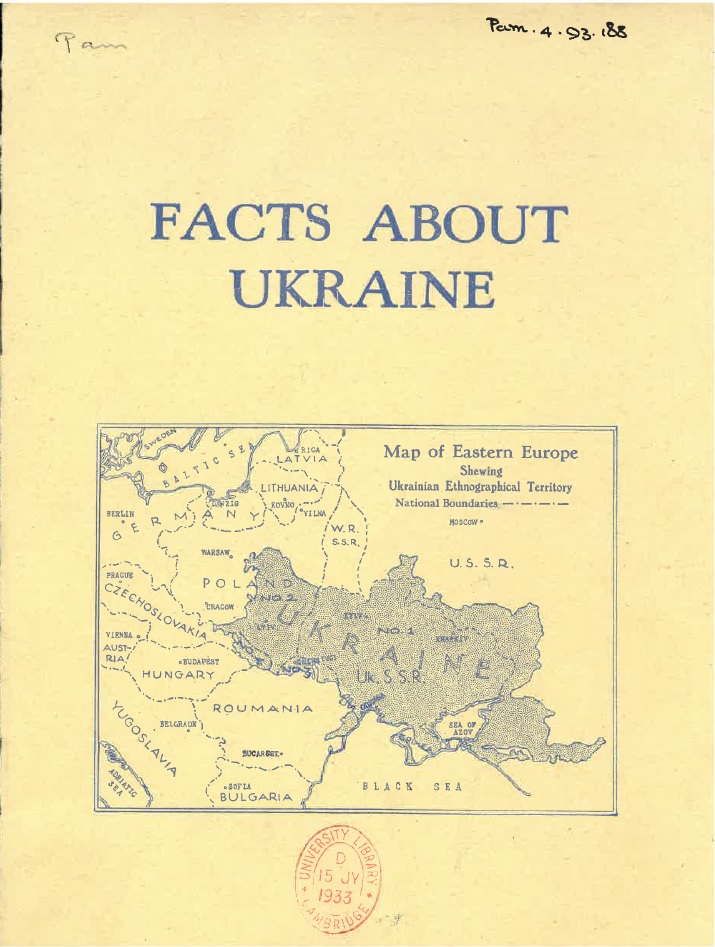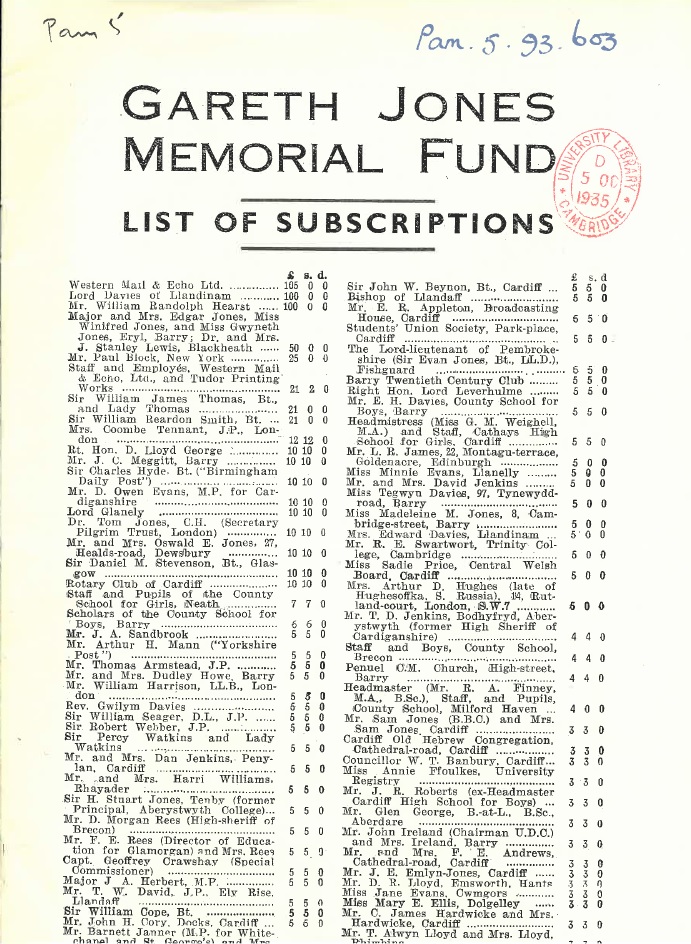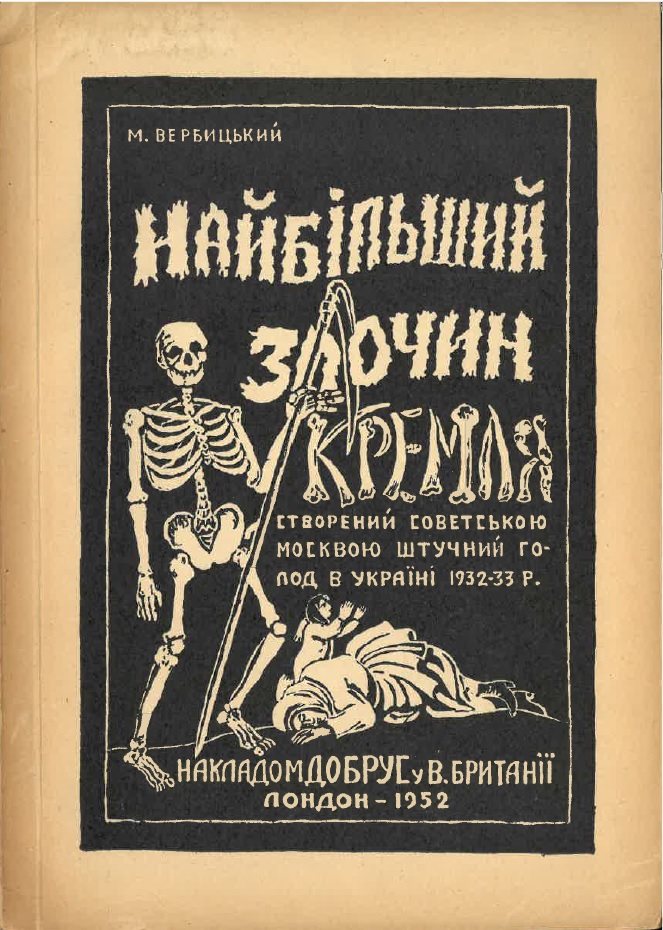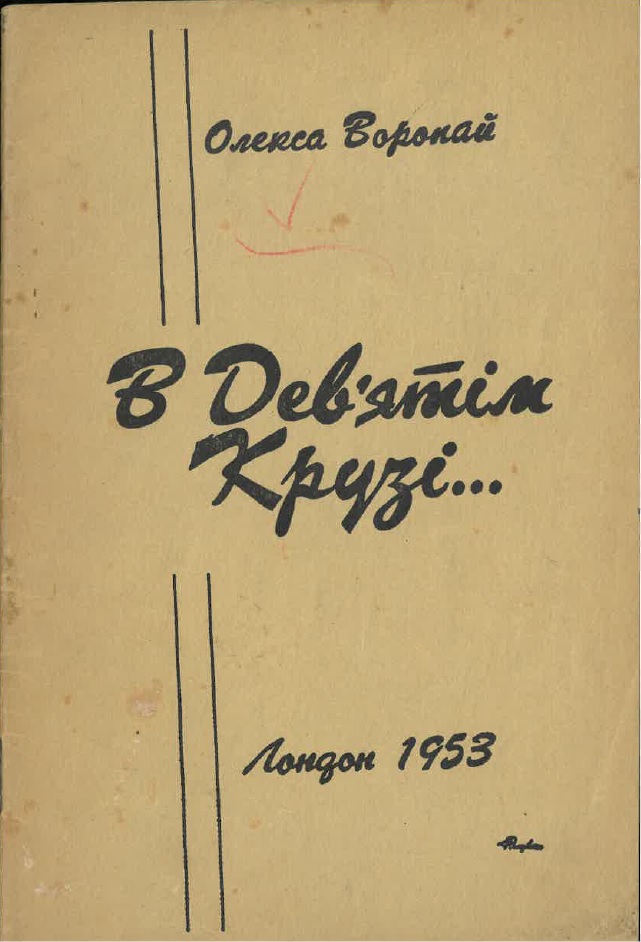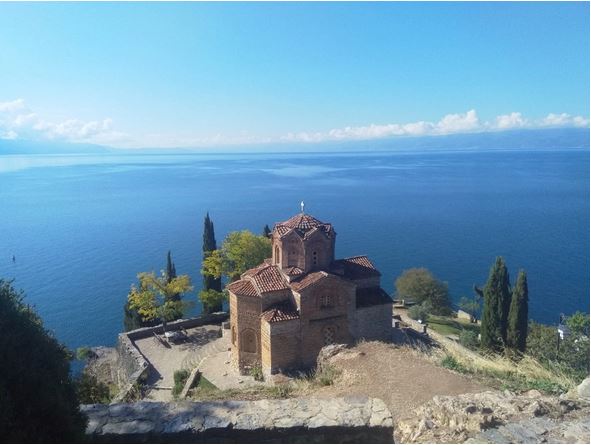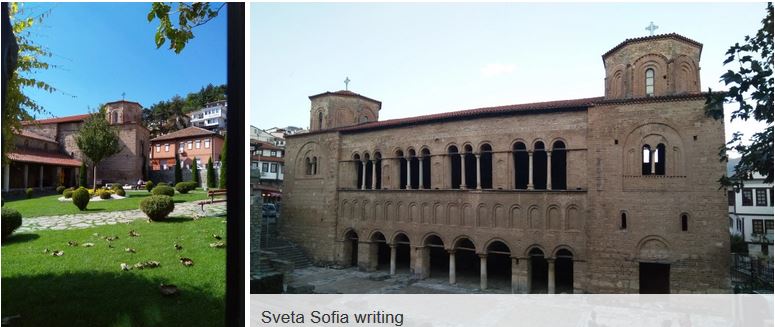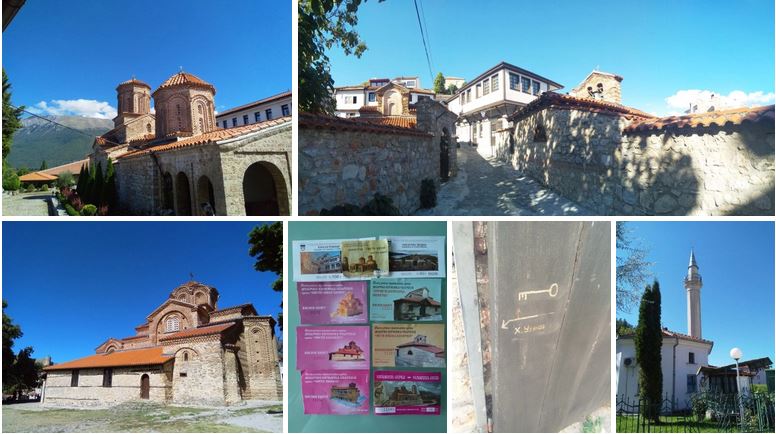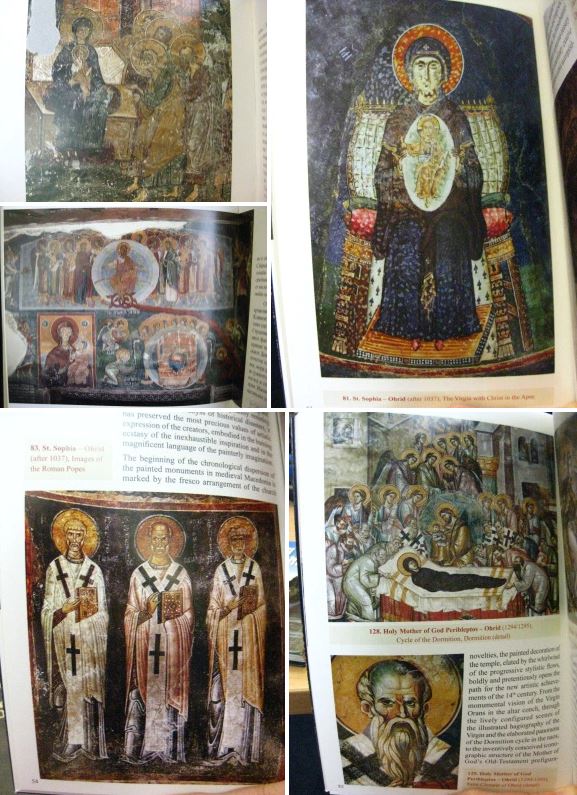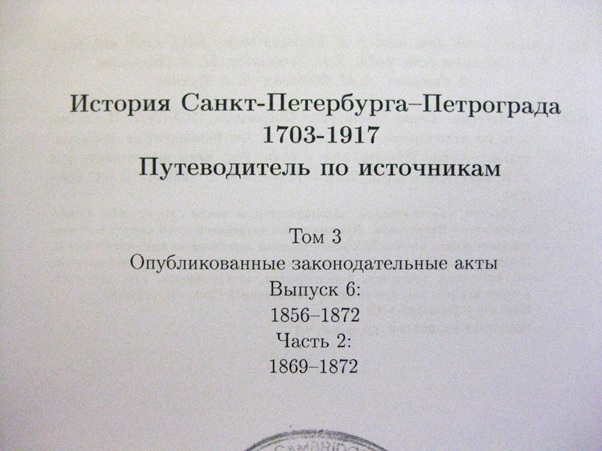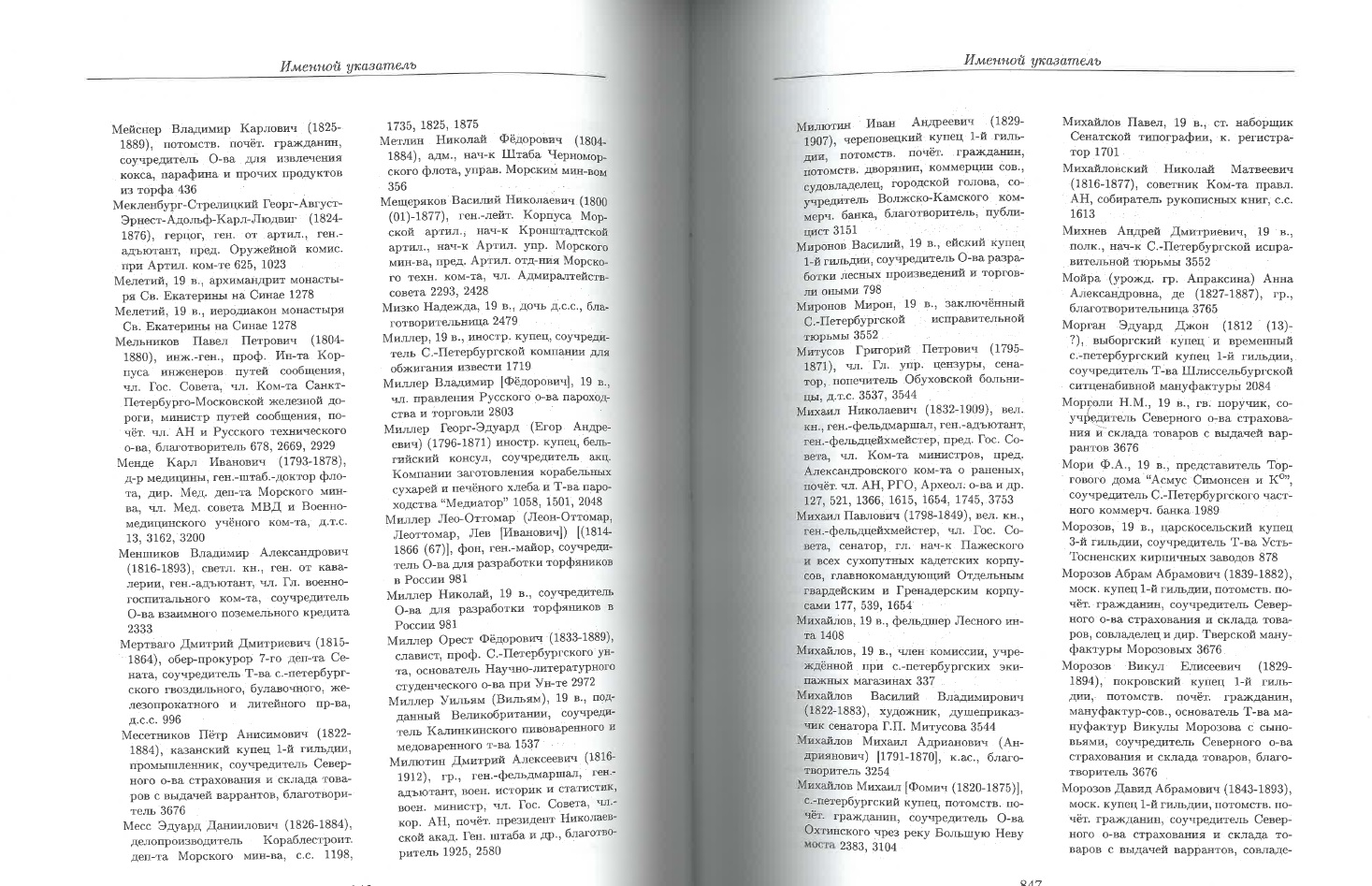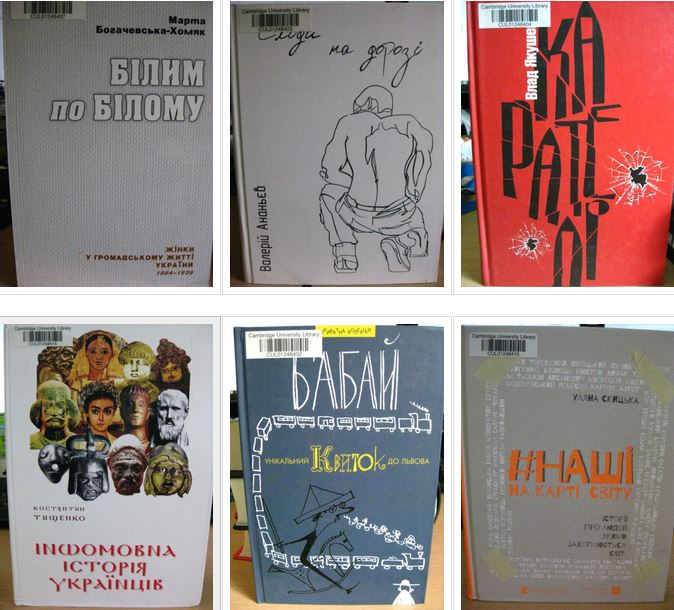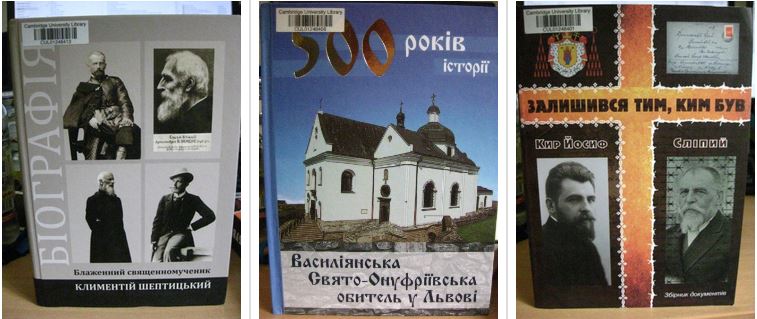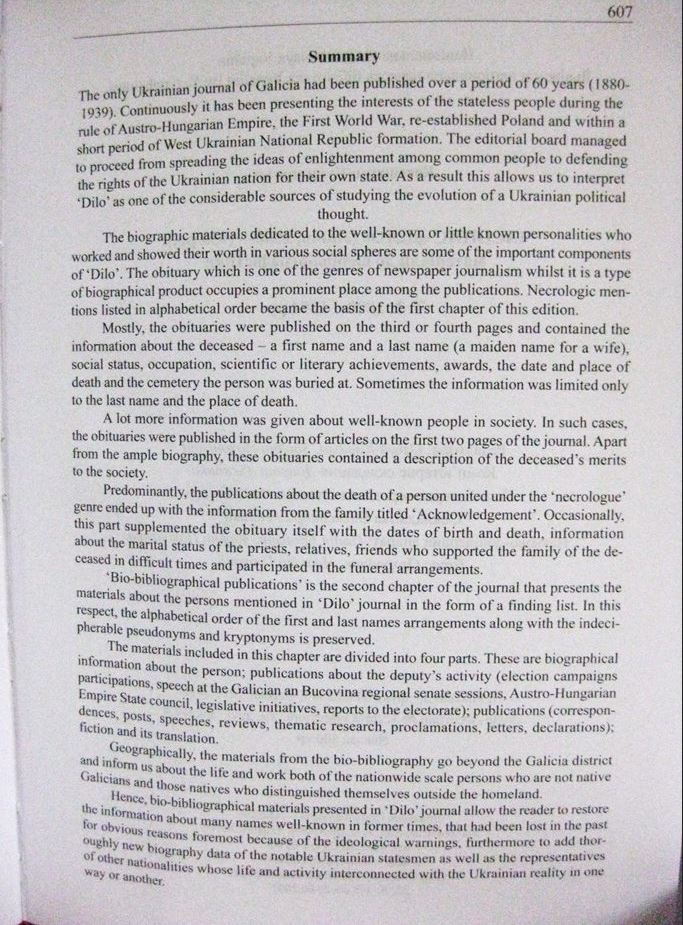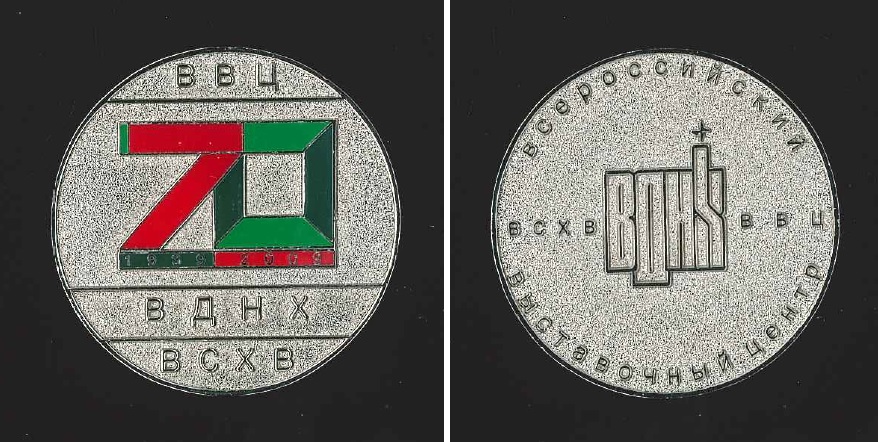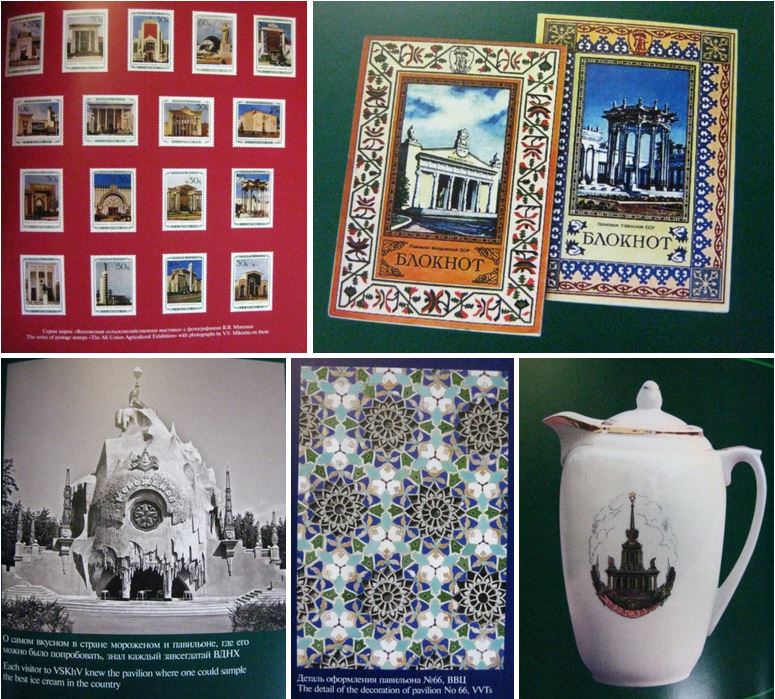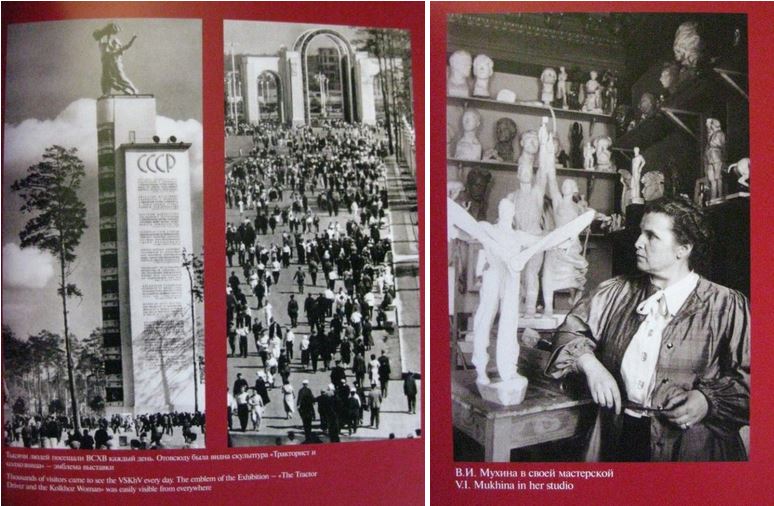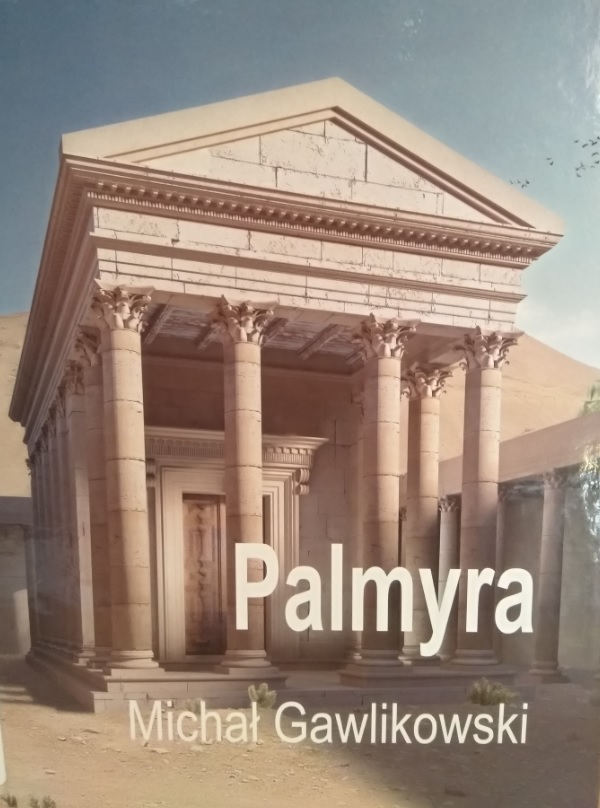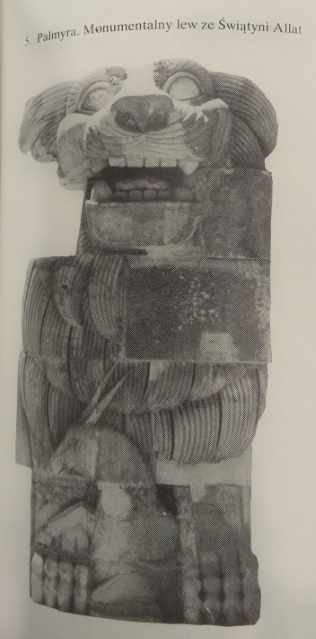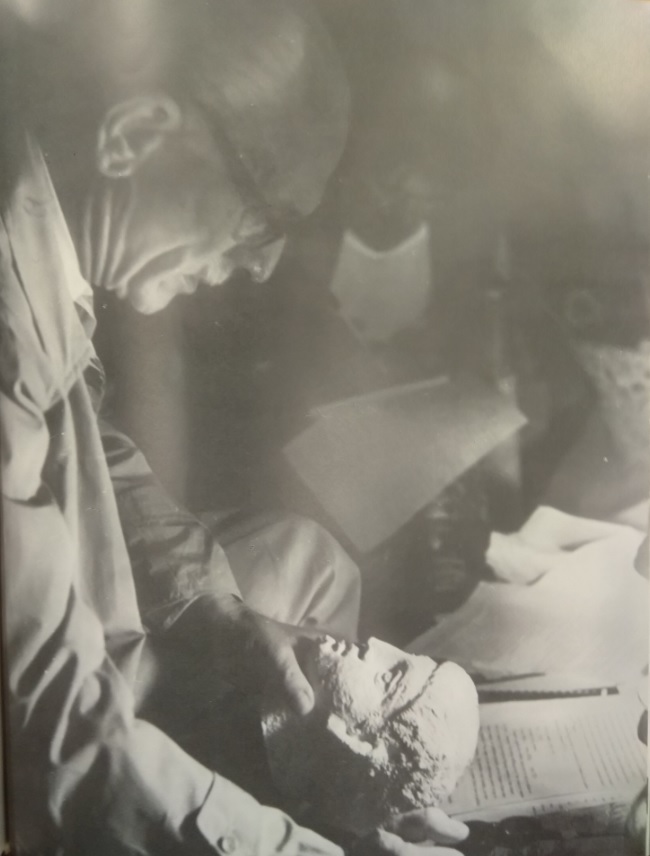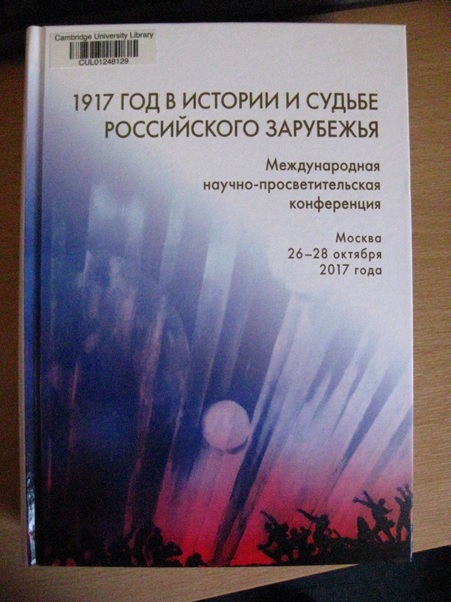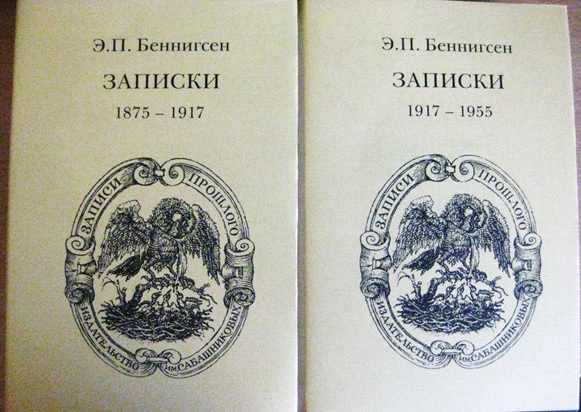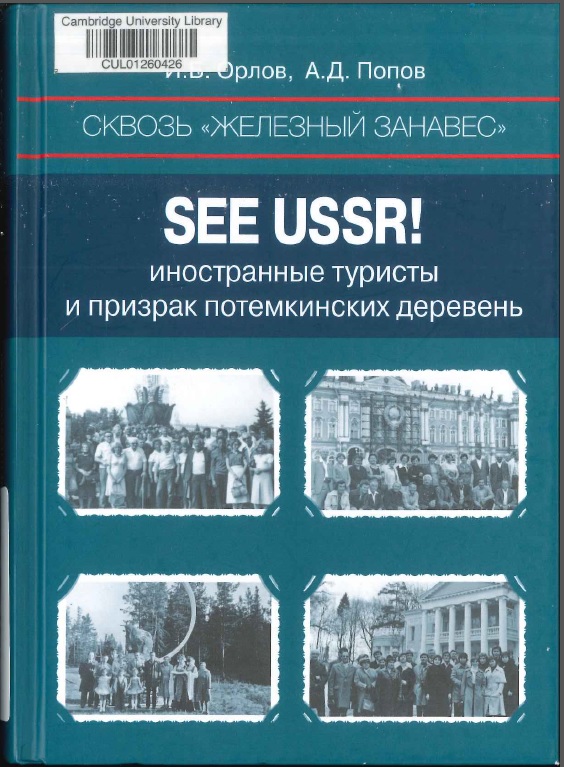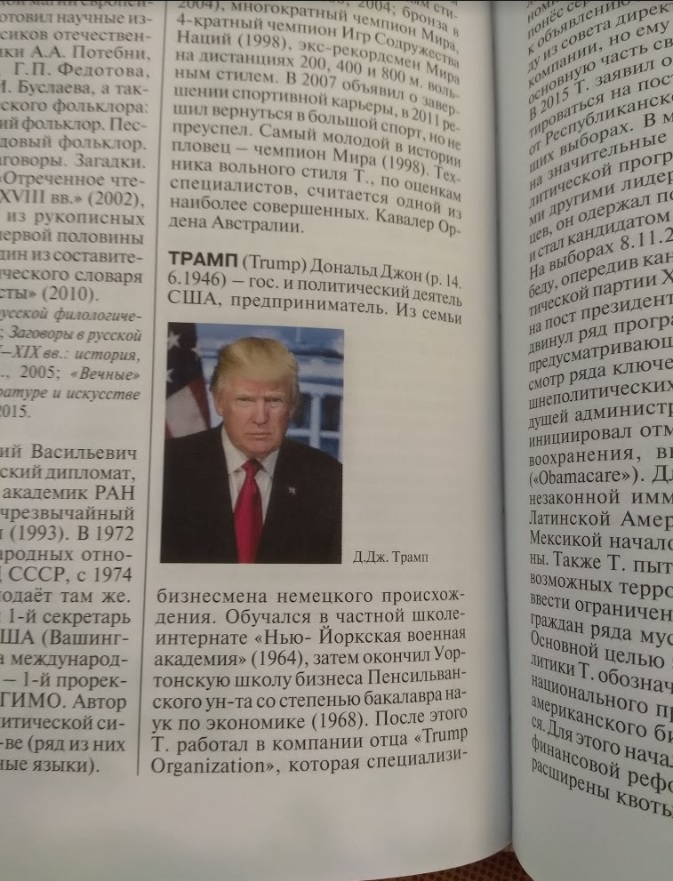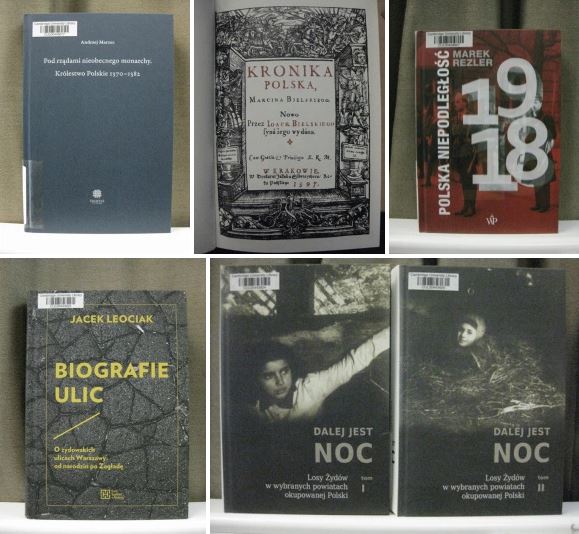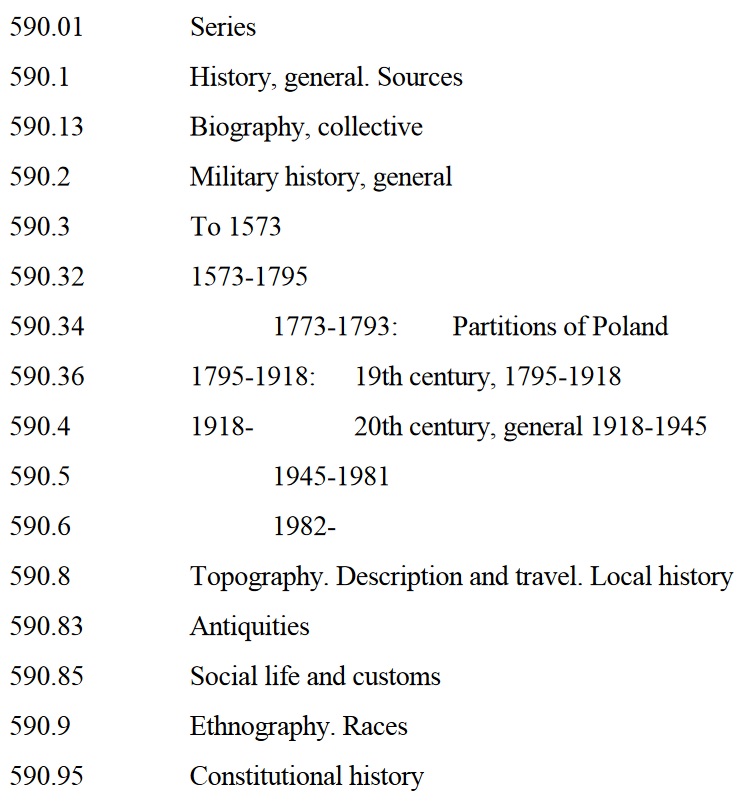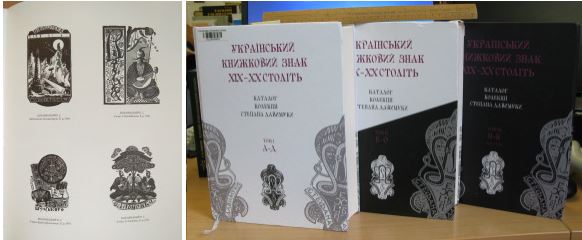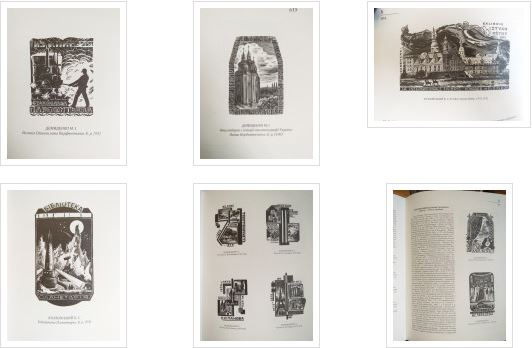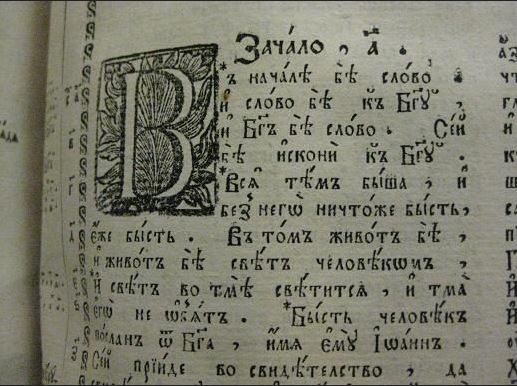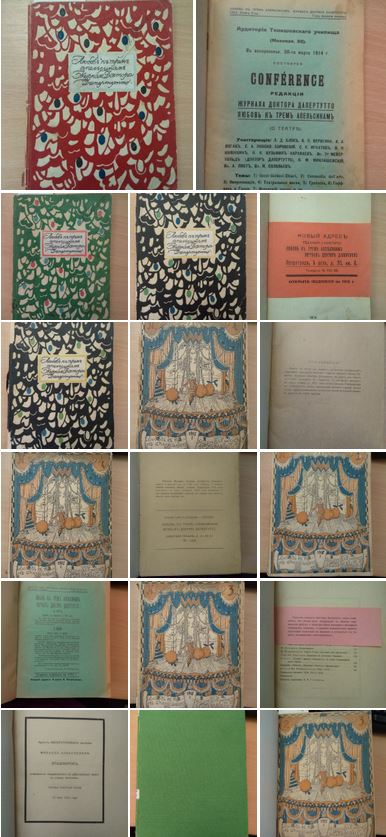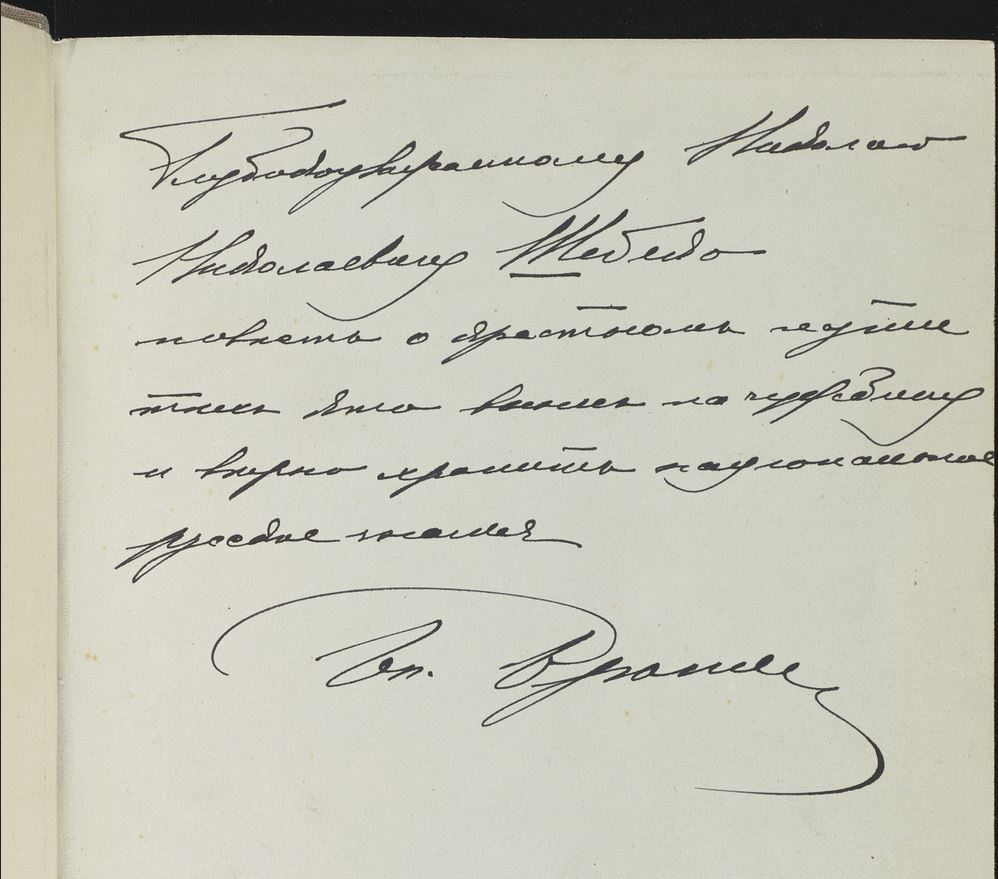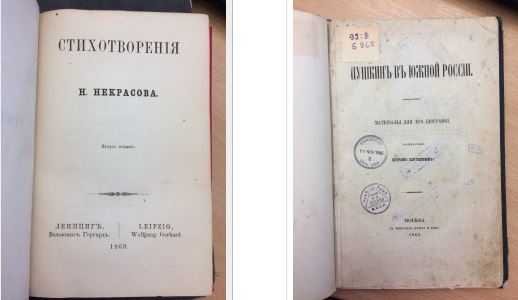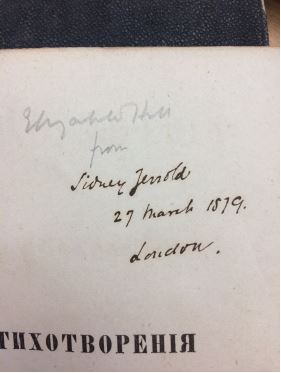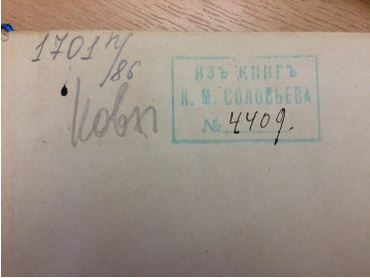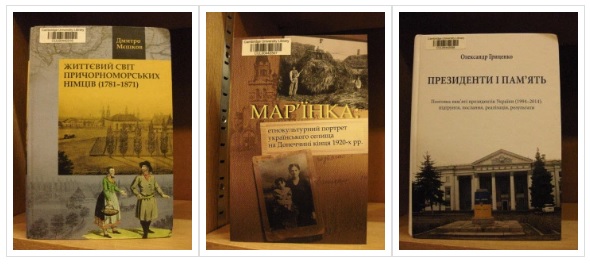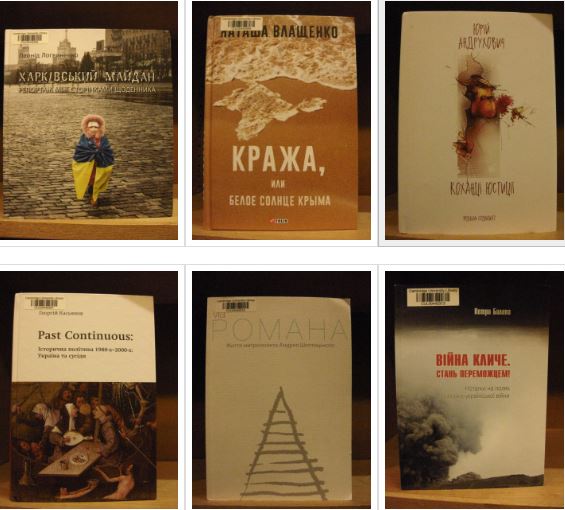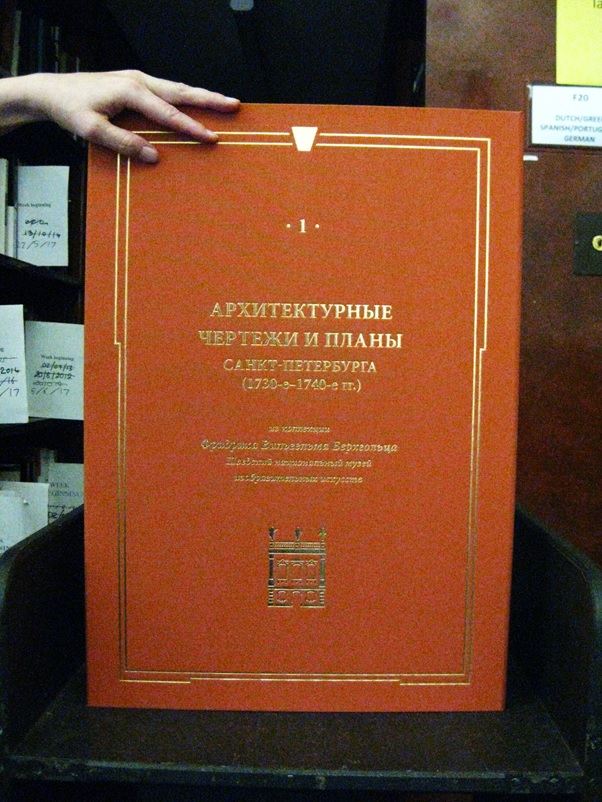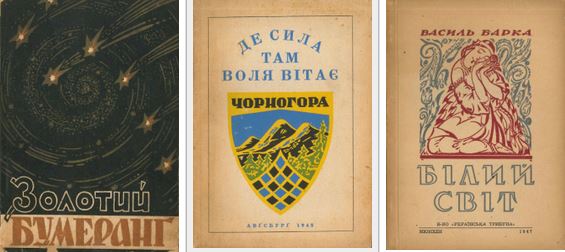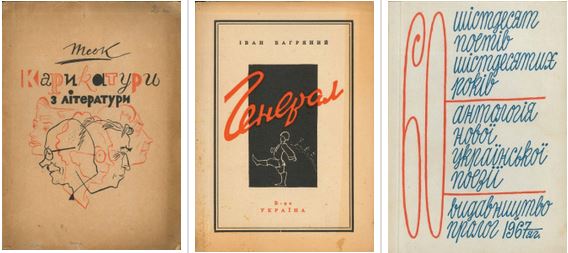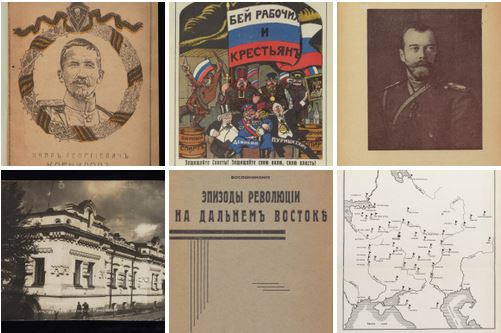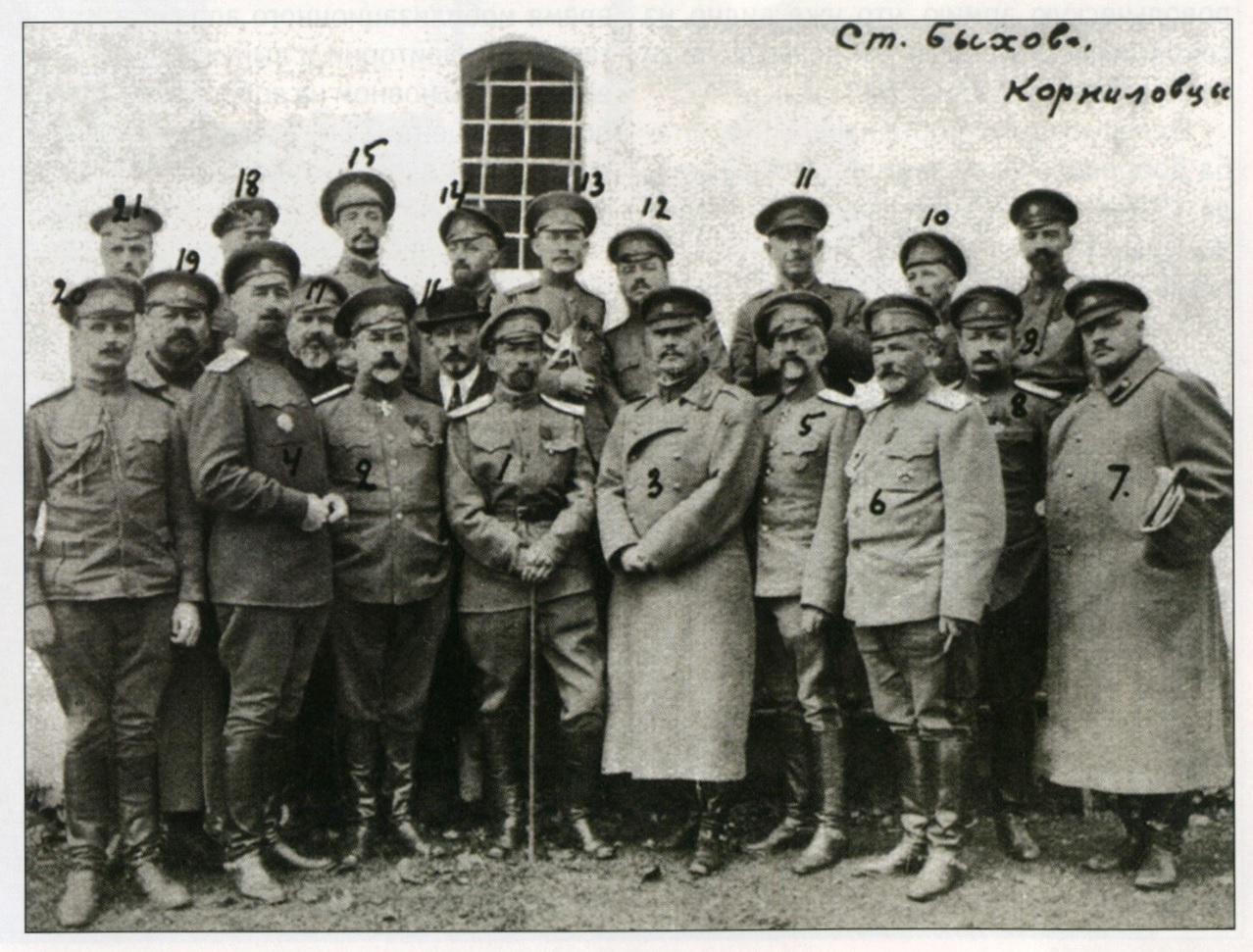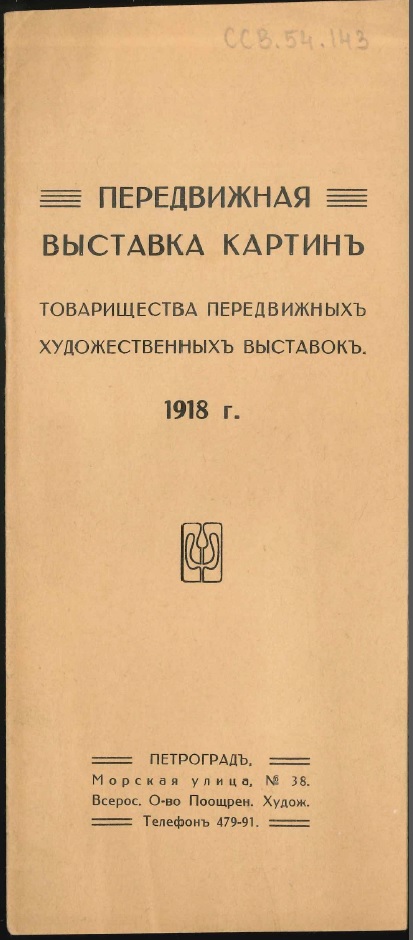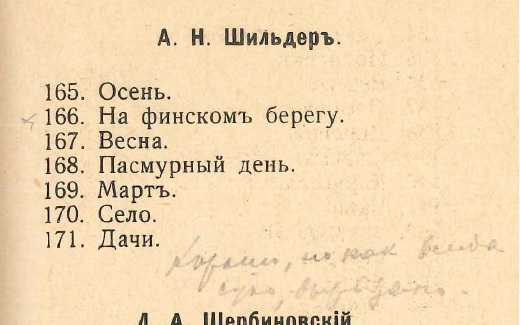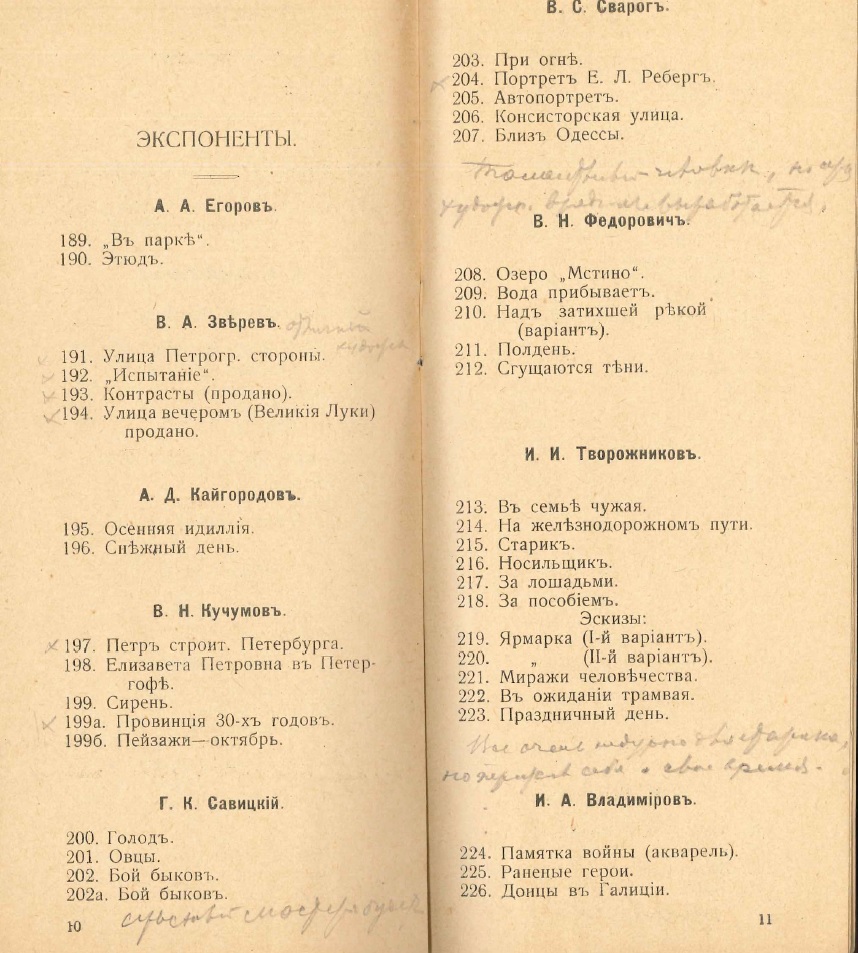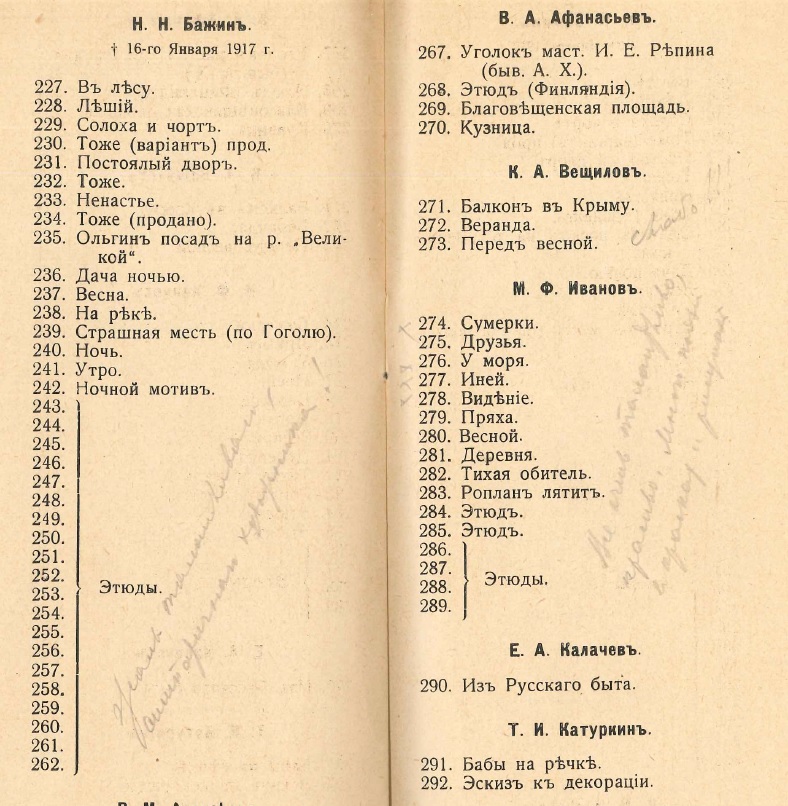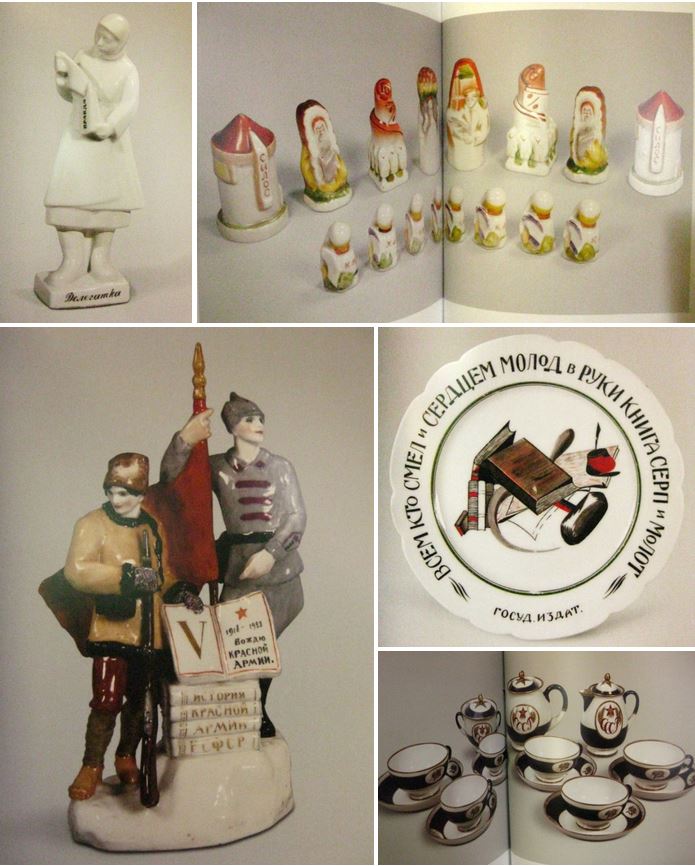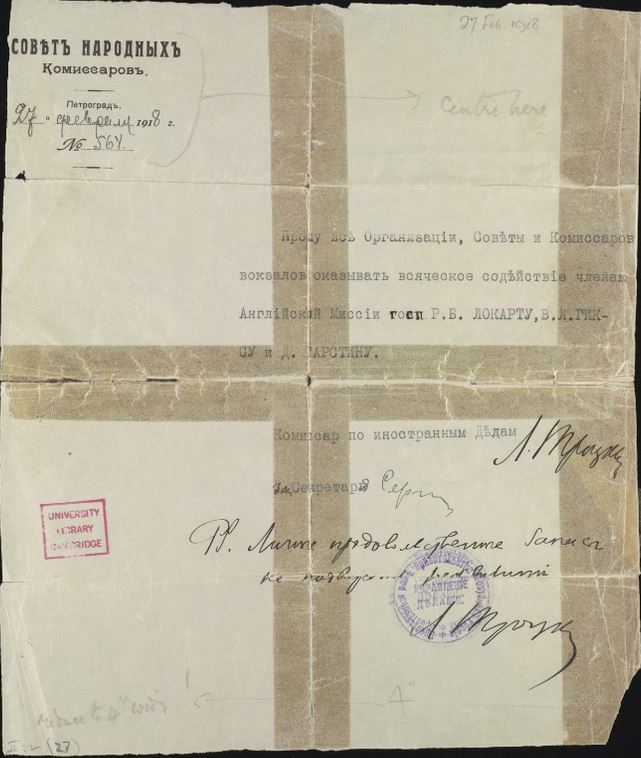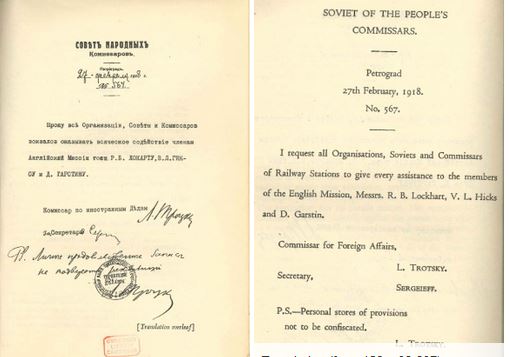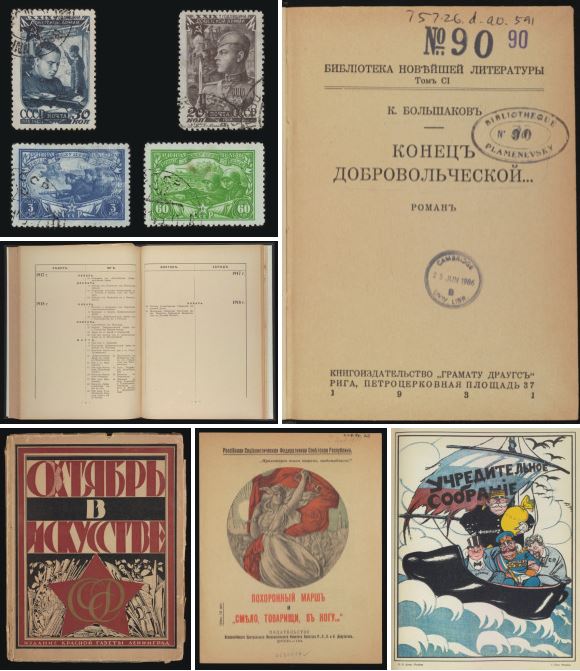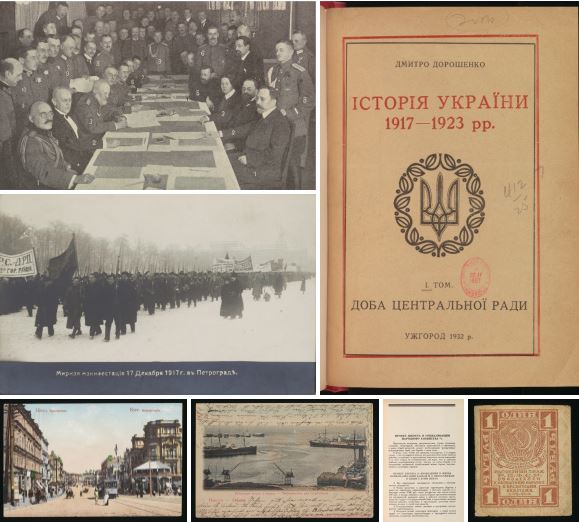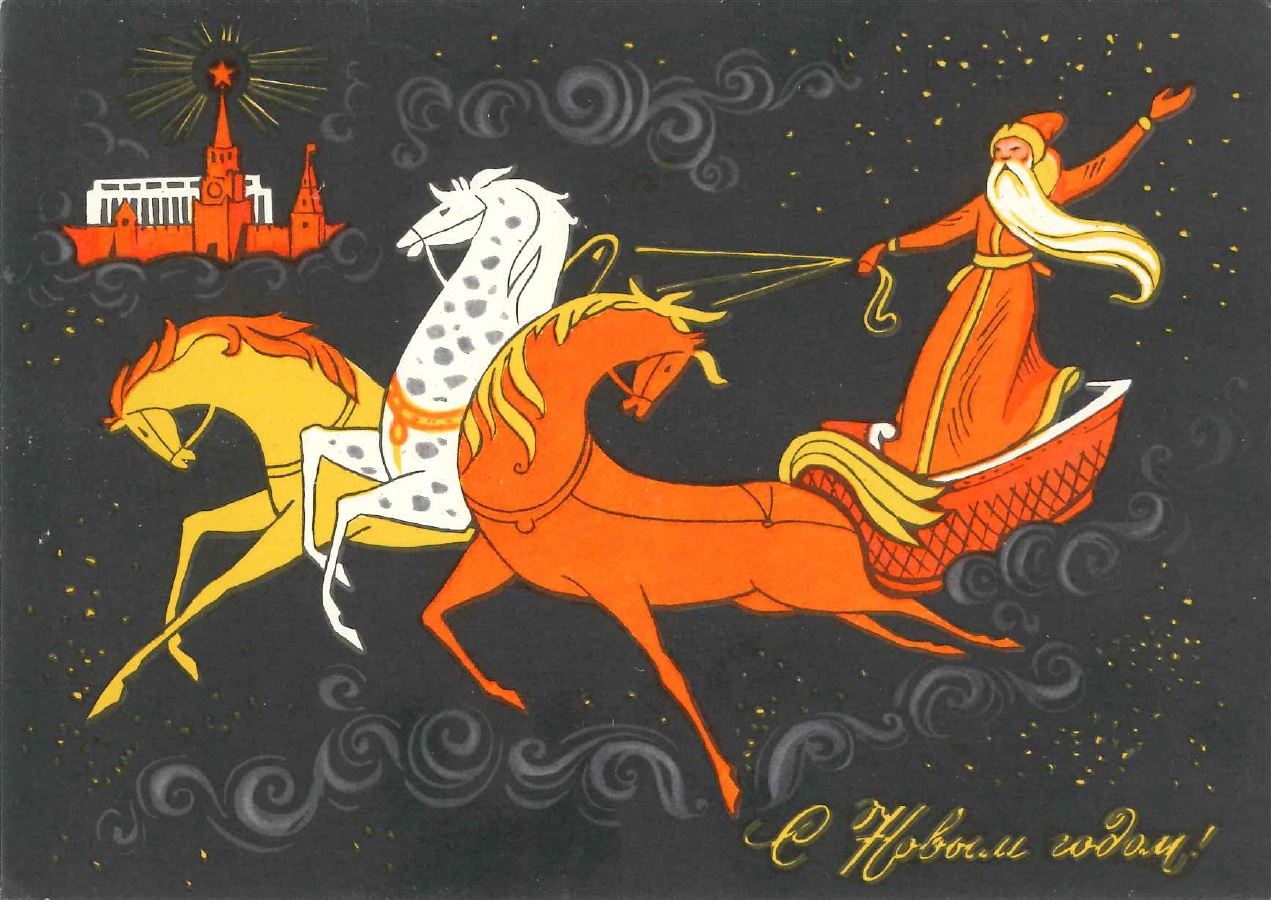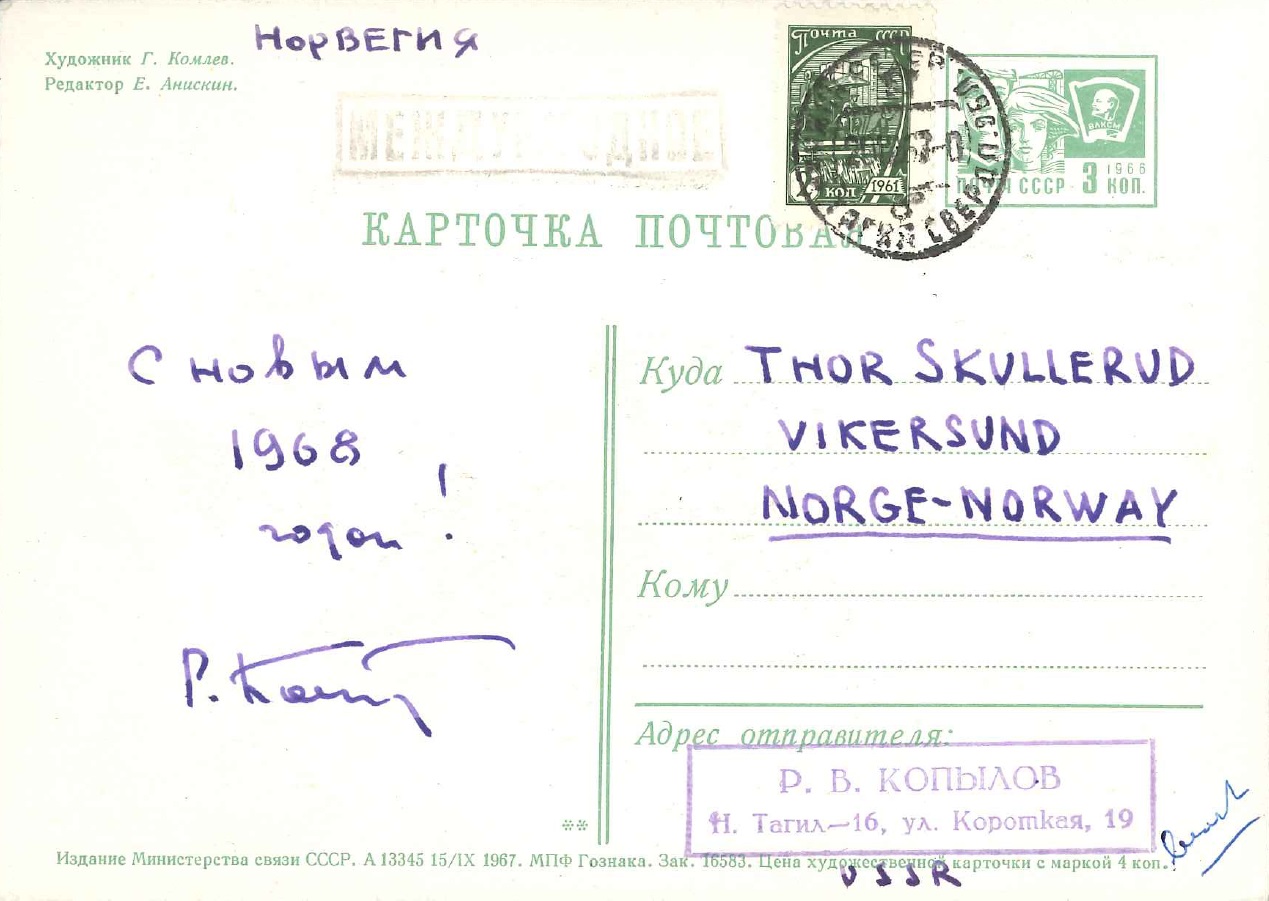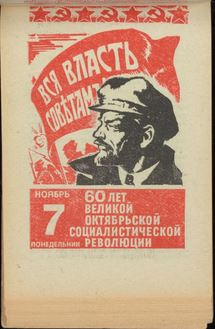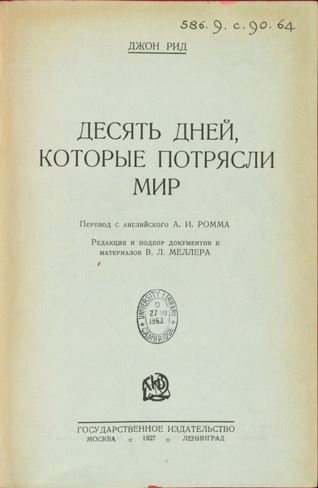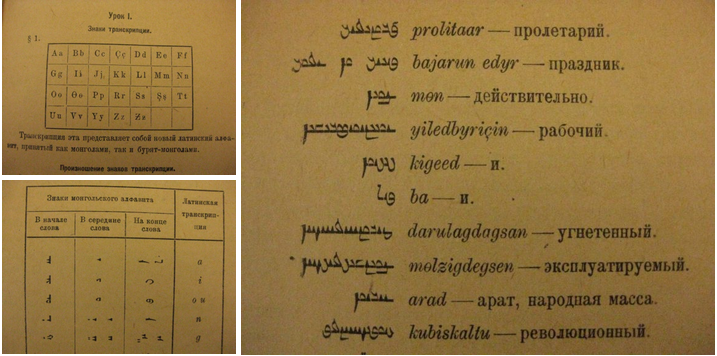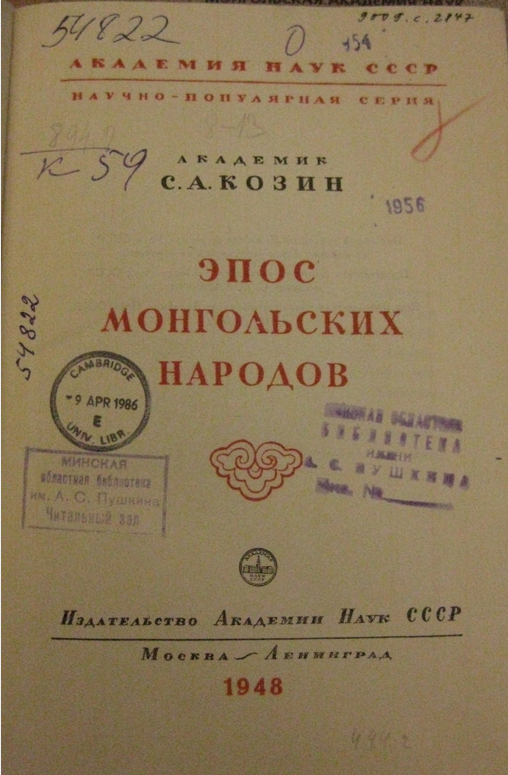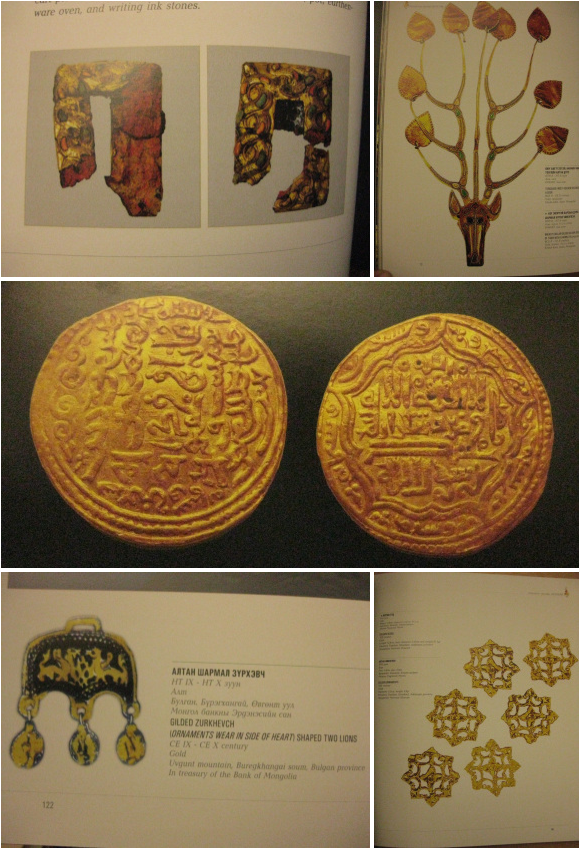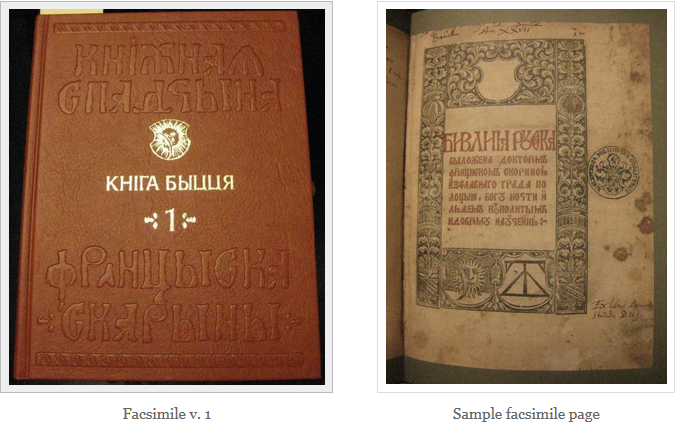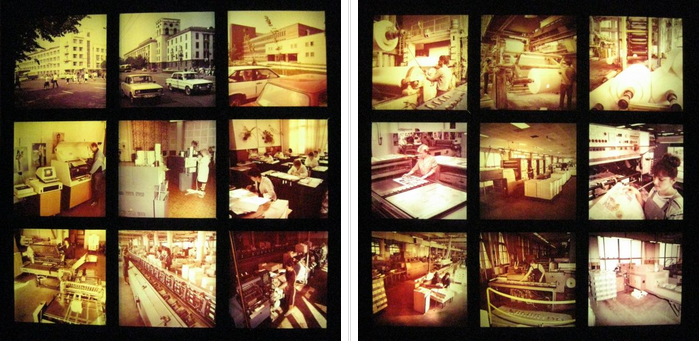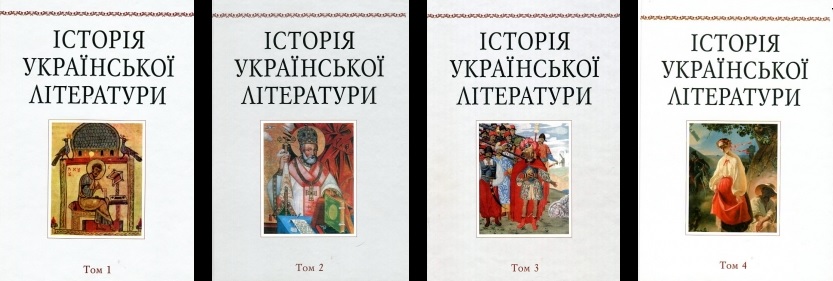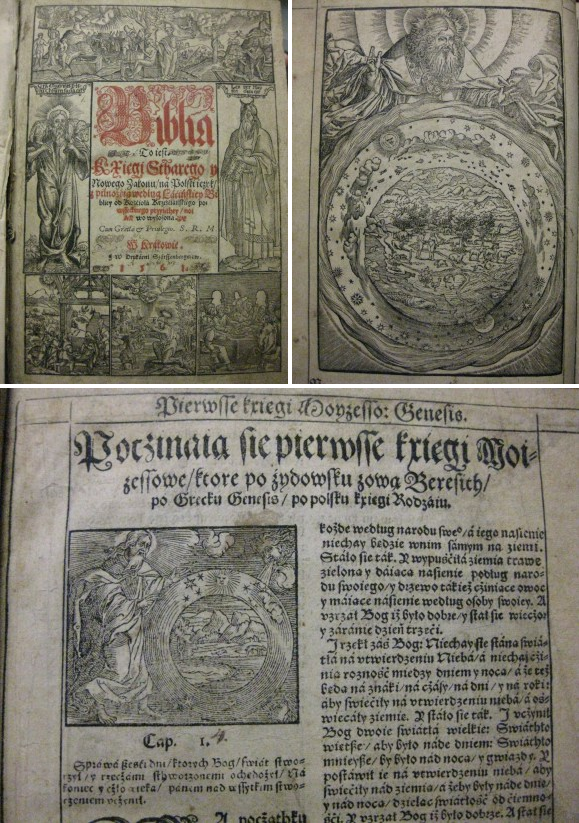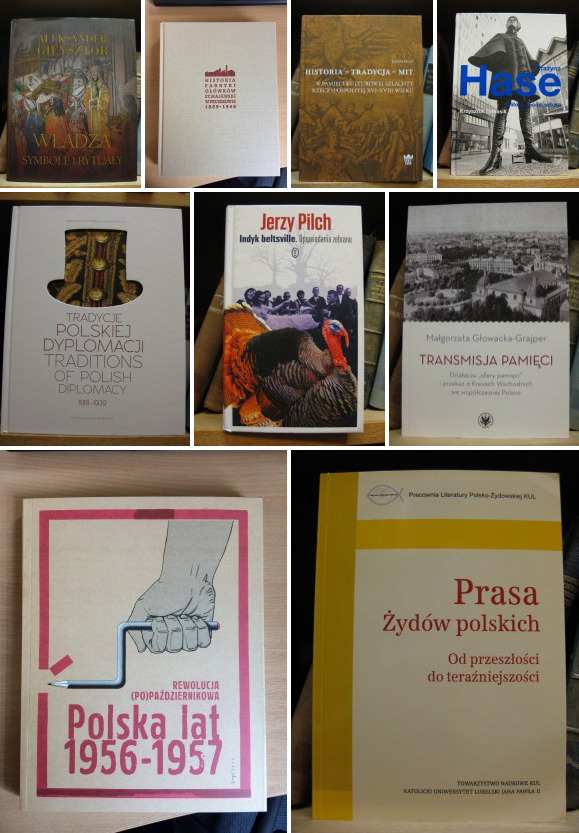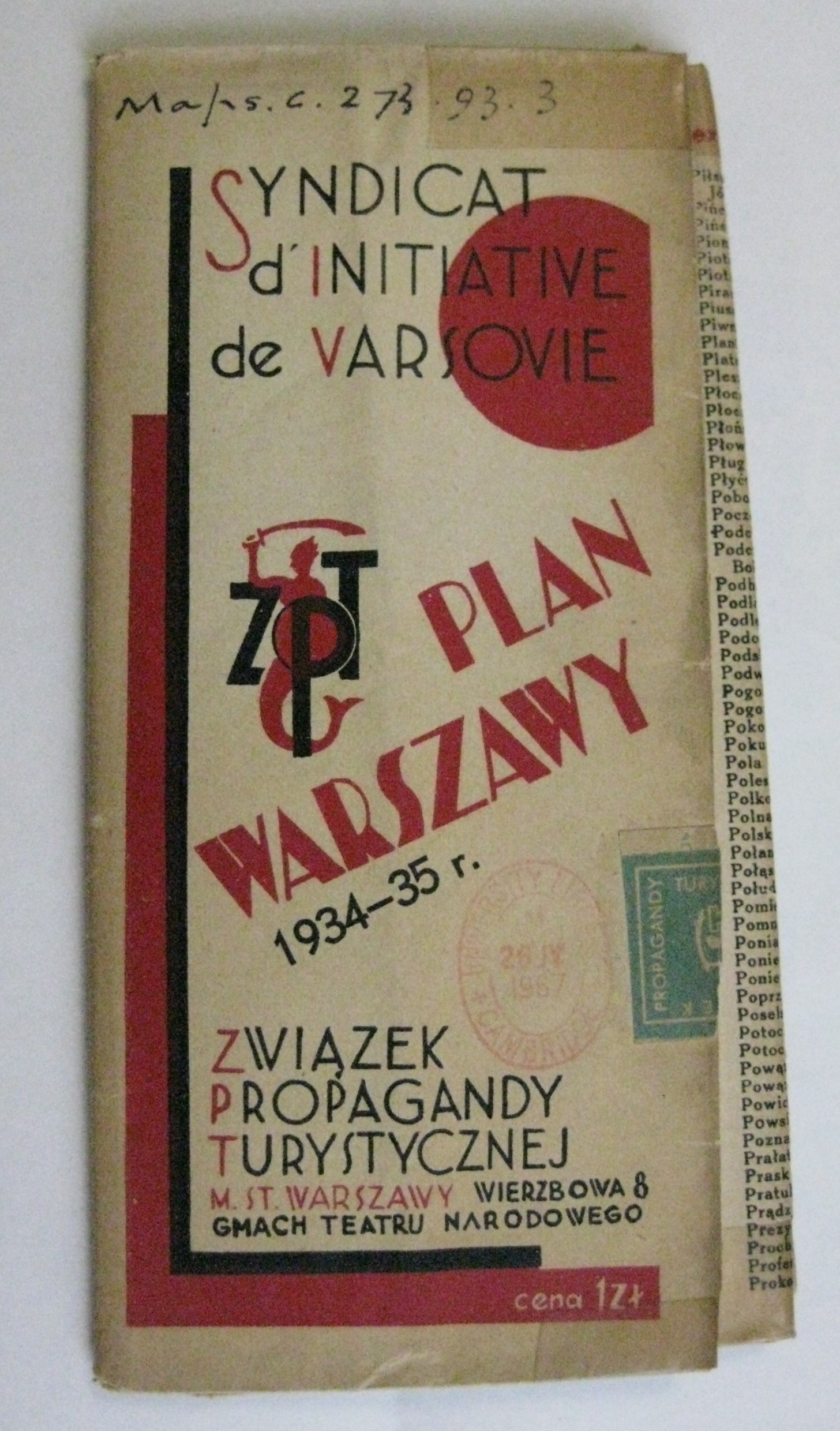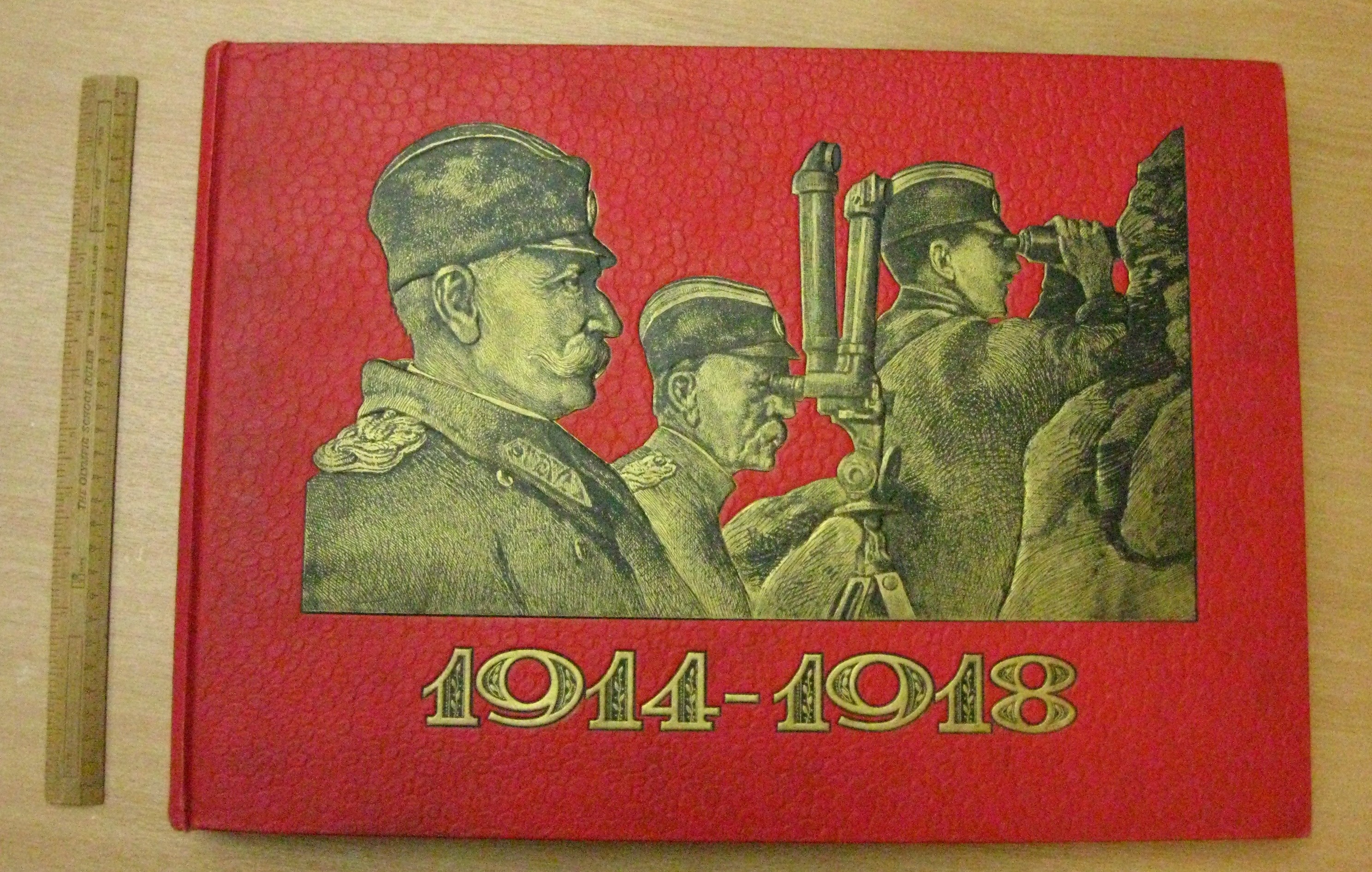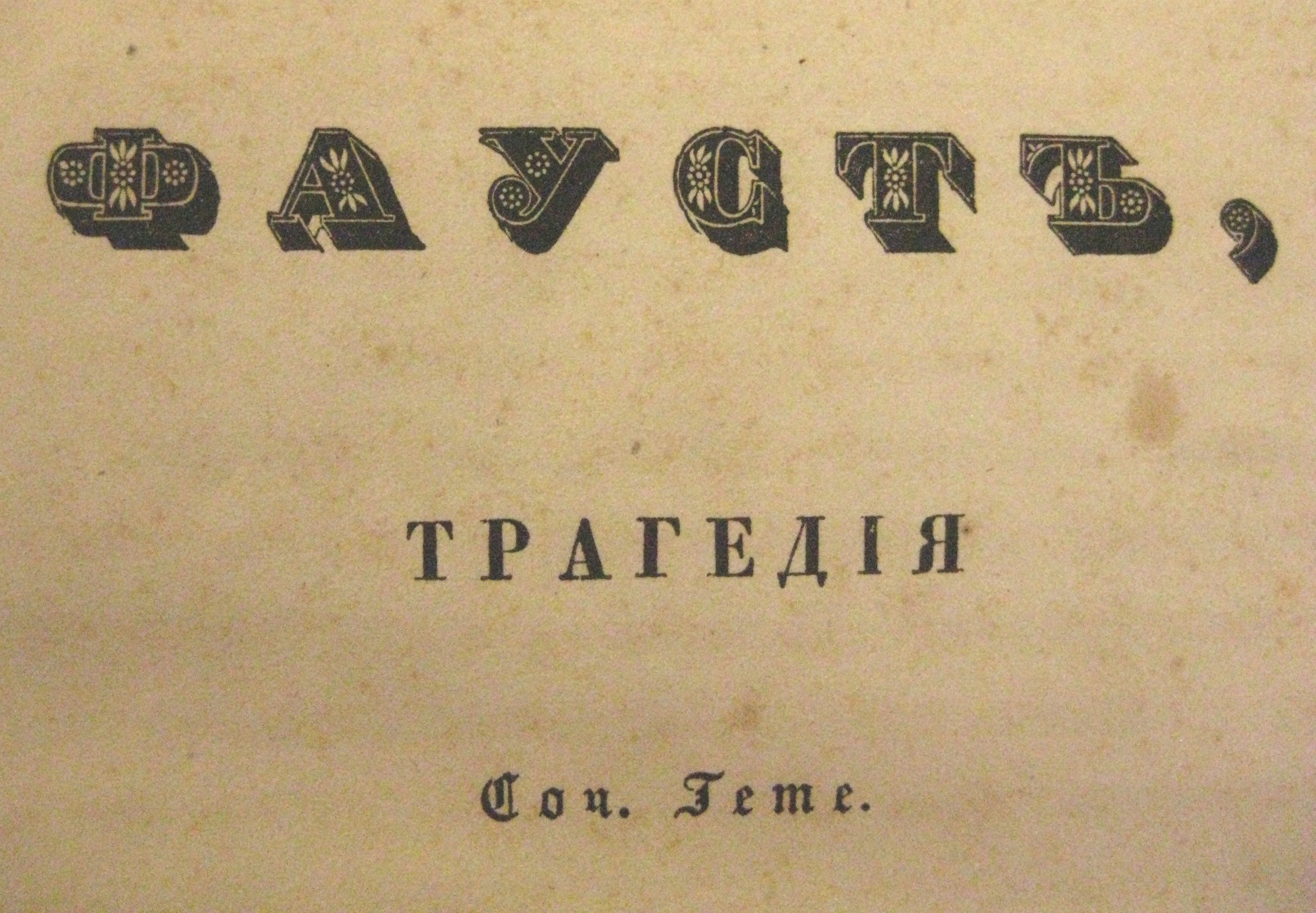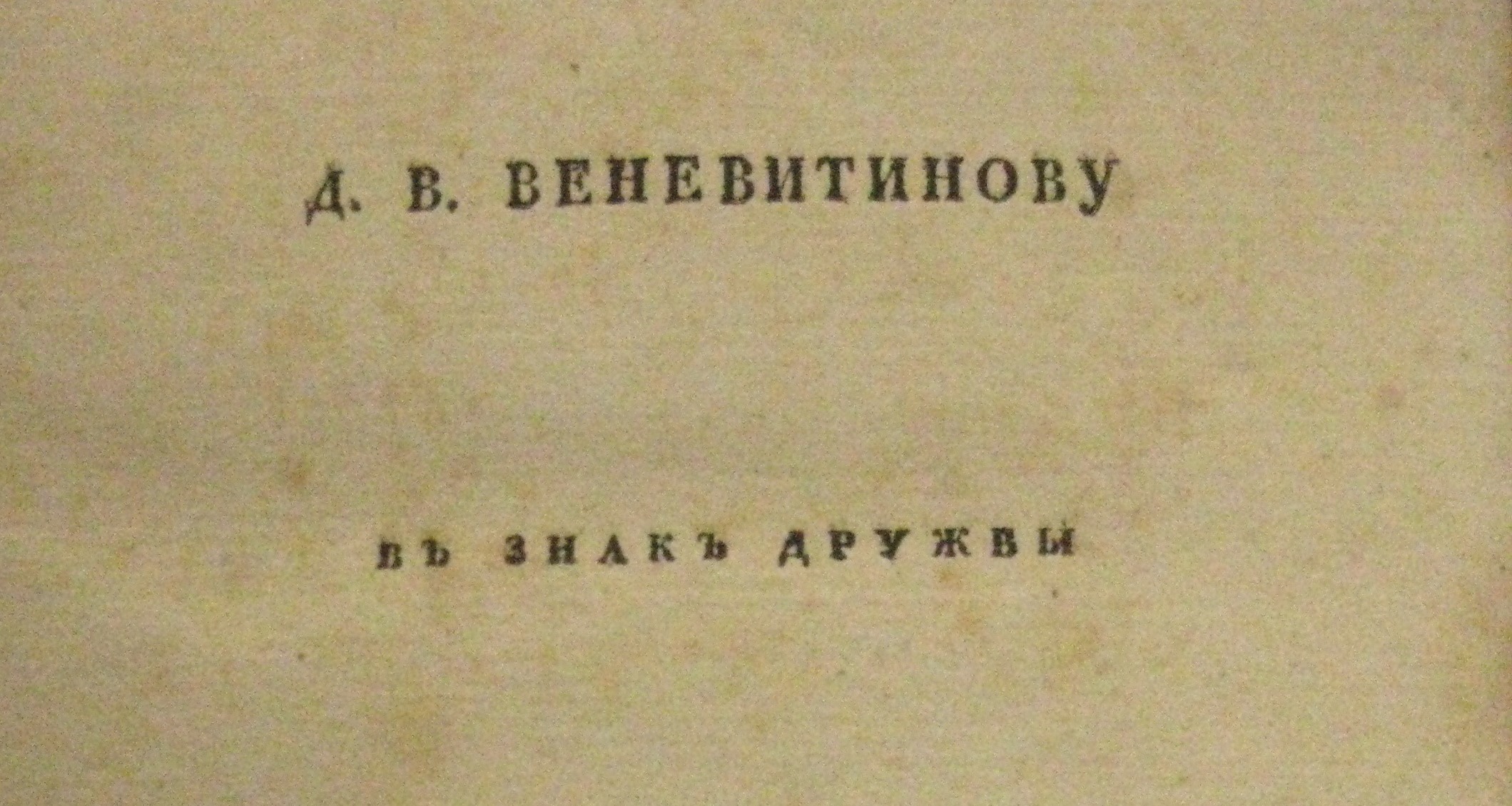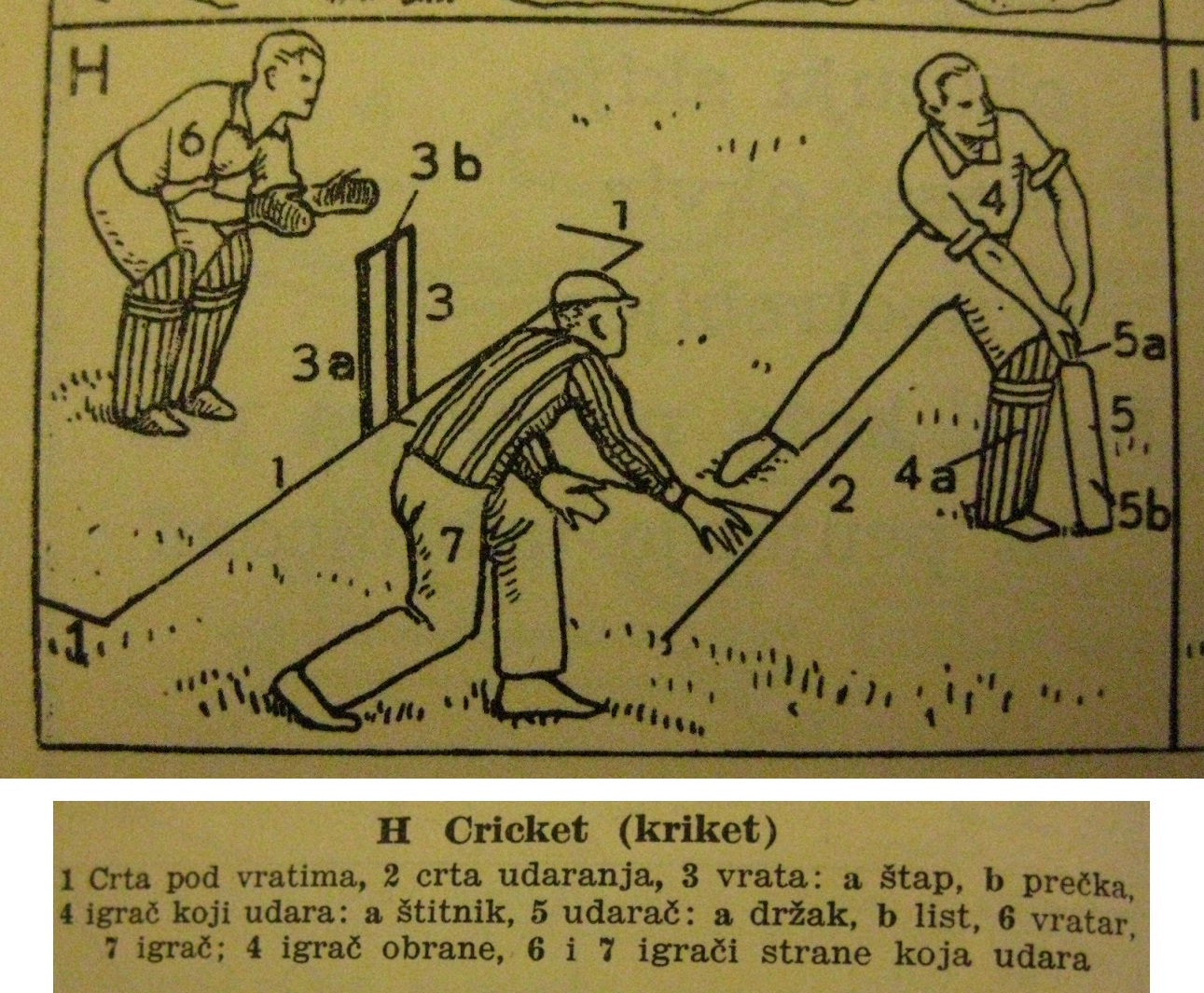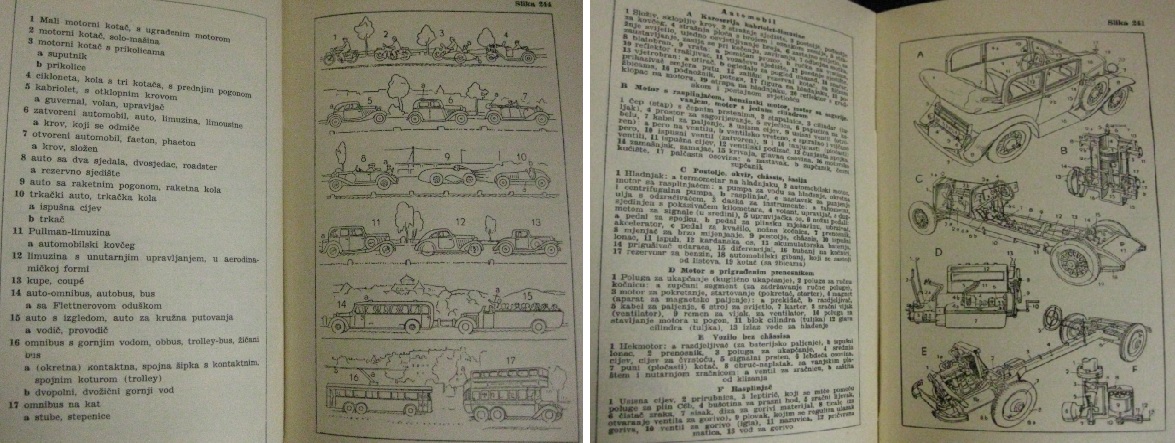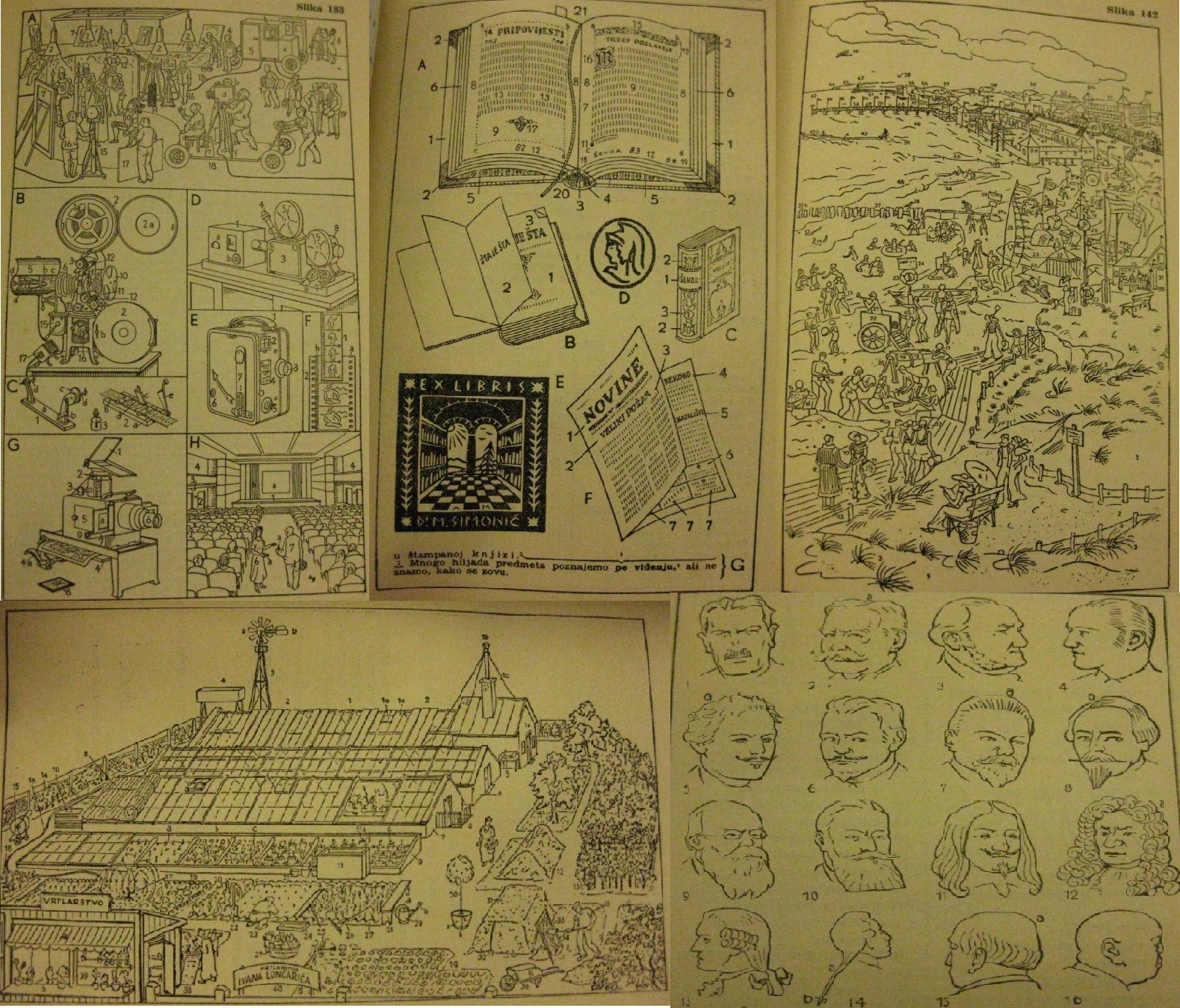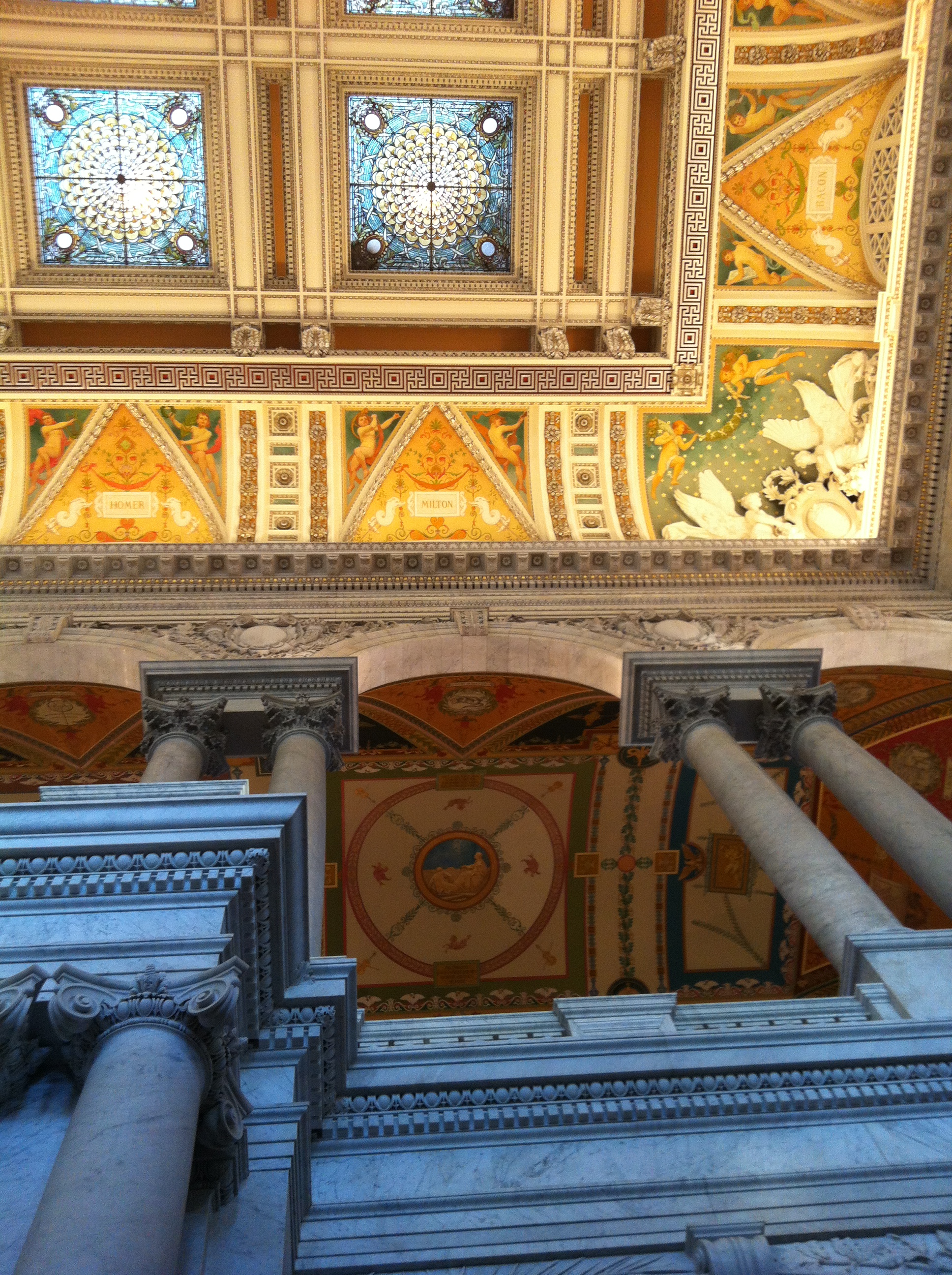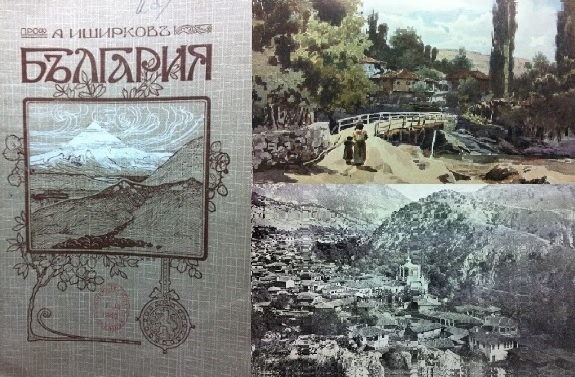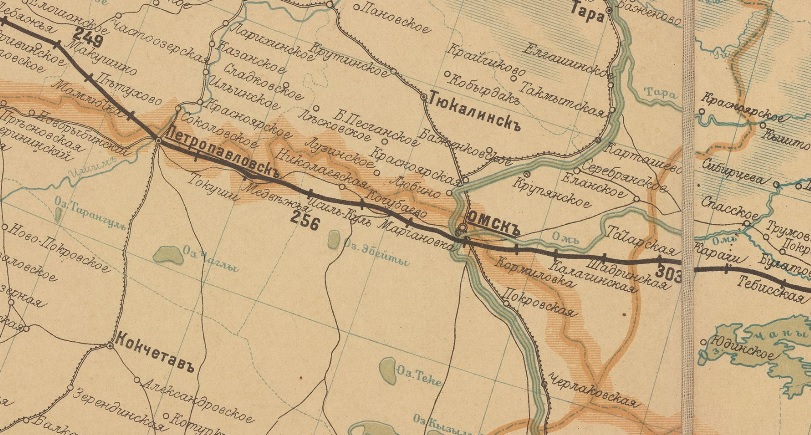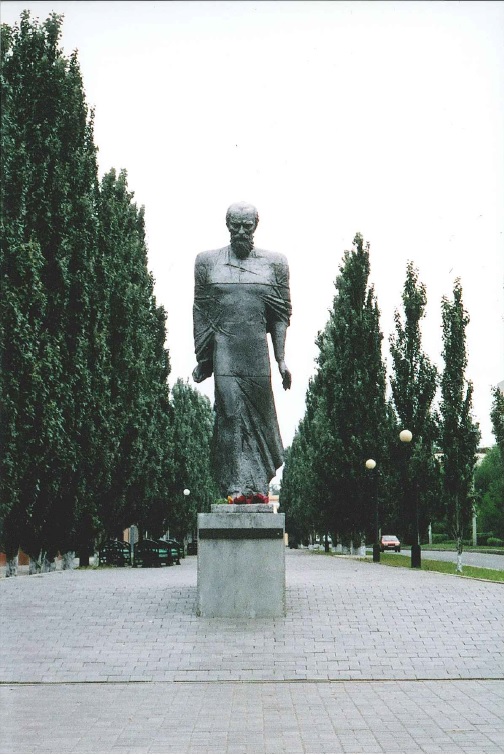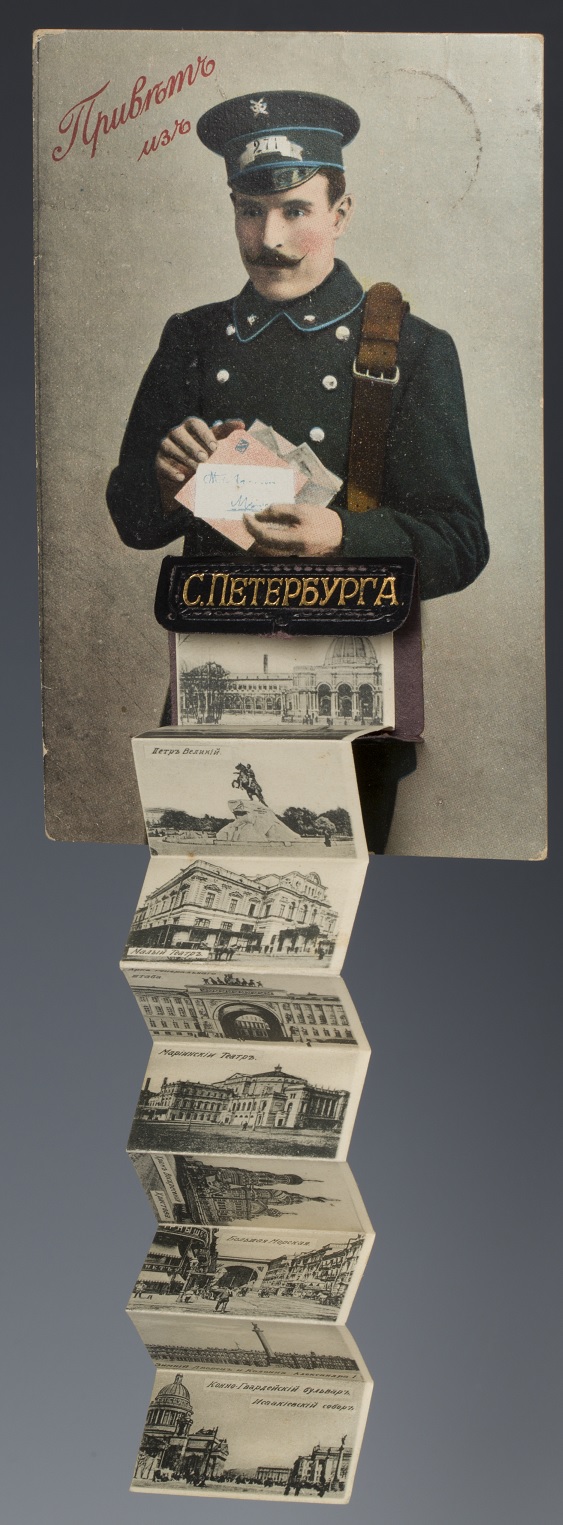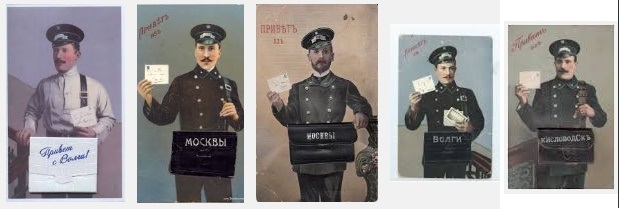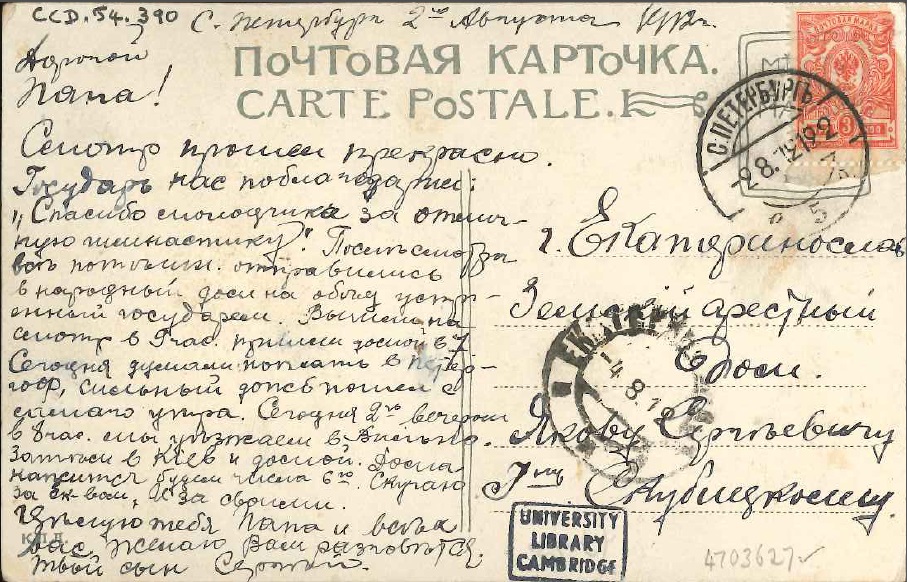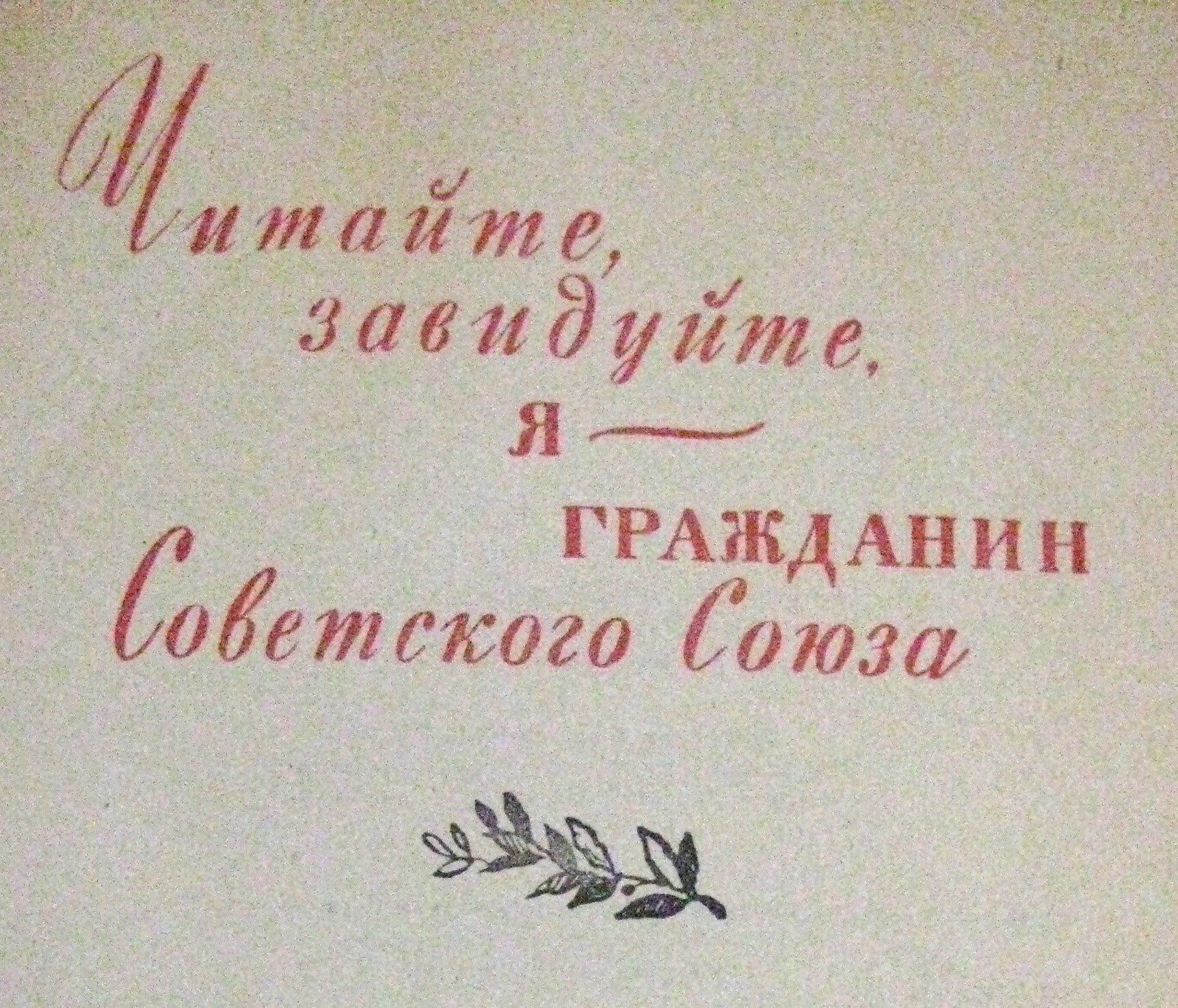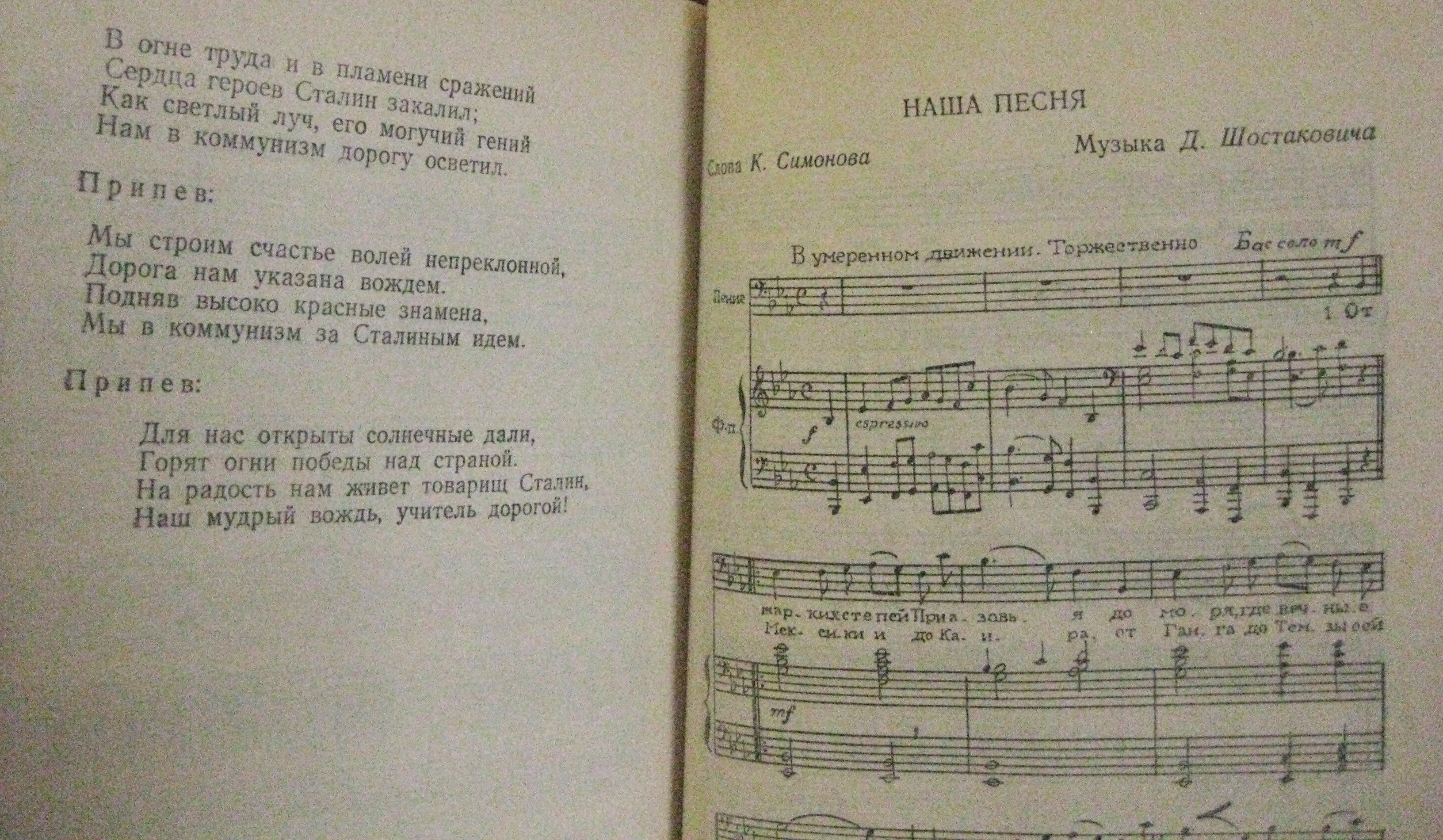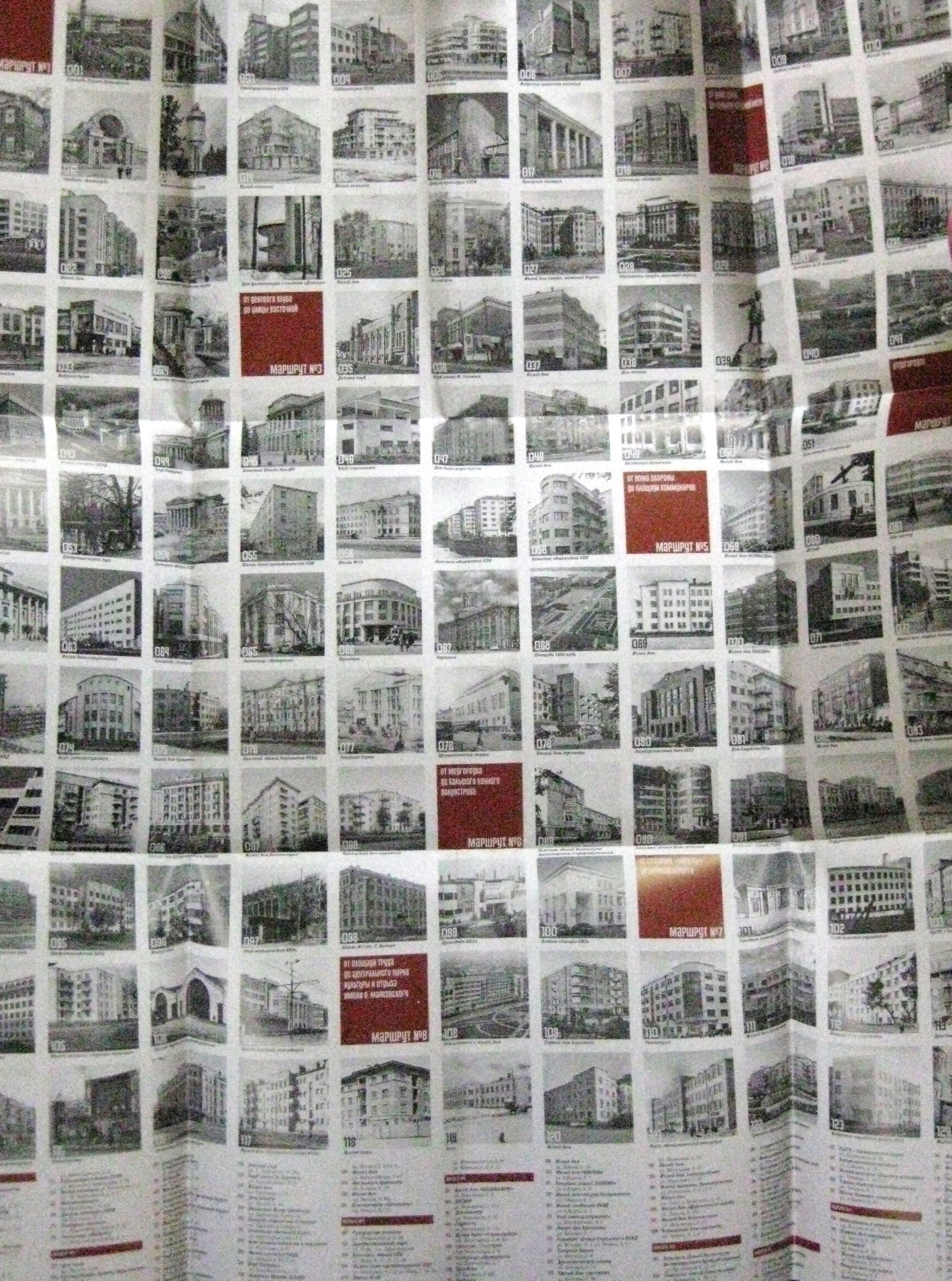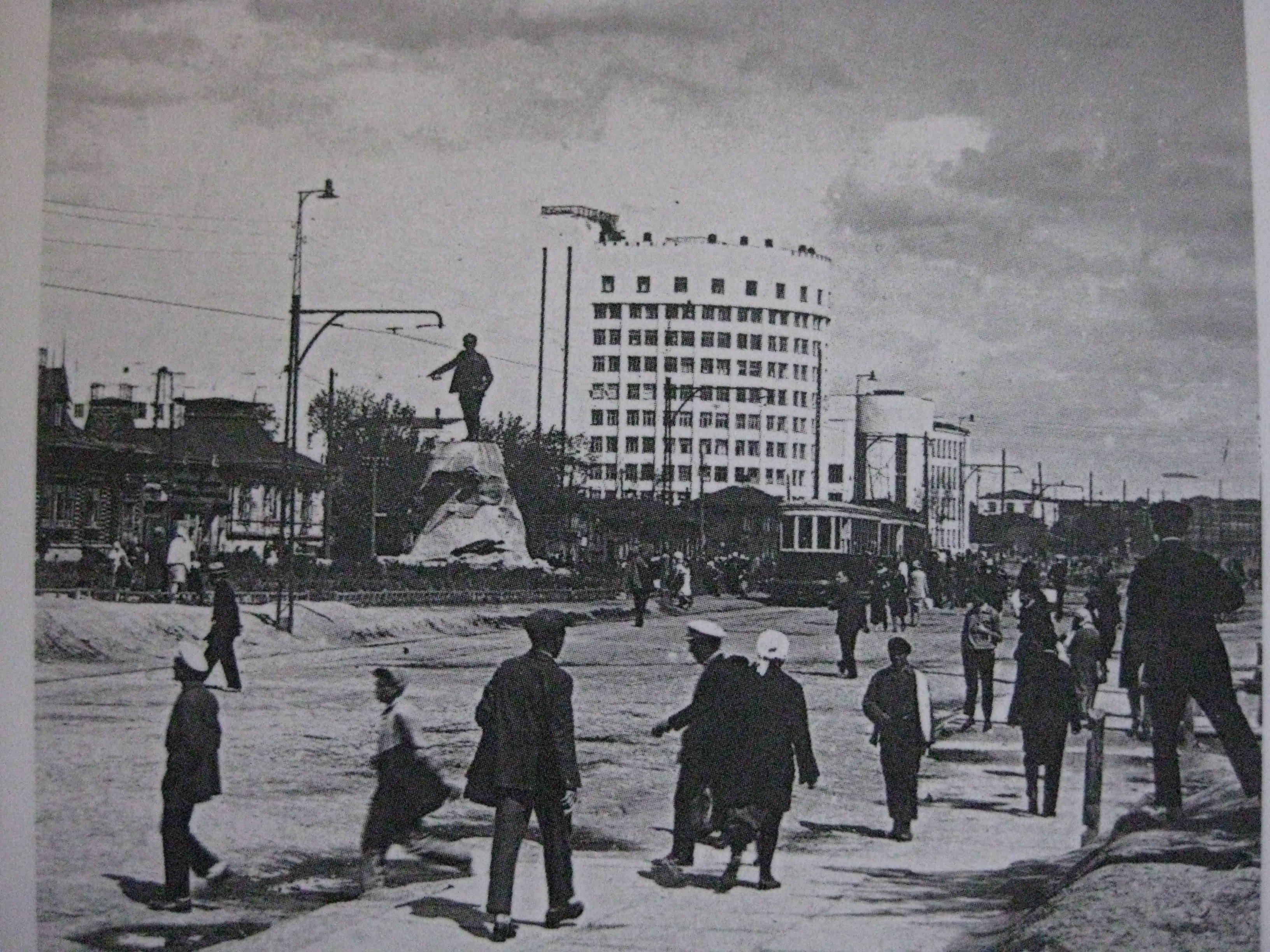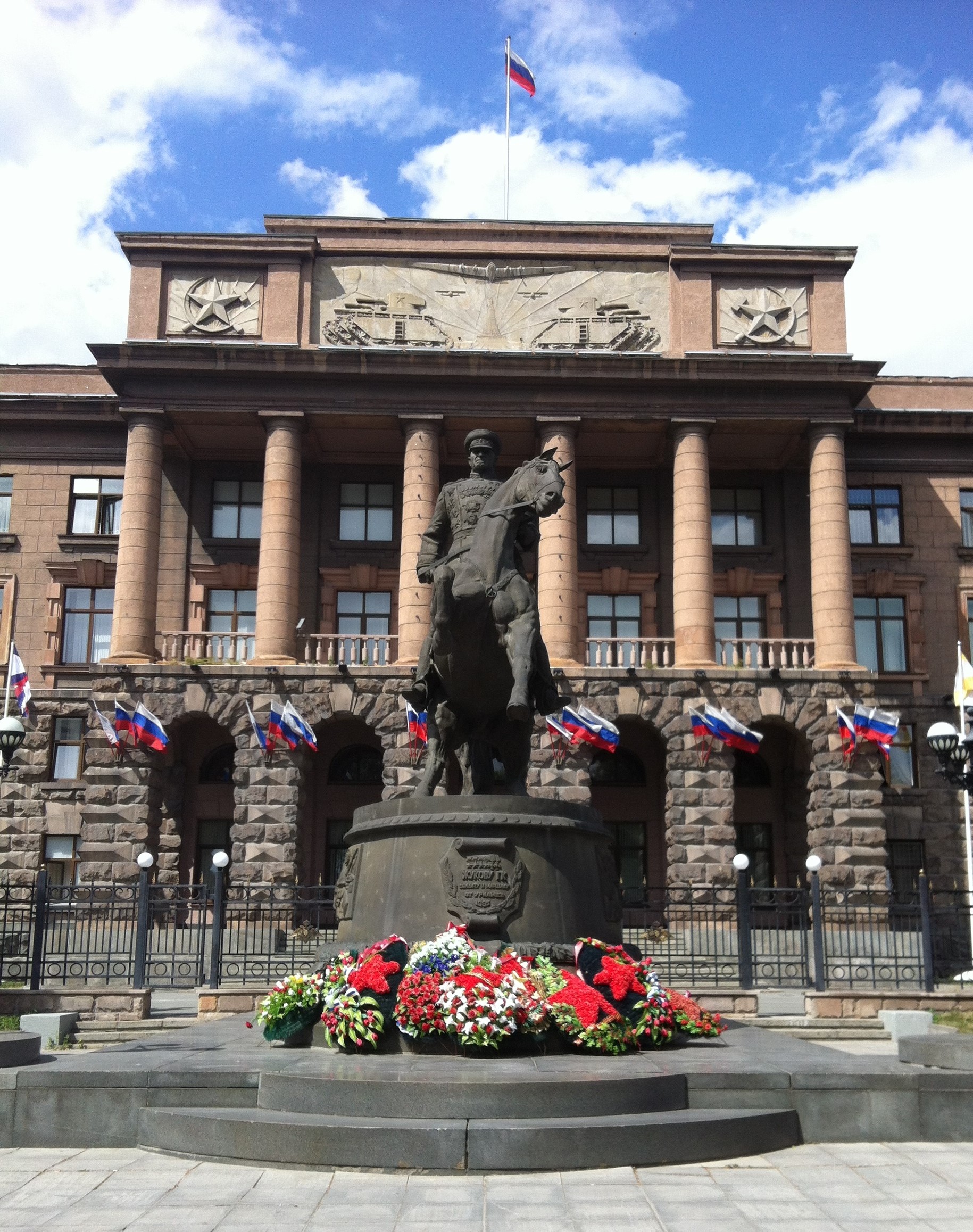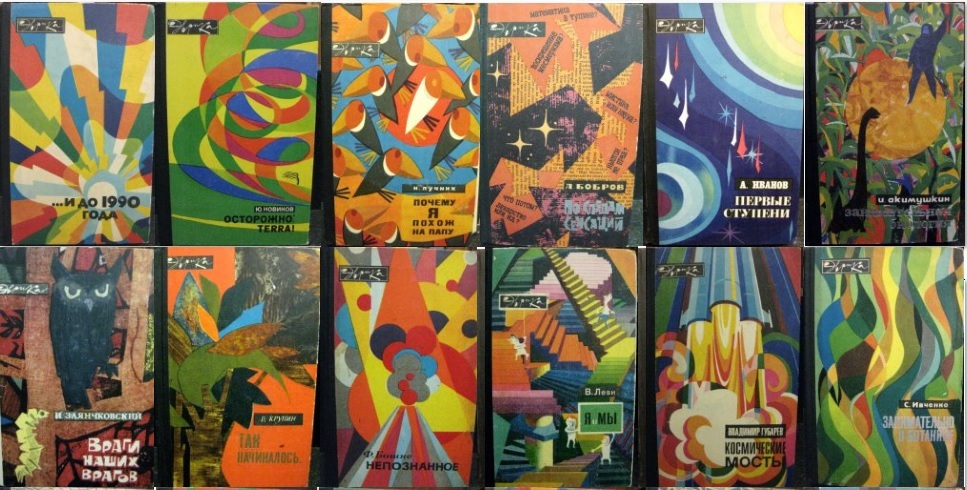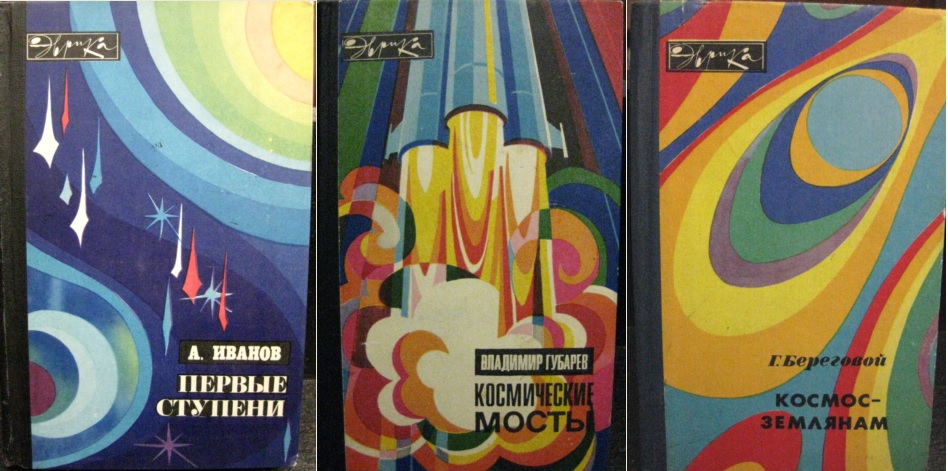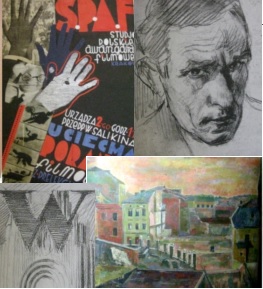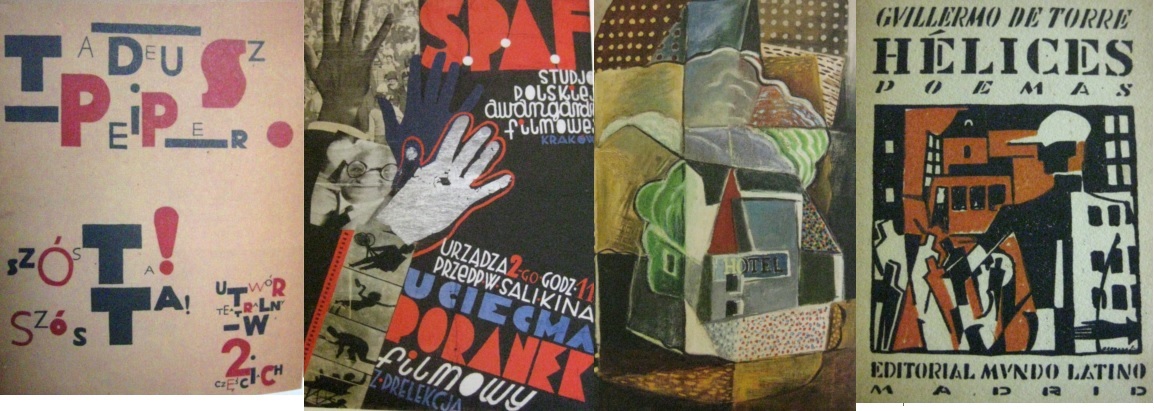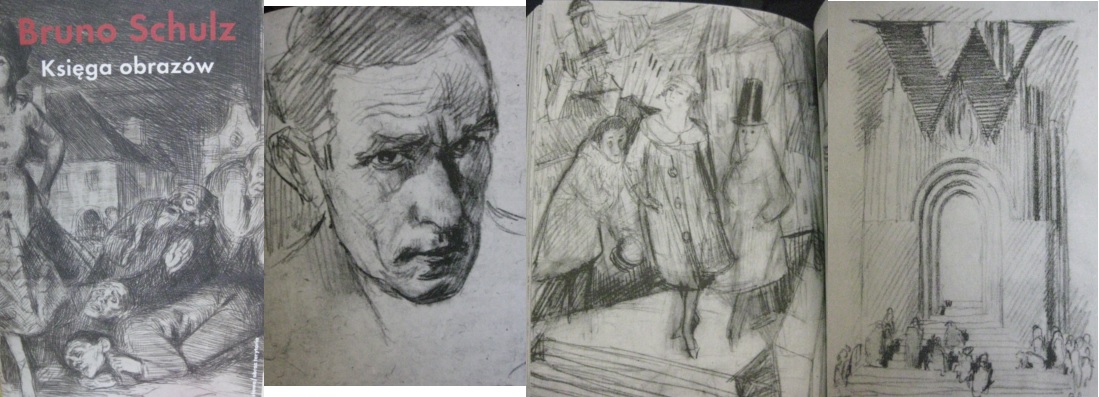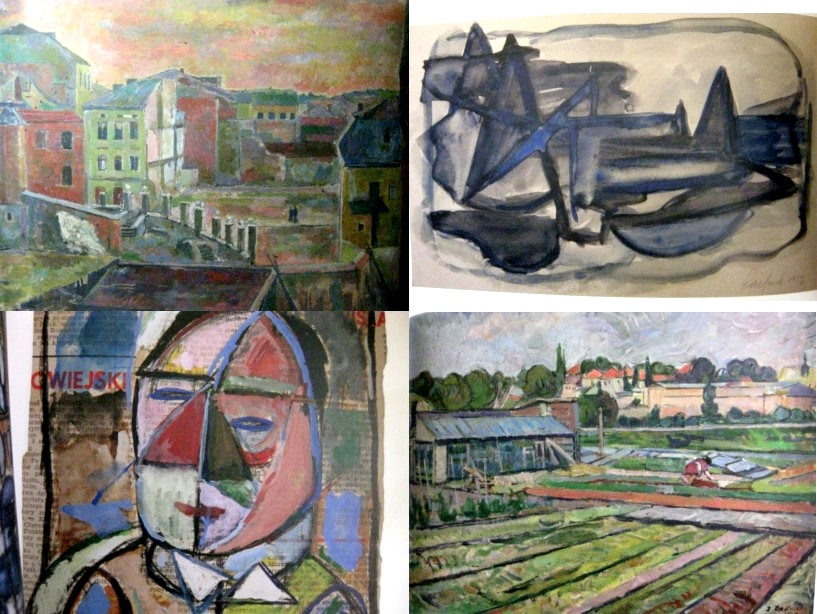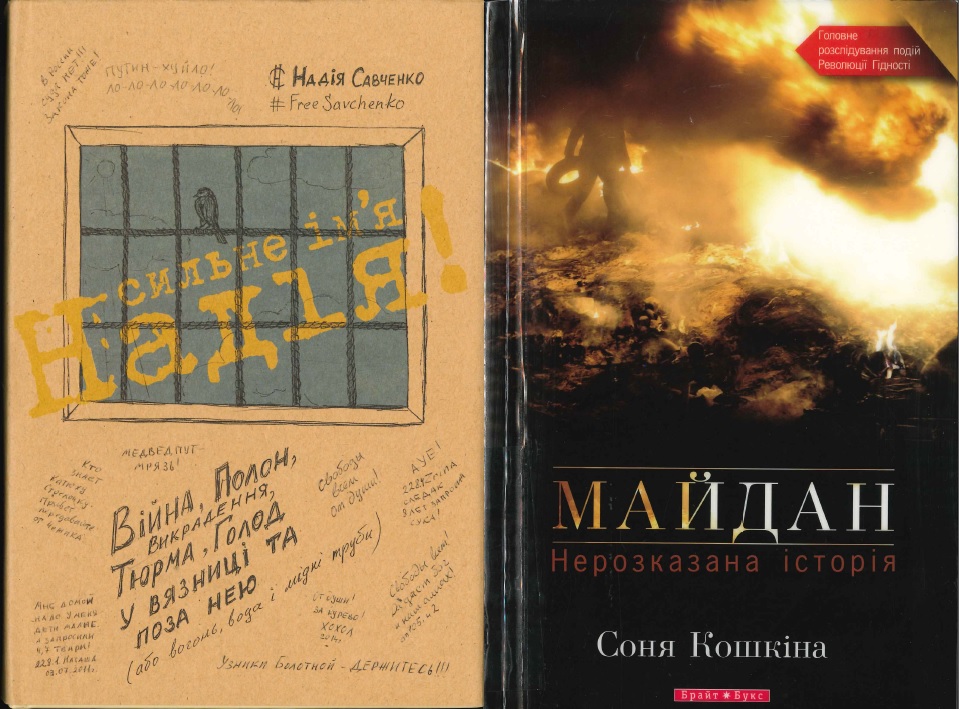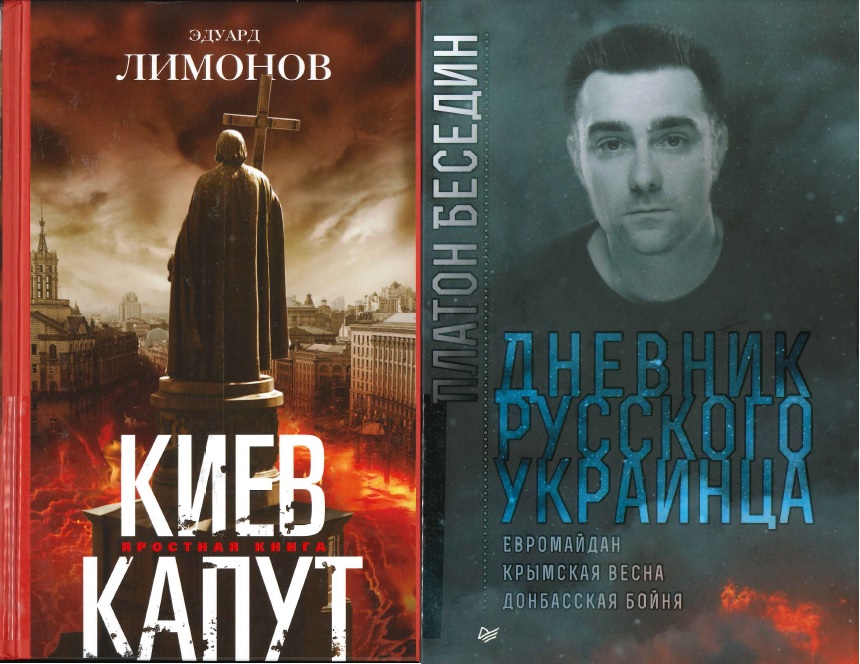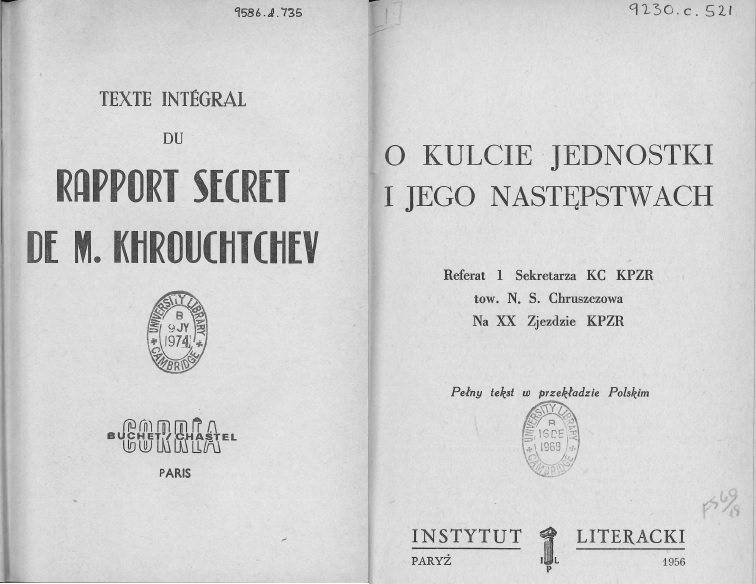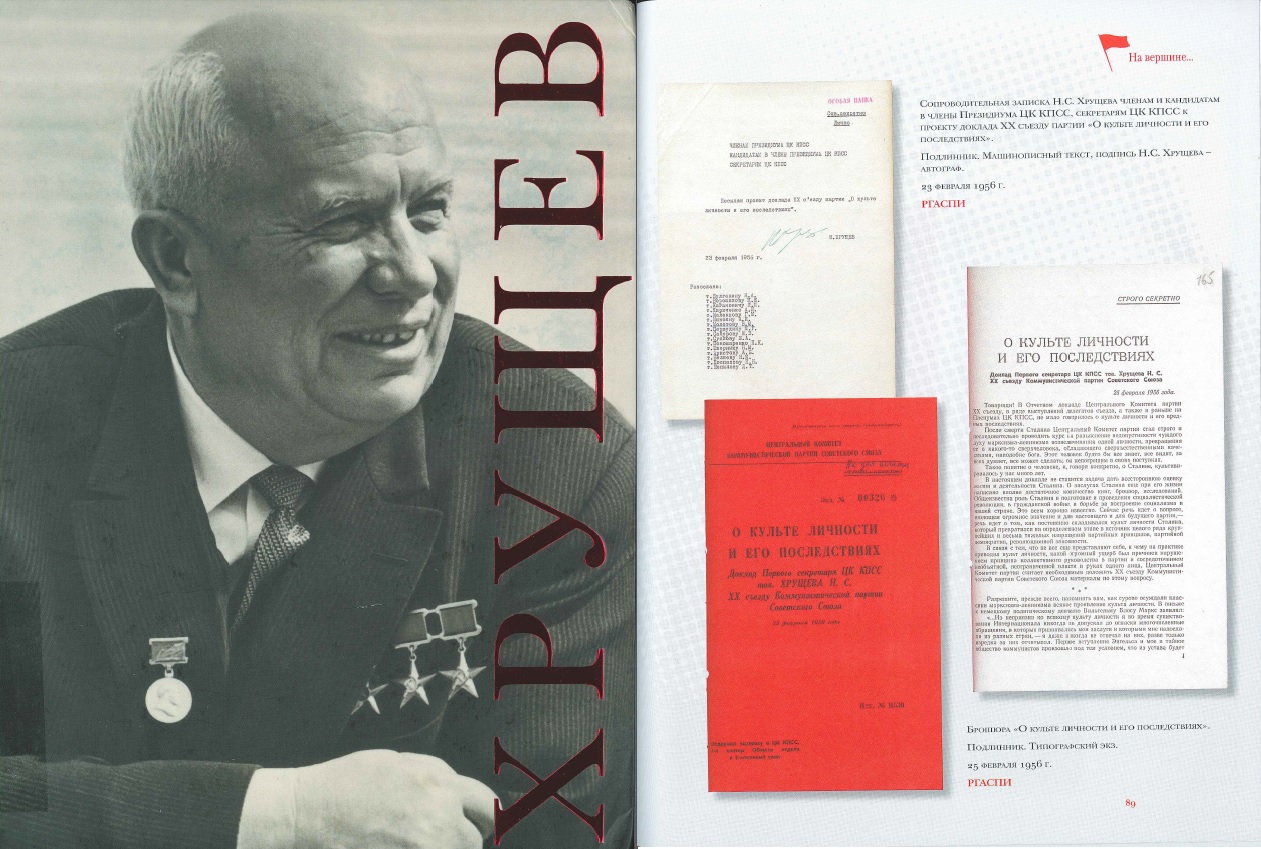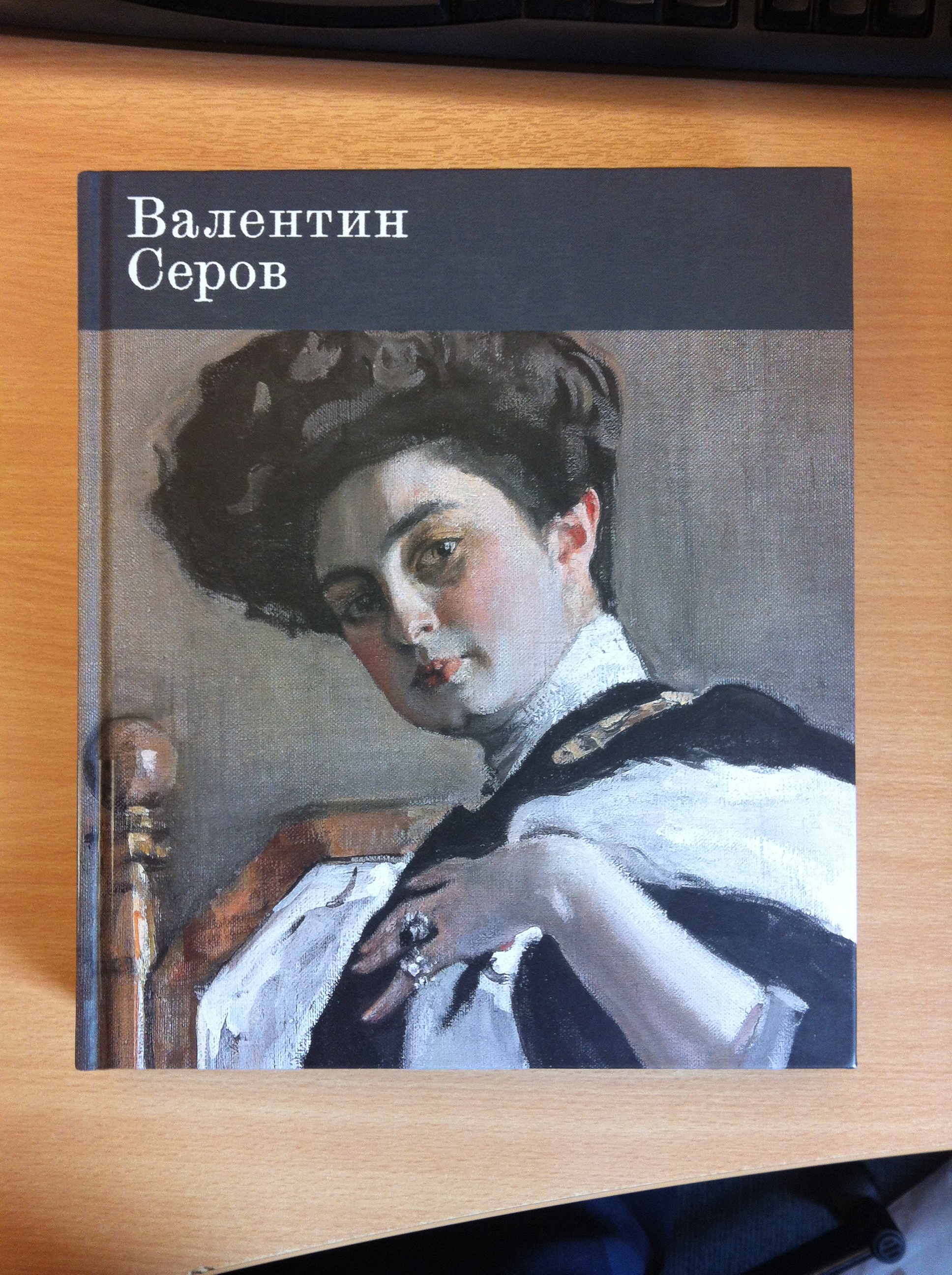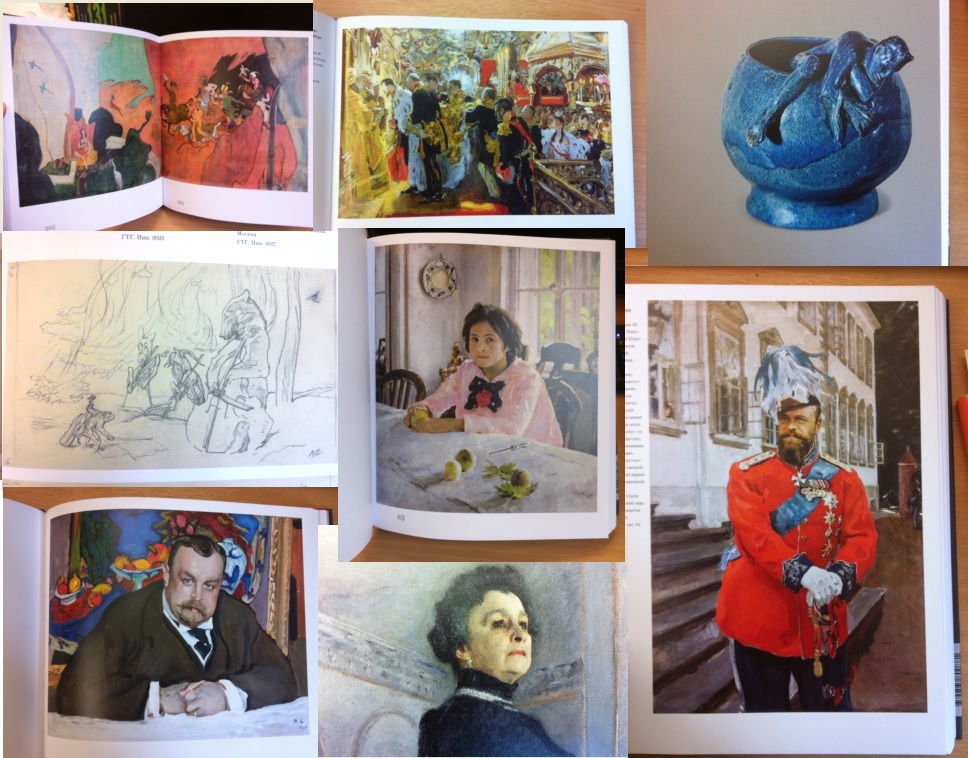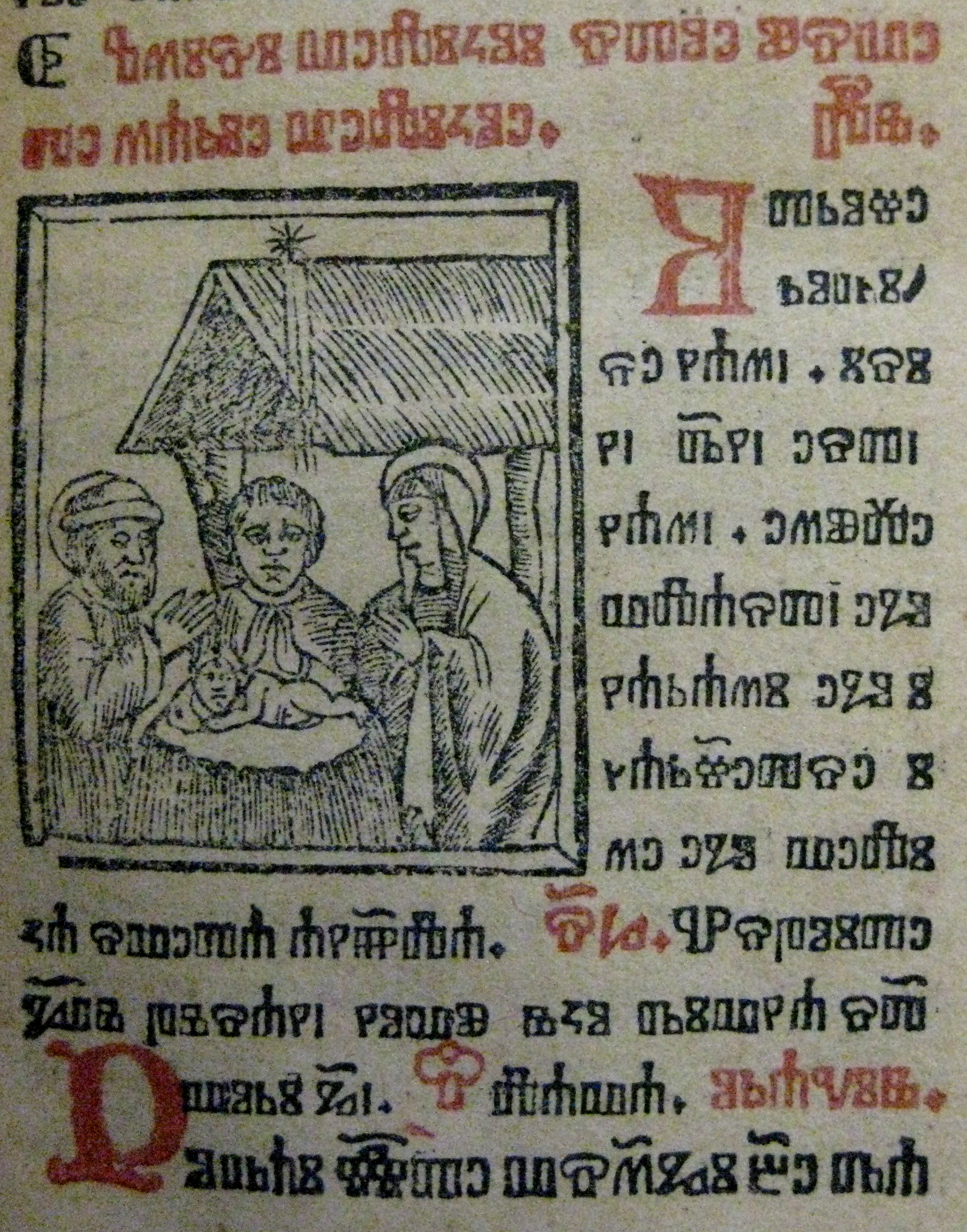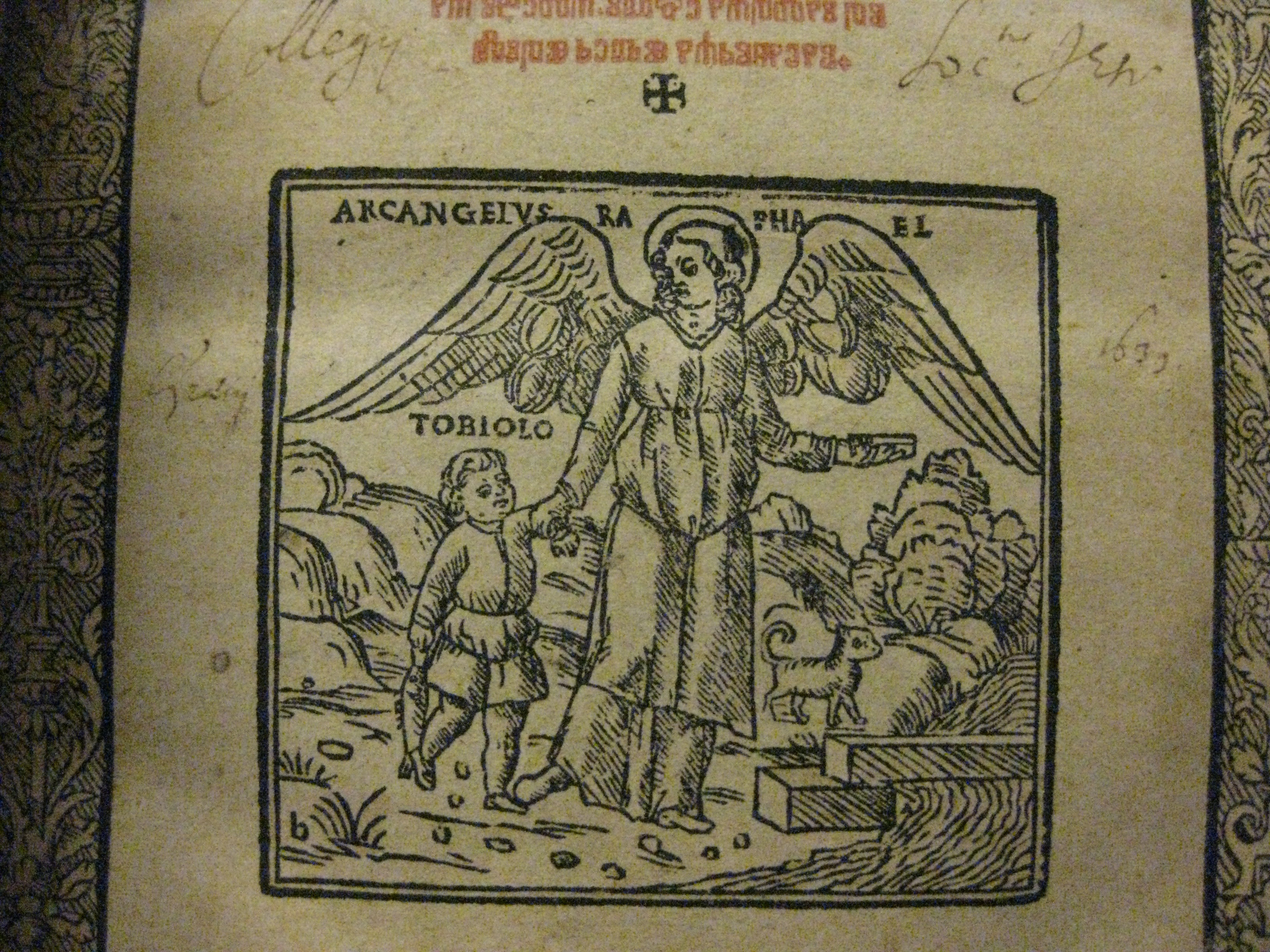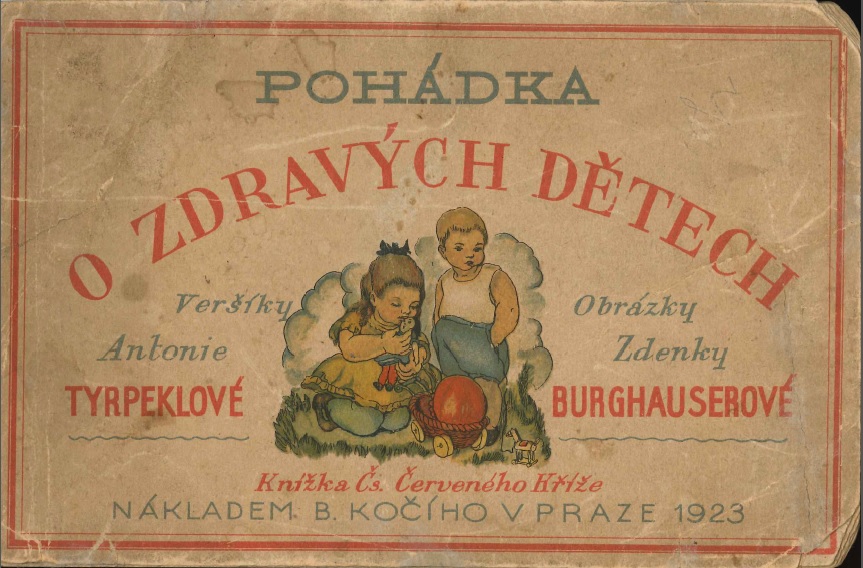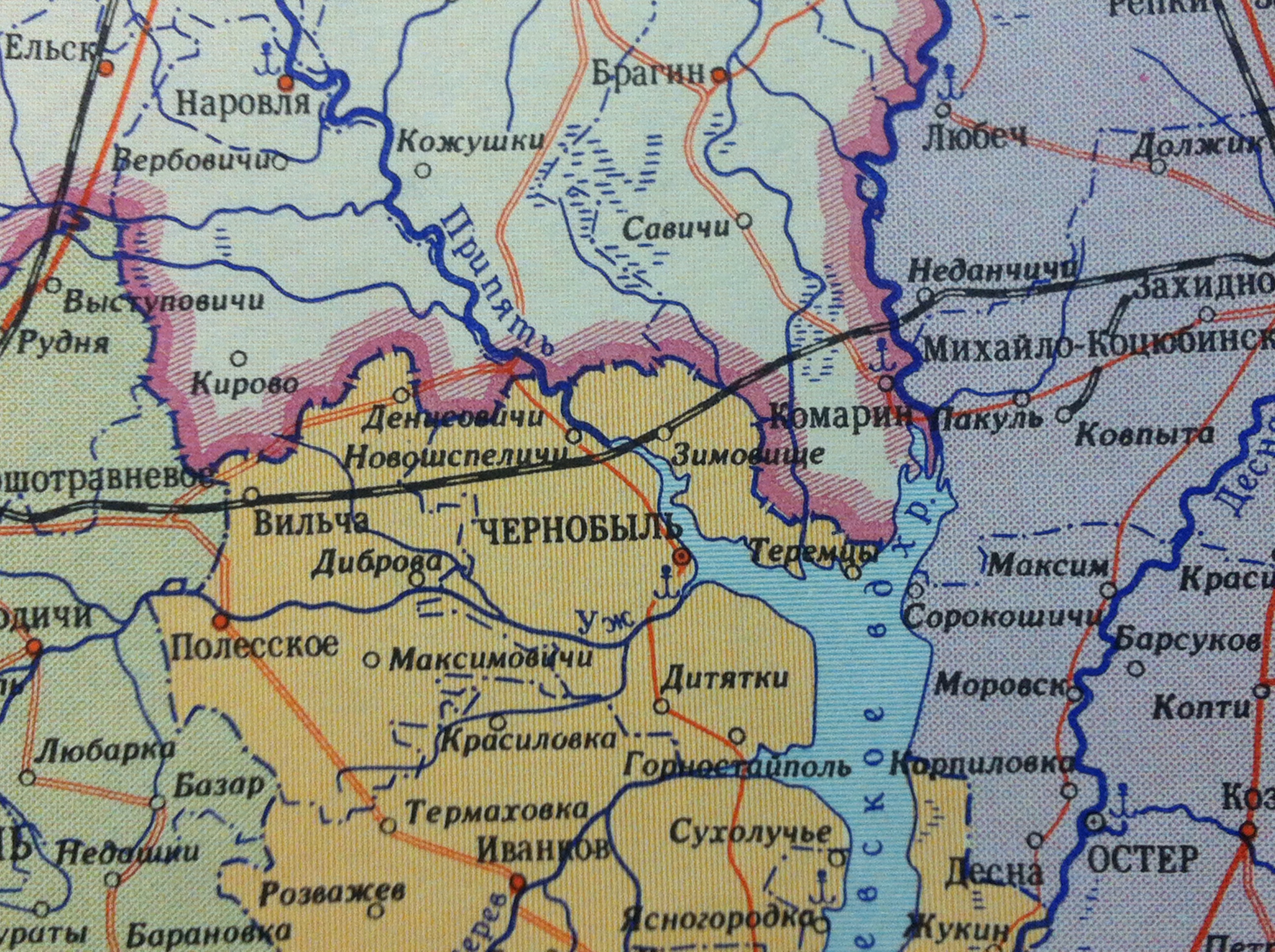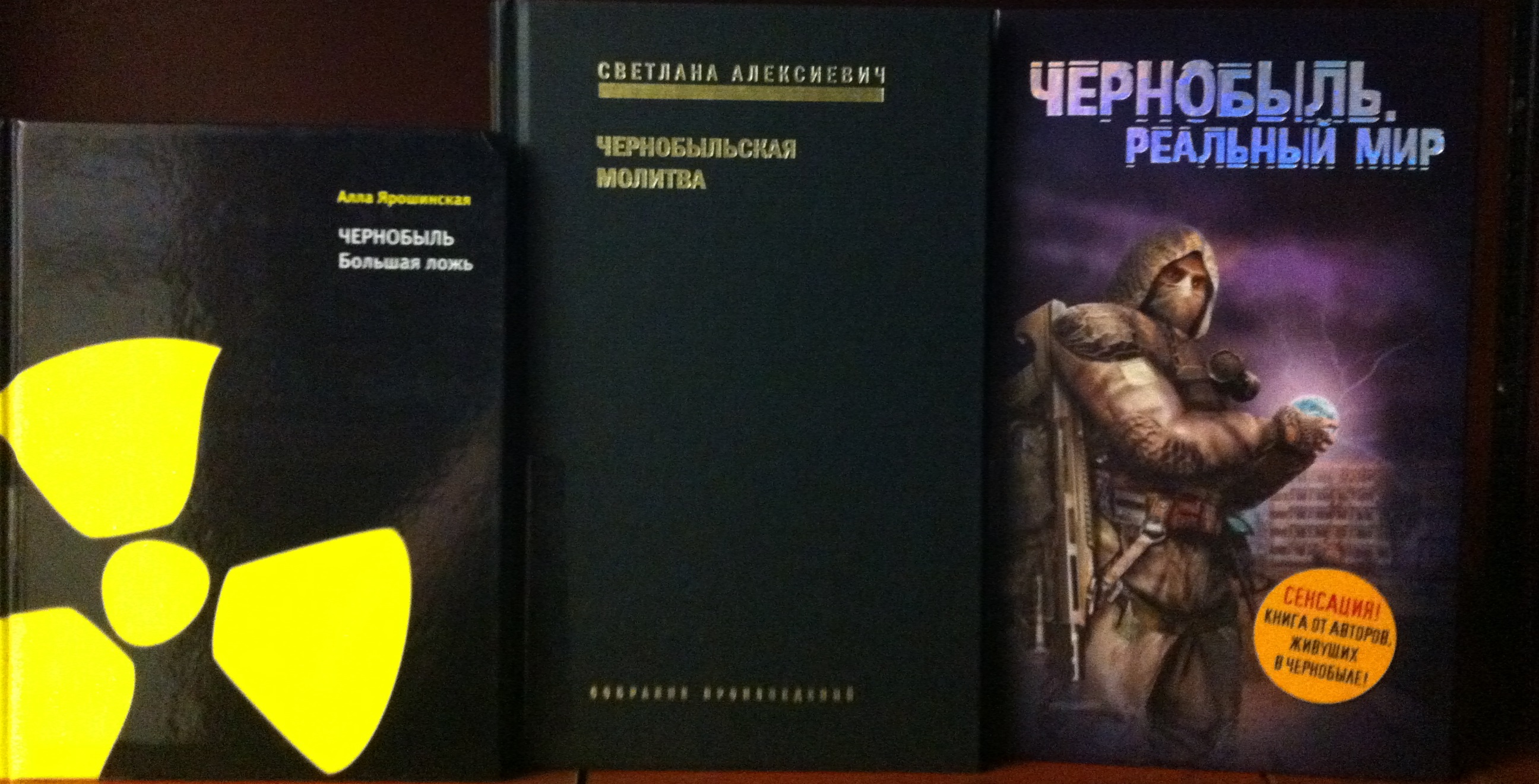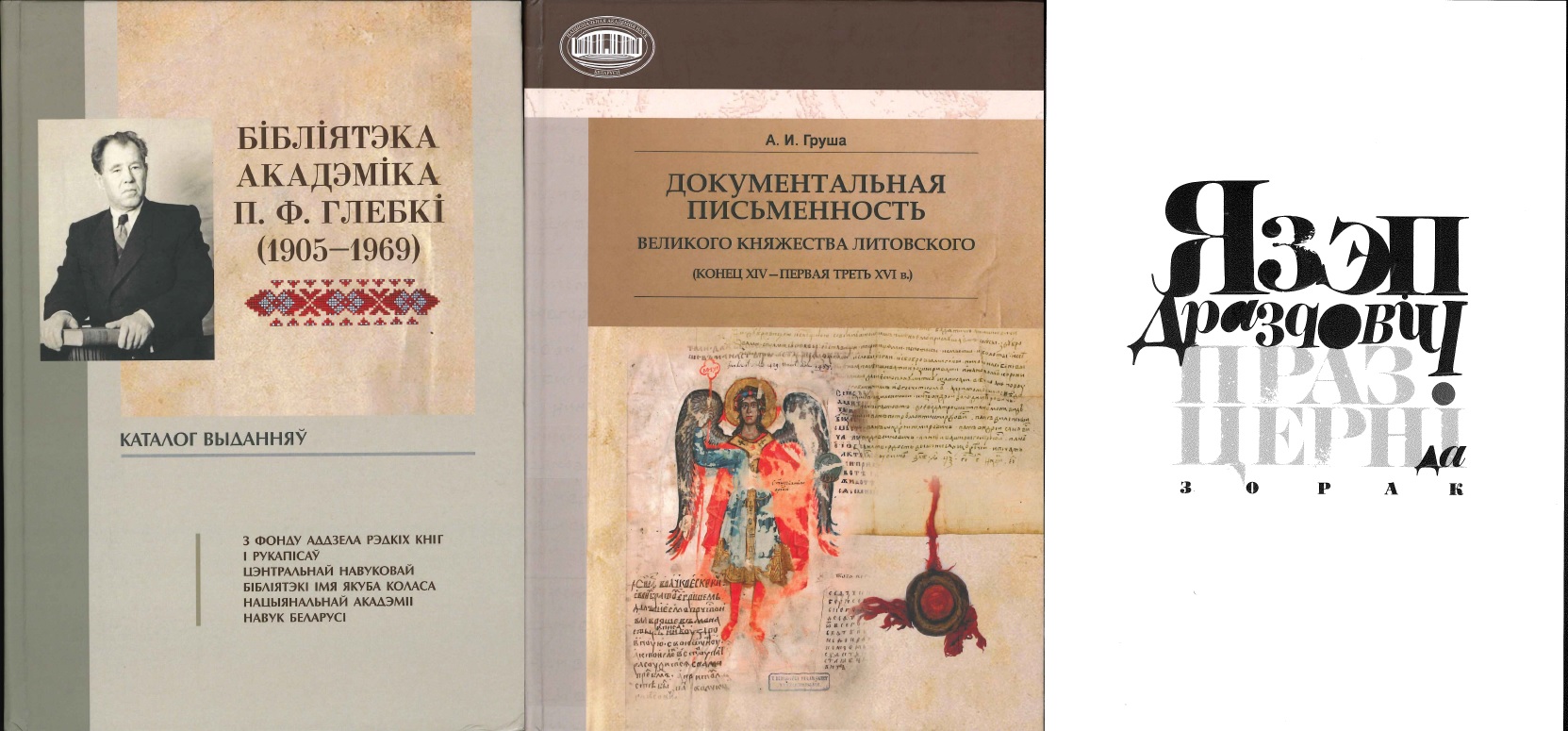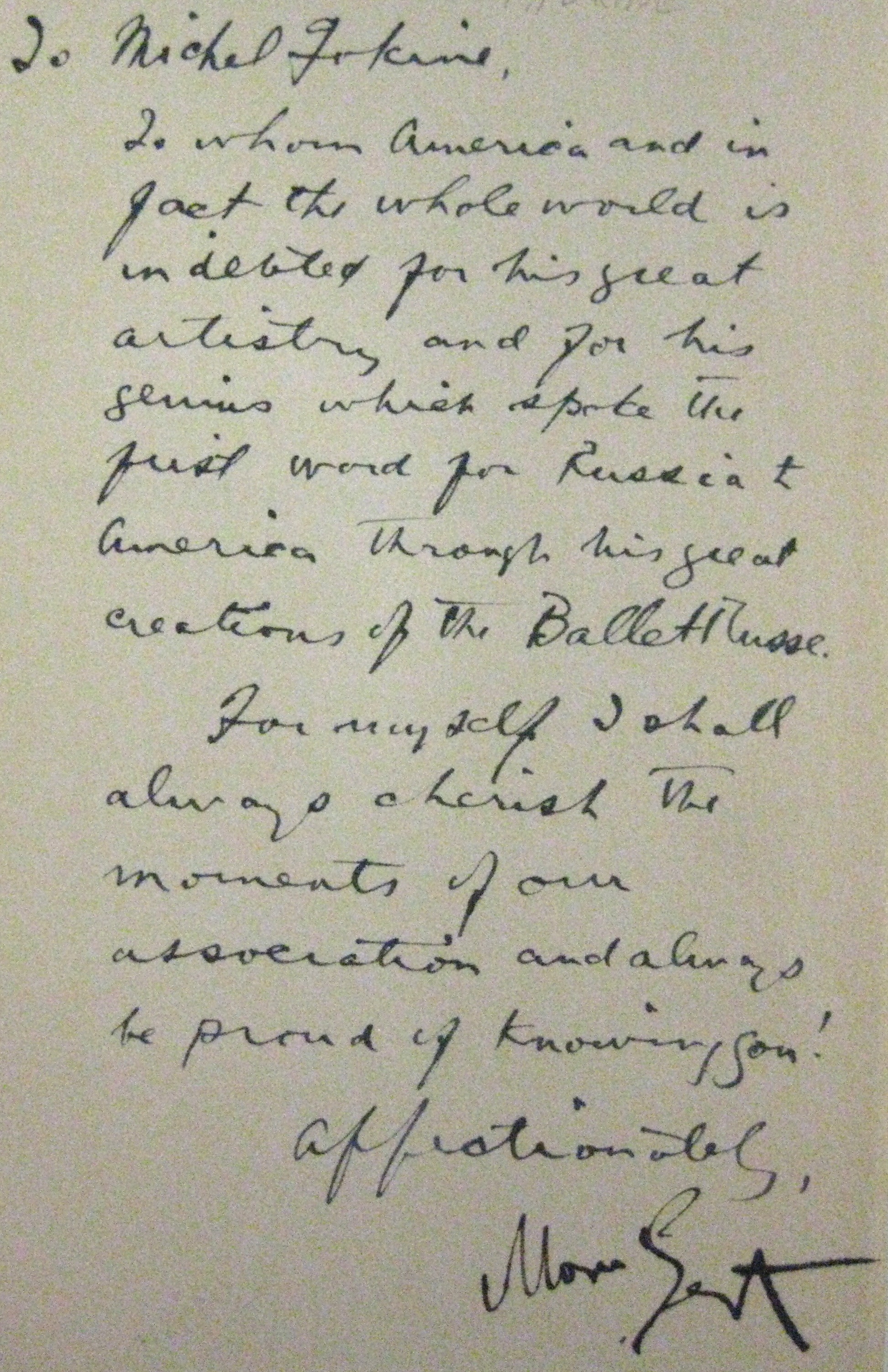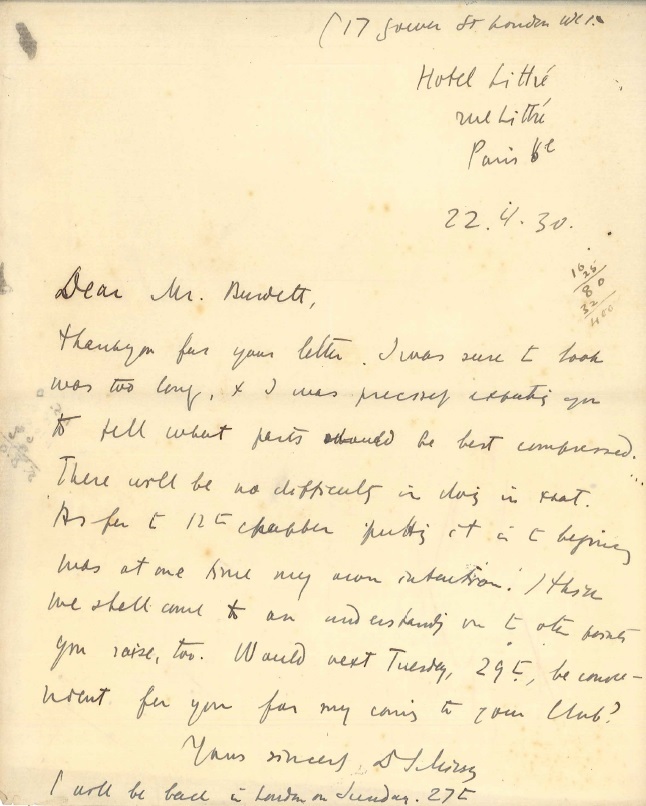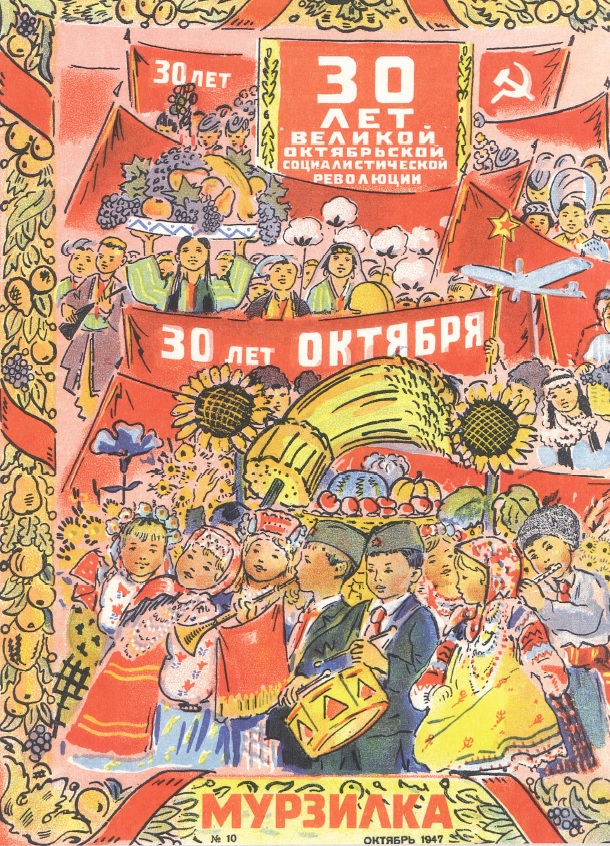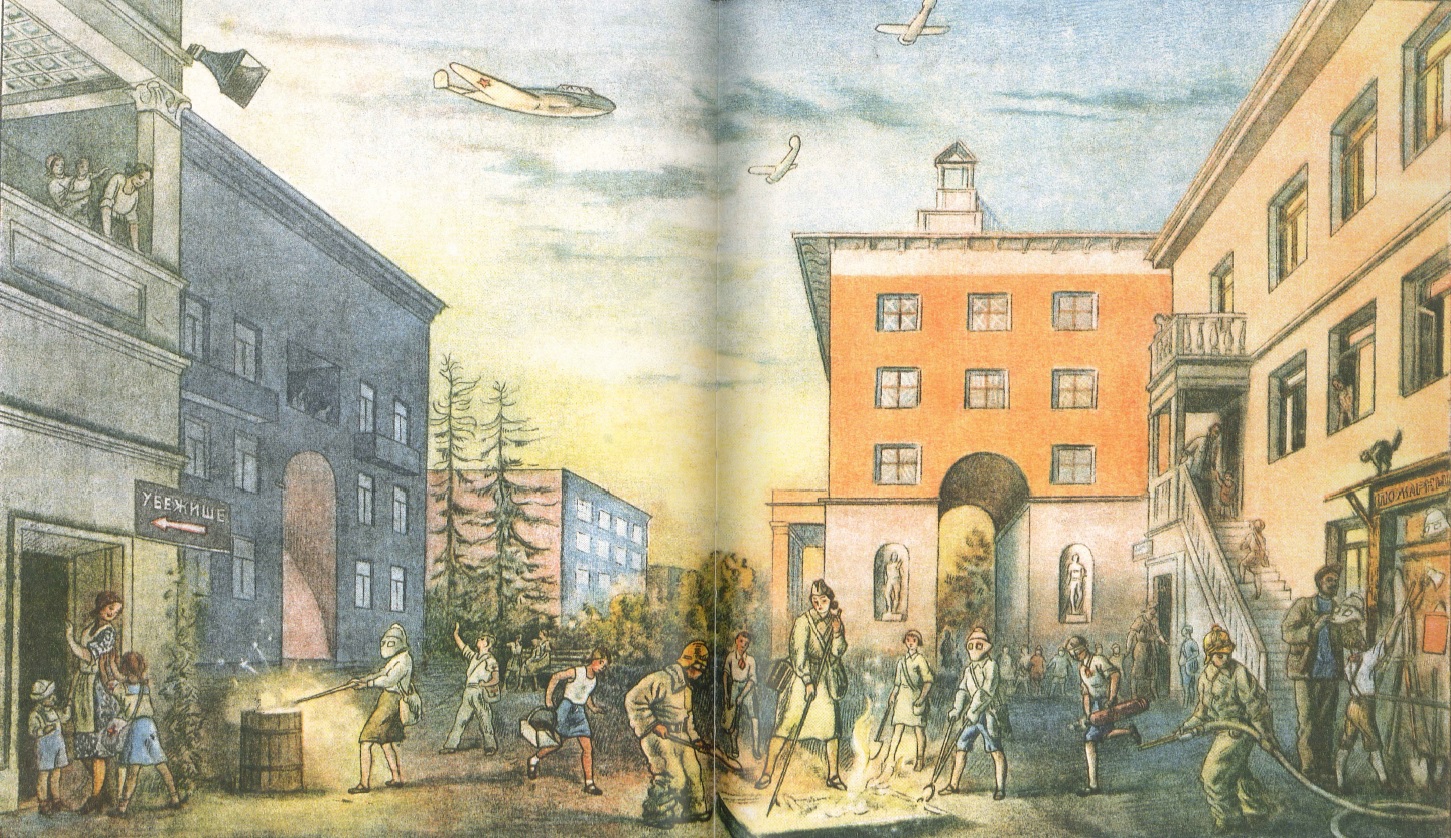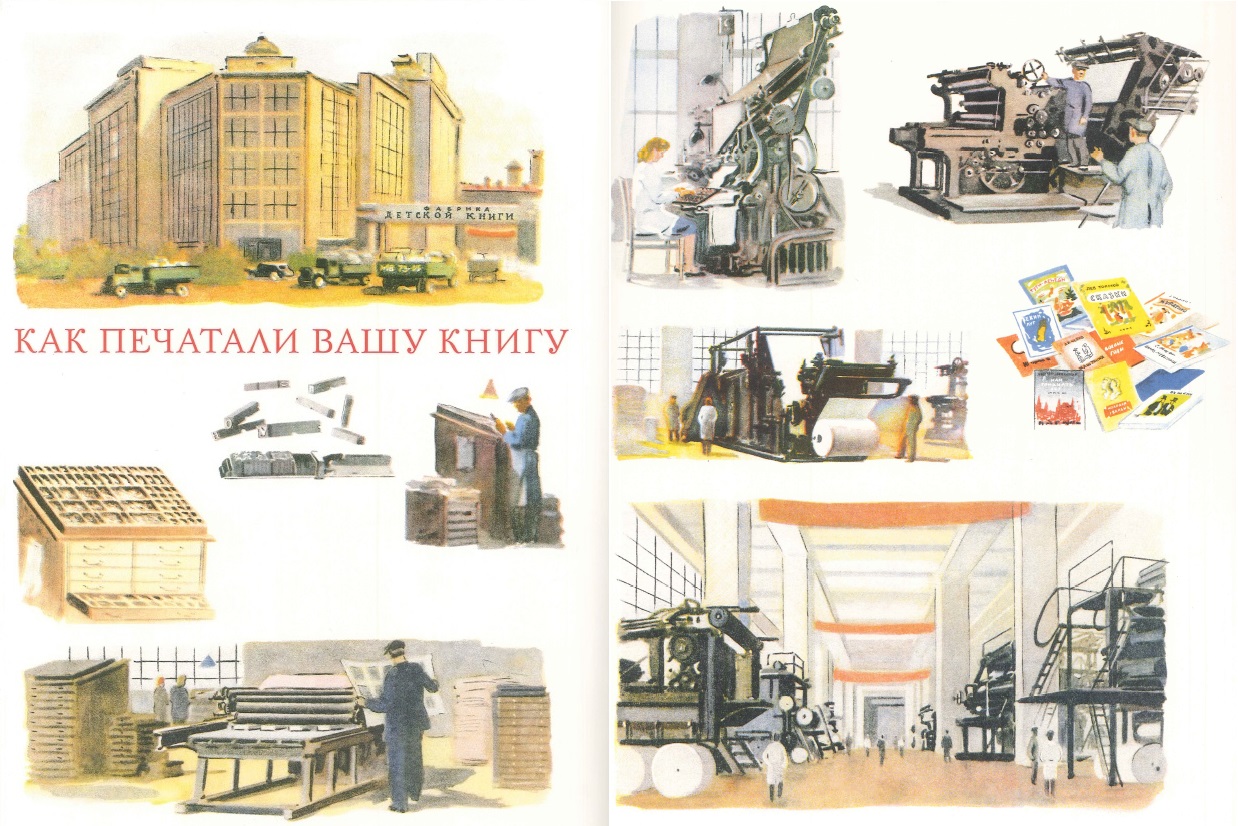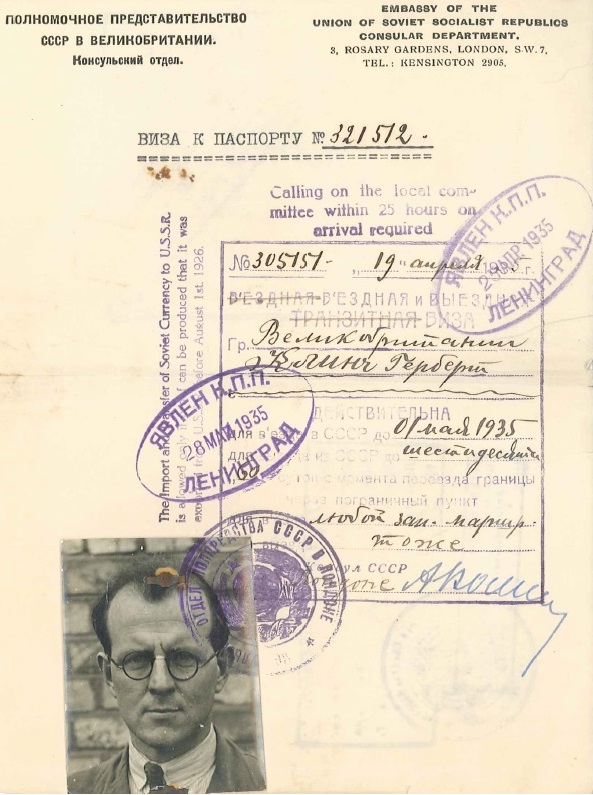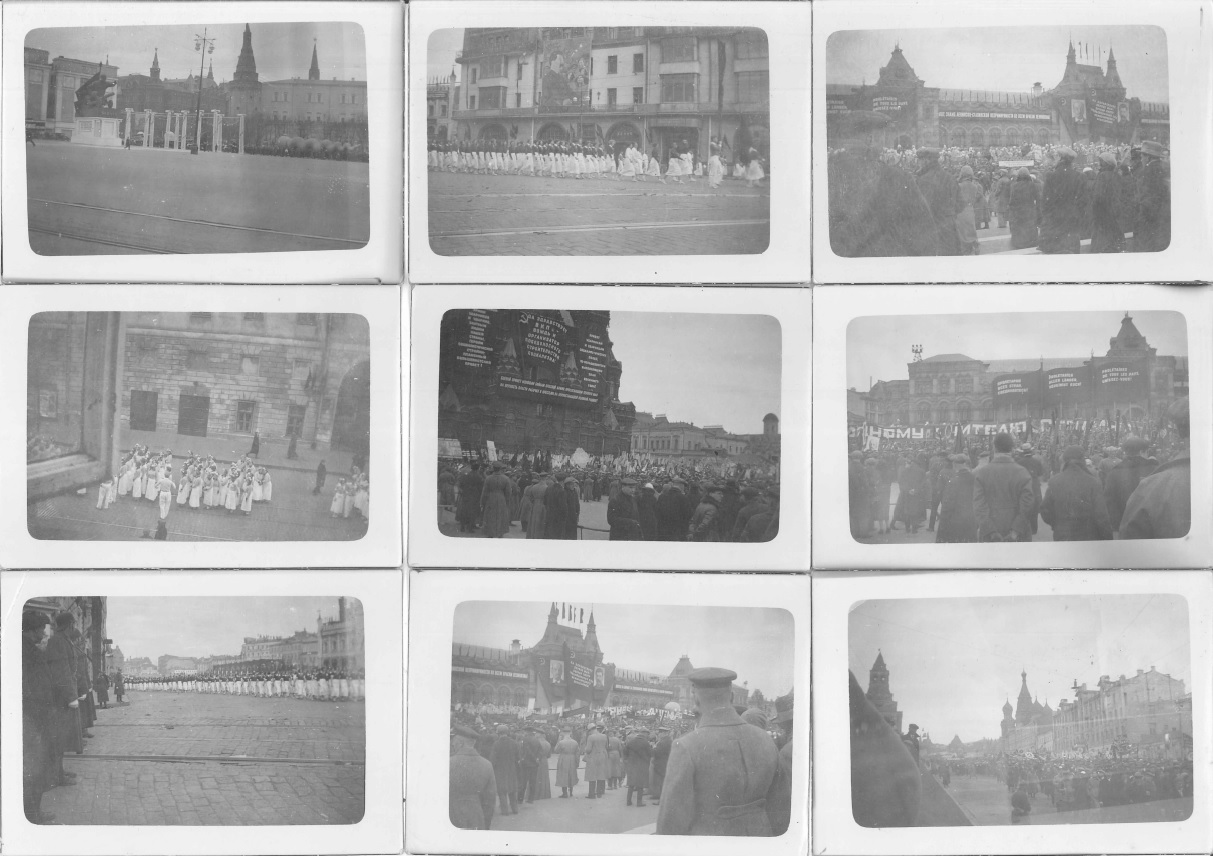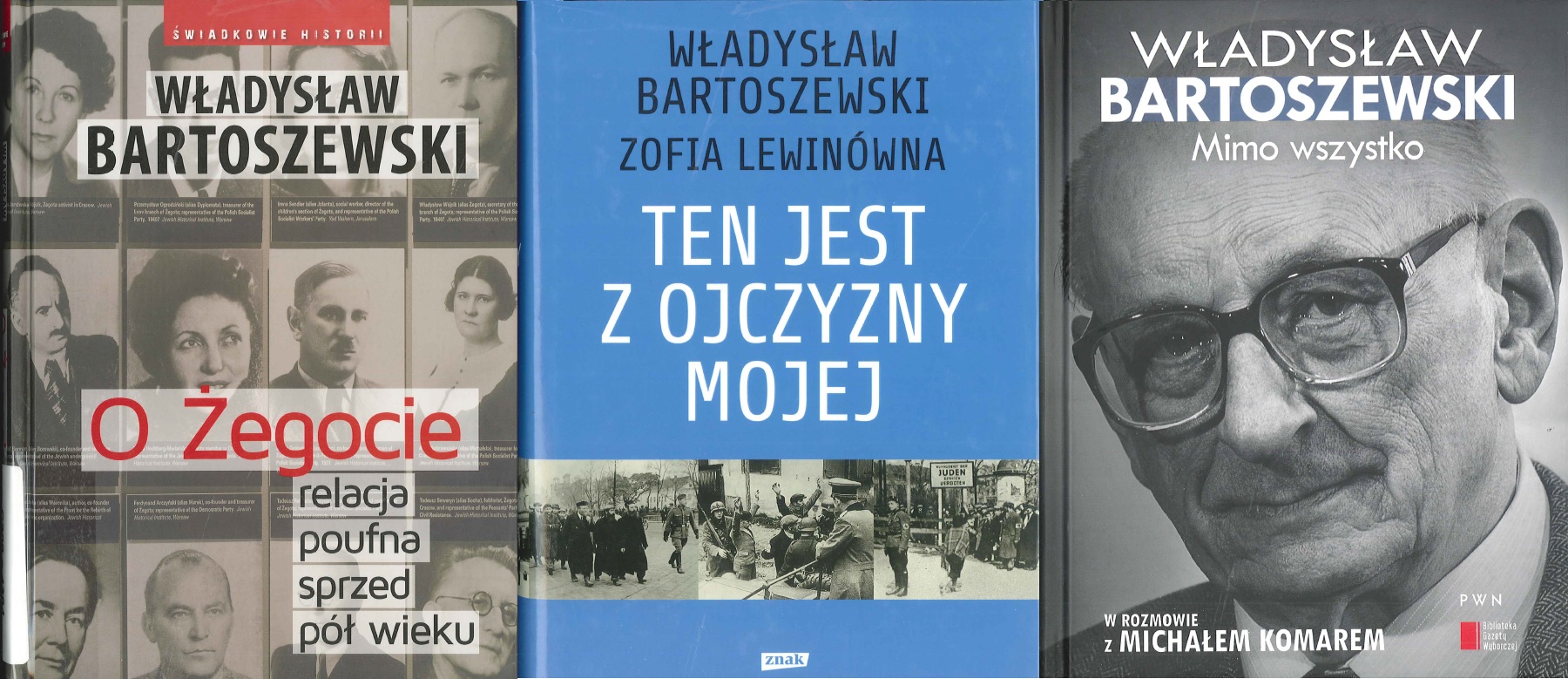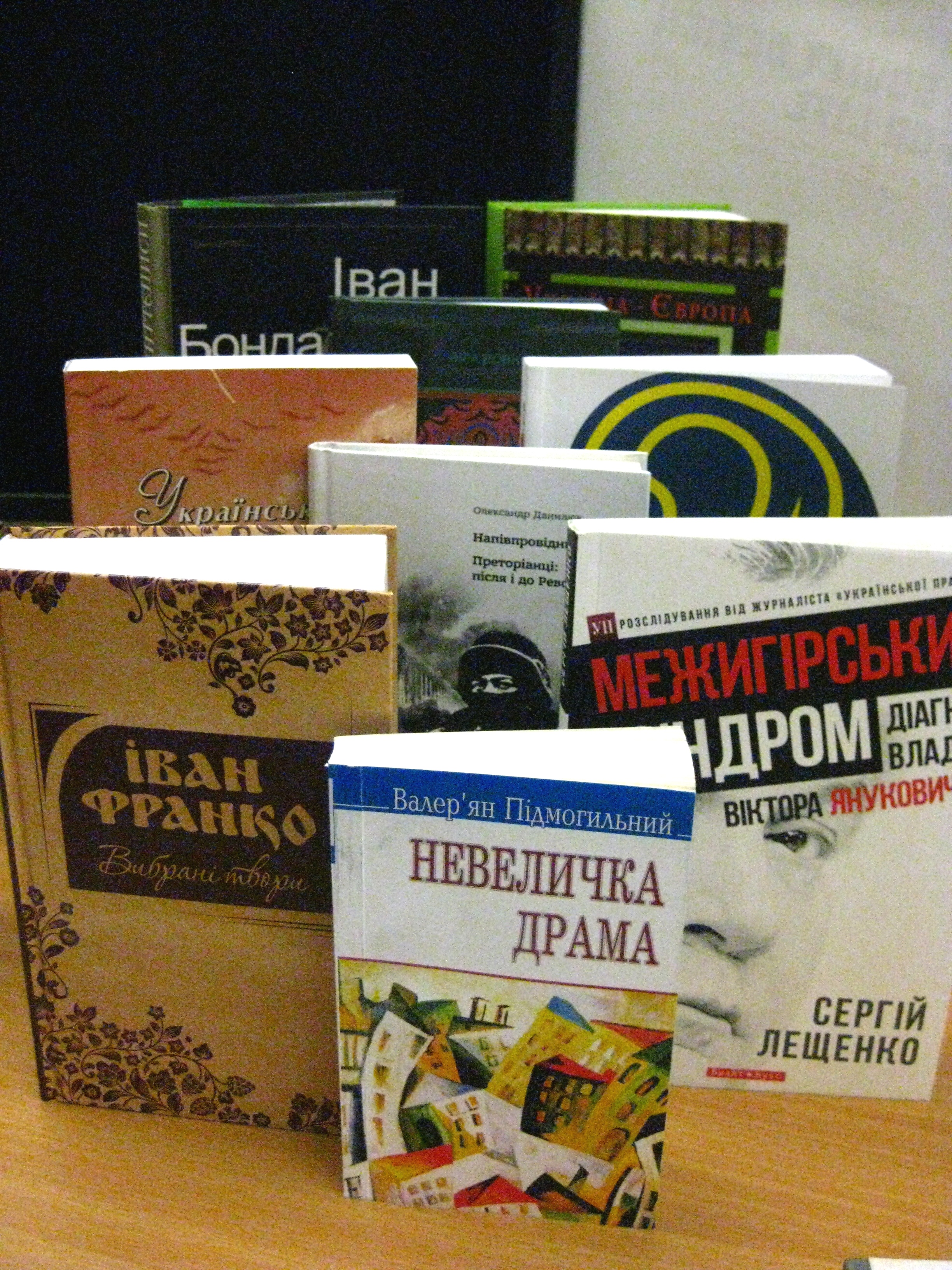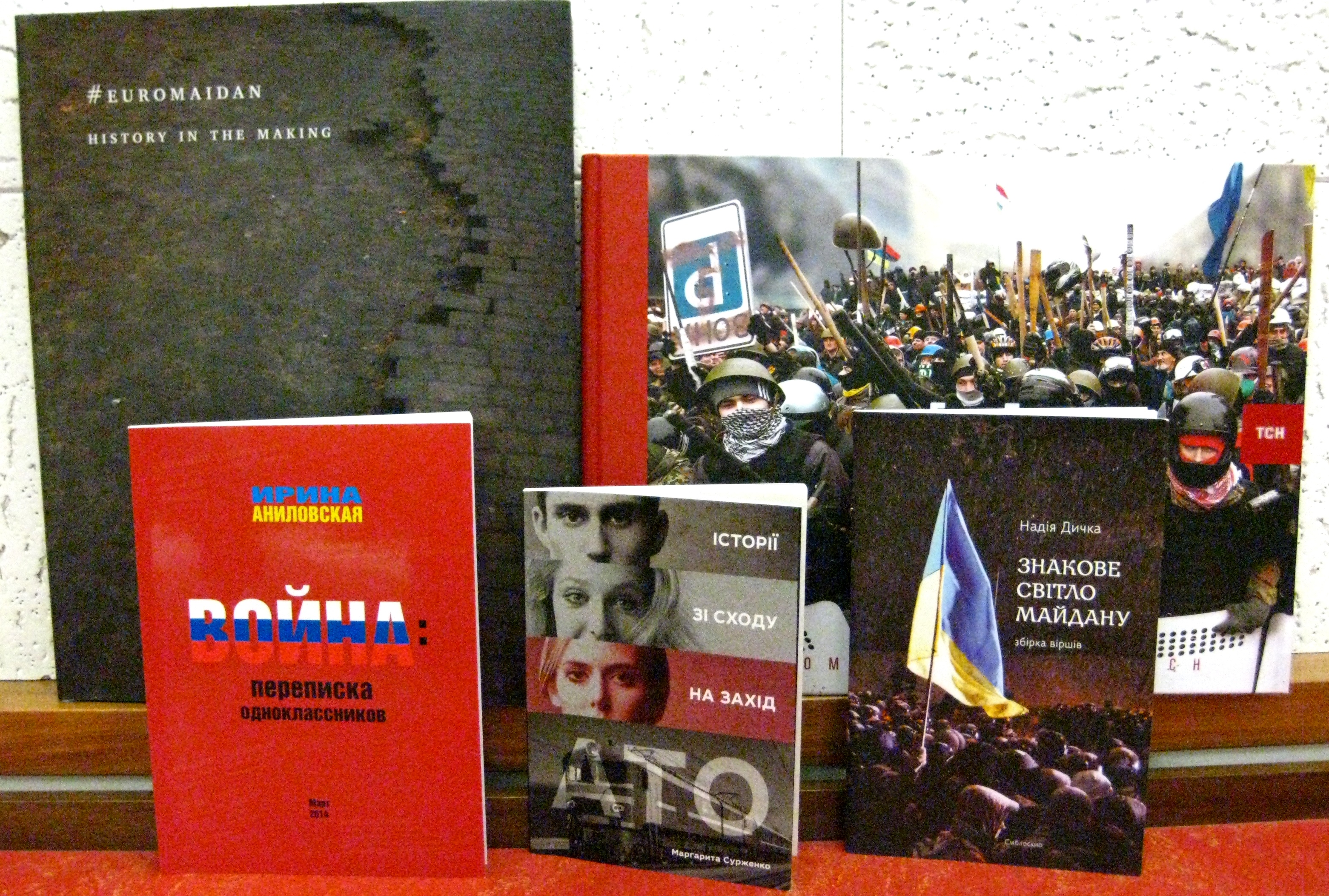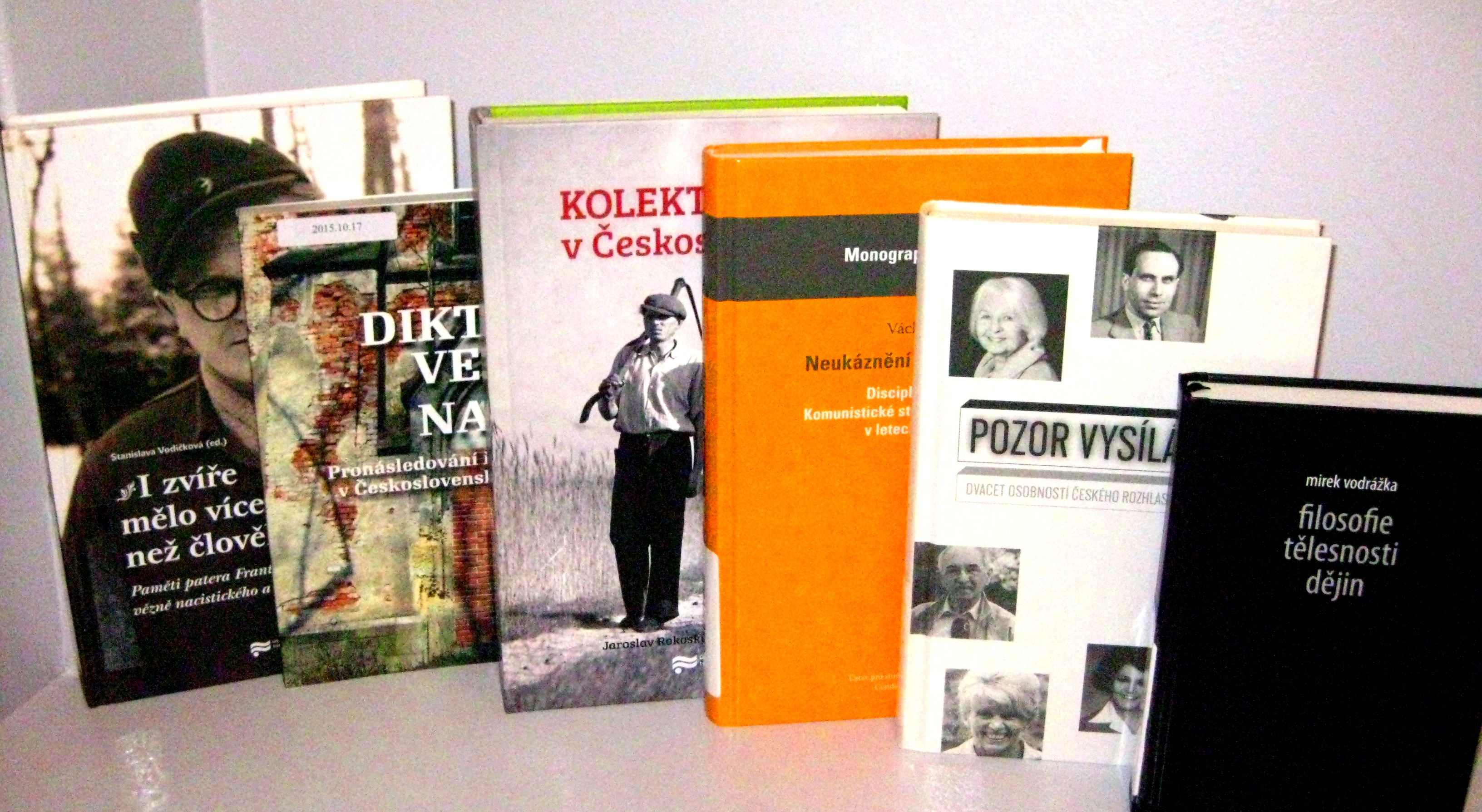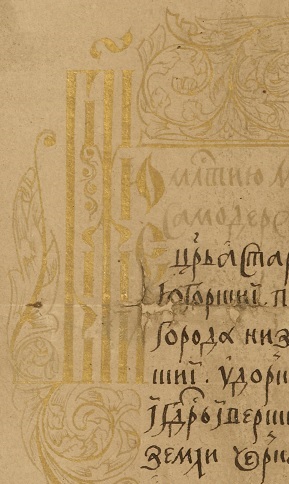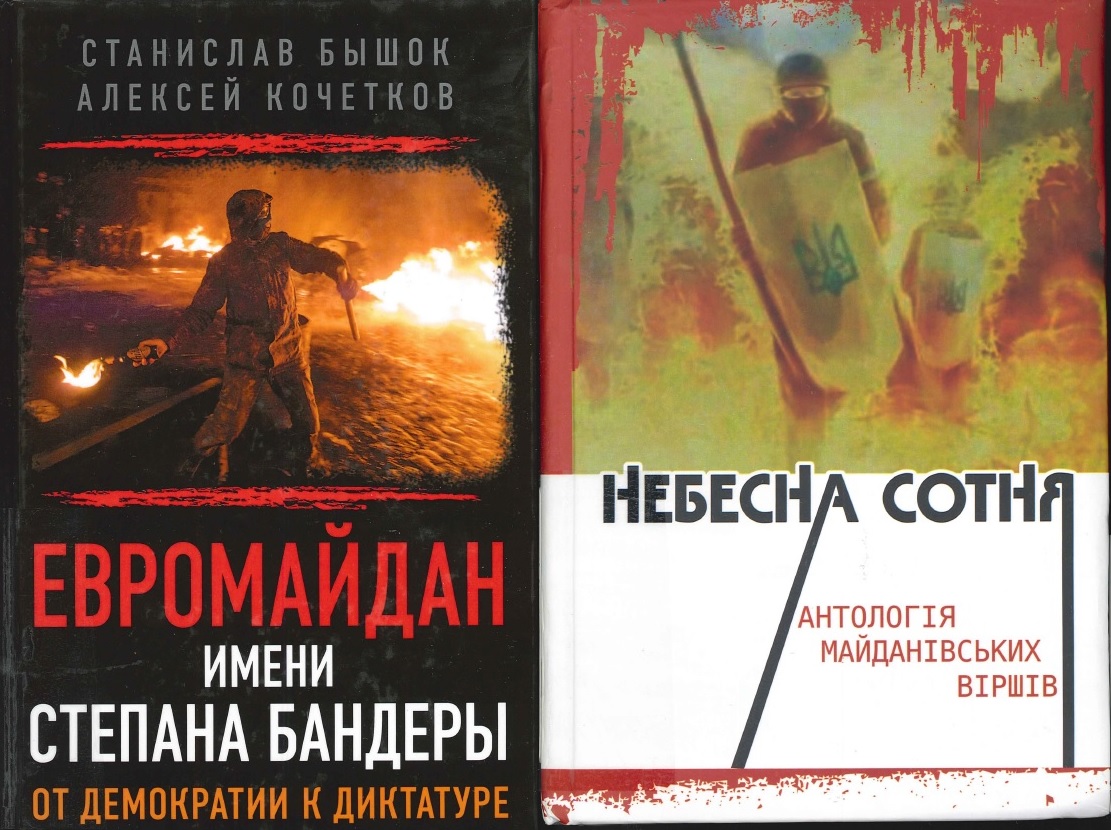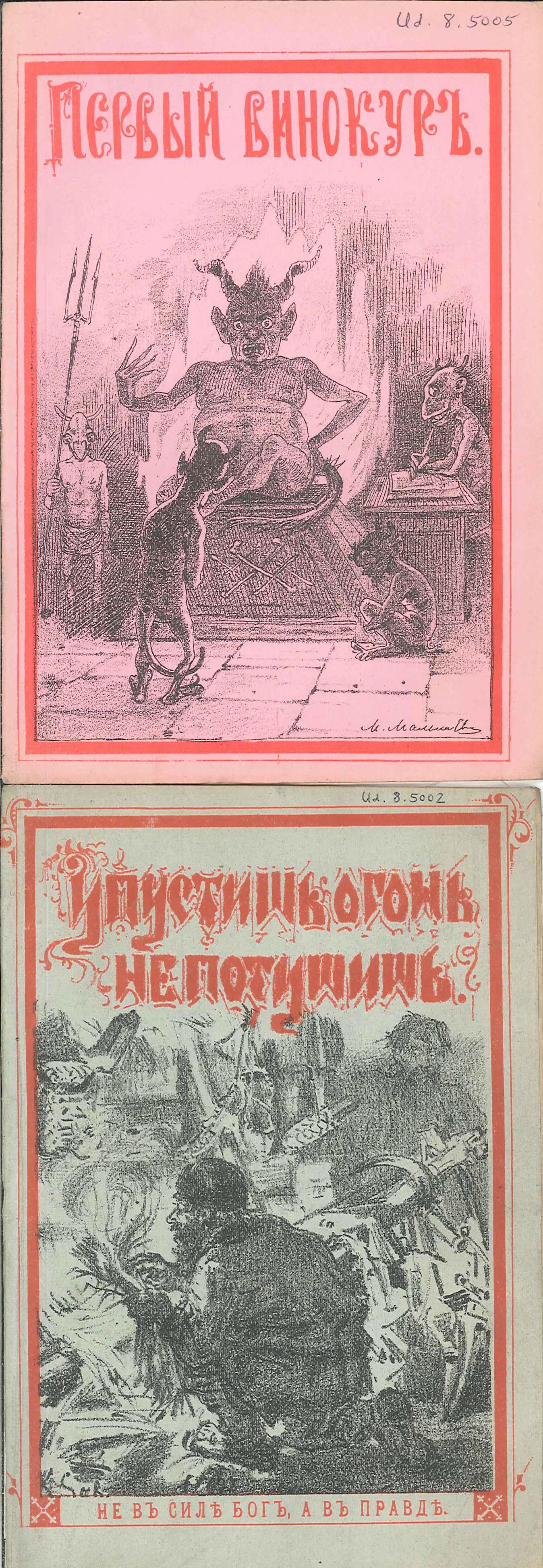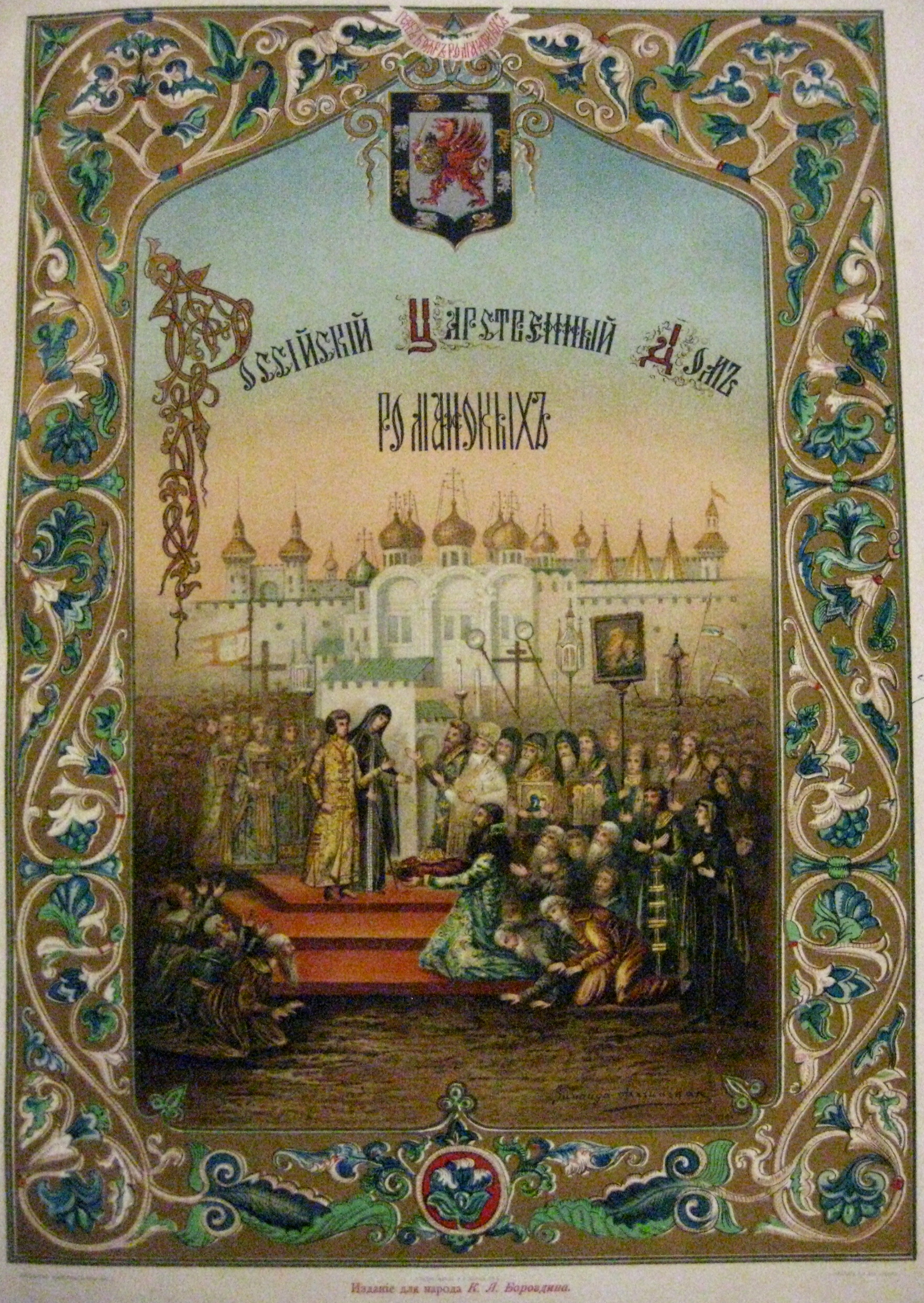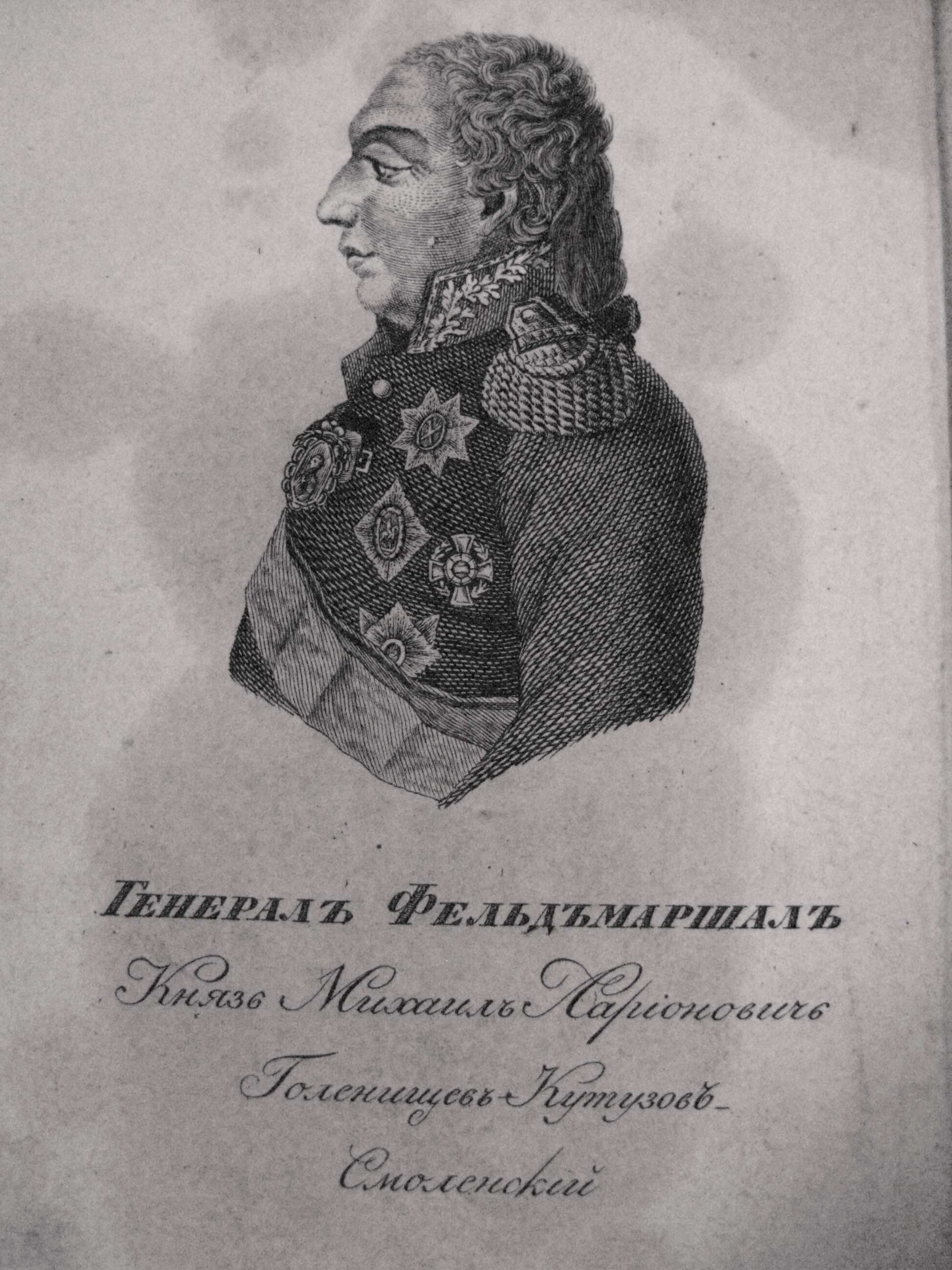Slavonic item of the month
This initiative aims to celebrate the diversity and riches of the UL's Slavonic collections. Each month, the Slavonic staff of the UL will either choose an item connected to a current event or an anniversary falling that month, or an item of particular interest which they have come across in their usual work. Each item chosen will be celebrated with a photo and a brief description.
A few weeks ago, we were fortunate enough to receive a donation of five lovely books from the Kharkiv-based publisher Oleksandr Savchook and the organisation Progress-14.
The five donations add to the 12 Savchook titles we had previously bought and which were published between 2014 and 2021. The five new publications, which reflect the core strengths of Mr Savchook’s publishing house in terms of their concentration on the arts, were published in 2022 and 2023 and make very welcome additions to Cambridge’s Ukrainian collection.
Read more...
Kyivan Christianity – 14 new volumes
While the Ukrainian Christmas largely joined the western Christmas in 2023, this Easter will still see a substantial difference, with the western churches celebrating Christ’s resurrection in March and Ukrainians celebrating in May. Nevertheless, the Easter weekend for most in Cambridge seems a good time to mark the arrival of many new volumes in the Kyivan Christianity set.
Read more...
Books about stamps are not a huge business in modern purchasing at the University Library, but they can be incredibly interesting to more than the dedicated philatelist. We recently bought two volumes about Ukrainian stamps more for the principles and attitudes reflected in the stamps than for the images themselves. What inspires a government agency in its selection of images? It’s a particularly keen question when it comes to a country whose last 10 years have seen parts of its territory overtaken by illegal annexation and ruined by a growing war.
Read more...
Ukrainian ceramicist Olʹha Rapaĭ-Markish
The 2018 publication Olʹha Rapaĭ-Markish arrived in Cambridge later that same year but I only recently managed to take a proper look. Olʹha Rapaĭ-Markish (also known as Olʹha Rapaĭ or the anglicised Olha/Olga Rapay), 1929-2012, was a Ukrainian artist most known for her ceramics, large and small, and this book explores her often tragic life and her delightful work. [Note that her father, Peret︠s︡/Peretz Markish, the major Yiddish writer who was shot in Moscow in 1952 during the Night of the Murdered Poets, features in the book, and that we have other books by/about him here.]
Read more...
Our last Slavonic item of the month for 2023 is a newly purchased ebook about the history of books and printing in Ukraine. Z istoriï knyz︠h︡kovoï kulʹtury Ukraïny [From the history of the book culture of Ukraine] looks at items in the Vernadsky National Library of Ukraine. It contains the following 4 main sections, which contain a total of 15 chapters. I give the 3 chapters that fall under the all-important library section.
Read more...
This month, the Modern and Medieval Languages and Linguistics Faculty Library and the UL received their copies of the 2023 book Mova-mech : i︠a︡k hovoryla radi︠a︡nsʹka imperii︠a︡ [Language-sword : how the Soviet empire spoke] by I︠E︡vhenii︠a︡ Kuzni︠e︡t︠s︡ova. The book had been requested by the Language Teaching Officer in Ukrainian at the Faculty, and the libraries had agreed to buy a copy each.
The 374-page book contains 87 short chapters covering the history and various aspects of Soviet language policy and its effect, including on Ukraine and Ukrainian. The book’s table of contents can currently be seen as snapshots on the publisher’s page for the title. Here are the Library of Congress subject headings we used in the catalogue record, linked to take you straight to an advanced search in iDiscover for each heading. Note that the last two are headings which are not subdivided geographically, hence looking very general but still useful to have in the record.
Read more...
Dovzhenko in the files of the secret services
Another newly added title to the catalogue is a 2-volume set of sources from Soviet secret service archives about the filmmaker Oleksandr Dovz︠h︡enko. I’ve written before about our holdings about Dovz︠h︡enko (eg here) but this new arrival is a significant addition and warrants its own blog post.
Read more...
Some courses have already started in the University, but the majority commence next week, with students in the process of travelling to Cambridge and their lecturers in the process of completing preparations for them. We are therefore currently in a relative lull in terms of book borrowing, but I thought it would be interesting to take a look at what Ukrainian/Ukraine-related books Cambridge’s readers have got out on loan. (Note that the data is only about print books, not ebooks)
Read more...
Early Soviet Cinema Collection and Ukrainian film
At the tail end of the 2022/23 academic year, we were able to buy access to East View’s Early Soviet Cinema Collection, which provides digitised copies of 119 books published between 1897 and 1948. At the moment, there are only very brief author/title records for most of these but current University members can browse them all directly on the East View platform.
“Soviet” can often mean Russian, rather than anything more representative of the Soviet Union; that’s largely the case here. But while the collection is fully russophone, there is at least some diversity in terms of subject matter, as an examination of the collection’s contents show when looking in particular for coverage of the hugely important Ukrainian film industry.
Read more...
The Ukrainian city of Kherson has often been in the headlines since Russia launched its full-scale invasion of Ukraine in February 2022. Kherson was occupied in early March 2022, but many of us will remember inspirational footage of its citizens demonstrating against the Russian occupiers, waving Ukrainian flags and singing Ukrainian songs. September saw the Kherson Region (Khersonsʹka oblastʹ) claimed by Russia to have been legally annexed in an internationally condemned move, while Kherson’s liberation by the Ukrainian army took place in November. Recovering from months of occupation and destruction, Kherson then suffered seriously from flooding and pollution caused by the June 2023 destruction of the Kakhovka dam.
Our latest Slavonic item of the month is a 2023 anthology of poems by Kherson inhabitants about their city and region and the war.
Read more...
The provider East View has recently started to stock Ukrainian ebooks that libraries can buy (libraries require special licensing), and we recently bought an initial 30 volumes, including a couple of Crimean Tatar titles that I wrote about in another post and don’t cover again here.
All the books listed in the table were published in Kyïv or Kharkiv. Except for a few in English translation, they are all in Ukrainian. The list displays a little clumsily since the blog software doesn’t much like Excel formatting, but I have given rough section headings and there are four columns for the book entries: title, author/editor, date, URL to take Cambridge readers straight into the book.
Read more...
A new volume of Mykhailo Hrushevs’kyi’s works
This week, another volume was added to the 50-volume Tvory (Works) set by Mykhaĭlo Hrushevs’kyĭ that has been being published since 2002. The new volume said it was v. 34, v. 6, and it contains part of Hrushevs’kyĭ’s epic history of Ukraine-Rusʹ. Having taken the numbers at face value, assigning the number as v. 34(6), I increasingly suspect that the v. 6 referred to on the title page will turn out to be preceded by v. 1-5 in the set’s v. 29-33 rather than all within a massive v. 34. Ah well – labels can be reprinted and metadata updated when we know for sure.
Read more...
This morning, I had the satisfaction of solving the problem of a missing Ukrainian book. It hadn’t been missing in the normal library sense of not being on the shelf. Instead it was entirely missing from the catalogue.
A little while ago, a colleague sent me a few photos of covers of Ukrainian literature and history books in the University Library, and among them was this:
Read more...
New arrivals about the Russo-Ukrainian war
Among a good number of new Ukrainian books that arrived in March are of course many about the Russian war against Ukraine taking place since 2014 which then intensified appallingly with the full-scale invasion launched in February 2022.
Many of these titles look at Ukraine before February 2022. One is the three-volume set Khronika viĭny 2014-2020 (Chronicle of the war 2014-2020). Across the set, the authors, Oleksandr Krasovyt︠s︡ʹkyĭ and Dar’i︠a︡ Bura,cover: the Maidan events to the Battle of Ilovaĭsk (v. 1), from the first Minsk Protocol to Minsk II (v. 2), and the following 5 years of hybrid war (v. 3). We plan to buy the English translation of the set as ebooks.
Read more...
This brief post looks at a couple of welcome donations of books about Ukrainian art.
At the front line : Ukrainian art, 2013-2019 is the catalogue of an exhibition of 13 Ukrainian artists that took place at the National Museum of Cultures in Mexico City in 2019 and the Oseredok Ukrainian Cultural and Educational Centre in Winnipeg in 2020. One of its editors and contributors, Dr Svitlana Biedarieva, kindly arranged the donation of a copy to the UL, and we are very glad to add it to our collections, for its examples of and insights into artistic experience of the pre-2022 Russian invasion of Ukraine and the role of art and artists in the context of war. The catalogue is largely textual, with the text provided in Spanish, English, and Ukrainian. Some of the pictures in the catalogue are shown below, with the table of contents. It is worth mentioning that Cambridge readers also have access to Dr Biedarieva’s 2021 edited volume Contemporary Ukrainian and Baltic art : political and social perspectives, 1991-2021.
Read more...
A Ukrainian almanac for 75 years ago
As the first month of the new year draws to a close, it felt appropriate to look at Ukrainian kalendar’ al’manakh for 1948, 75 years ago.
On its title page, it describes 1948 as a jubilee year, and refers back to the three years of 1648, 1848, and 1918. 1648 saw the start of the Cossack uprising against the Polish-Lithuanian Commonwealth which would eventually lead to the creation of the Cossack Hetmanate state. Two centuries later, Galician Ukraine was in the Austrian Empire, and 1848 saw the creation of the Holovna Rus’ka Rada (Supreme Ruthenian Council) in L’viv, which determined the blue-yellow flag Ukraine uses to this day and oversaw the publication of the first Ukrainian-language newspaper, Zoria Halytska (Galician Star, or Galician Dawn). 1918 saw immense changes in Ukraine, starting with the 22 January declaration of the independent state of Ukraine.
Read more...
This September, Thames & Hudson published Treasures of Ukraine, with proceeds going to charity. The book is not yet available through the UL, but we expect a copy from the publisher through legal deposit in 2023.
The book is a beautifully illustrated introduction to the history and culture of Ukraine, with an introduction by the famed writer Andrey Kurkov (whose 2022 Diary of an invasion we have recently purchased as an ebook). Here are the contents of Treasures of Ukraine:
Read more...
The fourth Saturday of November is Holodomor Memorial Day, which marks the loss of millions of Ukrainians in the man-made famine of 1932/33. Today, of course, the day of remembrance occurs during another man-made horror in Ukraine, as Russia’s war continues to take a terrible toll on Ukraine and Ukrainians.
We marked the 80th anniversary of the Holodomor in 2013 with a blog post about one particular book (here) and wrote again about the Holodomor in 2019, when the libraries put on a pop-up exhibition to tie in with a Cambridge Ukrainian Studies screening of the film ‘Mr Jones’ about the Welsh journalist whose unflinching reports of the horrors he saw were too easily ignored (blog post here).
Read more...
The problems of successful upbringing
This month’s item is yet another lovely arrival through the donation from the New York Shevchenko Scientific Society Library. Problemy uspishnoho vykhovanni︠a︡ provides a 20-chapter guide to raising children. Vykhovanni︠a︡ can also mean education, but the chapter list makes it quite clear that the book is about bringing children up more generally. The book covers birth and new parenthood, first steps and nursery, some coverage of early school years, general topics such as behaviour, interest, authority, and music, and the spiritual education of children. There are also chapters about language and about nurturing national consciousness in the family – both interesting since the book was written and published in the US with the Ukrainian diaspora its primary audience.
Read more...
Today, the day when Putin added to his illegal annexation of Crimea in 2014 the illegal annexation of four more Ukrainian regions (not fully even under temporary Russian control) following further referenda not worth the paper they were falsified on, our weekly Ukrainian blog post promotes new writing about Russia’s war against Ukraine made possible by the Ukraine Lab initiative, led by the Ukrainian Institute in London.
Read more...
Ukraine and films in the Klassiki database
Last year, Cambridge University Libraries started providing access to the Klassiki database of films from Eastern Europe, Russia, the Caucasus, and Central Asia. The subscription was started specifically to support courses taught under the auspices of Film Studies and/or Slavonic Studies. In its own words: “Klassiki hosts a highly curated permanent collection of films that represent the best of classic filmmaking from the region. We also offer a brand new ‘Pick of the Week’ contemporary title, selected by the curatorial team. Each of our films are accompanied by programme notes, journal essays, newly commissioned subtitles and online interviews with the best filmmakers from the region.”
Read more...
Newly catalogued Ukrainian books
In my previous post, I made reference to the quite amazing news that we are expecting new book arrivals from Ukraine in the near future. This brief post draws the attention of our Ukrainian-reading followers to some of the last books we had received from our supplier.
Read more...
All of us have learned the names of Ukrainian cities and towns from the shocking and heartrending news about Russia’s war against Ukraine, and the name of Mariupol has appeared probably most frequently of all. This blog post – written while desperate attempts continue to be made to arrange safe passage at least for the civilians in the besieged Azovstal factory complex – looks at a map of Mariupol from 1967.
At that stage, Mariupol (Маріуполь) had another name, being one of many places renamed in the Soviet period after Soviet politicians – in Mariupol’s case after Andreĭ Zhdanov (1896-1948), who was born in the city. This map, then, has the city as Zhdanov (Жданов), which name it held from 1948 until 1989.
Read more...
Ukraine’s forgotten war before war
Something that many people have been keen to point out since Putin’s invasion of Ukraine last month is that Russia and Ukraine had already effectively been at war since 2014, as Russian-backed separatists fought alongside Russian soldiers against the Ukrainian army in the Donbas (short for Donetsk Basin) in the east of Ukraine.
We have written blog posts before about the material the UL has collected about this conflict, as well as about the annexation of Crimea, and books have continued to come in about it. Just today, my colleague catalogued Na shchyti : spohady rodyn zahyblykh voïniv (On the shield : memoirs of the families of fallen soldiers), a 3-volume set of memoirs collected and told by the journalist Iryna Vovk.
Read more...
There had been other plans for this month’s blog post, but Putin’s invasion of Ukraine yesterday and its unfolding violence and tragedy are all any of us can think about now.
In this blog, we normally point readers to books but of course in the current situation, books will follow and internet resources are what we need for information now. This list put together by a New Mexico State University academic of freely available news sources in English from Ukraine, Russia, and more is a good starting place.
Read more...
Asian and Middle Eastern material in Russian
Having had the privilege of being on the selection panel for the new Chinese Specialist recently, I was pleased this week to catalogue the latest additions to the enormous Pami︠a︡tniki pisʹmennosti Vostoka (Written monuments of the East) set which stands at 820.b.20. The set contains Russian translations and commentaries of major texts from across Asia. Among the new additions were a set of papers by the 16th-century Korean admiral Yi Sun-sin, the second volume of a dictionary of Turkic words, and a translation of the Mahāvairocanasūtra, a core Buddhist text whose original Sanskrit is lost so the Russian comes from the 8th-century Chinese translation. These new additions are volumes 148, 128(2), and 149 respectively.
Read more...
The nativity in Ukrainian puppet plays
The Institute of History of Ukraine in its online encyclopedia (in Ukrainian) explains that the vertep, a telling of the Christmas story through puppet theatre, is thought to have appeared in the second half of the 17th century and lasted until the early 20th century. In 1929, I︠E︡vhen Markovsʹkyĭ published a book about vertep which was due to be the first volume of a set but which was never added to. The UL’s copy has its record here.
Read more...
Finding Balmont’s hand in a UL copy
This guest blog post is written by one of our UL Reading Room colleagues. David, also a learner of Russian, came across a hidden treasure in our older collections – a book of poetry by the poet Bal’mont (normally Balmont in English, as below) with inscriptions by the author.
Konstantin Dmitriyevich Balmont was a well known poet of the Silver age of Russian Literature. The last book he completed, Свѣтослуженіе (Svi︠e︡tosluzhenīe; Liturgy of light), was published in Harbin, Manchuria in June 1937 to coincide with Balmont’s 70th anniversary.
Read more...
‘Memoirs of Russian, East European, and Eurasian Women’ online collection
Last year, I wrote about the first books to be catalogued from a donation sent to us by the Shevchenko Scientific Society in New York. Today’s post looks at several other books in the collection which passed through my hands last week.
As I explained in the previous blog post, the majority of the donated books (many of which are fairly fragile) would go to Cambridge’s Library Storage Facility, from which they can be recalled to be consulted in the University Library. When books are sent to the LSF, their records are suppressed from iDiscover – if ours is the only copy – until they have arrived there. Since our department’s workflow involves books destined for the LSF going there only in occasional batches, most of the Shevchenko donations are yet to appear in the catalogue. I’m afraid you will have to take my word for the fact that dozens of these donations will appear in iDiscover when the next delivery from us to the LSF takes place – probably within the next week or so.
Read more...
‘Memoirs of Russian, East European, and Eurasian Women’ online collection
This short September Slavonic blog celebrates a new open-source collection of women’s memoirs from the last 70-odd years of the Russian Empire. The collection has been put together by the University of Illinois’ extraordinary Slavic Reference Service (SRS). The SRS provides help to researchers all around the world, and you can read about them and their brilliant work here.
Read more...
Completing Miłosz, and other new Polish books
Our long-suffering Polish suppliers took a rush of orders in late June with their usual good grace, despite the need to supply them before the end of our financial year little more than a month later. Among the resulting new arrivals is a particularly exciting addition – the two-volume Wygnanie i powroty : publicystyka rozproszona z lat 1951-2004, a collection of Nobel laureate Czesław Miłosz’ articles in the press, one of whose editors and contributors is Dr Stanley Bill of MMLL’s Slavonic Studies. The publication was many years in the making, as Miłosz pieces published all over the world were carefully brought together. The significance of the nearly 2,000-page-long set means it has been granted what is still a pretty rare post-lockdown open-shelf classmark. The vast majority of our new arrivals continue to go into the closed but borrowable C200s class, to help us deal promptly with incoming books while still having our numbers in the physical office significantly capped .
Read more...
Sporting memorabilia from the Russian Empire
This is an unwittingly Olympics-related blog post. During a recent day spent processing new Slavonic arrivals in the UL, I kept an eye out for potential subjects for the July blog post – and the winner happened to be an album of sports medals and badges held by the Historical Museum in Moscow. Sportivnye zhetony i znaki Rossiĭskoĭ imperii iz sobranii︠a︡ Istoricheskogo muzei︠a︡ contains colour photos of the front and reverse of hundreds of sporting awards and sport society membership badges presented in the Russian Empire or to the empire’s citizens outside its boundaries. The pairs of images are accompanied by captions providing a physical description and brief context if known, along with the date of acquisition by the museum and inventory number.
Read more...
Ukrainian ebooks about the 2001 census
This week, we have purchased 30 ebooks of statistics and analysis about the 2001 Ukrainian census which provide an important snapshot of Ukraine within its first post-Soviet decade. 29 of the the 30 are in Ukrainian and represent our first ebooks in that language (there remain few Ukrainian ebook options for institutions in general), and 12 of the 30 focus on data for Crimea specifically.
Read more...
Cambridge staff and students now have access to nearly 10,000 Russian ebooks, through a newly started subscription to BiblioRossica’s Leading Russian Scholarly Presses package.
Read more...
Ukrainian church history (and Rowan Williams)
These ends of months really do come along very quickly. Too quickly in this instance, so we’re a day late – apologies. This post looks at material in the light of the forthcoming Cambridge Ukrainian Studies event ‘Church Matters: a conversation between His Grace Rowan Williams, Archbishop Emeritus of Canterbury, and His Beatitude Sviatoslav Shevchuk, Major Archbishop of the Ukrainian Greek Catholic Church‘ which will take place online on Friday 7 May at 6pm (open to all, but do register in advance).
Read more...
Last month’s Slavonic blog post looked at recently received new Polish publications, including a book of poems by Adam Zagajewski. Little did I think then that a month later I would be writing about the poet in the light of his sad death at the age of 75.
Adam Zagajewski spent most of his life in Kraków but was born in what is now Ukraine. He was born in June 1945 in a Lwów that was still chiefly Polish, but he and his family were caught up in the enormous WW2 population transfers as national borders shifted. Polish Lwów became Ukrainian L’viv – just as German Gleiwitz reverted to Polish Gliwice, where Zagajewski’s family moved to and where he grew up. One of the volumes of poetry we hold in the UL by Zagajewski is called Jechać do Lwowa (To travel to Lwów), and one of our books of essays by him is called Dwa miasta (Two cities; the English translation is also in Cambridge). The fate of his family and their home and the fate of millions of other similarly displaced families cast a long and complex shadow.
Read more...
Polish books have been in the press this month – for cheering reasons (the announcement that Olga Tokarczuk’s >1000-page The books of Jacob will published in translation later this year) and for very worrying reasons (the ruling against the writers of Dalej jest noc, a two-volume work about the fate of Polish Jews during the war: a ruling that threatens further Holocaust research). The UL’s copy of Dalej jest noc is at C214.c.8947-8948 and our copy of the Polish original of Tokarczuk’s epic is at C210.c.2501.
Read more...
‘Soviet woman’ digital archive on trial access
As the Electronic Collection Management team announced in this blog post, Cambridge readers with Raven accounts now have trial access to the East View digital archive of Soviet woman. The first issue came out in late 1945. Its introduction discussed the purpose and place of this new bi-monthly title, saying “Soviet Woman is a new illustrated literary, art, and socio-political magazine whose purpose is to deal comprehensively with the work of Soviet women in industry and their part in social, political and cultural activities. Our magazine will study and summarize in the light of peacetime problems the experience gained by women during the war”.
Read more...
Items from the postcard collection put together by the late Catherine Cooke have featured in previous posts, including a Soviet-era New Year card. This time, a little group of pre-revolutionary Christmas cards forms the December Slavonic item(s) of the month.
Read more... and detailed description of the cards...
Ukrainian donations from New York
This summer, I received five boxes of donations from the Shevchenko Scientific Society in the United States. The Society had offered duplicates to libraries around the world, and we were fortunate enough to receive a few hundred with the help of the Cambridge Ukrainian Studies programme which paid for delivery. While we have avoided having library material delivered to our homes, these boxes did come to my house with the agreement of the Society and the CUS programme lead, because timing was of the essence and the University Library building was at that point not fully open for deliveries.
Acquiring ebooks from Eastern Europe and former Soviet states is by no means a straightforward business. A great deal of publishers across this enormous area publish only in print. Those who do produce ebook versions may not produce these for institutional purchase. As our readers probably know, even if an ebook is available for an individual to buy, it may not be available for libraries to buy.
It is easy to tell that a cataloguer has struggled with a set when its classmark sequence comes out as 758:53.c.201.33(1a-1c,2a-2h,4c-4d,5a-5b,5e-5f,5i,6a-6b,7a-7c). This was one of the last things I catalogued before lockdown, and provides the beginnings (and hopefully more!) of the Library’s fine new set of Bolesław Prus.
The importance of open access (OA) publishing has been made clearer than ever during recent and ongoing physical library closures. For some years now, the OstDok repository has provided students and scholars working on Eastern Europe with vast amounts of OA material. OstDok is a collaborative product, with the Bayerische Staatsbibliothek and the Herder-Institut in Marburg among the main partners. I have had the pleasure of hearing my colleague Dr Gudrun Wirtz at the Staatsbibliothek discuss OstDok at conferences and seminars in the past, but my appreciation of the work she and others have put into the resource has never been greater.
This lovely item is still waiting for me to complete its catalogue record in the UL, but happily I captured many of its contents in photographs on a memory card I brought home on our last day in the Library.
This month, I wanted to draw attention to a growing open access resource called Prozhito which provides diaries written by the great and the good and the ordinary. At the time of writing, Prozhito (“Lived”, the passive past participle) contains diaries in Russian by 5755 authors, in Ukrainian by 104, and in Belarusian by 58.
May 2020
Having initially wanted our lockdown-era posts to focus on e-available material only, I am now going one step yet further away myself by writing about books held by the UL neither electronically nor physically… This post instead looks at Slavonic translations of British detective fiction I have picked up for myself over the years. Getting used to reading in another language can take time, and I for one found that worrying about the plot as well as the words really held me up. What I came to discover was that reading a familiar detective novel translated into the language took the pressure off, and it’s a trick I have stuck to ever since.
April 2020
Russian ebooks are a novelty for Cambridge, and it is fantastic that our University staff and students can now try out three ebook platforms supplied through the vendor MIPP until 1 June. This blog post gives an overview of the databases. Do please give feedback about any/all of them.
March 2020
March has already finished? This blog post is late?? It is not so easy to tell at the moment… The subject of this post, the early geneticist William Bateson (1861-1926), might have considered my disorganisation a “trait”. What must he have thought of the avant-garde when he visited Soviet Russia?
Painting the nightmare of Auschwitz
This year will see many 75th anniversaries relating to the Second World War, and one of the most poignant – the liberation of Auschwitz by the Soviets – has already occurred, in late January. We recently received an important addition to Cambridge’s significant holdings about the Holocaust and Auschwitz in particular, in the form of a catalogue of works by David Olere, Ten, który ocalał z Krematorium III (The one who survived Crematorium III), based on an exhibition held at the Auschwitz-Birkenau State Museum in 2018-2019.
The introduction to the 1945 ‘Select classes classification’
The University Library’s classification schemes can sometimes seem designed to hinder rather than aid the reader. This post looks at some recent and lovely East European additions to the S3-figure class and briefly explains its history and current use.
Earlier this year, the Friends of the National Libraries generously funded the purchase by the University Library of a 1648 book called Kniga o vere edinoi istinnoi pravoslavnoi [Book on the one true Orthodox faith]. The volume, bought from a major dealer, had latterly been part of the Macclesfield library at Shirburn Castle in Oxfordshire.
This exceptionally rare book of Orthodox liturgy and theology in Old Church Slavonic is an exciting addition to the collection of early Slavonic books found across collegiate Cambridge. Much of the content is is derived from the earlier writings of Zakhariia Kopystens’kyi, Archimandrite of the Kyivo-Pechers’ka Monastery. The book, printed by Stefan Boniface (Stefan Vonifat’ev), a prominent protopope, was published in febrile times for the Russian Orthodox Church. Within only a few years, the great Raskol (schism) occurred, triggered by the official church’s re-alignment of practices with their Greek roots, a schism which saw the emergence of the Old Believers movement. The fact that this book, which contains a synthesis emerging out of the encounter between Orthodoxy and Latin (Jesuit) education in the Polish-Lithuanian Commonwealth, appeared just as this restoration of practices rooted in the Greek tradition was gaining speed might explain why so few copies remain. Ours is one of only six recorded copies worldwide.
Read more...
Yesterday evening, Cambridge Ukrainian Studies hosted a showing of the film ‘Mr Jones’. Directed by award-winner Agnieszka Holland, the film tells the story of Gareth Jones, the journalist who reported on the Holodomor, the appalling famine which killed millions in Ukraine. A pop-up exhibition of books from the UL and MMLL libraries was provided after the film, and the exhibits and captions are shown below. Each title is linked to the item’s iDiscover record. Please click on each image to enlarge it.
“Tell them we are starving” : the 1933 diaries of Gareth Jones
(Kingston, Ontario, Kashtan Press, 2015)
This publication provides facsimile reproductions of three of Jones’ handwritten diaries, covering the period of his Ukrainian trip from 5 March to 24 March 1933. Each diary is provided in facsimile and then followed by a transcription of its contents. The section shown is from the entry for Friday 11 March.
All people say same: khleba netu [there is no bread], vse pukhlye [everyone is swollen]. One woman said “We are looking forward to death”.
Facts about Ukraine
(London : Ukrainian Bureau, 1933)
A staggering lack of belief in the famine and its scale left Jones pitted against the most powerful news agencies and politicians, and caused a shocking lack of awareness in the West of the tragedy. This pamphlet, for example, which was published in 1933 by a pro-Ukrainian group in London, bears no mention of the famine.
Gareth Jones Memorial Fund : list of subscriptions
(UK : [publisher not identified], 1935)
It would take decades for Jones’ reporting to be given the recognition it deserved, but his violent and untimely death in 1935 was greatly mourned. A memorial fund was set up to commemorate him, and this list of subscriptions dates from 2 October 1935. The total amount committed was £1,764.18s.6d. – nearly £120,000 in today’s money. The fund is in use to this day, as the Gareth Jones Memorial Travelling Scholarship, for graduates of the University of Wales.
The 1933 diaries of Gareth Richard Vaughn Jones [exhibition leaflet]
(Cambridge, 2009)
In 2009, the first ever exhibition of Jones’ diaries was held in Trinity College, whose alumnus Jones had been. Cambridge Ukrainian Studies was a co-sponsor of the exhibition, which was reported widely in the media for its success in attracting significant attention to Gareth Jones’ work and courage. The diaries are held with Jones’ other papers in the National Library of Wales.
Naibil’shyi zlochyn Kremlia [The Kremlin’s greatest crime] by M. Verbyts’kyi
(London : DOBRUS, 1952)
Published by the UK section of the Democratic Organization of Ukrainians Formerly Persecuted by the Soviet Regime, this harrowing book includes the personal narratives of survivors (“live witnesses of the famine”) by then based in Britain.
This book featured in a blog post 6 years ago, where the the term ‘Holodomor’ was explained. “[It] became a standard term to describe the Ukraine famine only many years after this book was published. The term used in the book is the standard holod (hunger, famine). The mor added to its end to create the current term is a root relating to death; mor itself means plague/epidemic, but the verb moryty means to kill or to exterminate.”
V dev’iatim kruzi— [In the ninth circle] by Oleksa Voropai
(London : Vyd SUM-u, 1953)
Another example of personal narratives of the Holodomor, this book, as the one above and several others in this list, comes from library of Peter Yakimiuk, a late British Ukrainian whose book collection was donated to the University Library.
Zhovtyi kniaz’ (The yellow prince) by Vasyl’ Barka
(Kyiv : Naukova dumka. 2001)
Mariia: khronika odnoho zhyttia [Maria: the chronicle of one life] by Ulas Samchuk
(Buenos-Aires : Vyd-vo Mykoly Denysiuka, 1952)
(Kyiv : Smoloskyp, 2009)
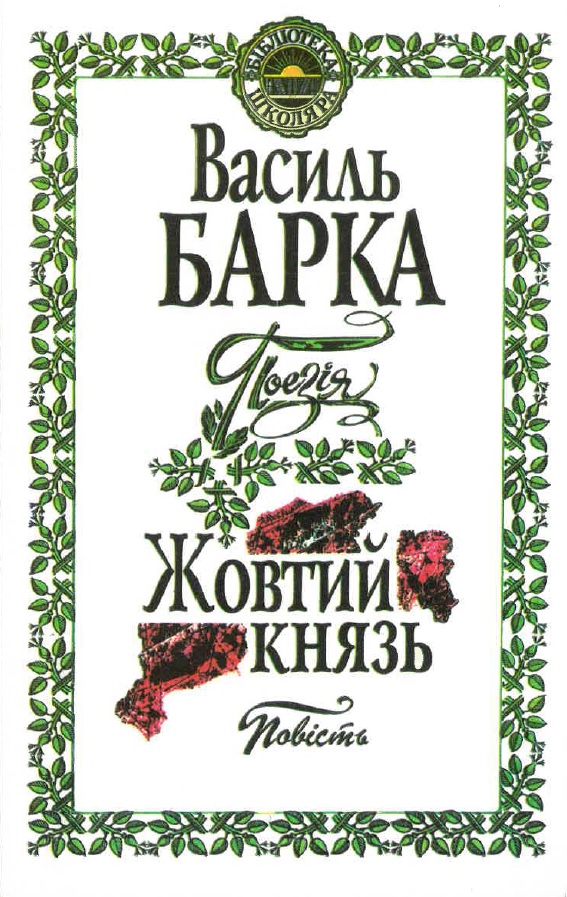 |
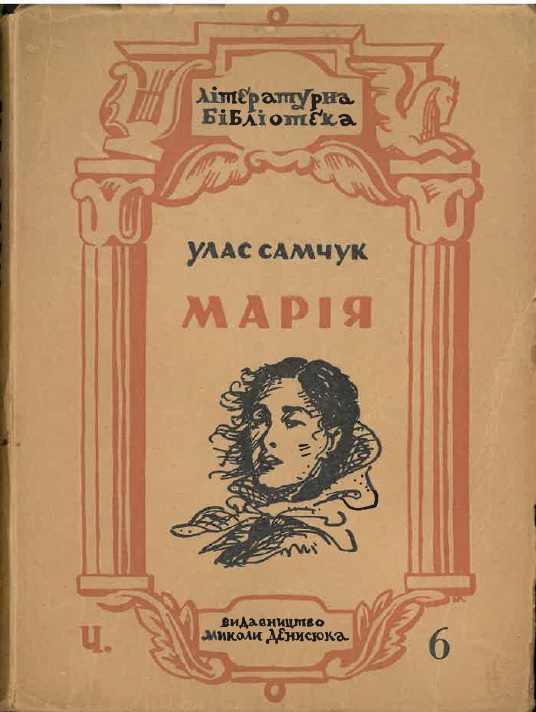 |
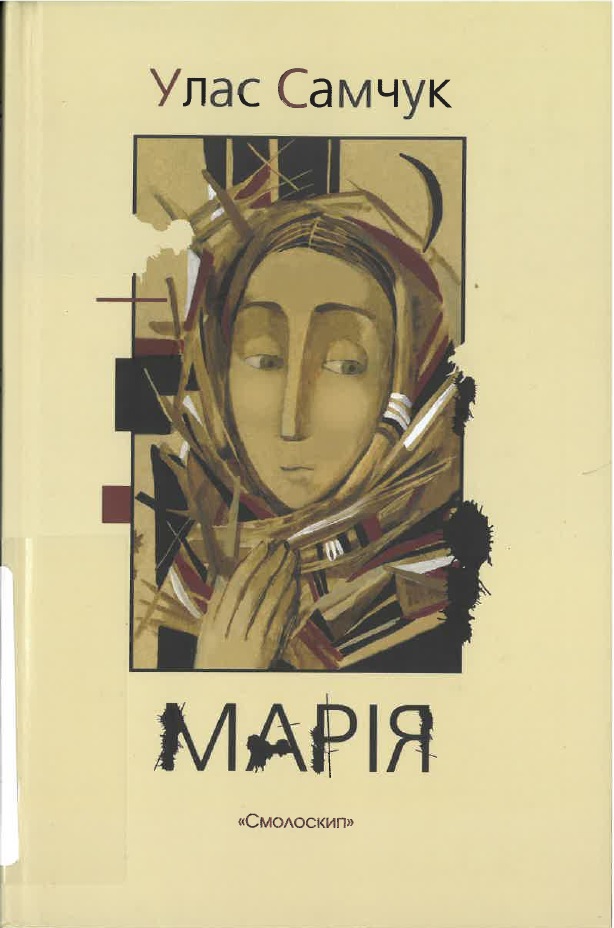 |
Barka and Samchuk’s novels are among the most famous Ukrainian literary works about the Holodomor. The 2001 edition of The yellow prince shown was published in the Schoolchild’s Library series, a sign of how the book had become core reading.
The Holodomor reader compiled and edited by Bohdan Klid and Alexander J. Motyl (Edmonton : Canadian Institute of Ukrainian Studies Press, 2012) The University Library and Modern and Medieval Languages and Linguistics Faculty Library continue to collect material about the Holodomor widely in Ukrainian, Russian, English, and more. A copy of this example is held in both libraries.
——————————————————————————-
Much more material about the Holodomor can be found by using the Library of Congress subject heading Ukraine — History — Famine, 1932-1933 in the catalogue (click here to see the results of a subject browse search, for example).
In Collections and Academic Liaison, we work with many donations of books which add significantly to the University Library’s collections. While they chiefly inspire research amongst readers, they sometimes also inspire holidays amongst librarians. Thanks to Professor Nigel Morgan’s collection of books about North Macedonian churches, I spent an extraordinary week in Ohrid this autumn.
Sveti Jovan Kaneo, overlooking Lake Ohrid.
Professor Morgan’s interest in church architecture and decoration and his generous donations to the UL have featured in an earlier blog post, and that post makes reference to the books he has given us which relate to the Balkans. Ohrid, a major centre of Christian learning and culture from the 9th century and later, under Ottoman rule, becoming a significant city for trade, provides particularly rich church heritage. The church of Sveti Sofia (St Sophia), for example, was transformed into a mosque under the Ottomans and its frescoes covered with plaster. Centuries later, the frescoes – dating as far back as the 11th century – were uncovered. The images below show Sveta Sofia, from the front and also the exonarthex (or outer vestibule) at its rear. Note that the brickwork above the upper gallery in the latter photo has writing incorporated into it.
Before the trip, a week in Ohrid seemed possibly too long, but in practice it barely felt like enough. Having started with a trip across Lake Ohrid to the Sveti Naum monastery, at the sight of whose frescoes the friend I travelled with said, “If we see nothing else in the whole week, this is worth the entire visit,” we found that each church brought yet more jaw-dropping beauty. Below are photos of just some of them: the Sveti Naum monastery main church, two small Ohrid churches across the street from one another (only one of which is ever open at a time; Professor Morgan had tipped me off that the warden of the open one could be asked to lock that and unlock the other), the Sveta Bogorodica Perivlepta church where the fresco sequences are amazingly full and beautiful, and a collection of tickets issued for each visit. One tiny church whose key-holder we managed to track down thanks to instructions (also shown below) on the door to the churchyard was too small to have a ticket… Also included below is one of the mosques in Ohrid; this is the beautiful 18th-century Emin Mahmud mosque.
Taking photos inside the churches was not permitted, so sample images of these need to come from Professor Morgan’s books. These come, with apologies for poor reproductions on my part, from Painting and architecture in Medieval Macedonia : artists and works of art / Sašo Korunovski, Elizabeta Dimitrova (S950.d.201.118) and The Monastery of Saint Naum of Ohrid / Stojan Saveski (S950.e.201.9), and Živopisot na Ohridskata arhiepiskopija : studii / Cvetan Grozdanov (Paintings of the Ohrid archbishopric; S950.b.200.4880). Note that one of the frescoes below (in, of course, an Orthodox church (Sveti Sofia)) shows Roman popes.
The dozens of books about North Macedonian churches donated by Professor Morgan can be found by executing this search in iDiscover.
Istoriia Sankt-Peterburga-Petrograda, 1703-1917 : putevoditelʹ po istochnikam (The history of St Petersburg/Petrograd, 1703-1917 : a guide to sources) is a remarkable piece of work, and our set has just been expanded with four new volumes. The level of detail displayed by the compilers is quite staggering, reflected in the detail of the volume enumeration: our new arrivals are volume 3, issues 5 and 6, each printed in two parts, i.e. 3/5/1, 3/5/2, 3/6/1, 3/6/2. They join 1/1, 1/2, 3/1, 3/2, 3/3, and 3/4. The mysterious volume 2 has yet to be published.
Volume 3, issue 6 (1856-1872), part 2 (1869-1872).
St Petersburg was the capital of Russia for most of its pre-Soviet history, from its foundation in 1703 by Peter the Great, through its renaming to the less German Petrograd following the start of World War 1, to the move of the capital in 1918 to Moscow. For researchers of the city and its history, this still-growing guide to relevant sources is an important holding. Volume 1, issue 1 covers historical sources, general works, reference and bibliographical materials. Volume 1, issue 2 covers published archive material and reference literature about archives. Volume 3, in its now 8 physical parts, covers published legislation. Its first issue started technically early, from 1702 while the overall set is from the city’s birth in 1703. The latest part to come (volume 3, issue 6, part 2) still only takes us up to 1872, leaving one can only wonder how many more parts to come to get us to the 1917 finishing line.
Volume 3, issue 6, part 1 contains 2940 entries (the last is on the rules passed by the Minister of Internal Affairs to the governor of the St Petersburg prison newly opened in 1868), while volume 3, issue 6, part 2 contains a relatively modest 889 entries but is otherwise – and largely – given over to indexes. For these two physical volumes alone, the indexes run to over 400 pages. First we are given a personal name index. As the sample page shown here demonstrates to those with a reading knowledge of Cyrillic shows, the names reflect the diversity of the city. Amongst more standard Russian names (Mel’nikov, Mironov, etc) are many with more Western roots – Meĭsner (Meissner), Miller, Morgan. Some of the individuals with Western surnames are described as citizens of other countries, but many are not and are likely instead to be the children or grandchildren of earlier arrivals to Russia.
The name index is followed by an amazingly detailed and quite diverting subject index, as suggested by the example used in this post’s title. Other examples which caught my eye included: Vice-presidents of the Medico-Surgical Academy–Pensions; Vodka, French; ‘Journey from S.-Peterburg to Moscow’ by Radishchev, A.N.–Ban; Crimean salt–Import by sea; Flautists of the Mikhailovskoe Artillery Academy–Ration allowance. Next comes a “category-hierarchy index”, which presents subject index entries in, as it says, a more hierarchical fashion (the French vodka and Crimean salt, for example, feature here within a wider Trade section).
I should of course also mention here the main entries themselves. Here are some from volume 3, issue 5, part 1, which cover May 1829 and include subjects as diverse as Old Believers, the export of “bread wine” (vodka), the introduction of foreign language teaching in a Kronshtadt school, and provision for the widows and children of deceased members of the Academy of Sciences. Each entry gives full details of the relevant source, often using abbreviations listed at the beginning of the physical volume.
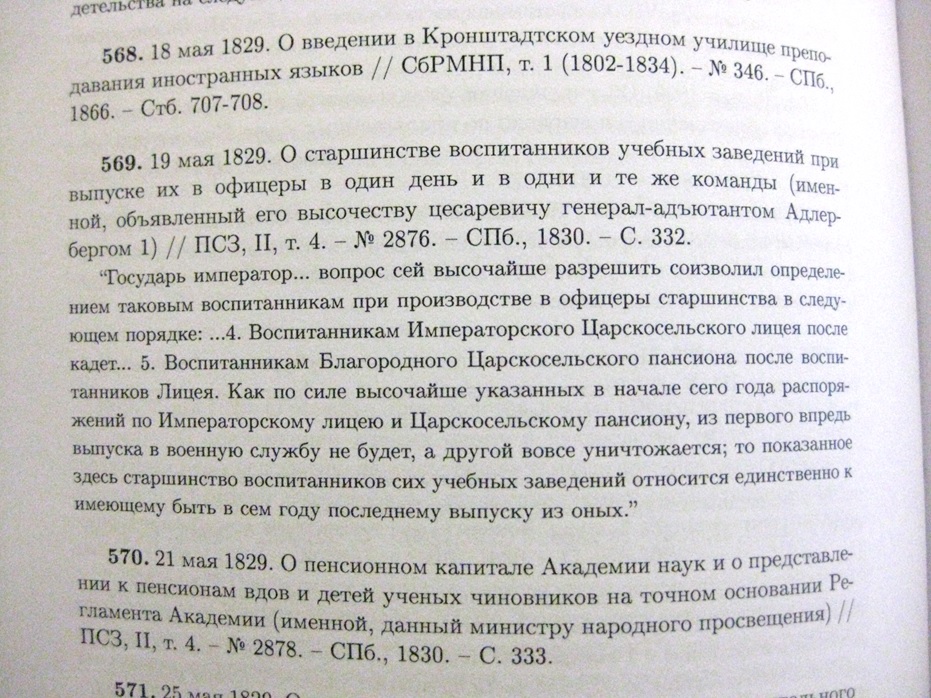 |
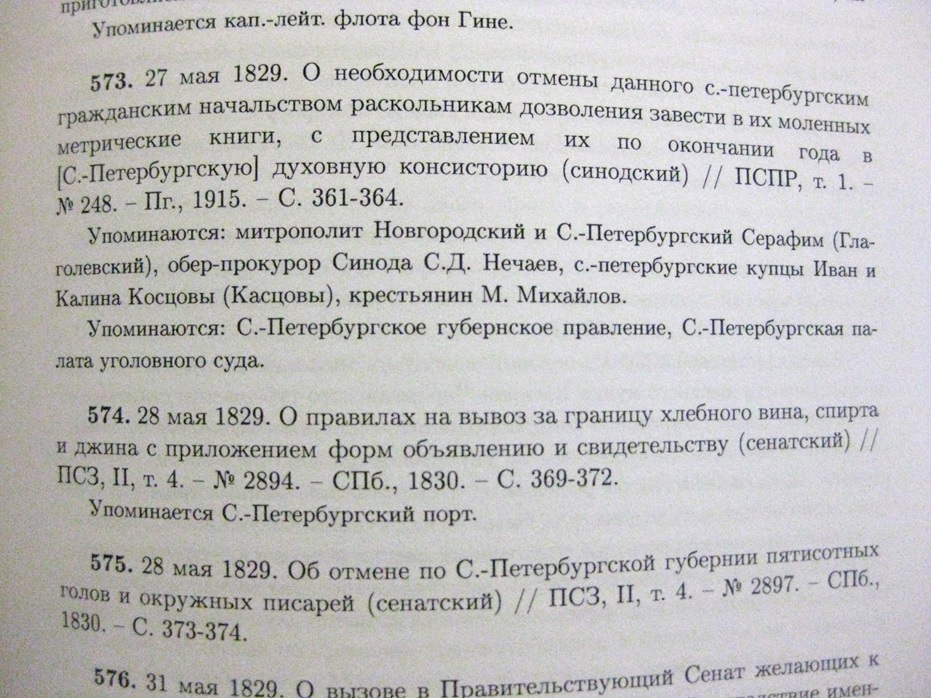 |
The set stands at 588:35.b.200.1-2,7-12a, although the four new additions will make their way there only over the next week, via our labellers.
Each August for the last couple of years, we’ve drawn attention to recently received Ukrainian books. Amongst this year’s titles is a wonderfully and mind-bogglingly detailed list of biographical details gleaned, chiefly from obituaries, from a newspaper printed in the city of Lemberg/Lwów/Lʹviv from 1880 to 1939. Four sizeable volumes in, we have only reached 1904.
First, however, here are six new titles which span tragedy and light-heartedness, academic and light reading.
- Bilym po bilomu : z︠h︡inky u hromadsʹkomu z︠h︡ytti Ukraïny, 1884-1939
- an expanded Ukrainian edition of Martha Bohachevsky-Chomiak’s work on women in Ukraine first published in English
- Slidy na dorozi / Valeriĭ Ananʹi︠e︡v
- one of two works of fiction here based on the authors’ experiences fighting in East Ukraine
- Karateli / Vlad I︠A︡kushev
- the second book here about the war in Ukraine
- Inshomovna istorii︠a︡ ukraïnt︠s︡iv : 2300 zapozychenykh realiĭ antychnosti ĭ serednʹovichchi︠a︡ u movi, toponimakh i prizvyshchakh
- a dictionary of foreign words in the Ukrainian language and their connection to Ukrainian history, by Kosti︠a︡tyn Tyshchenko
- Unikalʹnyĭ kvytok do Lʹvova : virshi ironichni, satyrychni, komichni, lirychni, a takozh prydybashky, bali︢a︡ndrasy, slovokrutky, prysikanky ta chysta pravda
- a collection of comic verse by Babai (pen name of Bohdan Nyz︠h︡ankivsʹkyĭ (1909-1986))
- #NASHI na karti svitu : istoriï pro li︠u︡deĭ, i︠a︡kymy zakhopli︠u︡i︠e︡tʹsi︠a︡ svit
- an easy-read exploration by Ulʹi︠a︡na Skyt︠s︡ʹka of Ukrainians and those with Ukrainian roots who have had a global impact (a rather good book for those learning Ukrainian!)
Among the group of recent arrivals I pulled out for this post was also some church-related material:
- D-r Kazymyr hraf Sheptyt︠s︡ʹkyĭ–otet︠s︡ʹ Klymentiĭ : polʹsʹkyĭ arystokrat, ukraïnsʹkyĭ ii︠e︡romonakh, ekzarkh Rosiï ta Sybiru, arkhymandryt Studytiv, pravednyk narodiv svitu, blaz︠h︡ennyĭ Katolyt︠s︡ʹkoï T︠S︡erkvy : 1869-1951, biohrafii︠a︡
- a biography of Klymentiĭ Sheptyt︠s︡ʹkyĭ, a Ukrainian Catholic saint who was a Righteous Gentile in World War 2, by Ivan Matkovsʹkyĭ
- Vasylii︠a︡nsʹka Svi︠a︡to-Onufriïvsʹka obytelʹ u Lʹvovi : 500 rokiv istoriï
- a history of the Basilian St. Onuphrius church in L’viv
- Zalyshyvsi︠a︡ tym, kym buv : Kyr Iosyf Slipyĭ : zbirnyk dokumentiv
- a book about and containing works by the Ukrainian Catholic bishop Ĭosyf Slipyĭ
And finally, the set mentioned at the beginning. The newspaper Діло (Dilo) was first produced in 1880. Published initially less frequently, it soon became a daily newspaper, and was the first and most important Ukrainian-language paper in Galicia. During its publication, from 1880 to 1939, the newspaper’s home changed hands and names. Initially, it was Lemberg, the capital of Austro-Hungarian Galicia. Following the First World War, it became part of Poland and was called Lwów. The final issue of the newspaper came out on the 15th of September 1939, in the middle of the Battle of Lwów; shortly after the city would formally take the Ukrainian name of L’viv. The city and region had had a significant Ukrainian population throughout Dilo‘s existence and, as the English summary from volume 2 (see illustration) explains, the newspaper provides a remarkable insight into the lives and make-up of this population.
Each volume provides information for a certain span of years and is divided into two main parts – death notices and bio-bibliographical publications. The latter part captures data about an individual as mentioned in the newspaper, providing quotations/summaries and the section of the paper the mention came in (chiefly Novynky (News)). For a major figure such as the writer Ivan Franko, the list in each volume is long and provides biographical news as well as a list of his written contributions to Dilo. It is, however, the capturing of death and bio-bibliographical information for all individuals whose names appeared in the paper that makes the set such an interesting and important source. Each volume ends with an index for personal names and also one for geographical names.
The first four volumes, of which the latest is the recent arrival, will stand at C215.c.6364-6367. Seven more spaces have been saved for the remainder of the set, assuming a pattern of one volume for each 5 years up until 1939, and we shall have to see whether those spaces are sufficient in the end.
The set so far
Recommendations for new Ukrainian titles are always welcome – please do send them in to slavonic@lib.cam.ac.uk
Last week, I decided to tackle a set about major exhibitions and exhibition spaces in Moscow which had been in the Slavonic cataloguing backlog for some time. How hard a cataloguing challenge could it be? 4 volumes, 6 accompanying discs, 3 accompanying sheets, and 1 accompanying commemorative coin later, I can confirm that the answer was – very.
The coin, front and back.
Cambridge’s copy of VSKhV–VDNKh–VVT︠S︡ is, according to Library Hub (the very new replacement for COPAC), the only one held in the country, which is unsurprising given that it was published in a small run not for general sale. The set was produced to celebrate the 70th anniversary of Moscow’s extraordinary exhibition complex, 2009, although the UL was only able to obtain a copy years later.
After several delays in the 1930s, the enormous VSKhV (Vsesoi︠u︡znai︠a︡ selʹskokhozi︠a︡ĭstvennai︠a︡ vystavka = The All-Union Agricultural Exhibition) was opened in 1939. The vast complex provided visitors with a mixture of permanent exhibition pavilions devoted to the promotion of Soviet production with a pleasure park. The complex was significantly expanded, with dozens more pavilions added, after the Second World War, and in 1959 it was renamed VDNKh (Vystavka dostizheniĭ narodnogo khozi︠a︡ĭstva SSSR = The Exhibition of Achievements of the Soviet National Economy).
The next name change came in 1992, when VDNKh (pronounced “Veh-Deh-En-Kha”) was re-styled VVT︠S︡ (Vserossiĭskiĭ vystavochnyĭ t︠s︡entr = The All-Russian Exhibition Centre). This was its name in 2009, when the set newly added to the catalogue was produced, but 2014 saw the name change once more and the complex was once again officially called VDNKh (unofficially, this had remained its popular name). Post-Soviet changes included the restoration of the famous Rabochii i kolkhoznitsa (Worker and kolkhoz woman) statue designed by Vera Mukhina. The enormous status, with the two figures holding their hammer and sickle together, was first displayed in Paris at the 1937 World Fair, where it stood on top of the Soviet pavilion, opposite the pavilion of Nazi Germany, with the Eiffel Tower as backdrop (image here). It then moved to Moscow, to the exhibition complex, but gradually fell into a state of disrepair. It now stands on a new structure which copies the World Fair pavilion.
The complex is a remarkable place and one which every Moscow tourist should aim to visit (to my shame, I have inexplicably failed to visit it so far myself). To give some idea of what it has to offer, here is a link to a map on its English-language site.
While the efforts to build the complex were clearly gargantuan, the efforts to catalogue the 2009 commemorative set have also felt exhausting. We often deal with “accompanying material”; many books come with loose inserted maps, for example, which go to the Maps Department, and some come with accompanying discs, which go to the general microform collection or to the Music Department (the latter if they are purely audio discs). This set, however, really outdid itself. Each volume had a disc embedded in its front cover, of which 3 were CD-ROMs and 1 a CD. Volumes 1-3 also each came with an accompanying loose sheet of paper (all facsimiles of major documents). Volume 4, called Media, came with 2 further discs (1 DVD and 1 CD) – and a commemorative coin. The Maps Department have kindly agreed to house the coin.
As the set’s record on iDiscover probably shows quite adequately, the wide array of contents presented the cataloguer with a wide array of various titles. Each volume had a title. Each of the 6 discs had a title and a variant title. The coin had a title, of sorts. Add to this the fact that we standardly add Cyrillic variants for the main fields (and I have been very selective here), and the final result is a very, very long record.
 |
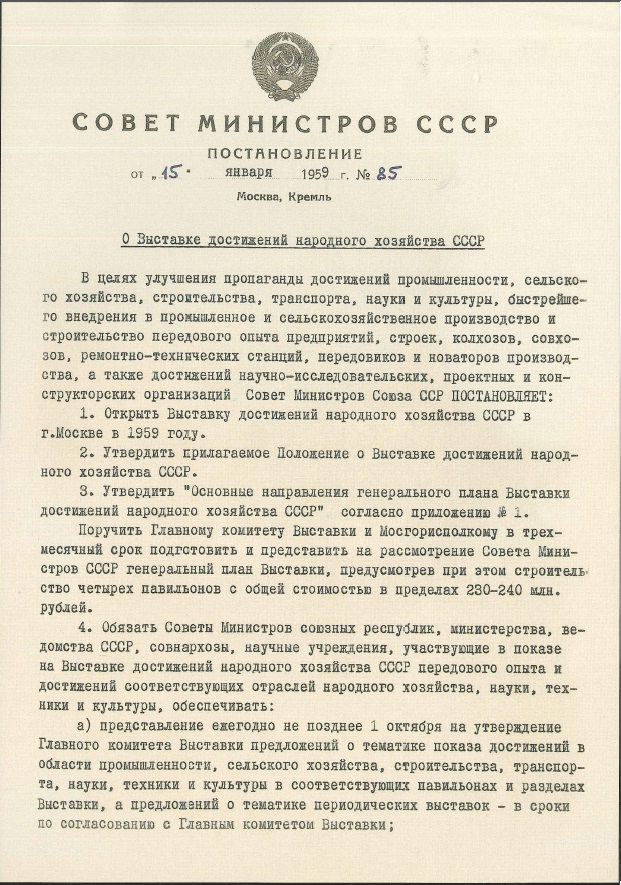 |
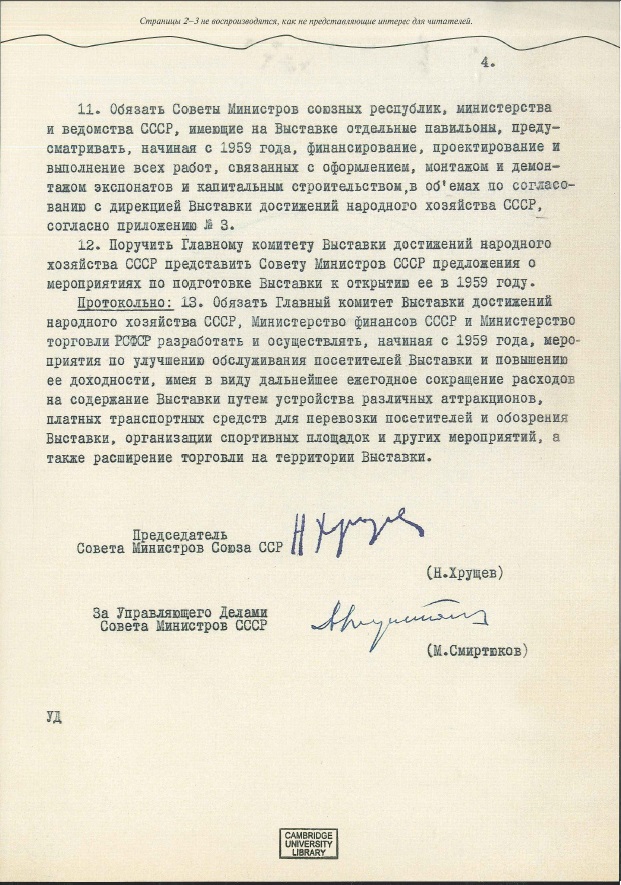 |
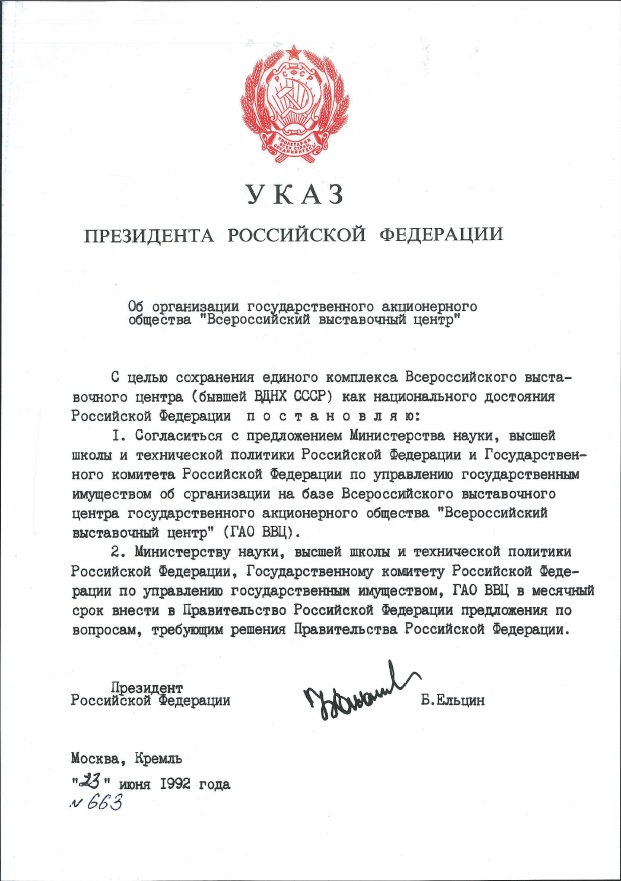 |
The set is, of course, still a fine addition to our collections. While it is not an academic publication (and I should really add further subject headings to reflect its heavily pictorial content; there is still some final polishing of the record to do), it provides readers with an eye-catching insight, in Russian and English, into the site’s development over time. Its forewords come from Putin, then in his inter-presidential terms prime minister period, and Iurii Luzhkov (then-mayor of Moscow; he was fired by President Medvedev the following year).
The 80th anniversary of the opening of the complex falls tomorrow, 1 August 2019, and we will be looking out for further publications which mark this latest milestone.
In early 2016, a few months after the destruction of much of Palmyra, our former colleague Josh (now at UC Irvine) wrote about Palmyra and Henri Seyrig. A new arrival, unpacked this week and purchased at the request of a researcher in the Archaeology department, is a good reminder of the Polish contribution to Palmyra research.
The requested book, Palmyra by Michał Gawlikowski, was written in 2010. It is only 131 pages long and well illustrated and provides a general introduction (in Polish) to what was then still a well-maintained site of great importance. The book starts with a history of Polish involvement in the site, dating back to 1959 when Kazimierz Michałowski, the founder and head of the Polish Centre of Mediterranean Archaeology, set up an archaeological team there. The Polish team at Palmyra was later led by Gawlikowski, from 1973, and suspended with the beginning of the Syrian civil war in 2011. Palmyra ends with a bibliography, with many entries for Michałowski and Gawlikowski; some of those by the latter were co-written with Khaled al-Asaad, once chief archaeologist of Palmyra, who would be murdered by ISIS in 2015.
The UL holds many books about Palmyra, including those listed below by Gawlikowski.
Monuments funéraires de Palmyre (1970; 849.c.99.9)
Le temple palmyrénien : étude d’épigraphie et de topographie historique (S524:01.b.1.6)
Les ‘principia’ de Dioclétien: ‘Temple des Enseignes’ / Michał Gawlikowski ; avec une contribution de Maria Krogulska (1984; S524:01.b.1.8)
Palmyre / J. Starcky, M. Gawlikowski (1985; 517:4.c.95.31)
Do note that a general search in iDiscover for ‘Palmyra’ is not a reliable route for finding all relevant material. The Library of Congress subject heading for the site uses the name of Tadmur (Palmyra was the Roman name). A search for ‘Tadmur (Syria)–Antiquities’, for example, comes up with several score results.
The list of Gawlikowski Palmyra titles above shows that many Polish archaeological titles are published in West European languages. Looking more specifically at what we buy in Polish, most frequently the archaeological books we buy in the language are about work in Poland itself (e.g., Ostrów Lednicki about excavations on Lednicki Island in the central west part of Poland; C202.b.3012) or about the history of neighbouring countries (e.g., Forty i posterunki rzymskie w Scytii i Taurydzie w okresie pryncypatu by Radosław Karasiewicz-Szczypiorski on Roman fortification in Crimea; C202.b.1291).
The strength of Polish archaeology further afield, though, means that titles available only in Polish about sites outside Eastern Europe can still be important acquisitions for the Library. Reader recommendations to help us select which titles to buy are always welcome.
For readers of Polish, 50 lat polskich wykopalisk w Egipcie i na Bliskim Wschodzie (50 years of Polish excavations in Egypt and the Near East) (1986, S512.b.98.69) provides an interesting if now rather dated introduction to the contribution of Polish archaeologists to uncovering and interpreting some of the most important sites in the world. Palmyra is the subject of one chapter, written by Michał Gawlikowski and featuring photos of Kazimierz Michałowski’s own work at the site.
Earlier this week, Vera Tsareva-Brauner gave a talk at the University Library about Ivan Bunin and other Russian émigré literary figures, and this blog post looks at a couple of recent arrivals to the UL about the émigré Russian world.
The Russian Revolutions of 1917 and the ensuing Civil War saw the departure from Russia of many hundreds of thousands of people, many significant intellectual figures among them. The Revolution-related exodus is commonly named the First (or White) Wave. The Second Wave followed World War 2 and the Third Wave took place in the later decades of the Soviet period.
In 1995, the Dom russkogo zarubezhʹia imeni Aleksandra Solzhenitsyna (the Alexander Solzhenitsyn House of Russia Abroad) opened in Moscow. One of the House’s activities is the publication of various research titles and source material about the various Soviet emigration waves. An advanced search in iDiscover for the keywords Dom russkogo zarubezhʹia Solzhenitsyna in the publisher field brings up, at the time of writing, 14 results. Among these, the newest arrival is 1917 god v istorii i sudʹbe rossiĭskogo zarubezhʹi︠a︡ (1917 in the history and fate of Russian émigrés; C215.c.2825), a set of papers from a conference held in 2017. The book’s cover, featuring a detail from Konstantin Iuon’s stunning Novaia planeta painting (which also provided the cover image for the Royal Academy’s Revolution exhibition catalogue), is shown here. The conference papers are divided into three sections:
- 1916 and Russian émigrés : politics, ideology, culture : historical significance and everyday practices
- The intellectual contribution of Russian émigrés to cultural progress (“развитие цивилизационного процесса”)
- The genealogy of memory : family histories, museums, archives, cemeteries of Russian émigrés
Many of the First Wave émigrés wrote accounts of their lives in Russia and abroad, and another recent arrival from another publisher is the 2-volume set of memoirs of Emmanuil Bennigsen (C215.c.2826-2827). Bennigsen held various political positions in Imperial Russia and was closely involved in humanitarian efforts to help Russian soldiers and prisoners of war in World War 1. He fought in the White Army during the Civil War and then emigrated to France for some years before finally settling in Brazil. The memoirs are divided into the separate volumes by the fateful year of 1917.
How might one find similar memoirs in the catalogue? Where a significant emphasis is on the émigré aspect of someone’s life, cataloguers would often add a subject heading along the lines of: Russians–Foreign countries–Biography. (This will appear in the Bennigsen record when the overnight update of iDiscover replaces the poor current record with our improved version.) The Foreign countries section can be replaced by a more specific place name (eg France) where appropriate.
Often the emphasis of the autobiography is on the person’s experience of the October Revolution or Civil War, in which case a heading like Soviet Union–History–Revolution, 1917-1921–Personal narratives, Russian would be used. For non-biographical books, the same subject headings should be applied but without the Biography and Personal narratives subdivisions.
Back to top of the page.
A recent Russian arrival to the University Library takes as its subject tourism in the Soviet Union. Skvoz “zheleznyi zanaves” : See USSR! : inostrannye turisty i prizrak potemkinskikh derevenʹ (Through the Iron Curtain : See USSR! : foreign tourists and the spectre of Potemkin villages; C215.c.1563) is by Igor’ Orlov and Aleksei Popov. Visitors to the Soviet Union normally saw the country in carefully choreographed tours arranged by the state agency Intourist. Such control made sure that the tourists saw strictly what they were meant to see, hence the mention in the book’s titles of Potemkin villages – shorthand for ensuring that appearances support the desired narrative (the term comes from Catherine the Great’s favourite, Potemkin, pulling the wool over her eyes by assembling fake village fronts during a tour).
The Orlov/Popov book joins a growing body of recent books about Soviet tourism. The main subject headings for such books are below, linked to results for the terms in iDiscover.
Looking further back in the UL’s holdings and looking more for material from the time rather than about it, we have the archive of Kent trade union official Herbert Clinch’s 1935 trip to the Soviet Union, which was detailed in an earlier blog post. From the following year, and from the Catherine Cooke collection, we have an Intourist brochure for UK tourists (CCC.54.413). The brochure’s front and back covers and its central pages are shown below.
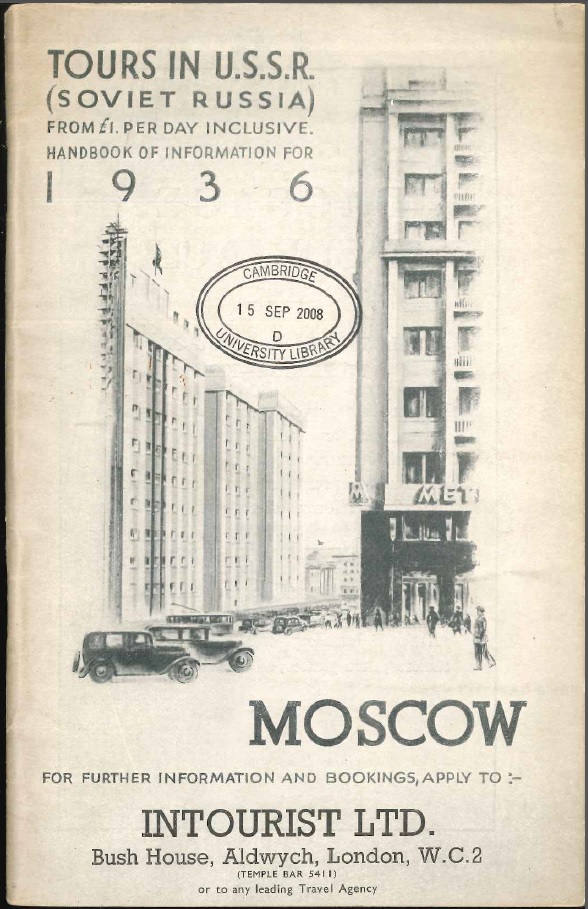 |
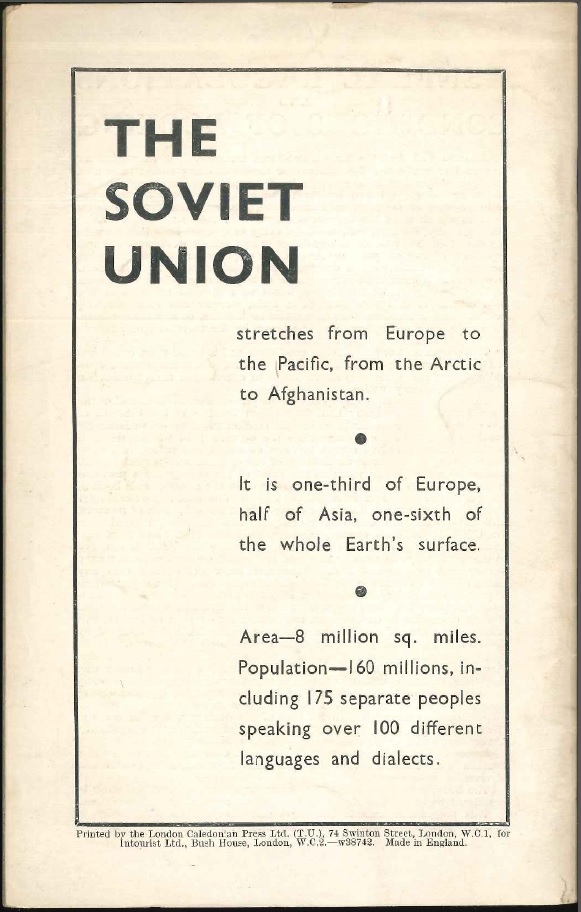 |
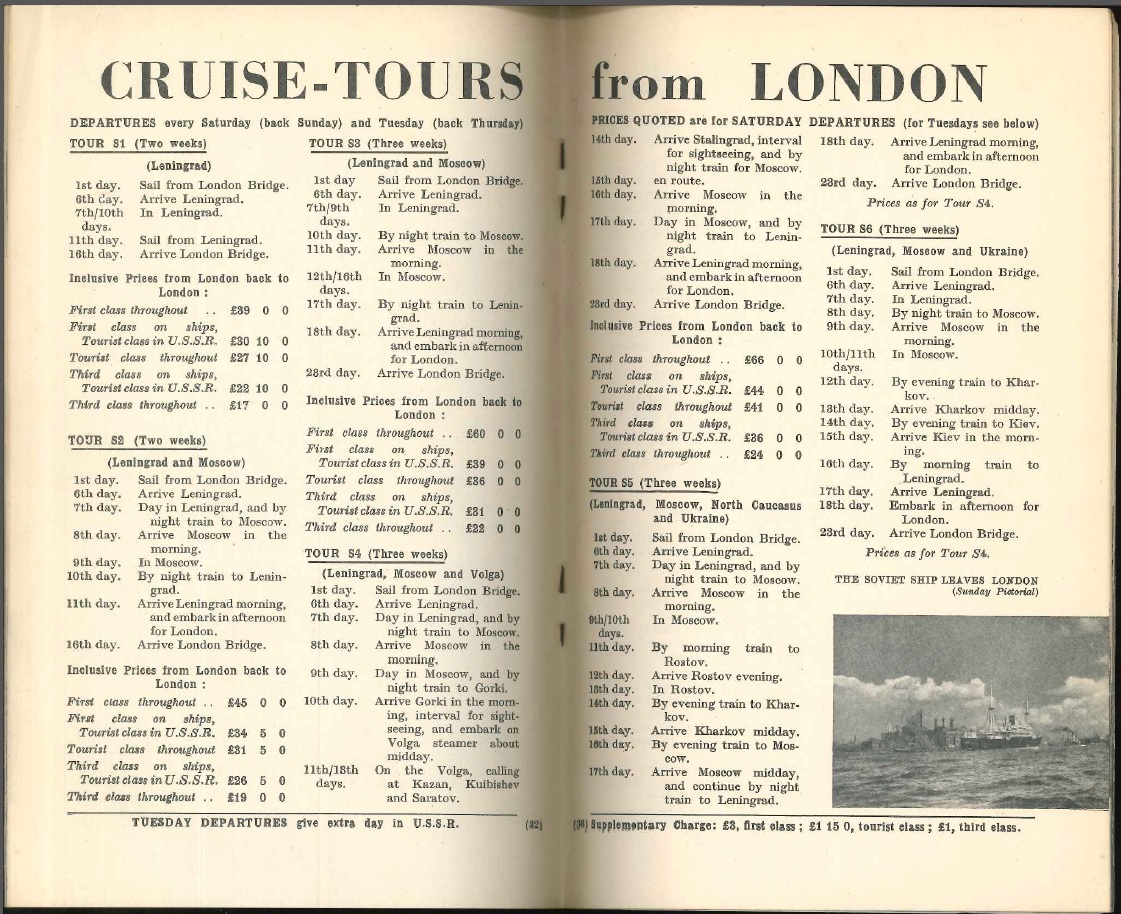 |
From 1966, we have another Intourist brochure, this time inviting the British to visit the Soviet Union in the year of the 50th anniversary of the October Revolution (2015.9.104). A specific package tour for the anniversary year (the second and third images below, following the front cover) would take in the main sights of Moscow and Leningrad. The remaining images show part of the brochure’s section dedicated to the arts, a general costs list (including services for businessmen and the hire of cars with a driver), and a map of the motor routes available by this stage to tourists driving themselves (advice from the car camping tour page (not shown): “NO NIGHT TRAVEL BY ROAD”).
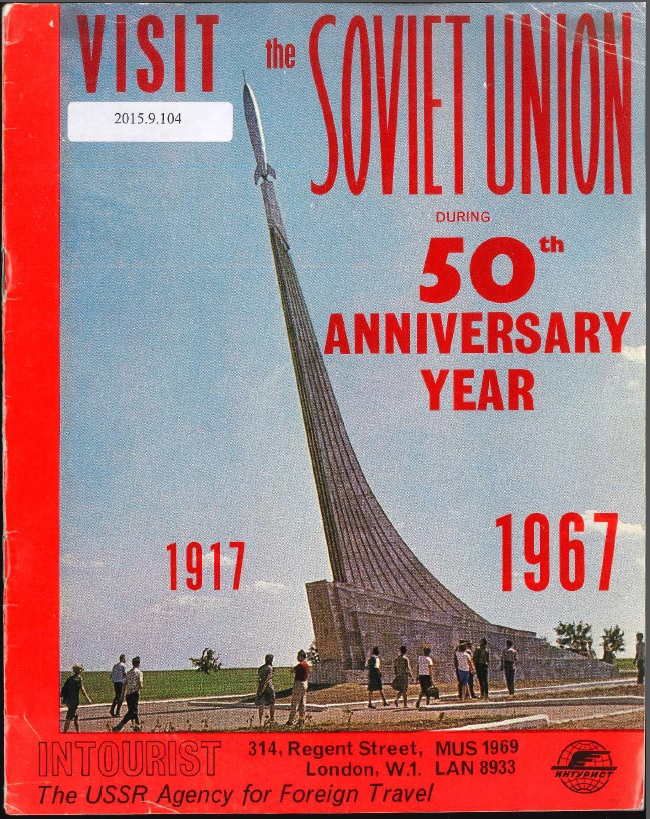 |
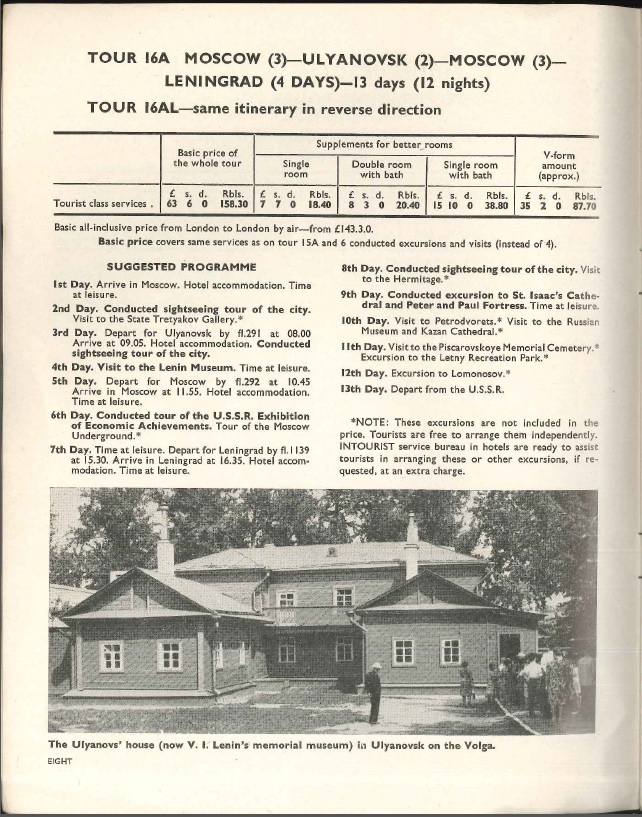 |
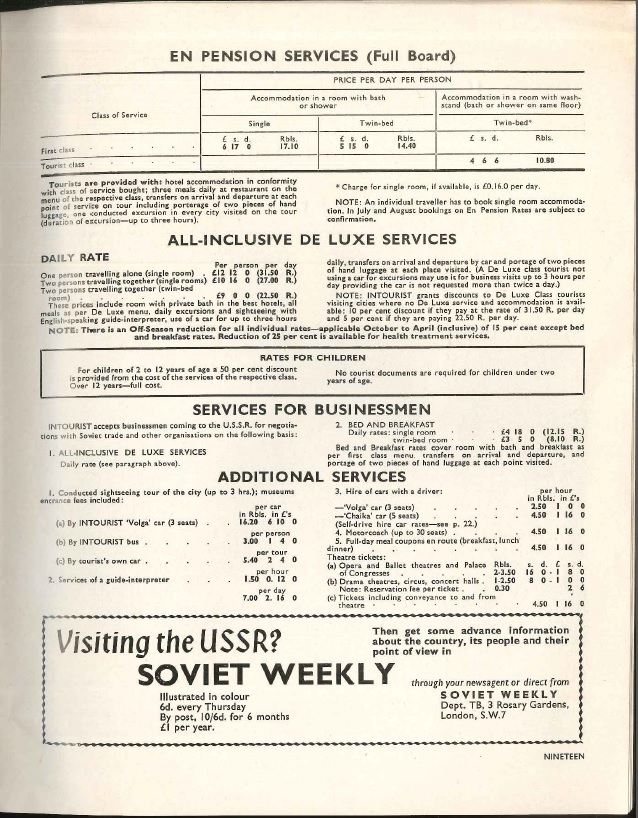 |
 |
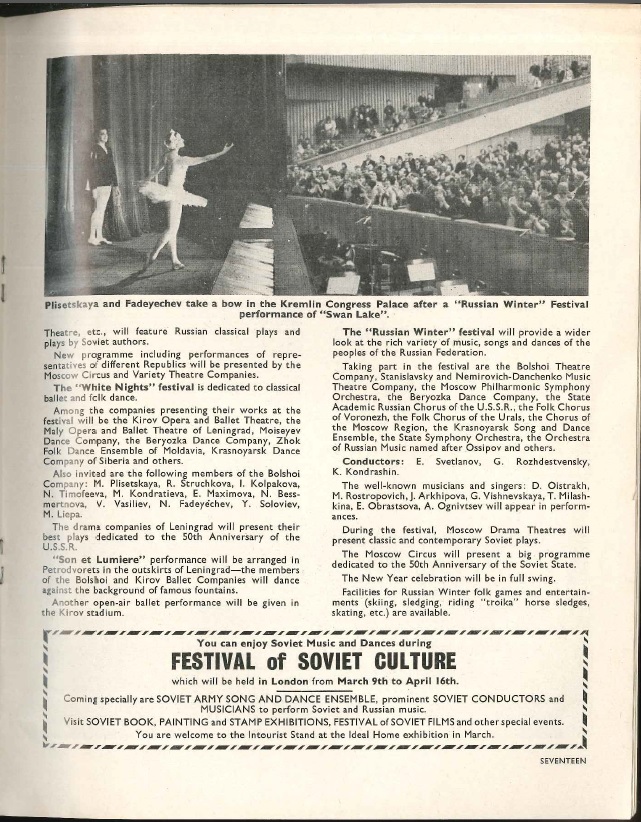 |
 |
Orlov and Popov’s Soviet tourism book is their second on the subject. Their first, Skvoz “zheleznyĭ zanaves” : Russo turisto : sovetskiĭ vyezdnoĭ turizm, 1955-1991, looks at Soviet tourists travelling abroad, and will shortly be on order.
Back to top of the page.
As I write and you read the 72nd Slavonic item of the month piece, it can seem that some things will never end. This post, however, looks at the satisfying task of bibliographic closure, with several Slavonic book sets recently completed following the receipt of their final volumes.
Letopisʹ zhizni i tvorchestva N.V. Gogoli︠a︡ (Chronicle of the life and work of N.V. Gogol’) came out over the course of 2017-2018 in 7 volumes. Detailed life chronicles of major figures have always been quite major business in East European publishing, and this lengthy record is a good addition to our literary collections. It is also an eye-catching addition, as the photos show; the cover colour of each volume is even reflected internally in the ink.
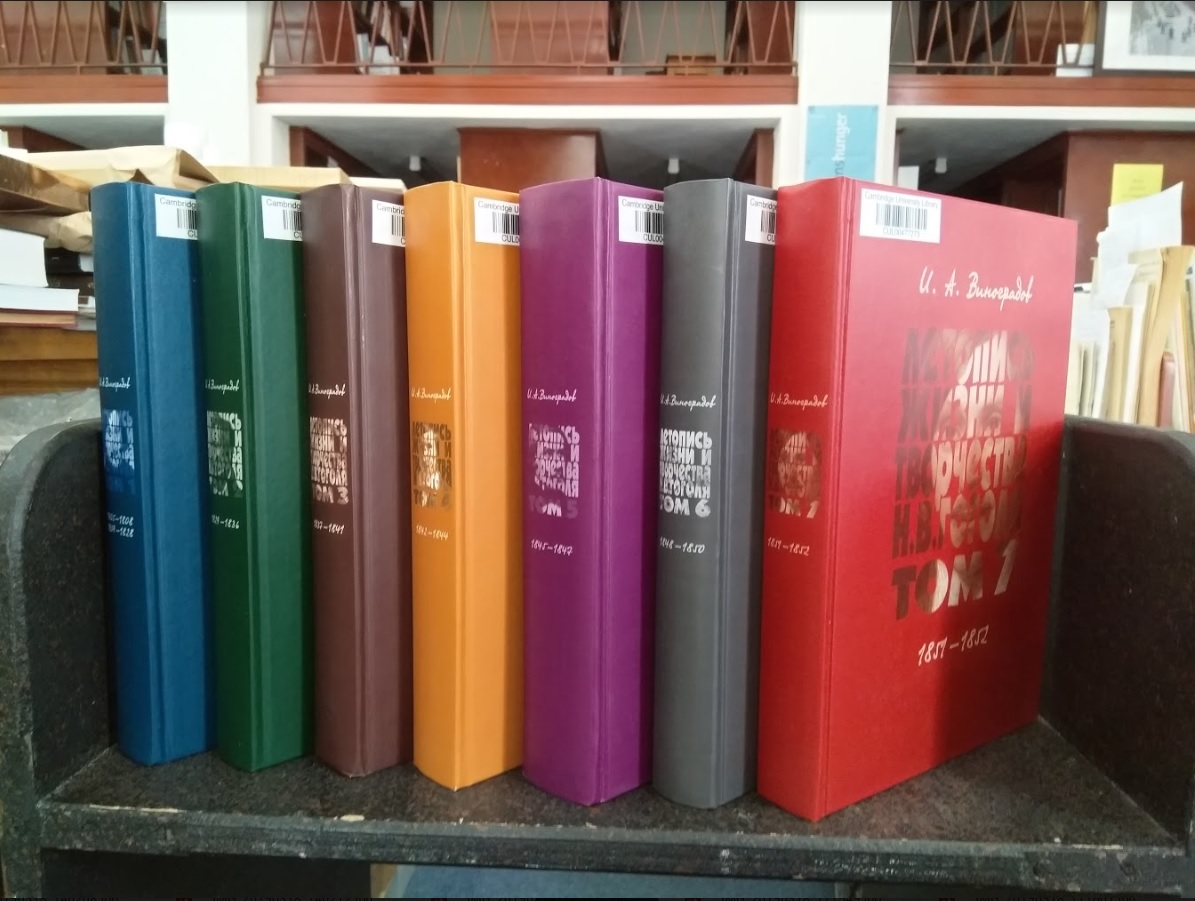 |
 |
Another recently completed set is also the chronicle of a literary figure – this time, the poet Sergei Esenin (756:37.c.200.56-60a). The final volume, v. 5(2), covers the period from 24 December 1925 to mid-1926. Esenin was found dead on 28 December, a victim of suicide (although theories of murder are still debated). The volume tracks public and private reactions to the poet’s death. Appropriately enough for this post, the concluding entry marks the completion of the final volume of the posthumous publication of Esenin’s collected works in June 1926.
A set published from 2013 to 2019 of the works of the late Moscow conceptualist Dmitrii Prigov now stands at 756:38.c.201.1(1-5) although the five books have been catalogued individually (records here). The final volume, Mysli (Thoughts), contains examples of Prigov’s stikhogrammy – versegrams. The main message (Ин вино веритас (In vino veritas)) is gradually interrupted by the question А В ПИВЕ ЧТО? (AND WHAT IS IN BEER?). The stikhogramma is shown below, beside the cover of this final volume.
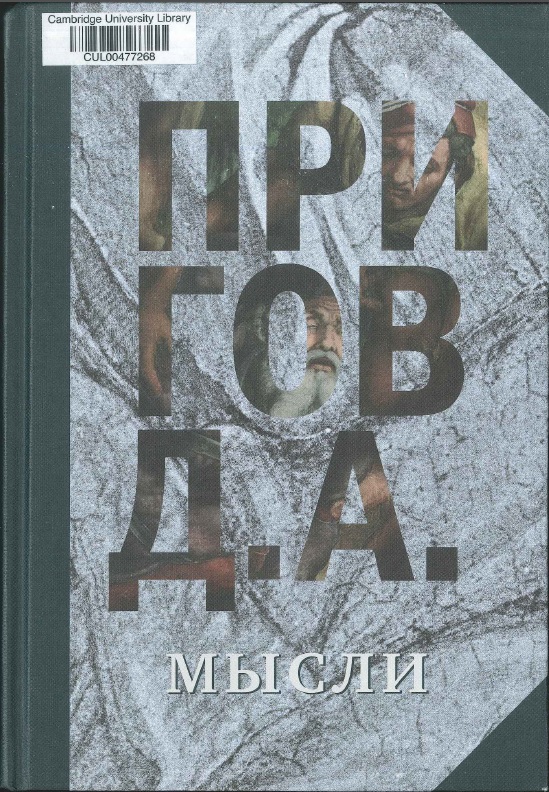 |
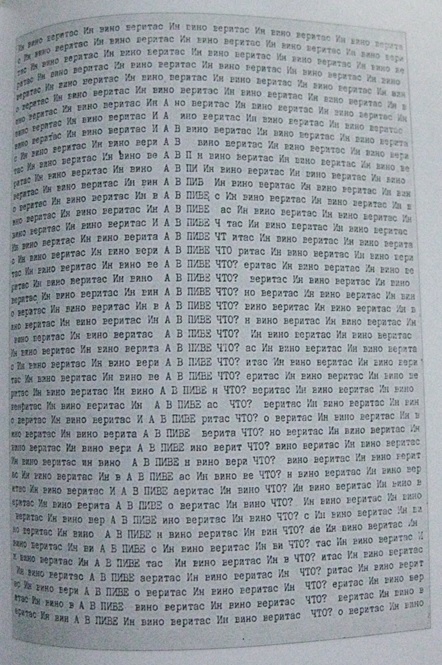 |
To end with a non-literary example, the Novaia rossiiskaia entsiklopediia (New Russian encyclopaedia (a general encyclopaedia, not focused solely on Russia)) recently saw its final volume published, to the slight surprise of librarians. The first volume came out in 2003 and bore the subtitle “in 12 volumes”. As occasionally happens with such publications, the subtitle’s accuracy wore off with time and it was eventually dropped. The final volume (v. 19(2)) completes the eventual 36-volume set. Its expansion was so significant that we ended up having to put it into two different classmark spans.
The final volume is chiefly made up of additions to the preceding volumes. Some of these are unsurprising (flėshmob (flashmob), for example, is a relatively new term) and Donal’d Dzhon Tramp (pictured) is a recent addition to the world stage. Others are rather surprising for not having been included before: Prigov’s close friend and fellow conceptualist Lev Rubinshtein, Oscar-winner Dzheremi Airons (Jeremy Irons), the authors Govard Filips Lavkraft (H.P. Lovecraft) and Stephen King, and, most curiously of all, the avant-garde.
The Slavonic item of the month feature started in April 2013. The first ever piece marked the 200th anniversary of the death of Field Marshal Kutuzov. The Newton catalogue link in it no longer works, so here is the iDiscover link.
Back to top of the page.
The centenary this month of the start of the Soviet-Polish war of 1919-1920 provides good grounds for a post about the University Library’s Polish history holdings.
Recent arrivals
On the Library’s open shelves, Polish history is to be found chiefly in the dedicated 590 class, whose subdivisions are shown in the screenshot below. Many books are also to be found in the relevant subsections of the World War 2 class (e.g., 539:1.x.60 for Polish war-time political history, 539:1.x.745 for conditions of life in Poland during the war, and so on) and others (particularly the 514:64 and 514:72 classes for East European and European Jewish history respectively). New Polish history arrivals nowadays are more often than not sent to the closed but borrowable class of C200.
We buy broadly across periods, but it is the 20th century which is the primary focus of our acquisitions; this focus also reflects the trend of current publishing. A couple of recently received with an older focus are:
– Pod rządami nieobecnego monarchy : Królestwo Polskie 1370-1382 (Reigned over by an absentee monarch : the Kingdom of Poland 1370-1382; C214.c.9370) by Andrzej Marzec (2017)
– Kronika polska (Polish chronicle; S950.b.201.5337), a 2017 facsimile reprint of the 1597 edition of Marcin Bielski’s chronicle of the history of Poland.
The centenary last year of Polish independence, marking the declaration of the Second Polish Republic in November 1918, prompted a slew of books on the republic, its formation, and its early years, including the title below.
– Polska niepodległość 1918 (Polish independence 1918; C214.c.8946) by Marek Rezler (Poznań, 2018). The book includes maps showing the significant shift of Polish territory between 1918 and 1920, shown below.
| November 1918 | 1920 |
|---|---|
 |
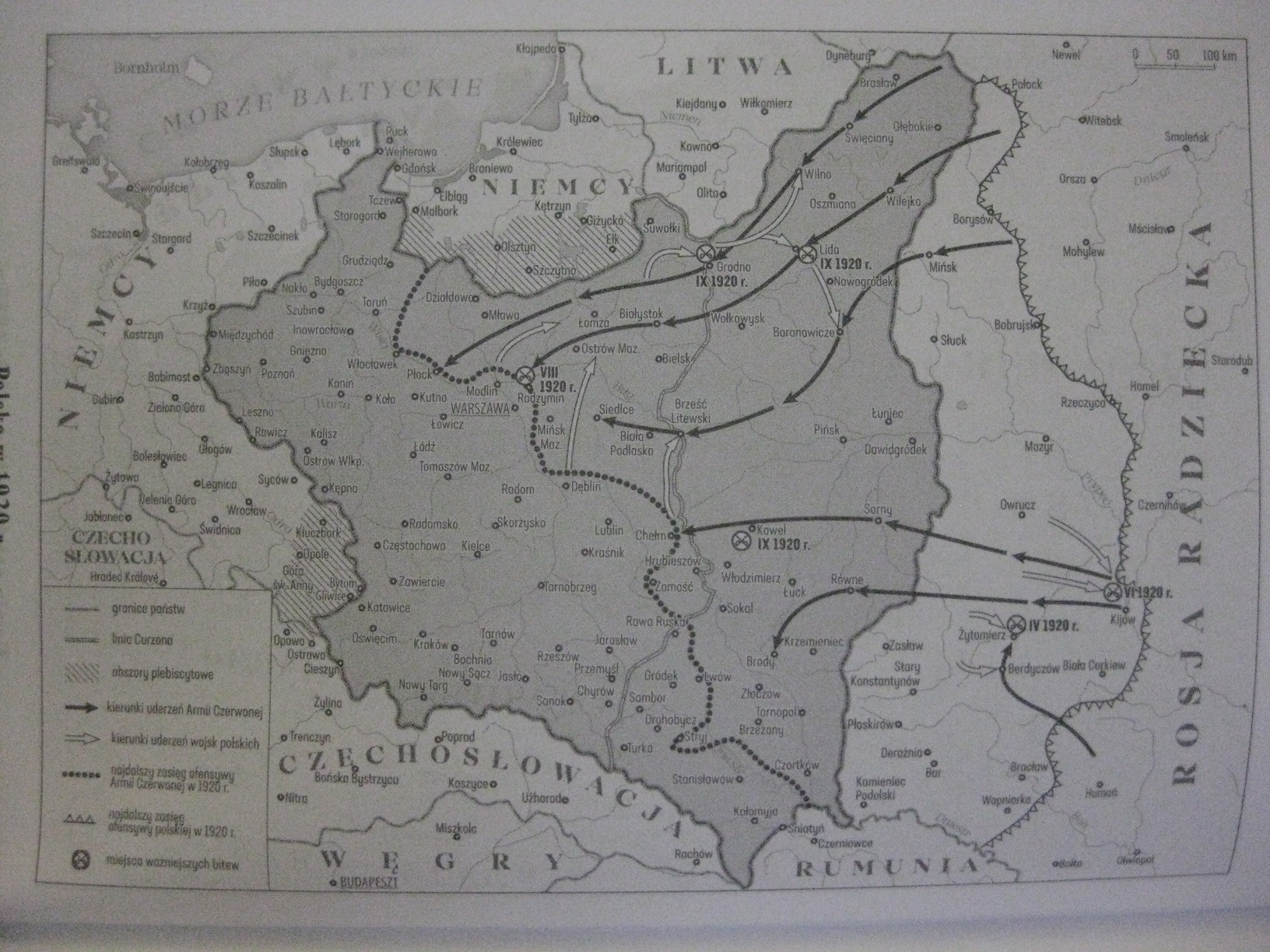 |
Jewish history is a particularly significant focus of our collecting in Polish. New books join hundreds upon hundreds of titles about Polish Jewish history in the Library, such as the extraordinary and ever-growing set of Warsaw Ghetto sources Archiwum Ringelbluma (539:1.c.745.224-241,243,243a-243i,243k-243p) and the exhibition catalogue of the Museum of the History of the Polish Jews, bought in English for as broad an audience as possible, Polin : 1000 year history of Polish Jews (2015.12.285). Two new arrivals for our collections are:
– Biografie ulic : o żydowskich ulicach Warszawy od narodzin po Zagładę (The biography of streets : the Jewish streets of Warsaw from their origins to the Holocaust; C214.c.9171) by Jacek Leociak (Warsaw, 2017). The book was accompanied by a large fold-out map showing the Warsaw Ghetto; this can be requested in the Map Room.
– Dalej jest noc : losy Żydów w wybranych powiatach okupowanej Polski (Beyond lies the night : the fate of Jews in certain areas of occupied Poland; C214.c.8947-8948). The 2-volume set explores the attempts of Polish Jews to avoid detection during the war.
A full list of Polish history books ordered in recent months can be seen here: 201902_Polish HM titles to end month As ever, recommendations and queries are always welcome.
Among recent Ukrainian arrivals was a fine three-volume catalogue of bookplates in the V. Stefanyk National Academic Library of L’viv. Over 12,000 ex-libris from the 20th and 21st centuries were presented to the Stefanyk library by the politician and academic Stepan Davymuk in 2014, and it is the Davymuk collection which is listed so carefully in this set. Many book owners and ex-libris designers who feature in the catalogue are Ukrainian, but the collection also goes well beyond the country’s borders.
The third volume contains an appendix of the relatively few bookplates which are the work of unknown artists. Since the main body of the catalogue is led by artists’ names, the set ends with an index of the owners/commissioners of the bookplates, with the entries following the pattern Name of book owner; Name of artist; number (this last relates to the entries under the artist’s name in the catalogue).
An earlier blog post featured a 1967 postcard sent by a Norwegian commissioner of bookplates to a Soviet designer of them. The former, Thor Skullerud, does not feature in the catalogue, but happily the latter, Rudol’f Kopylov, does. 18 of his bookplates are listed and one is reproduced: see the images below. The reproduced ex-libris was created for V. N. Osokin – likely to be the literary and art scholar Vasilii Nikolaevich Osokin (1919-1981). The banner across the top reads “В мире прекрасного” – “In the world of beauty”.
The fine new set, Ukraïnsʹkyĭ knyz︠h︡kovyĭ znak XIX-XX stolitʹ : kataloh kolekt︠s︡iï Stepana Davymuky (874.b.297(1-3)), makes a good addition to the Library’s already substantial holdings of books about ex-libris – as a search for the subject heading Bookplates will show – and can be called up to the West Room.
In the year 2000, the Institute for Bible Translation produced a rather remarkable volume containing the nativity narrative of Luke’s Gospel (2:1-20) translated into 80 languages of the post-Soviet Commonwealth of Independent States.
The Stockholm-based Institute was founded, as the back cover tells us, with the primary purpose of “[making] the Holy Bible available to the non-Slavic peoples of the former Soviet Union”. The book in hand refers specifically to the languages of the Commonwealth of Independent States, or CIS, which – in the year 2000 – included 12 of the 15 post-Soviet states. The three not involved in the CIS were the Baltic States: Estonia, Latvia, and Lithuania.
The book commences with the Greek text of the Luke narrative, followed by the Old Church Slavonic translation and the Russian Synodal one. It then launches into translations of the passage into the extraordinary range of languages listed below (reproduced from the book’s table of contents).
- Ibero-Caucasian languages:
- Abaza, Abkhaz, Avar, Adygei, Andi, Bezhta, Georgian, Dargin, Ingush, Kabardian, Kubachi, Lak, Lezgi, Rutul, Tabassaran, Tsakhur, Tsez, Chechen
- Indo-European:
- Armenian, Baluchi, Wakhi, Kurdish (Kurmanji), Moldavian, Ossetic (Digor), Ossetic (Iron), Rushani, Tajik, Tat, Shugni, Yazgulyam
- Turkic:
- Azeri, Altai, Balkar, Bashkir, Gagauz, Dolgan, Kazakh, Karakalpak, Karachay, Kyrgyz, Crimean Tatar, Kumyk, Nogai, Tatar, Tuvin, Turkmen, Uzbek, Uighur, Khakass, Chuvash, Shor, Yakut
- Finno-Ugric:
- Veps, Karelian (Olonets), Karelian (North), Komy-Zyrian, Komi-Permyak, Mansi, Mari-Hill, Mari-Meadow, Mordvin-Moksha, Mordvin-Erzya, Udmurt, Khanty
- Other languages:
- Dungan, Buryat, Kalmyk, Itelmen, Koryak, Chukchi, Ket, Nivkh, Yukagir, Nganasan, Nenets, Selkup, Enets, Nanai, Evenki, Even
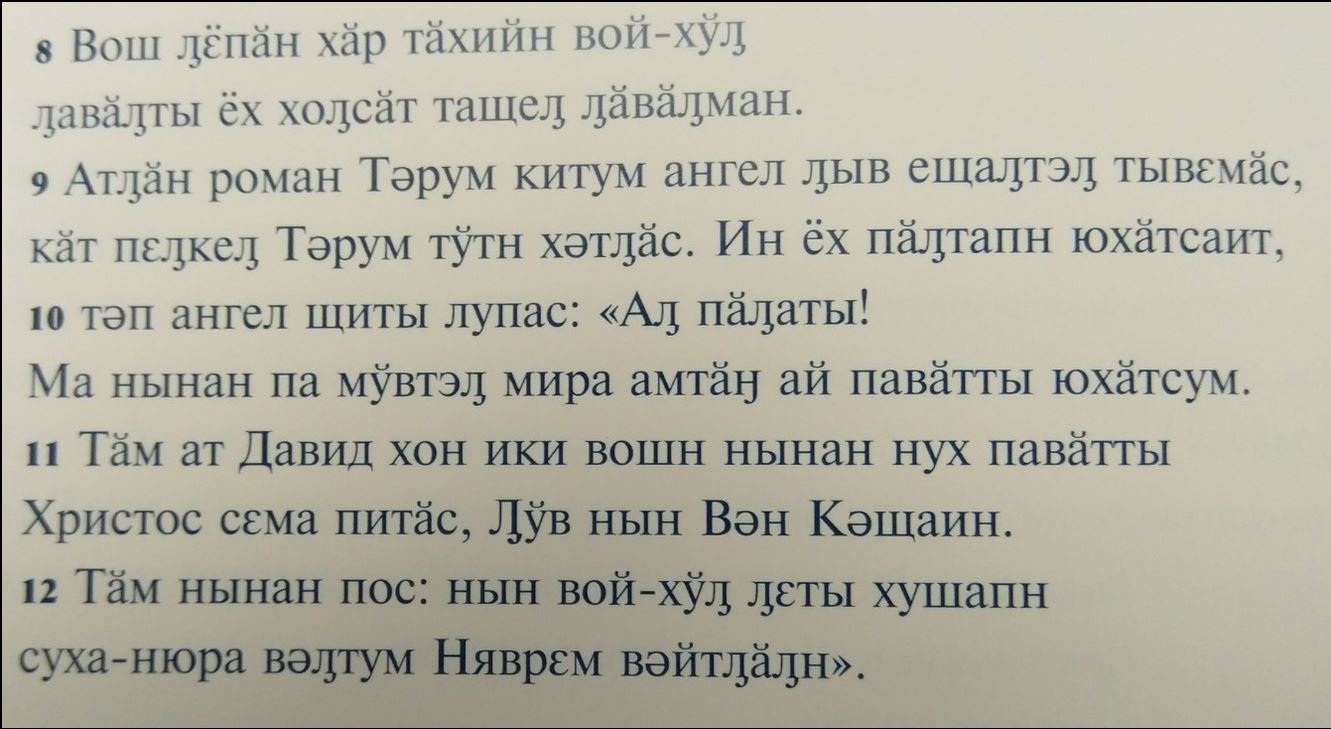 |
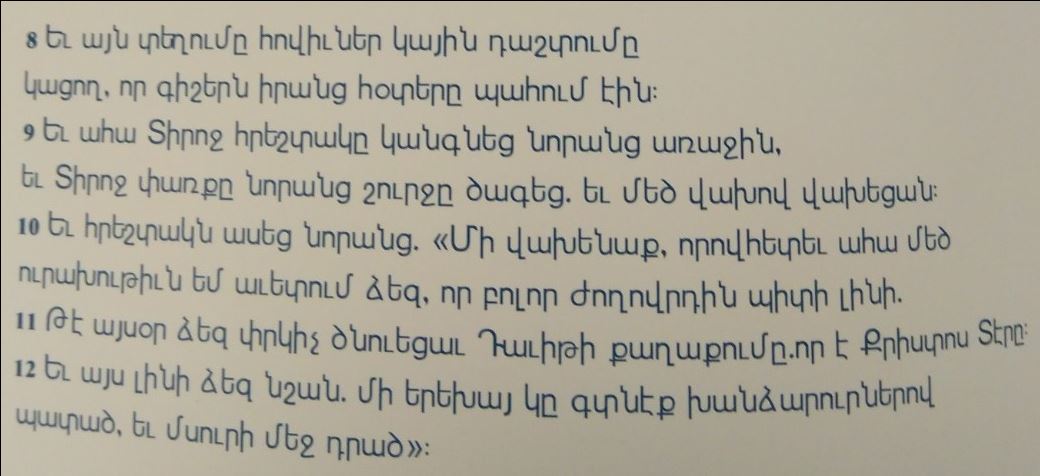 |
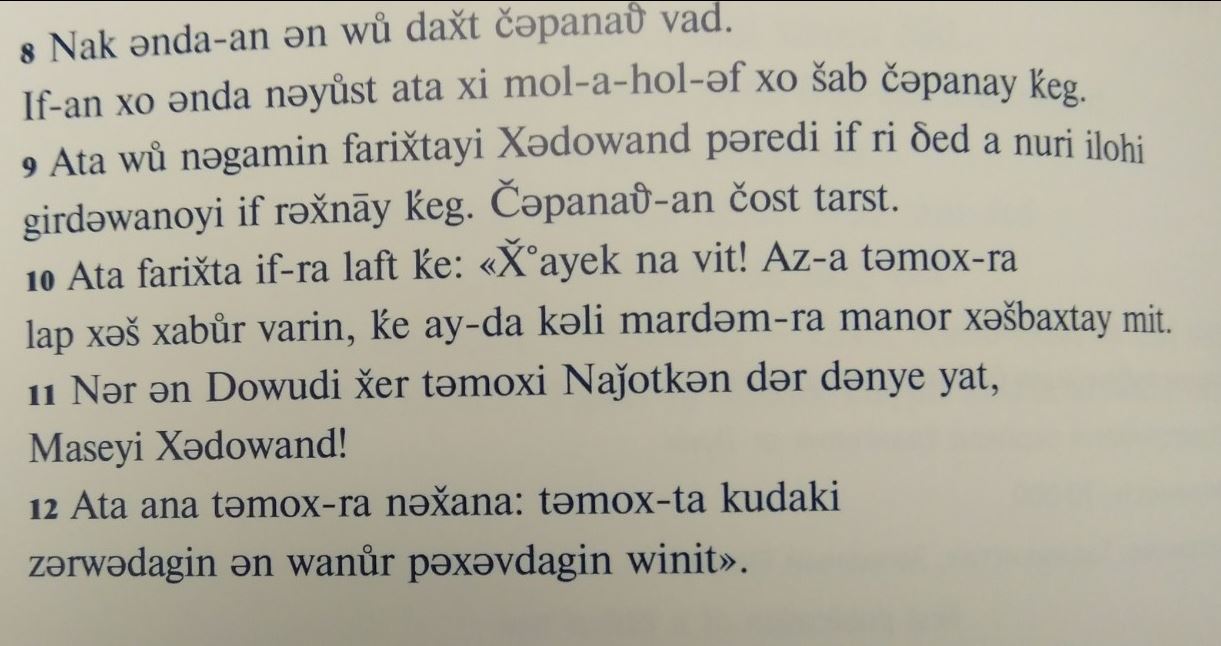 |
After each translation, brief information about the language and its speakers is given, including bibliographical references about existing Bible translations where these predated the book in hand. There are such references in the majority of cases, thanks chiefly to the Institute’s own efforts, but only a modest majority – 48. The book closes with the English translation from the New King James Version (text here).
The University Library recently received several dozen books from the library of the late Russian drama critic and Cambridge graduate Edward (Ted) Braun. Professor Braun studied in particular the work of Vsevolod Meierkhol’d, commonly anglicised as Meyerhold. Meierkhol’d published an influential journal of literary and critical texts called Liubov’ k trem apel’sinam (Love for three oranges) over the course of 1914 to 1916. The UL had only one volume, so we were delighted to be offered all those collected by Professor Braun. We now hold all but the first issue.
The covers of each of our issues, interspersed with shots of various inserts, are shown below. As a quick glance shows, two chief patterns were used – the abstract motif of earlier issues and the theatrical scene (complete with three oranges) of later issues. Publication appears to have been a little chaotic. Detective work suggests that covers produced for 3, 1915 (never in fact printed; 1-3 were printed jointly that year) were used for later issues. Our copy of 1, 1916, has the “3” on the cover replaced in pencil with a “1” and “1915” inked over to make “1916”. We now hold two copies of the jointly published v. 2-3 of 1916 (Braun’s and our original copy), with both reusing 3, 1915’s cover but each updated differently. The original UL copy has the “No.” replaced with “2” (stuck on) but “1915” still showing. Professor Braun’s stick-on “2” seems to have come off (the cover beneath is paler) and reveals “No.” again, but the “1915” has been updated. The inserts in the gallery below have a brief caption apiece.
Readers can order our physical copies in the Rare Books and Early Manuscripts reading room. We now hold, at F191.c.14.14(1-8a), v. 2(1914)-v. 2-3(1916). Full online access to the complete set is available on the Russian Academy of Sciences’ Institute of World Literature site: http://ruslitwwi.ru/source/periodicals/lubov-apelsin/
Three of the Braun copies have the same signature on the cover – teasingly almost legible. Shots of this are below. Should any reader be able to make the signature out, they are warmly invited to e-mail the answer to slavonic@lib.cam.ac.uk
Another post next week will look at some other new arrivals from Professor Braun’s library, discussing the decision to send some of these to the new Library Storage Facility near Ely.
The final items have recently been added to the Revolution : The First Bolshevik Year online exhibition. I am extremely grateful to the students and librarians who provided many of the captions. Amongst the latest additions is a book which contains a written dedication by the White commander Petr Vrangel’ (commonly Wrangel) – a fascinating re-discovery.
from ‘Russkie v Gallipoli’
Глубокоуважаемому Николаю Николаевичу Шебеко – повесть о крестном пути тех, кто вынес на чужбину и верно хранит национальное русское знамя. Ген. Врангель
To the esteemed Nikolai Nikolaevich Shebeko – a tale about the via dolorosa of those who brought out to a foreign land and faithfully preserve the national Russian flag. Gen. Wrangel
Shebeko had served as a diplomat under the tsar and fought with the Whites. By the time this book, on the Russians in Gallipoli, had been published in Berlin in 1923, Shebeko had settled in France. Wrangel had led the southern White forces and remained a hugely significant figure in emigration. He eventually moved to Belgium, via Yugoslavia where he founded ROVS, the Russian All-Military Union which served to unite émigré officers and soldiers and which attracted a great deal of Soviet state interest. Soviet involvement was certainly suspected in Wrangel’s death in Belgium in 1928 at the age of 49.
Wrangel’s writing proved quite a challenge to decipher, certainly for me. Sincere thanks go to Richard Davies of the Leeds Russian Archive who provided a transcription with little apparent effort and much-appreciated speed.
A higher-resolution image of the dedication can be found here: https://exhibitions.lib.cam.ac.uk/revolutionthefirstbolshevikyear/artifacts/a-trace-of-wrangel/
Last week, two 19th-century Russian books were brought to me by a Rare Books colleague who had found by chance that they had no record in the online catalogue. An invisible title is a librarian’s (and reader’s) nightmare – without catalogue records, we may as well be without books. Now that these two volumes, lost to readers (except those still dipping into the old physical guard book catalogues) for decades, have been found, I thought it would be appropriate to celebrate them in a blog post.
S756.d.86.1 and S756.d.86.2
Nekrasov poems
This little book of over 70 poems by Nikolai Nekrasov (1821-1878) was published in Leipzig in 1869. While it is not the earliest book by Nekrasov held in Cambridge, it certainly counts among the earliest few, and it is always nice to have books printed in the author’s lifetime. The University Library’s 19th-century Russian holdings chiefly came to us through donations, and this volume was donated by one of the most generous donors – Dame Professor Elizabeth Hill, the University’s first Professor of Slavonic Studies. Hill, in turn, had received the book from the literary translator Sidney Jerrold, as the inscriptions here show. Provenance notes have been added to the holdings record (for painful reasons, these do not currently appear on the catalogue), and entries for Hill and Jerrold provided in the main catalogue record (these do).
Stikhotvoreniia N. Nekrasova (S756.d.86.1)
Pushkin in Southern Russia
This book, published in Moscow in 1862, reached the Library not as a donation but through the Soviet-era book exchange programme. This can be discerned from the UL’s stamp on the title page: below the date line, the letter “E” stands out. (“E” means exchange, “B” means bought, and “D” means donation.) Another library stamp on the page also tells us where our copy came from – the Lenin Library in Moscow, now the Russian State Library. Quite how the exchange system worked is not clear to me, but the Leninka, as it is known, assures me through its online catalogue that it still has several other copies (link to Russian catalogue entry).
Their website also helped me find information about the person whose book stamp appears on a preliminary page: K.M. Solov’ev. I first tracked him down on one of several major Russian book auction websites, including an entry for the impressive 1914 catalogue of Solov’ev’s library by the bibliographer Iurii Bitovt (here, in Russian). There we learn that Konstantin Makarovich Solov’ev (1867-1935) was a merchant and a major book collector, amassing a library of over 60,000 titles (ours is book 4409). I hoped against hope that we might have a copy of the catalogue here in Cambridge, but we do not, although I see with unseemly envy that the British Library does (record here). The Leninka maintains an excellent list of named collections, and K.M. Solov’ev is among their list under “S” (here, again in Russian). So far, they have identified over 80 items still in their collections which came from Solov’ev’s library.
Pushkin v iuzhnoi Rossii (S756.d.86.2)
This kind of work is vital in order to ensure that our books can be found but also incredibly enjoyable. We know that there are some sequences of books in the UL which lack online records (much Official Publications material, for example, and a number of books in the pre-1978 Supplementary Catalogue (for details about both card catalogues, see here)). What was worrying about the two books above was that they come from a sequence which should have been fully catalogued online – which meant that they were caught only by chance. It is a relief to know that they are active parts of our collections again.
Last August’s Slavonic blog post looked at new literature from Ukraine. A year on, particularly with the centenary this month of the foundation of the Vernadsky National Library of Ukraine, it feels appropriate to look at some of this summer’s most recent Ukrainian-language arrivals.
Links to iDiscover records: book on left — middle book — book on right
The University Library’s financial year runs from August to July, so the summer is always a busy time for our colleagues in the Materials Processing department who receive the books we have selected and ordered and deal with invoices. There is inevitably a rush of arrivals towards the end of the financial year, as our suppliers from around the world push to make sure that as many books as possible are received and paid for within the same financial year in which they were ordered. Among the many recent Slavonic arrivals are a good couple of dozen or so books in Ukrainian. The covers of 15 of these new arrivals feature in this post.
Links to iDiscover records: top row: book on left — middle book — book on right
bottom row: book on left — middle book — book on right
Thanks to changes brought in last year, these books already show in iDiscover even though not quite all of them have – at the time of writing – been fully catalogued and classified.
The events of recent years in Ukraine remain a major subject in publishing output and this is true in the sample of new books shown here, as is often evident from the cover illustrations. Among the new titles are also philological works – a book about the 20th-century poet Mykola Bazhan is among those shown below, for example, and Iurii Andrukhovych’s latest novel is among those in the pictures above. Historical subjects include the architecture of L’viv (below) and Black Sea Germans in the 18th and 19th centuries (at top).
Links to iDiscover records: top row: book on left — middle book — book on right
bottom row: book on left — middle book — book on right
Recommendations for new Ukrainian books to buy are always welcome – do get in touch.
A list of events and other activities to celebrate the National Library of Ukraine’s anniversary can be found here in Ukrainian (select other languages from the drop-down menu in the top right-hand corner of the page).
Back to top of the page.
The University Library has recently acquired a huge facsimile set of architectural plans of St Petersburg dating from the 1730s and 1740s. Arkhtekturnye chertezhi i plany Sankt-Peterburga (2017) consists of two 52 x 37 centimetre cases of loose-leaf pages showing plans made for Friedrich Wilhelm von Bergholz, and a smaller commentary book. The publication is Russian but the plans and drawings come from the Nationalmuseum in Sweden, so the new purchase was made with money from the Slavonic and Scandinavian accessions budgets.
St Petersburg was founded by Peter the Great in 1703. Bergholz spent several years in the 1720s visiting Russia from the Duchy of Holstein, and the drawings of the new city he later commissioned and which are reprinted in this new set will be of particular interest to those looking at the early history of St Petersburg. The commentary volume gives the following English summary on its cover:
Drawings and blueprints of buildings, panoramas of streets and embankments of St. Petersburg and its suburbs from 1730s -1740s come from the collection of F.W. Bergholtz that was kept in the Swedish National Museum of Fine Arts, Stockholm. The blueprints (253 originals on 369 tablets) are mostly reproduced to scale, faithfully representing the color as well as notes made by Bergholtz himself. Almost all of them were not previously published.
The 369 numbered folded sheets showing the facsimiles are divided between the two cases. The publisher currently has the full list of contents for case 1 (Russian and English) and case 2 (Russian and English) available on their website.
Samples from the set (apologies for poor quality of photographs)
Each folded sheet is dedicated to a single original drawing or plan, which is reproduced in colour on its internal pages. On the back page of each sheet is a modern photo of the location. Details about the Bergholz image are given, as are quotations and bibliographical references where possible. The set is a truly impressive addition to the Library and builds particularly on the Catherine Cooke architecture collection. While Catherine’s interests lay chiefly in the early Soviet period, a great many books and journal issues in her collection relate to the architecture of Imperial Russia, as well as dozens of cards in her postcard collection.
The loose-leaf nature of the Bergholz set and its not inconsiderable price mean that we have placed it in the a class sequence under the care of our Rare Books and Early Manuscripts colleagues. The cases and accompanying volume stand (or, more accurately, lie) at F201.bb.14.1(1-3).
In the past few years, the University Library has been very fortunate in receiving the private libraries of two late British Ukrainians – Peter Yakimiuk and Teodor Kolassa. Together, these donations have added hundreds of chiefly diaspora publications to the Library’s 20th-century Ukrainian collection. This blog post celebrates a few of the many eye-catching book covers to be found amongst them. All but the last of the six items detailed here were produced in Europe within a few years of the end of World War 2.
Left to right, above:
- Золотий бумеранґ : збірка поезій : рештки загубленого, конфіскованого та знищеного, 1926-1946 / Іван Багряний (The gold boomerang : collection of poetry : remains of the lost, confiscated and destroyed, 1926-1946 / Ivan Bahrianyi) CCD.62.90
- [probably Neu-Ulm] : Prometei, 1946
- The book’s back cover notes that the publication was permitted by the UNRRA, the relief agency which ran post-war Displaced Persons’ camps
- Де сила–там воля вітає : огляд діяльности Українського спортового товариства “Чорногора” в Авґсбурзі за роки 1945-1948 (Where there’s a will, there’s a way : a review of the activities of the Ukrainian sports association “Chornohora” in Augsburg for the years 1945-1948) CCC.62.119
- Augsburg : Chornohora, 1948
- As with the title above, this publication was also printed with permission, this time authorised by “EUCOM Hq. Civil Affairs Division 14.7.1947”
- Білий світ : поезії / Василь Барка (White world : poems / Vasyl’ Barka) CCC.62.123
- Munich : Ukrainsʹka trybuna, 1947
- Also a publication authorised by EUCOM
Left to right, above:
- Карикатури з літератури : фотографії з творчої парафії / Теок (Caricatures from literature : photographs from the creative parish / Teok) CCC.62.114
- Munich : Skoromokh, 1947
- Teok was one of many pseudonyms of Teodor Kurpita, who produced many humorous books as this one
- Генерал : комедія-сатира / Іван Багряний (The general : a comedy-satire / Ivan Bahrianyi) CCC.62.122
- [probably Germany] : Ukraina, 1948
- Another humorous publication, this was published under the auspices of MUR (Мистецький український рух (Artistic Ukrainian Movement)), a cultural organisation set up by displaced Ukrainian writers in 1945; Bahrianyi was a major figure within MUR
- Шістдесят поетів шістдесятих років : антологія нової української поезії (60 poets of the 1960s : an anthology of new Ukrainian poetry) CCD.62.91
- New York : Proloh, 1967
- An example of later publications, this is one of several produced by Proloh (a publisher which also had its roots in post-war Europe) in the collections
Both collections, and particularly the Yakimiuk one, contained fragile and slight paperbacks which are still being gradually put in more supportive material and then being catalogued. Searches in the catalogue for “Peter Yakimiuk” or “Teodor Kolassa” will show the many hundreds of books already in the system to which these others will be joined.
Back to top of the page.
A recent addition to the Library’s online Revolution exhibition is a book about the controversial White General Lavr Kornilov who was killed in 1918. Having identified it in the catalogue by searching for Kornilov, I strangely couldn’t find the record when I later searched by its author. Our catalogue record, it transpired, was for the wrong book…
The six exhibits for the April 1918 part of the exhibition; the Kornilov book is top left.
Two small books called General Lavr Georgievich Kornilov were published in the south Russian city of Rostov the year after Kornilov’s death. Both are rare in UK collections. For many years, the Library and its readers had been under the impression that we owned the 16-page volume by Nik. Tuzemtsev (the pseudonym of N.T. Dobrovol’skii). In fact what we have is the 48-page one by Vasilii Pronin. The printed guardbook catalogue’s entry for the book is correct, and the error likely crept in during the enormous exercise of creating electronic records for the guardbook entries in the UL’s first online catalogue. Books in non-Latin scripts particularly caused problems at the time, and we stumble not infrequently upon records which need some specialist attention.
It is satisfying to sort such errors out and always enjoyable to take the opportunity to look more closely at this kind of material. Pronin’s Kornilov book focuses on its subject’s military career. After service in the Imperial Russian Army, Kornilov was placed at the head of the Provisional Government’s army following the 1917 February Revolution. He led an attempted coup, was imprisoned but escaped, and then joined and took command of the Volunteer Army in the south. Our copy of the book reached the UL in 1975, transferred from the University’s Slavonic Library, a fine collection which was later brought into the Modern and Medieval Languages Faculty Library. The book’s text is liberally covered with underlinings, largely in blue pencil. On page 31, there is a surprise. In a section about the coup, a list is given of the names of those who supported Kornilov and shared his imprisonment. The blue pencil marks one out with an asterisk which leads to a note in French: “mon oncle”.
The asterisk appears at the beginning of the name Novosil’tsev (Leonid Nikolaevich Novosil’tsev (1872-1934)) but might possibly instead refer to the preceding name, Riasnianskii (Sergei Nikolaevich Riasnianskii (1886-1976)). The photo below of Kornilov and the co-conspirators imprisoned with him includes both men. According to the list provided in the photo’s Wikimedia Commons page (in Russian), Novolsil’tev is number 11 (back row) and Rianianskii is number 14 (ditto, to left of window). Kornilov himself is number 1, centre-left in the front row.
Credit: Wikimedia Commons
According to his Russian Wikipedia entry, Novosil’tsev left Russian for the Balkans via Bulgaria. Riasnianskii’s entry says that he too went to Yugoslavia before moving to Belgium after World War 2 and then finally settling in the USA. Riasnianskii also features in N. Rutych’s 1997 collective biography of senior Volunteer Army officers (586:9.c.95.607), as does Vasilii Pronin, the author of the book. Initial investigation into both men to whom the asterisk in our copy might apply has failed to draw up a notable nephew or niece who might have owned and written in the UL’s copy of the Pronin book, but any reader who has a lead is warmly encouraged to get in touch.
The April 1918 Revolution exhibits can be seen here. Readers interested to find out more about the Volunteer Army and Kornilov should browse in the catalogue for the subject headings Russia (Territory under White armies, 1918-1920). Dobrovolcheskaia armiia and Kornilov, Lavr Georgievich, 1870-1918.
Back to top of the page.
100 years ago, the Society for the Encouragement of the Arts held an exhibition of works by members of the famous Peredvizhniki (or Wanderers, Oxford Art Online‘s preferred translation). In the Catherine Cooke collection, the UL has a programme from the exhibition. What makes our copy such a delight is that it contains pencilled comments by a visitor to the exhibition.
The catalogue, a slight and entirely unillustrated 14-page publication, lists the members of the Peredvizhniki followed by the names of their paintings exhibited, and then lists eksponenty – exhibitors – and their paintings. The relationship between the first group and the second is not entirely clear to me. In G.B. Romanov’s 735-page Peredvizhniki encyclopedia (S950.b.200.4794), the entry for the exhibition – which opened in March 1918 – provides a list of artists and exhibits that contains some but not all of the artists and paintings from both lists, undifferentiated, in the catalogue.
Our commentator reacts only to certain artists and pieces – K.I. Gorbatov’s work is described as “derivative”, for example, while P.I. Kelin’s is both “good” and “strong”. The confidence with which these views are stated is rather delightful, although K.A. Veshchilov – who gets three exclamation marks after the work “weak” – might have disagreed. Repin, one of the most famous Peredvizhniki, has one of his paintings described as “an excellent thing”.
The commentator’s writing baffles me in places. Readers with a good eye for Russian handwriting are warmly encouraged to contact me at slavonic@lib.cam.ac.uk if they can help.
Here, A.N. Shil’der’s work is “good but as ever dry and ???”
A busy page of notes above. V.A. Zverev is “an excellent artist”, but the comment on G.K. Savitskii (bottom left) defeats me. V.S. Svarog (top right) is a “talented person but as an artist will hardly make money” (although, for Svarog’s sake, I hope I have misread that). Finally I.I. Tvorozhnikov attracts a comment which includes the words “really not bad … but … himself and his time.”
The left-hand page here is given over almost entirely to works by N.N. Bazhin, whose death the previous year is noted under his name. The comment by his works marks his passing, “I am sorry for such a talented and [word unclear] artist”. K.A. Veshchilov, on the opposite page, gets the infamous “weak!!!” comment (the Met would disagree), but then M.F. Ivanov attracts praise in the last comment in the catalogue “All very talented, beautiful; there is much to find in the paints and drawings”.
A search for Peredvizhniki in iDiscover will provide a list of books held across Cambridge on the group, and searches for individual artists such as Repin will show any titles dedicated more specifically to their works.
Back to top of the page.
Last month, the CamCREES Revolution lecture series audience enjoyed a beautifully illustrated talk on Soviet porcelain. Petr Aven spoke about the development of porcelain work in the Soviet Union, with examples from his own superlative collection. This blog post looks at the collection’s staggering 3-volume catalogue, generously presented by Mr Aven to the University Library after his talk. The subject of porcelain as a medium for Soviet propaganda is fascinating, and the catalogue is an exquisite and important addition to the Library on the topic.
Sovetskii farfor : mezhdu Oktiabr’skoi revoliutsiei i Otechestvennoi voinoi (Soviet porcelain : from the October Revolution to the Second World War) contains high-resolution pictures of every one of the many hundreds of items in the collection at the point of publication (2014) accompanied by academic articles and detailed information about each piece. The three large volumes, each 33 centimetres tall, contain a combined total of over 1500 pages. The first two volumes chiefly contain pictures, with volume 1 concentrating on figurines and volume 2 on tableware and other decorative pieces. In each of these volumes, an important distinction is made between items produced on the basis of pre-October Revolution models (many of the dinner sets, for example, had already been cast and even partially painted before 1917 and were completed with Soviet designs and messages later) and post-1917 designs.
The third volume contains pictures of items received since the main body of work on volumes 1-2 had been completed, but also, crucially, contains carefully researched details about every item covered by the whole catalogue. Each entry includes a description of the physical item, including marks of authorship and production, with the item’s name and the names of those involved in its manufacture given where known. Bibliographical references to aid further research are often also given.
This lovely donation can be called up and consulted in the West Room. Its classmark is S950.a.201.5826-5828.
In recent years, the UL has bought a good number of books on the subject of Russian and Soviet porcelain, with a few recently received titles still to be added to the catalogue and some earlier works written by the Sovetskii farfor set’s editor, El’vira Sametskaia, shortly to be acquired. The subject term Porcelain can be used to initiate browse searches in iDiscover, with Porcelain, Russian and Porcelain, Soviet among the more specific terms to use.
All illustrations used in this post are taken from the catalogue, © Petr Aven.
Back to top of the page.
Among the February 1918-related exhibits soon to be added to the University Library’s Revolution exhibition is a letter from Leon Trotsky. The letter came to the Library as part of the papers of the Conservative politician, Sir Samuel John Gurney Hoare (1880-1959), second Baronet, and first and last Viscount Templewood. Hoare was in Russia as an intelligence officer in 1916, and his interest in the country continued long after his departure. Quite how this letter, which is dated 27 February 1918 and refers to the work of the agent Bruce Lockhart, came to be amongst Hoare’s papers is only one of its mysteries.
Templewood II:2(27)
Bruce Lockhart described his adventures in Russia in his book Memoirs of a British agent. He was sent “as head of a special mission to establish unofficial relations with the Bolsheviks .. My instructions were of the vaguest.” Against the backdrop of the disintegrating old Russian Empire and the ongoing Great War, the talks between the Bolsheviks and the Central Powers at Brest-Litovsk were of deep concern to the Entente Powers, and Lockhart had the unofficial brief of following developments and trying to influence an acceptable outcome.
Not long after he arrived in Petrograd, still then the Russian capital, the British Embassy and others evacuated the city. Lockhart decided to stay on and he chose two men to stay and assist him. He had the approval of the Soviet powers to remain, and so we see in the letter Trotsky, as the People’s Commissar for Foreign Affairs, writing essentially a pass in which he requests that assistance is rendered to three members of the English Mission – Lokart (Lockhart), Giks (Hicks), and Garstin. Trotsky then added a handwritten note that these men’s personal provisions should not be requisitioned.
Described in the Templewood papers’ otherwise extremely careful and detailed catalogue (which can be consulted in the Manuscripts Reading Room) simply as a “Russian document”, the letter was an exciting discovery for me when preparing the Revolution exhibition. As can be seen, the letter was at some point torn into quarters and then put back together with now very brittle tape. In addition to a few UL additions, we can see that there are some English instructions in pencil which appear to be suggesting edits to the letter. One of these is at the top, circling the information at the top of the page and suggesting that someone should “centre [it] here”.
This suggested alteration made no sense to me – the letter had been written and used and was now an artefact, so why would its layout be under discussion? Lockhart’s memoirs seem to answer the query. This very letter is reproduced in every edition of Memoirs of a Russian agent and, in its the reproduction, the data in question are moved to the centre (see below, beside its English translation). Quite why the publisher or editor etc wanted the letter to be reproduced in a more justified style is beyond me, but it seems clear that this desire is what saw the note added. It is interesting also to see that they were also slightly inventive in their treatment of the UL ownership stamp.
1. Reproduction (from 456.c.93.297) 2. Translation (from 456.c.93.297)
Lockhart’s memoirs were published to enormous success. On the verso of our 1932 copy, we find details which reveal that the book had to be reprinted no fewer that three times within two months of initial publication. At the point when Trotsky wrote his letter, Lockhart’s adventures in Russia were only just beginning. The memoirs make an exciting read, if very much of their time, and borrowable copies can be found in the UL at: 456.c.93.297 (published 1932), 456.c.97.19 (1974), 545:18.c.201.25 (2011).
Some further research amongst the Templewood papers may well explain quite easily how the letter came to be with them. For my part, I am extremely grateful that this fragile source from such an extraordinary time is in our collections.
Back to top of the page.
In late 2017, we announced on this blog the start of Revolution : the First Bolshevik Year, a new online exhibition at the University Library tracking the dramatic events unfolding one hundred years ago. Since then, two new batches of items have been added. Most recently, six pieces have gone up which link to developments in December 1917 and January 1918 (this doubling up will cease with the next month’s batch, since the Soviet adoption of the Gregorian calendar took place in February 1918). Stamps, books, music, and a satirical cartoon, the new items relate to the formation of the Red Army and the increasing activity of the White movement, revolution and the arts, and the short-lived Constituent Assembly.
The preceding batch looked at the December 1917 armistice for the Eastern Front, the rapidly unravelling situation in Ukraine, and the introduction of revolutionary economy.
Full captions for all the items featured in this post can be found on the exhibition site.
Before long, the most exciting stage of work on the exhibition – the involvement of undergraduates as co-curators – is due to begin. A further report on progress will appear on this blog before long.
Back to top of the page.
The December 2017 item of the month was held up in the post, so with apologies here is a lovely festive card sent on 20 December 1967 to celebrate the incoming new year.
Postcard recto. From the Catherine Cooke postcard collection.
In the Soviet period, Christmas played a much-diminished role – new year celebrations took on much of Christmas’ character and iconography, and New Year’s Eve remains the main time for present-giving in much of the former Soviet bloc to this day. In the card above, we have Ded Moroz (Grandfather Frost) being ferried by a troika of horses, with the Kremlin star shining in the background.
This lovely card was sent from Nizhnii Tagil, a town in the Sverdlovsk Region, to the small Norwegian town of Vikersund. The fact that the Russian sender had a personalised stamp for his details (a sign that he was well established), bottom right, made me hope that he and the recipient might be traceable – and so it turned out to be the case.
Postcard verso.
Rudol’f Kopylov was an artist and Thor Skullerud was a pharmacist – what linked them appears to have been bookplates. Kopylov specialised in the production of ex-libris and Skullerud was an avid commissioner of them. For readers of Russian, here is more about Kopylov in connection with an exhibition of some of his works in 2014: http://www.shr-ekb.ru/exibitions.php?exid=144; for all, here is a link to some of the bookplates he produced which commemorate the poet Sergei Esenin: http://www.esenin.ru/esenin-v-izobrazitelnom-iskusstve/ekslibris/kopylov-r-v Skullerud is harder to pin down in terms of biographical details, but here are some of the ex-libris he had made for him: http://art-exlibris.net/person/1922 It would seem that several of his bookplates are now in the Rijksmuseum, but copyright sensitivity prevents the museum from providing images: https://www.rijksmuseum.nl/en/search?q=skullerud
Somewhere, presumably, there is a bookplate designed by Kopylov for Skullerud to be found, but I have yet to track it down. Ex-libris are the subject of many books in the UL. A search for the subject bookplates will provide long lists. Among the results will be a formidable Russian publication which lists all bookplates found in the holdings of the rare books department of the Gosudarstvennaia publichnaia istoricheskaia biblioteka (the State Public Historical Library). Listed by name of owner, the set has covered only three letters of the alphabet and already stands at four volumes. Once complete, it will be an extraordinary resource. It can be consulted via the West Room and stands at 874.d.70-73.
Happy New Year to all our readers.
Back to top of the page.
This month, we look at a little ephemeral piece from the Catherine Cooke collection – a 1977 page-per-day calendar – soon to go on display online and in the Library’s entrance hall, and its entry for the 60th anniversary of the October Revolution.
When the Bolsheviks initiated their armed overthrow of the Provisional Government, in power since the February Revolution earlier that year, the date in Russia was 25 October 1917. Elsewhere in Europe, where the Gregorian calendar had long been in force, it was 7 November. The name of the October Revolution, however, as mentioned also in an earlier post, stuck in both East and West, even after the Gregorian calendar was adopted by the Soviets in 1918.
While the 25 October (the “Old Style” date for the revolution) entry in the 1977 calendar does make reference to the events of 1917, the chief entry for the revolution appears here on the page for 7 November (the “New Style” or Gregorian date).
The title wording in the lower band of the page, to the right of the date, announces the 60th anniversary of the Great October Socialist Revolution. Lenin is the only subject of black ink here, standing out against a sea of red, with a flag declaring that all power should go to the soviets* (vsia vlast’ sovetam!) waving behind him. *the administrative councils promoted by the Bolsheviks.
The calendar is among several objects dating from 1977 in the Catherine Cooke collection, presumably collected by Dr Cooke herself during a visit to the Soviet Union. Produced in an jaw-dropping print run of 16.5 million, the calendar cost 40 kopecks.
The calendar is one of several exhibits going on physical and electronic display in the next few days. The online exhibition will track the first Bolshevik year, with items being added on a monthly basis, in co-curation with University undergraduates. It had been due for launch on the 7 November anniversary, but revolutionary fervour had sadly spread to our exhibition software. A further blog post will advertise both exhibitions when they do get off the ground in due course. In the meantime, here is another preview exhibit – a 1927 Russian translation of the most famous eye-witness account of the revolution by a westerner, Ten days that shook the world by John Reed (Dzhon Rid here), the 90th anniversary of whose birth receives its own page in the 1977 calendar.
Back to top of the page.
Cyrillic became the chief alphabet of the Mongolian language in Mongolia in the 1940s and has remained so to this day. “Mongolia” here refers to the independent country, an area also known as Outer Mongolia. Inner Mongolia, within Chinese borders, still uses the classic Mongolian alphabet – which, rather mind-bendingly, derives from a Semitic script. The transition to Cyrillic in Soviet Mongolia from the traditional alphabet took in Latin on the way, in the 1930s. In 1932, the famous linguist Nikolai Poppe published a text book on the Mongolian language in which he employed both the classic (here shown horizontally but normally written vertically) and Latin alphabets:
The UL holds 250-odd books in Mongolian, published chiefly in Mongolia, China, and Russia. Mongolian publications continue to be found in the shrinking Soviet-era exchange backlog mentioned in a blog post earlier this year about Georgian. One example, now catalogued, is a 1969 examination of Mongolian laudatory poetry and salutations by Pureviin Khorloo (Mongol ardyn erȯȯl; 9009.c.2846). On its title page we can see examples of the two characters which are additional to the standard Cyrillic alphabet – the straight “y” which features twice towards the end of the first line below (transliterated as a “u” with a dot above) and the theta-style letter which features twice towards the end of the second line (transliterated as “o” with a dot above). The Library of Congress provides a transliteration guide for extra Cyrillic letters employed for non-Slavic languages; this can be found here.
Another book now added to the catalogue from that backlog is a 1956 Russian publication by S.A. Kozin about Mongolian epic literature. This I could not resist including here for its title page, rather beautifully vandalised over the years by many librarians adding their mark. Library stamps and classmarks proliferate, with the chief culprit the A.S. Pushkin Minsk Regional Library, from whose collections the more retiring UL was fortunate enough to receive this volume.
Very few books in Mongolian enter the Library’s collections today. In the past 10 years, 13 titles have been added. Among the most recent is a striking Mongolian-English bilingual book called ‘Valuables of Xiongnu Empires and Bronze Age’, full of pictures of treasures (see below; classmark to be added). The archaeology that helped find so many of them is an area which sees significant continued expenditure on Russian books about Mongolia. Soviet-era (and earlier) archaeological work in East and also Central Asia was widespread and highly regarded, as were area studies in ethnology and other social science disciplines, and the Soviet academics’ successors continue to lead much of the most significant work on this part of the world. These strengths are reflected in the UL’s impressive Russian holdings on the subjects. Among recent examples are ‘Aktual’nye voprosy arkheologii i etnologii TSentral’noi Azii’ (Topical issues of archaeology and ethnology of Central Asia (2015); to be catalogued shortly) and ‘Tiurko-mongol’skii mir v proshlom i nastoiashchem’ (The Turko-Mongol world past and present (2016); C213.c.3421).
Back to top of the page.
Earlier this month, the National Library of Belarus (NLB) held a conference to celebrate the history of Belarusian printing, marking the 500th anniversary of Frantsysk Skaryna’s publication of the Psalter – one of many Belarusian initiatives to celebrate Skaryna’s legacy. Both the UL and Trinity College have contributed to another of NLB’s projects, to draw together as comprehensive as possible a database of scanned copies of all original Skaryna material. Cambridge has provided digital copies of:
- a fragment of Skaryna’s 1518 First Book of Kings (1 Samuel); exactly the same fragment is held by both Trinity and the UL (the latter at F151.c.7.10)
- Skaryna’s 1522 Malaia podorozhnaia knizhitsa (Small travel book) Psalter (UL: F152.e.14.1)
The NLB have also nearly completed a physical facsimile reprint of all the books of the Bible which Skaryna produced. 16 of the projected 21 volumes were presented to the UL and Trinity by the Director of the NLB earlier this year, with the remaining volumes due to be sent to us once the publication is complete. The facsimile is a very welcome addition to our collections, providing our readers at last with easy access to Skaryna’s work. The set is held at F201.b.14.2(1-15,17) and can be requested in the Rare Books Reading Room.
The first day of the conference ended with the opening of the NLB’s ‘Francysk Skaryna and his Epoch’ exhibition – their English-language news story about this event can be read here. I was lucky enough to be given access to the exhibition a couple of days before, by Dr Susha, the NLB’s Skaryna specialist, while the final touches were being applied. It was a great privilege to be given a private tour of this remarkable exhibition, and I am extremely grateful to Dr Susha and his colleague Dr Prokulevich for making this possible.
My trip to Belarus also took in Skaryna’s birthplace, Polatsk, where I visited the absolutely superb Museum of Belarusian Book-Printing, which shares its quarters with a similarly impressive facility dedicated to the town’s other famous son, the writer Simeon Polotskii. The whole visit was an exercise in bibliographic delight. Every room was really quite breath-taking, literally so, as we moved from early printing to modern times. Since I couldn’t possible include here all the scores of pictures I took, here are two photos of photos – some lovely images (reproduced in the museum as large back-lit slides) of Soviet-era Belarusian book-making.
Much more can be read about Skaryna’s work and legacy in this excellent blog post written by Ihar Ivanou for the British Library’s European studies blog.
Back to top of the page.
The University Library’s Ukrainian-language holdings have nearly doubled in recent years, from 2,500 or so titles when I first arrived in 2010 to about 4,500 now. We buy books mainly on history and culture, with literature and philology among our main accession areas. Selecting new literary titles, however, is often rather a challenge.
Selecting books on literature is one thing. It is easy enough to spot, where offered, good academic titles produced by respectable presses. A recent (and ongoing) stand-out example is the Istoriia ukrains’koi literatury (History of Ukrainian literature; 758:65.c.201.5(1-4)) set produced by the Ukrainian Academy of Sciences, of whose 12 projected volumes we have the four already published. These – shown in the photo – cover the 10th century to 1830 (v. 1-3) and the work of Taras Shevchenko (v. 4).
Selecting literary titles of past authors is usually also straightforward because the value of their literary contribution is normally known. Similarly, buying new titles by established current writers (Zabuzhko, Zhadan, Matios, Andrukhovych, to name a few) is also easy. Determining which books to buy by modern writers less firmly established, however, is something I always find rather tricky.
There are lots of ways in which to try to determine whether or not a modern literary title should be purchased. We look at the publisher and use the internet to read up about the author and track down any reviews about their work in general and the book in question. A complicating factor, however, is the need to select quickly, often before much has appeared about the book, due to issues with supply. Here are a few recently received novels now in the catalogue:
From left to right, these titles are:
- Infektsiia (Infection; C213.c.762) by Stepan Protsiuk.
- Kil’ka rokiv zymy (Several years of winter; C205.d.2057) by Valentyn Terlets’kyi.
- Vertep : roman pro Maidan (Vertep : a novel about Maidan; C205.d.2058) by Olena Zakharchenko.
- Tut i teper’ (Here and now; C205.d.2059) by Iren Rozdobud’ko.
Suggestions about new literary titles to look out for and acquire or literary prize news and relevant blogs to follow are always welcome, as are any suggestions for new books from Ukraine at all, to slavonic@lib.cam.ac.uk
Back to top of the page.
This week has seen the very welcome news that the pilot Polish Studies Programme, launched in 2014, has succeeded in attracting funding which will ensure that Polish will remain in the University academic programme in perpetuity. To celebrate this wonderful development, the July 2017 Slavonic blog post looks at Polish holdings in the University Library.
The UL holds over 25,000 volumes in Polish. The period covered by the Polish-language collections stretches over a span of more than 450 years from the mid-16th century to the current day. Books printed before 1800 are the smallest component, but they include some extremely important and rare items. The earliest book in Polish in the University Library is the first printed translation of the Bible into Polish, which was produced in 1561 in Kraków. The second translation, printed in 1563, is rarer than the first; all but 20 or so copies were destroyed. The University Library is fortunate enough to have two copies each of these first two editions (Young.55 and BSS.232.B61; Young.56 and BSS.232.B63).
Images from the Young.55 copy of the 1561 Polish Bible.
The UL also contains earlier books printed in Poland but in other languages. Nearly 100 years older than the first Polish Bible, the oldest item in the collections printed in Poland dates back to 1474-1475, mere decades after European printing first emerged. The book, written in Latin and thought to be published in Chełmno, is by the French theologian Jean Charlier de Gerson, and discusses monastic propriety (Inc.5.E.15.11[1116]).
Theological works and translations of the Bible make up a major component of pre-20th century Polish-language holdings in the University Library (nearly 100 full or partial Bible translations into Polish from the 19th century are held), but increasing variety in kinds of material is found as the centuries progress. From the 18th century, for example, the Library holds a complete set of the first edition of Kasper Niesiecki’s major genealogical work Korona Polska przy złotey [złotej] wolności (1728-1743; S586.a.72.1-4), a 1780 grammar book for first-year school children (7760.d.76), and a political calendar for 1792 (T506:5.e.6.6).
The University Library’s 19th- and 20th-century Polish holdings show an increased emphasis on Polish history and literature, an emphasis still seen in the Library’s purchases today. When Polish was suspended as a tripos subject in the early 2000s, it retained a presence in the Department of Slavonic Studies as a language offered in less formal language classes. Accordingly, Polish purchasing slowed down to a certain degree in the UL but the Slavonic team always aimed to buy the most important material needed for at least minimal maintenance of our excellent Polish holdings. The presence of a Polish native speaker in the team has been crucial to the success of our work in that period and since. Since the return of Polish Studies, even as the initial pilot, we have started to spend much more significant proportions of the shared Slavonic budget on Polish. We aim to ensure that the Polish collections expand as much as possible, building on existing strengths and responding to current academic research and buying major reference works and key academic texts for future readers.
We also endeavour to ensure that major literary authors are well represented. Works by and about the late Nobel Prize winners Wisława Szymborska and Czesław Miłosz, for example, number scores and span across decades, with new titles continuing to be added. We follow the Nike prize and aim always to buy at least the winner of the literary prize. In terms of history purchases, the Library acquires books relating to all periods of Polish history and also to certain specific subjects, with Polish Jewish history a particularly strong focus of our collections and ongoing acquisitions.
Recent Polish arrivals.
Among other subjects that the University Library buys Polish-language books on are the Polish language, music, art, archaeology, and social sciences.
The lion’s share of Polish or Poland-related material is held either in the Rare Books department or in the main Library collection. However, there are two other specialised departments which deserve to be mentioned: Manuscripts and Maps. The former holds, for example, at GBR/0012/MS Add.8920, two sets of rules written at the very beginning of the 17th century which make up a handbook for Polish Catholic seminarians: a set of provincial scholastic rules (Poznan, 1604), and regulations for students at Braunsberg (Branievo), drawn up in 1608. A Polish example from the more modern side of the Manuscript Department’s holdings is the archive of the entomologist David Keilin (Manuscripts/MS Add.7953), who died in 1963. Keilin was educated in Poland, and many of his papers (which fill 31 boxes) are in Polish.
The earliest major map of Poland held by the University Library is that included in the famous atlas ‘A prospect of the most famous parts of the world’ produced by John Speed in 1631. Maps of Poland are collected to the present day, from tourist maps to major national and academic productions.
Back to top of the page.
Among recent arrivals from Russia is a lovely book called Gruzinskii avangard (The Georgian avant-garde; S950.a.201.5351), produced to accompany an exhibition held at the Pushkin Fine Arts Museum in Moscow. This Russian-language catalogue is a valuable addition to our collections, giving insight into 20th-century art from a country not exhaustively represented in the Library.
The book contains articles about the Georgian avant-garde followed by 140 or so pages of beautiful reproductions and then a full catalogue listing of the 200+ items used in the exhibition (accompanied by thumbprint reproductions). An English summary can be found at the end of the book. As the pictures above hopefully show, the volume is punctuated by smaller pages in addition to its main pagination. These provide further illustrative content.
The main subjects of the catalogue are named in the book’s subtitle as Pirosmani, Gudiashvili, and Kakabadze. Their records in Grove Art Online have them as Pirosmanashvili, Gudiashvili (no change), and Kakabadze (ditto), and the Library of Congress name authority file has them as Pʻirosmanašvili, Gudiašvili, and Kakabaże – rather closer representations of their Georgian names as transliterated per the relevant LC romanisation table. At the time of writing, the UL has five other books whose subject headings name Pirosmani specifically, three for Gudiashvili, and no others for Kakabadze. In terms of Georgian art more generally, there are not many other books across Cambridge. Here is a link to results in iDiscover for a subject search for the phrase “Art, Georgian (South Caucasian)”.
Georgian, the most widely spoken language in the Kartvelian language family, comes formally within the remit of the UL’s Near and Middle Eastern Department but responsibility for dealing with recent material in Georgian usually sits in practice with the Library’s Slavonic team (whose coverage of Eastern Europe and the former Soviet Union is much wider than their name would suggest). The University Library holds approximately 1,000 books published in Georgia, almost exclusively in Tbilisi, and 400-odd books in the Georgian language. A detailed description of the Library’s modest manuscript holdings in Georgian can be read about in R. P. Blake’s ‘Catalogue of the Georgian manuscripts in the Cambridge University Library’ in the Harvard Theological Review 25 (1932); a paper copy is held in the Manuscripts Reading Room at A233.12. As the first line of the review says, the UL’s Georgian manuscripts (which come chiefly from our Genizah collection) might more accurately be called “Georgian manuscript fragments”.
Very little modern material arrives nowadays in Georgian, but I was rather astonished to discover a modest backlog of Georgian books which have been awaiting cataloguing for decades. They form part of a sizeable collection (several hundred titles) of material from the Caucasian and Central Asian Soviet republics which had apparently turned up in a 15-year window from the late 1970s to the early 1990s and stored away without the relevant language specialists being aware of their arrival. With no UL expert confident with these languages, two factors bring these books to the door of the Slavonic team – for some languages, Cyrillic was the alphabet used at the time of publication; and for all, the reliable Russian-language colophon (or parallel title page) provides a useful start. We look forward to having the time to devote to their cataloguing in due course.
Back to top of the page.
The Kingdom of Serbia’s involvement in the First World War saw a proportional loss of life which far outstripped that of the other Allies. Ratni album (War album), published in Belgrade in 1926, commemorates the war with both reverence and realism. From photographic portraits of victorious generals to pictures of the combatant and civilian dead, this extraordinary volume captures it all.
The front cover, with a standard ruler along the left to provide scale. Close-ups of some details of the cover are provided at the end of this post.
The book is absolutely enormous – 33 cm high and 46 cm across – and weighty with it, each of its 448 pages printed on quite heavy gloss paper. Photographs make up by far the lion’s share of the contents. A brief introductory preamble leads on to 372 pages of photographs, a few given over to enormous reproductions of single photos but most featuring several pictures. While the album does focus on the Serbian war experience, the whole sweep of the Great War is included, from the Western Front to the East (including the Russian Revolution).
A great deal of the captions and photographs come from the book’s assembler, Andra Popovic, a lieutenant colonel in the army. The album is multi-lingual, with Serbian texts and captions followed by French and English translations. The book ends with a brief history for the war, which concludes with the proclamation on the 1st of December 1918 of the creation of the Kingdom of Serbs, Croats, and Slovenes (its name would be changed to the Kingdom of Yugoslavia in 1929).
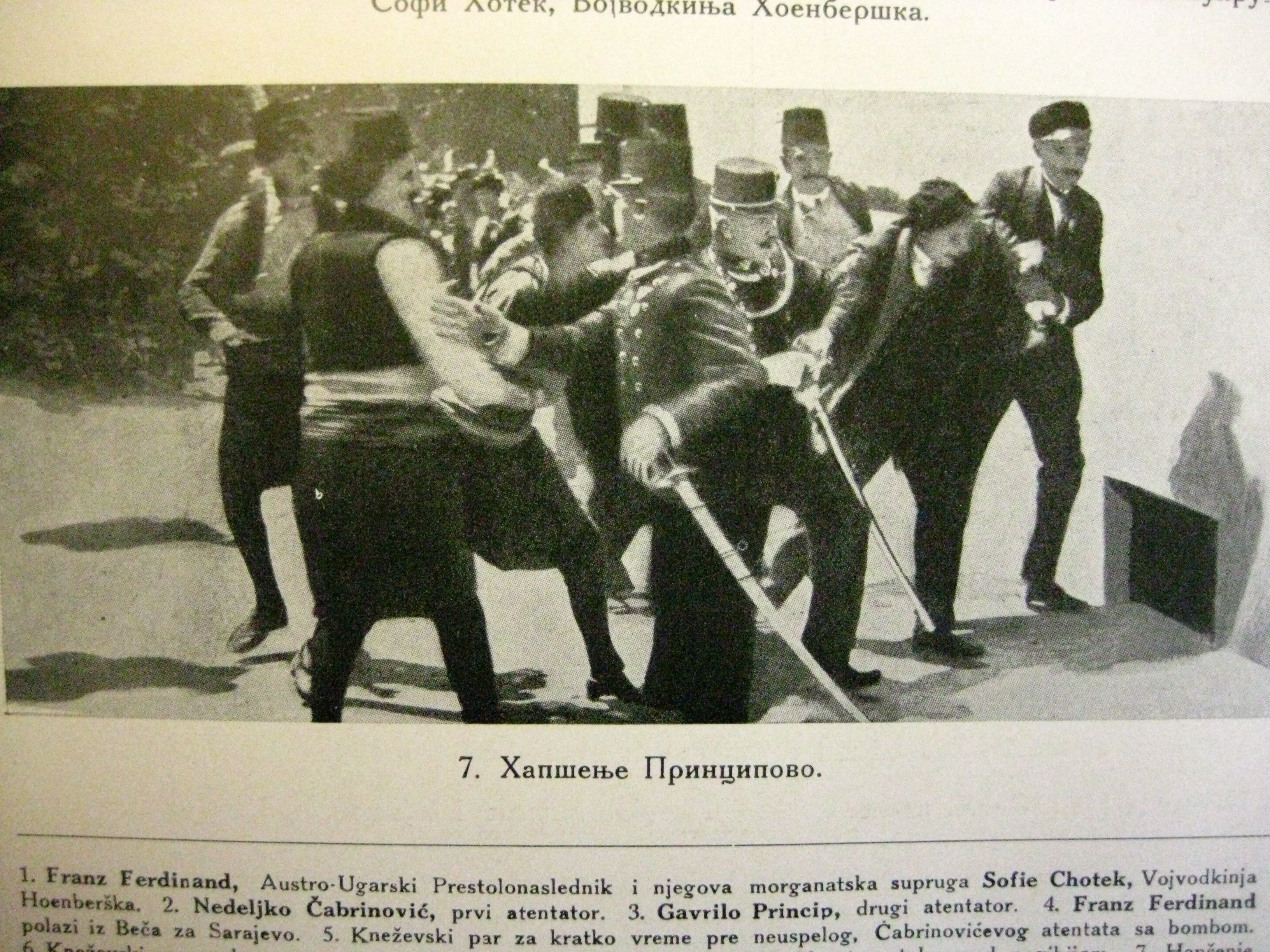 |
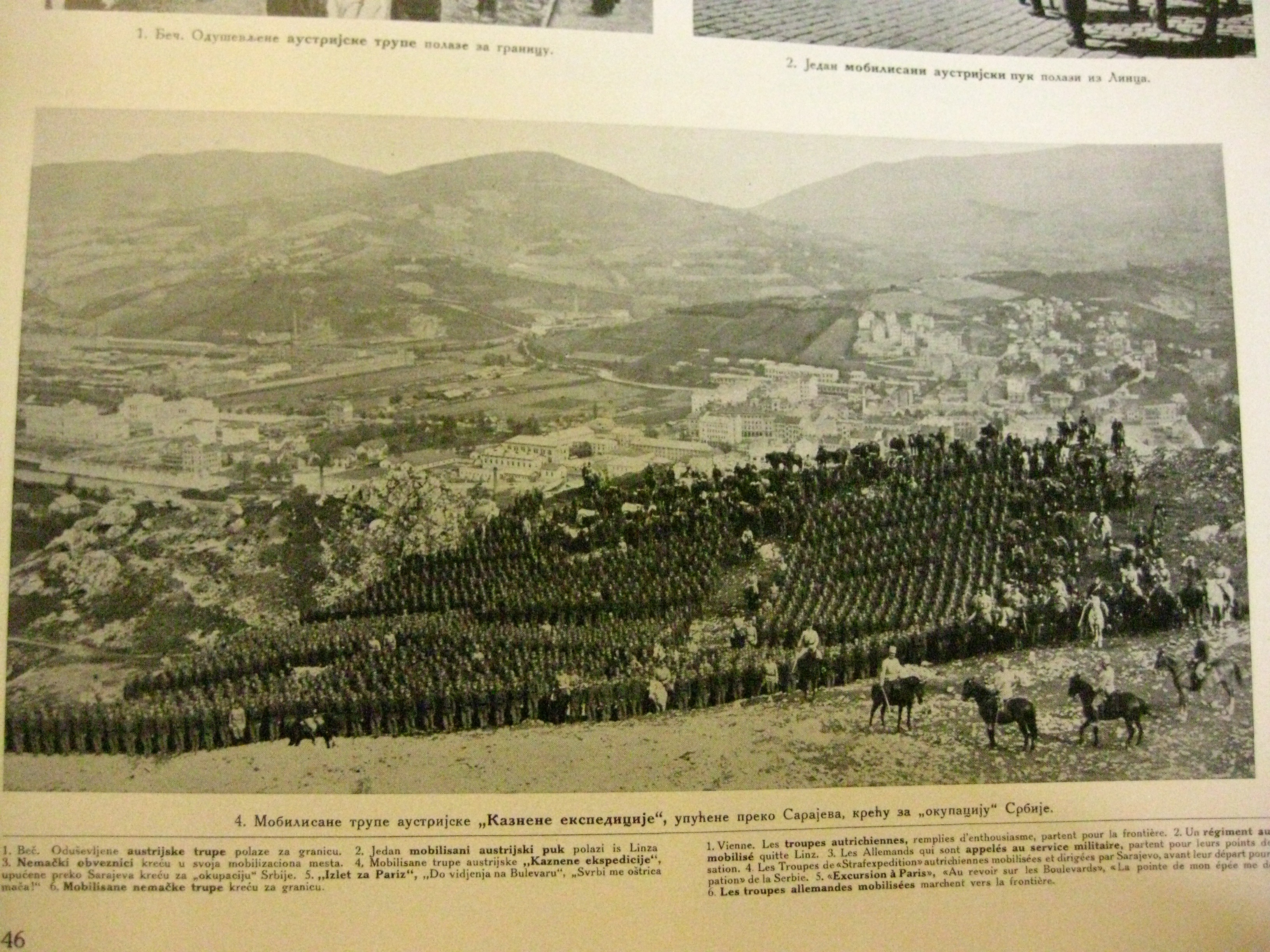 |
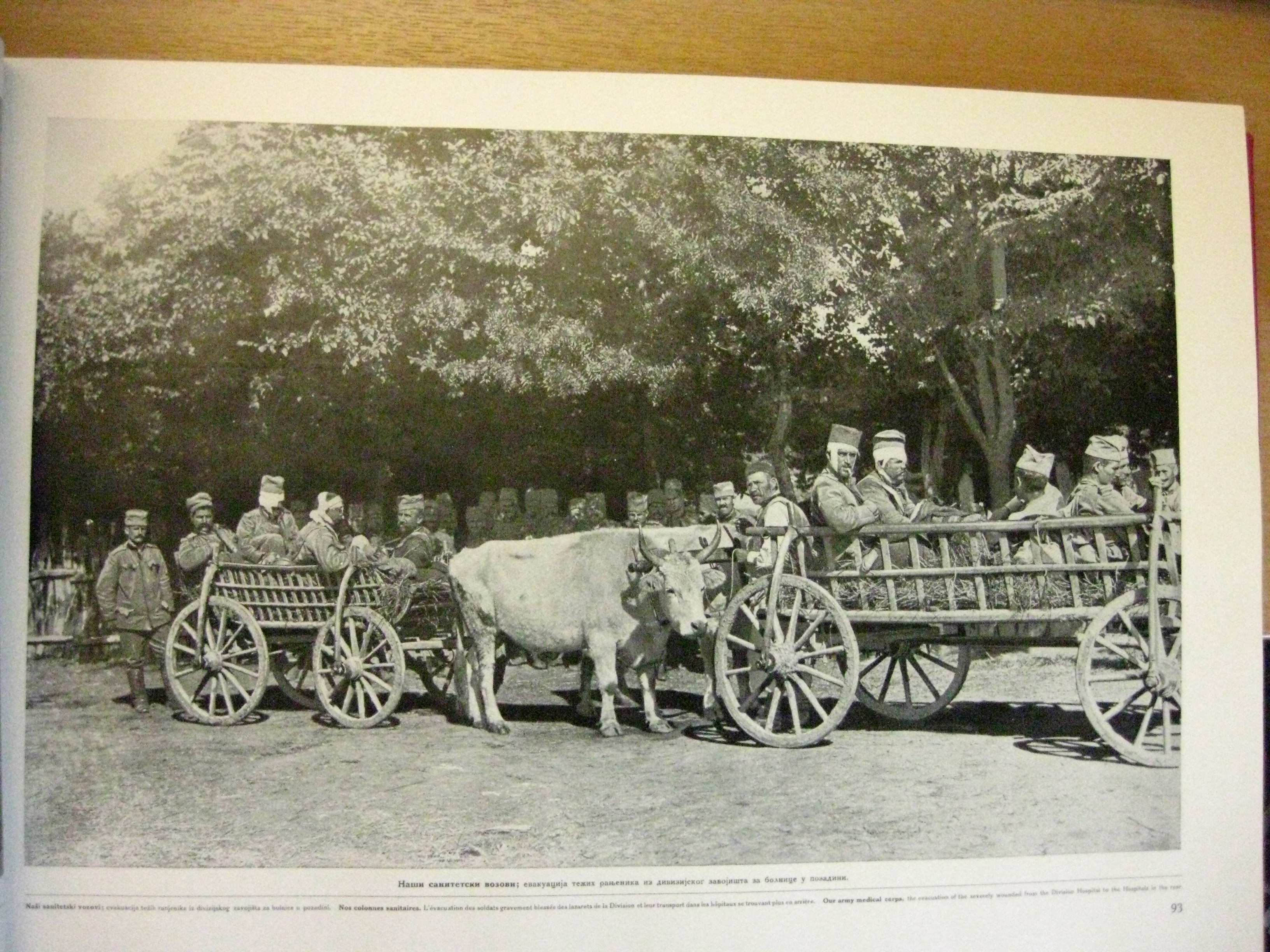 |
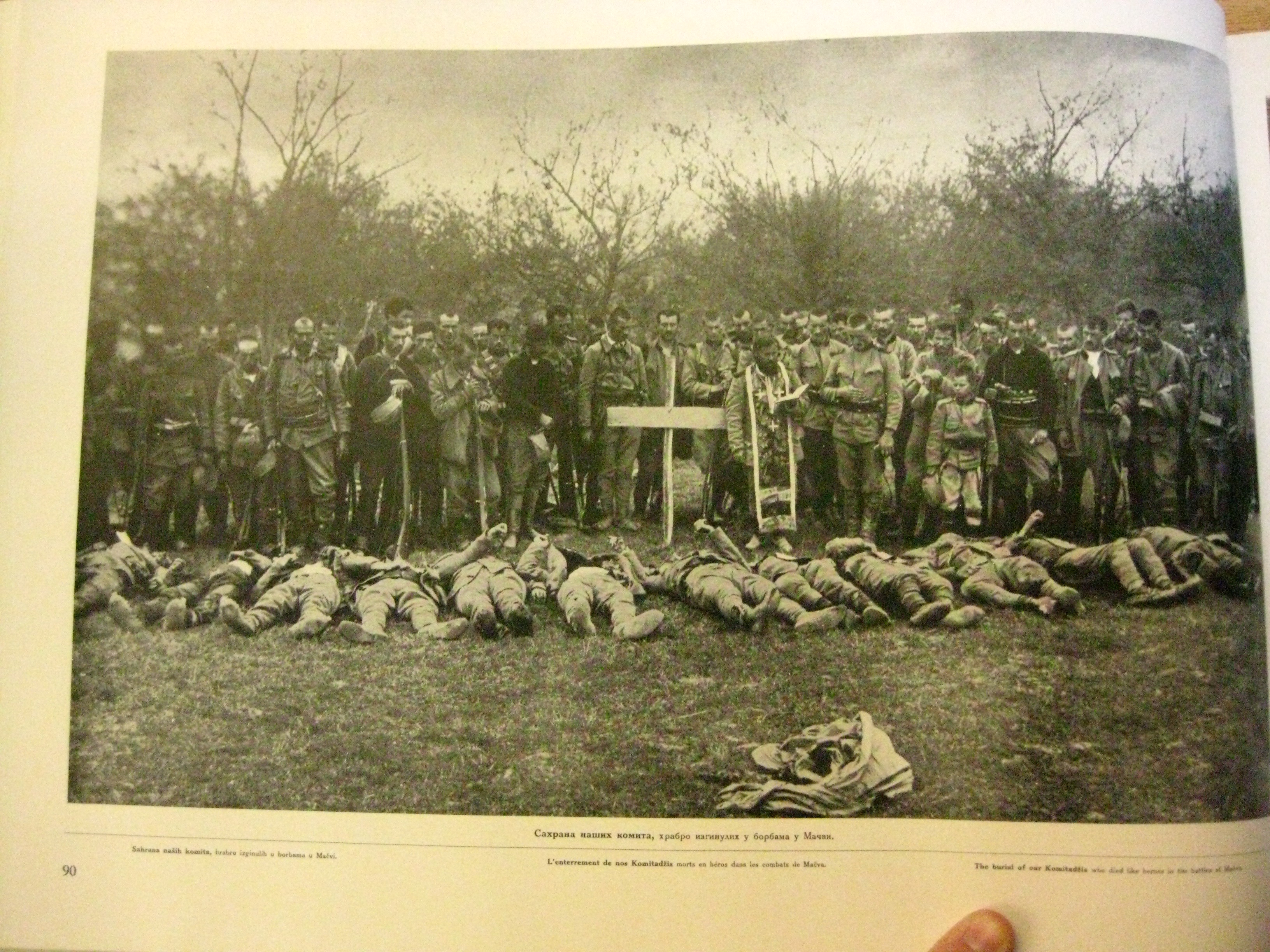 |
The pictures above show the arrest of Gavrilo Princip, assassin of Archduke Franz Ferdinand and his wife; an Austrian punitive force preparing to march on Serbia; the burial of the dead after battles at Macva; and the transporting of the wounded in ox-led carts.
Ratni album is by no means the only photographic record of World War 1 in the UL. Its subject heading World War, 1914-1919–Pictorial works is shared by scores of other items, but our volume provides a fascinating view of the war from one of its less well-known fronts. Bought only in recent years and in extraordinarily fine condition, it is a handsome and valuable recent addition to our collections, if also one that is poignant not only in what it shows of the atrocities of the Great War but also in the clues it unwittingly gives about the tragedies that the following decades would bring to the area. Resentments from this age, after all, would surface bitterly and bloodily more than once in the remainder of the century.
For readers of this blog who cannot easily make a trip in to see our copy (or for local readers unequal to the not undemanding task of manhandling the volume), Belgrade University Library has digitised their copy: http://ubsm.bg.ac.rs/engleski/dokument/103/ratni-album-1914-1918
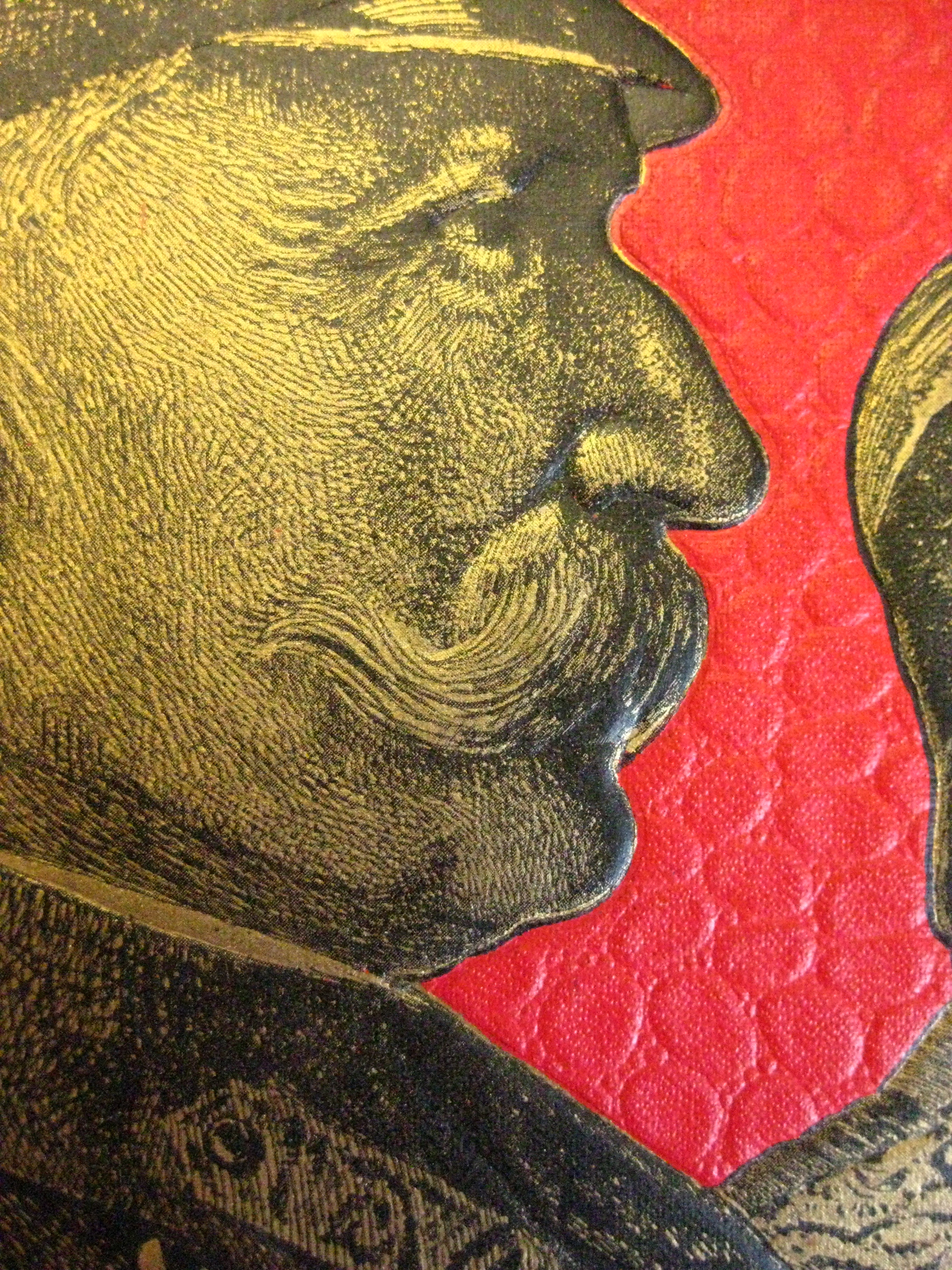 |
 |
 |
Details of the front cover, showing the quality of the physical publication.
Back to top of the page.
April 2017
In the last couple of weeks, we have taken delivery of a wonderful new addition to our collections: the earliest published Russian translation of Goethe’s Faust (1838). This joins two similar relative newcomers – the first full(ish) Russian Faust (1844) and the first Russian translation of another Goethe work, Götz von Berlichingen (1828).
The title page of the 1844 translation of Faust.
Gets fon-Berlikhingen is the second earliest translation of Götz von Berlichingen in the catalogue. The first is the 1799 translation by Walter Scott, at S746.c.79.1. Our Russian version was produced by Mikhail Petrovich Pogodin (1800-1875), whose other books in the UL relate to his work as a historian. The book opens with a dedication to D.V. Venevitinov ” as a sign of our friendship”. Venevitinov, a poet, was also a translator of Goethe. The dedication is dated the 21st of September 1826; tragically Venevitinov had died, at the young age of 21, by the time the book was published in 1828.
Both Pogodin and Venevitinov were acquaintances of Pushkin, with whom the earlier of our two new Faust translations is linked. In a rather awful echo of Pogodin’s dedication, the 1838 Faust is dedicated to Pushkin in a publication printed also shortly after the dedicatee’s untimely death. Eduard Guber (1814-1847), a young devotee of Pushkin, had seen his first Faust translation rejected by the censors and had responded by destroying the manuscript. Pushkin made contact with him on hearing this news and had a significant influence of Guber’s subsequent new translation. Pushkin’s violent death in 1837 at the age of 38 threw Russia into mourning and must have devastated Guber. His dedication (to Pushkin’s “unforgettable memory”) is followed by a 9-stanza dedicatory poem. The history of the earlier draft is touched on in Guber’s detailed introduction to the translation, where he also documents Pushkin’s involvement.
Our 1844 Faust was in fact the earliest of three Russian Goethe books to join us in the UL. Technically, this volume contains the first full Russian Goethe. In practice, it provides a full translation of part 1, followed by what is in fact a prose re-telling of part 2. The translator and re-teller was Mikhail Vronchenko (1802-1855). In his introduction, Vronchenko explains that he felt it vital to bring a version of part 2 to Russian readers, who had otherwise heard about it only at second hand, but that he had eventually determined that a shorter re-telling would be practical than a more direct translation. Writing in the third person, Vronchenko wrote that “the translator had decided definitively against attempting a precise translation of part 2” because he found he lacked “the strength needed for the task, sufficient patience, and even any desire to do it”.
Of the three volumes, the two Fausts have clear traces of earlier ownership. The Vronchenko 1844 work has the stamp of the Biblioteka Zaikanovych, and the 1838 Guber translation has the the unfortunately modern adhesive label of a Valentin Lavrov, identified by the bookseller as the writer born in 1935. It also bears the probably 19th-century signature inscription of an A. Semenov (whose initials are also embossed on the foot of the spine), and additionally contains a page partially covered by handwritten music! Any information about the Biblioteka Zaikanovych or the identity of our A. Semenov would be gratefully received.
From left: A. Semenov’s signature, the music notation, and the Biblioteka Zaikanovykh stamp.
Now that the cataloguing work has been done, all three books will be passed to our Rare Books colleagues so that classmarks can be added. This post will be updated in due course to provide these and links to the books’ records in iDiscover.
Back to top of the page.
March 2017
The last few weeks have seen the European University at St. Petersburg (EUSP) pushed ever closer to closing its doors since the university’s controversial investigation by the education ministry’s inspectorate began last summer, with its future now hanging in the balance in the Russian courts. This blog post looks at recent books produced by EUSP’s excellent publishing arm.
EUSP, a private graduate university, has gained admiration since its foundation in 1994 for its work in the social sciences and humanities, as witnessed by the letters of support it has received in recent months within Russia and across the world (English versions can be seen here: https://eu.spb.ru/en/news?filter_40=support_letters). For the librarian, their izdatel’stvo (publishing house) is a great boon. Their contributions to the fields of art and philology are important acquisitions, but their social science output is particularly valuable, filling gaps in the Russian academic market. Three EUSP titles have been added to the catalogue this week, and they are our March 2017 items of the month.
L-R ‘Natsiia’, ‘Krest’ianskaia ssora’, ‘Vasilii Kamenskii’
- Krest’ianskaia ssora / Anna Kushkova (Peasant quarrels; C212.c.4396). “This book problematizes everyday quarrel as a type of social interaction in Russian peasant society of the late 19th and early 20th [centuries]. The author argues that quarrel may be used as a new lens for the understanding of social relations in peasant families and peasant society at large after the emancipation of the serfs of 1861 and the judicial reforms of the 1860s” (from the English summary).
- This is the latest arrival in the EUSP Studia ethnologica series, one of 11 titles in the series bought by the UL so far. Other books cover diverse subjects such as forced migration and religion and secularisation. A list on Newton can, until the Newton catalogue is turned off in the summer, be seen here.
- Natsiia, ili, Mogushchestvo mifa / Aleksei Miller (Nation, or, The power of myth; C204.d.9811). “Miller explores how such notions as “nation” were formed in Europe and in Russia” (from the English summary).
- This is our first purchase from EUSP’s Azbuka poniatii (ABC of concepts) series, which produces fairly short books as introductions to certain subjects. We will purchase any titles that touch sufficiently on Russia.
- Vasilii Kamenskii : poet, aviator, tsirkach, genii futurizma (Vasilii Kamenskii : poet, aviator, circus man, genius of futurism; 756:37.c.201.50). Kamenskii is nicely described in the English summary as “a most buoyant figure of his epoch”. The volume consists chiefly of works about him (they “vividly demonstrate [his] life-asserting temperament; he is portrayed as one of the first pilots, a discoverer of new forms in poetry, circus man, self-advertiser, designer, printer, master of performance and holder of Soviet orders”) but also include pieces by him. The publication includes two separate facsimile reproductions of his early work. These can be consulted in the Map Room.
- The Kamenskii book is the UL’s seventh title in the EUSP Avant-garde series, which contains beautifully produced books on avant-garde art and literature, many involving facsimiles. A list of these can be seen on Newton here.
The three inserts (facsimiles rear left and front) from the ‘Vasilii Kamenskii’ book.
Back to top of the page.
February 2017
We have recently started to catalogue various reference works transferred to the University Library from the Modern and Medieval Faculty Library’s Balkan section. Most are academic dictionaries, but among them is the delightful 1938 Croatian picture dictionary Sta je sta (What is what). Each opening provides often quite complex terminology facing illustrative pictures. Produced by two academics and writers, Iso Velikanovic and Nikola Andric, the 685-page dictionary covers a huge number of topics in quite extraordinary detail. Even cricket is included.
Velikanovic and Andric use the introduction to thank a great many academic colleagues and specialists in non-academic fields for their help in the dictionary’s compilation. The collaborative effort was clearly enormous. As the examples below show, the dictionary spans from quite standard terms (types of motor vehicles on the left) to extremely technical ones (detailed car parts on the right).
It’s a fascinating book, and an interesting and fairly early example of a picture dictionary. Most books of this kind are produced for children or students, but the extent and depth of coverage here makes this a publication for a much larger audience. The dictionary is divided into the following 11 sections:
- Man, family, home
- Work and profession
- Physical exercise and fun
- Knowledge, research, artistic creation
- State and church
- Army and navy
- City and village
- Economy and traffic
- People then and now
- Animals and plants
- Earth and spac
The 310 plates (containing many hundreds and probably thousands of separate illustrations) make the illustrative content here so significant that it warrants the book a place in the S950 sequence which is normally used for more standard art books. Yet the only contributor to Sta je sta not mentioned in the introduction or anywhere else is the artist. The book’s entry in the National Library of Croatia’s catalogue also fails to shed light on their identity. The style, though, is perfect for the job – clear line drawings to show easily what the vocabulary means. Sometimes the artist’s flair for drama is quite striking, as is seen in one of the ‘Help in accidents’ sequences, where we see diagrams and words for saving a man from drowning. The first two images show help being given to someone in trouble in the water. The third looks rather the violent opposite. The vocabulary explains, however, that what we are shown here is how to disentangle oneself from someone’s desperate grip in order to take control of the situation and be able to help them properly. Judging by his expression, the man in the suit has not yet quite gathered this.
The book stands at S950.d.9.378 and can be called up and consulted in the West Room.
Back to top of the page.
January 2017
Russian rules allow the export of modern books that are a maximum of 50 years old. Towards the end of each calendar year, I therefore have a look at the books soon to turn 51 which are available for purchase from Ozon, a Russian online shop in the mould of Amazon. These are almost always incredibly cheap and in impressively good condition, and it is impossible to resist buying rather a lot.
Last month, then, I bought 55 books published in 1966. While the emphasis of Russian modern book selection would clearly be on Russian and East European culture and history, the table below (and the illustrations above it) show that my eye was drawn to less standard subjects for this older material. Technology, for example, came second overall – seeing how mid-century Soviets developed and wrote about computers, for example, could quite conceivably spark someone’s interest in the future.
Left to right: books on nuclear submarines, where to spend a day out in and near Leningrad, computer programming, choosing an amateur film camera, food preservation, space exploration, and calculators.
| Fine arts (includes architecture) | 7 |
| Geography | 6 |
| History | 12 |
| Language and literature | 2 |
| Law | 1 |
| Medicine | 2 |
| Performing arts (cinema etc) | 7 |
| Political sciences | 2 |
| Religion | 1 |
| Sciences | 3 |
| Social sciences | 2 |
| Technology | 9 |
History nevertheless comes out on top, with books about the Second World War (samples below) featuring heavily. It is always important to buy material which adds to our current strengths, so among the WW2 books is one by a Russian member of the French Resistance – published outside the collecting parameters of the Chadwyck-Healey Liberation Collection but an interesting related acquisition nonetheless. Similarly, several of the books purchased within the performing arts fund will complement the University Library’s growing cinema collections.
The covers of seven books on World War 2.
The books have now all arrived and will gradually be added to the catalogue.
Back to top of the page.
December 2016
‘Kniga dlia detei 1881-1939’ (Books for children, 1881-1939; S950.a.200.4173-4174) is a huge two-volume set which contains reproductions of excerpts from beautifully illustrated Russian children’s books. It was produced in 2009 but is a only a recent arrival in the University Library.
The set is based on the collection of a New York Russian emigre. Aleksandr Lur’e (or Sasha Lurye) has collected hundreds upon hundreds of late imperial and early Soviet children’s books, a great many of which researchers would struggle to track down in libraries today. The two volumes follow a roughly chronological order in terms of the books their sections study.
Volume 1’s contents:
- Education through beauty : the establishment of illustrated children’s books
- The artel “Segodnia (Today)”. Jewish children’s books. “A Suprematist tale…” VKhUTEMAS
- Continuing the traditions of the “World of Art” in children’s books in the first decade of Soviet power
- Kuz’ma Petrov-Vodkin. David Shterenberg. Illustrators of the works of Vladimir Maiakovskii and Daniil Kharms.
Volume 2’s contents:
- The new aesthetic of children’s books : the Leningrad school in the early 1920s
- The 1920s : “A golden age of illustrated books”
- “Industrial” children’s books
- Photography and photo montage in books for children and young people
- “The particular nature” of book art in the early 1930s
Volume 2 also contains the set’s main bibliography. This lists all the publications wholly or partially reproduced in the two volumes. The bibliography is ordered first by date (year) and each year’s list is then provided in alphabetical order of the name of the artist, rather than the textual author. The 10-page list makes it immediately clear that the two volumes concentrate primarily on the Soviet period, with only three titles listed for the 1880s and none for the 1890s, for example, while the 1920s cover five whole pages.
Sample illustrations from ‘Kniga dlia detei’, celebrating, for example, ice cream (top right), Lenin and children (bottom left), and trams (next to ice cream). Note the Yiddish title, bottom right, which is about a factory.
The set is a lovely addition to our collections and will provide readers with an eye-catchingly produced introduction to illustrated Soviet children’s books. Given the Soviet emphasis, however, it has been a slight struggle to crowbar Christmas into this December Slavonic item of the month post, although a couple of winter scenes can be seen in the image collages above.
To finish, then, on a more festively relevant note, we turn to some pre-Soviet Christmas postcards from the Catherine Cooke collection. Happy Christmas from all of us in the European section of the Collections and Academic Liaison team!
Back to top of the page.
November 2016
Earlier in November, I had the great pleasure of visiting the Library of Congress for the first time. Angela Cannon, the library’s South Slavic specialist, had invited delegates at the huge Slavonic Studies conference taking place in DC to come and look at Bulgarian material and be given a tour – an offer too tempting to refuse. The material Angela put on for us gave a fascinating flavour of the richness of the Library of Congress’ Bulgarian collection. From an 1850 accounting manual to a 1990 political propaganda poster, the exhibits were much to be coveted. The visit prompted me to have a look at the University Library’s own Bulgarian collection on my return.
The UL’s Slavonic collections are richest in the West and East Slavic languages, with Polish and Czech showing most strongly in the former and Russian and Ukrainian leading the latter. The third branch, South Slavic, has never been particularly focused on but Bulgarian has traditionally led a small but solid field, followed closely by Serbian and Croatian.
Our books in Bulgarian currently number about 2,700. The vast majority (nearly 2,000) date from the 20th century, with the 1960s and 1990s the most well-represented decades (approximately 395 and 430 titles respectively). Sofia is the most common place of publication for our Bulgarian titles by a long chalk, accounting for all but a few hundred. Some other Bulgarian cities feature (chiefly Plovdiv and Veliko Turnovo), with Tsargrad (Istanbul), New York, Vienna, and Smyrna among the other places where our Bulgarian books were produced. In terms of publishing in Bulgaria itself, we have over 3,300 titles where this is given as the country of production. Russian, English, and French largely account for the books which are not in the local tongue.
Among the Bulgarian books we have from earlier in our collection, a 1910 work on Bulgaria itself caught my eye. The 167-page ‘Bulgariia : geograficheski bieliezhki’ (Bulgaria : geographical notes; Ud.7.314) was written by Anastas Ishirkov (1868-1937), a major leader in Bulgaria’s new field of geography and the founder of the Bulgarian Geographical Society. This book was written for a non-specialist audience and contains 9 chapters on various aspects of the country’s geography: Bulgaria’s position, borders, and size; orography; hydrography; climate; flora; fauna; economy; population; and human settlements. Illustrations are provided on occasional plates, mainly reproducing black-and-white photographs but also providing the occasional colour reproduction of a painting or drawing. The three images below show examples of the colour illustration (top right) and photograph (bottom right) next to a shot of the book’s attractive cover (left).
In recent times, our Bulgarian intake has largely narrowed to a trickle based on occasional gifts. Donations of books on the history and culture of Bulgaria and its neighbours are always welcome. In the last few years, we have, for example, gratefully received two books on the seminal history of Bulgaria produced in 1762 by the hieromonk Paisii Hilendarski (‘Istoriia Slavianobulgarska’). Both volumes were published in 2012 in a specific series produced to celebrate the 250th anniversary of the original book’s publication. One is a slim volume of modern academic essays on Paisii Hilendarski and his history (2013.9.3214), and the other focuses on and reproduces a specific manuscript of the history, transcribed in the 19th century by Vlad Gladichov (C212.c.83). Another donation published in 2012 is Stoian Germanov’s ‘Makedonski vupros, 1944-1989’ (The Macedonian question, 1944-1989; 2012.8.5904), published under the auspices of the Macedonian Academic Institute in Sofia. This is one of nearly 150 books in the UL which look at the Macedonian question, most of which are in English, Greek, or Bulgarian.
Back to top of the page.
October 2016
This post examines one of the exhibits in the online ‘Crime and Punishment at 150′ exhibition, a 19th-century map of the railway lines in Asian Russia. Location plays a major part in the novel and was a major focus of the exhibition in turn. Crime and Punishment is set chiefly in St Petersburg and is full of local detail about the imperial capital. The Siberian setting of the epilogue is anonymised, in obvious contrast. This vast map gives a good idea both of the scale of the Asiatic part of the Russian Empire but also of the work involved in laying down in iron the Romanovs’ reach to the East.
The map was produced in 1899 by the Ministry of Railways (the formal term for railways here, and in the name of the map, is “lines of communication”). The online image cannot quite convey the extraordinary size of the map. As its record on iDiscover shows, it is a vast 180 cm wide and 80 cm high. Our copy is cut into sections to allow the whole to be folded up; one of the internal seams can be seen towards the right in the close-up above. Dostoevsky served his own sentence in Omsk (shown centre-right here), and this is the location often imagined by readers of Crime and Punishment as Raskolnikov’s place of imprisonment.
As explained in a previous blog post on the exhibition, the captions were written largely by University of British Columbia undergraduates taking a Dostoevsky course. The caption for this item was written by Olivia Chorny. “As a convict (for his membership in the Petrashevsky Circle) in Siberia,” she wrote, “Dostoevsky suffered myriad health problems, frostbite, abuse from other prisoners, unimaginable filth, and starvation … Yet his Siberian experience also helped Dostoevsky develop his personal philosophy and ideas about inequality, the nature of freedom, and the importance of hope.”
The prison system in Imperial Russia was harsh. As Olivia spelled out in her caption, even the process of reaching one’s prison was appalling. “To reach Omsk … Dostoevsky had to travel more than 2,000 miles from St Petersburg. The Trans-Siberian railway … would not be completed until 1916. Until this time, common prisoners would frequently be moved to Siberia by foot – an awful journey, in heavy leg fetters, that could last a year. Political prisoners, however, were often exempt from this march, and Dostoevsky was transported in an open sledge (even this he described as ‘almost unendurable’ in a letter to his brother).” Dostoevsky’s years in Omsk are marked in the city by a museum about the author and his imprisonment and a statue.
The week before last, I had the great pleasure of taking part in the ‘Crime and Punishment at 150′ conference that was the culmination of the wider programme of events of which the UL’s exhibition was one. It was wonderful to spend two days listening to academics from all manner of disciplines talk about Dostoevsky and the impact of his most famous novel. The papers showed that, 150 years on, scope for researching the novel remains huge. It was particularly enjoyable to hear three UBC students who had taken part in the UL exhibition give papers inspired by their exhibition work.
It is definitely worth visiting the exhibit’s page to zoom in to enjoy the extraordinary detail it includes. The main section covers the southern part of Asian Russia, but an inset map in the central lower section of the whole gives a view of the entire part, labelled here as Siberia. Both maps demonstrate very clearly the difficulties the vast landmass and its physical conditions caused for the Ministry of Railways. Railroad construction is confined very much to the southern edge, with a vast section towards the eastern end still to be constructed; access to Vladivostok by train was achievable at that point only through Chinese territory.
The map was sadly far too big to be considered for the smaller physical exhibition currently in the Library’s entrance hall. This runs until the 5th of November.
Back to top of the page.
September 2016
The current Library exhibition, ‘Lines of Thought’, closes on Saturday. The next exhibition will be ‘Curious Objects’, and the September Slavonic item of the month is a Russian postcard that will be among a section of items in the exhibition from the Catherine Cooke collection.
This charming card shows a postman whose satchel is full of a cascade of tiny postcards showing the sights of St. Petersburg. Above the postman are the words “Hello from”, the greeting completed by the name of the city stamped on the front of the satchel. From top to bottom are: the People’s House, the Warsaw Station, the statue of Peter the Great, the Malyi Theatre, the arch of the General Staff Building, the Mariinskii Theatre, the Cathedral of the Resurrection of Christ, Bol’shaia Morskaia Street, the Winter Palace with the Alexander I column in front of it, and finally St Isaac’s Cathedral and Konnogvardeiskii Boulevard.
Such postcards were not uncommon in the Russian Empire. A Google image search in Russian for the terms pre-revolutionary postcard postman greetings from supplies several variations on the theme. The keen-eyed reader will spot that the last on the right is our own postman again, now moonlighting in Kislovodsk.
The St. Petersburg postcard will be displayed in a wall-mounted case in the ‘Curious Objects’ exhibition, next to a large horizontal case full of Cooke ephemera. The miniature postcards will cascade down, supported carefully from behind. What we can additionally show in this blog post, however, is the card’s verso (below). Written in a rounded but slightly challenging hand, the card is addressed to a father in Ekaterinoslav (modern-day Dnipropetrovsk in eastern Ukraine) by his son, Sergei, in St. Petersburg, the Imperial capital.
Sergei writes, on the 2nd of August 1912, that he was on parade the day before in front of the Tsar. He reports that the parade went well and the Tsar was very pleased, and that he and his company went on to a meal at the People’s House (the first of the miniature postcards) arranged by the Tsar. Sergei goes on to say that he and his companions had sailed to Peterhof today, in heavy rain, and that they were due to depart in the evening for Vilnius. He reports that he will afterwards come on to Kiev and then home to his family.
In our copy of Nicolas II’s diaries, the entry for August the 1st, 1912, refers to two inspections the Tsar made that day. The first was a four-hour parade involving 9,200 juniors from across the empire. The content of Sergei’s card and his hand suggest that he was no longer a schoolboy, so his parade will have been the Tsar’s second that day – the inspection of newly graduated officers from the gymnast/fencing school. “The results were gratifying and impressive,” writes the Tsar.
Within a few years, military parades would turn into real hostilities. A Sergei Iakovlevich Skubitskii (and we know from the address section of the postcard that his father was Iakov Skubitskii) born in Ekaterinoslav appears in a list of those who fought in the White Army during the Russian Revolution and Civil War. It is overwhelmingly likely to be the writer of our card. An ensign in the southern Russian army, Skubitskii was captured and became a prisoner of war. He was subsequently added to the Ekaterinoslav Cheka’s “special list” in 1921. No further information is given, and the internet offers nothing more up about him.
Of Catherine Cooke’s hundreds of pre-revolutionary and Soviet postcards, many have not been used but dozens have. These are, as the postcard examined above hopefully shows, particularly to be treasured. They provide fascinating insights into lives lived in usually distant and often dramatic times. It is also exciting to try to track the correspondents and their activities further; to find mention of Sergei’s parade in the Tsar’s diary has been a gratifying example.
Back to top of the page.
August 2016
This month, we look at a recent political addition to the collections – the works of Mikhail Gorbachev – and examine the publications of his Soviet leader predecessors.
The University Library already holds dozens of titles by Gorbachev, chiefly from his 1985-1991 time in office. The earliest is the 383-page ‘Izbrannye rechi i stat’i’ (Selected speeches and articles; 231.c.98.626) which is followed by a mixture of very short printings of speeches and much longer books. The majority of our Gorbachev material is in English. Russian comes a fairly distant second, and Chinese, German, and Belarusian account for the remainder. Among our stock are biographies (Russian at 586:95.c.95.297-298; English at 586:95.c.95.315) as well as Soviet and post-Soviet political writings.
By the time Gorbachev’s works started to be published as a collected corpus, Politizdat (short for Izdatel’stvo politicheskoi literatury) – the official Soviet political publishing house – had long ceased to exist. The set is instead being published by the private Ves’ Mir publishers in Moscow in conjunction with the Gorbachev Foundation. Between 2008 and 2015, 26 volumes were published, covering the period of November 1961 (starting with a speech by the 22-year-old Gorbachev to the Stavropol’ Komsomol committee) to July 1991, with the Foundation’s preface to volume 1 stating clearly the intention for the set to cover the post-1991 period too. The Library has managed to pick up 24 of the 26 volumes this summer, with volumes 22 and 25 lacking at the time of writing. We intend to fill these gaps and order future volumes as and when they are published. The volumes we have already can be ordered through the Reading Room from C211.c.5890-.
The University Library holds a large amount of publications, chiefly in Russian and English, by the seven main Soviet leaders. A brief examination of the main titles by each follows below. The vast majority of these are to be found in the Communism section (classmark 231) in South Wing 6. This is one of the most overcrowded floors in the open Library stacks, so we try to avoid putting much new material there. This is why the Gorbachev set has been classified to the closed (but borrowable) C200s classmark sequence.
A brief look at the UL’s catalogue gives an indication of the publishing records of the seven leaders. The following are numbers of catalogue records on Newton today per leader where they are noted as the author or co-author: Lenin – 189, Stalin – 58, Khrushchev – 41, Brezhnev – 57, Andropov – 8, Chernenko – 14, Gorbachev – 81. Malenkov, who held power briefly between Stalin and Khrushchev, is represented by only 3 titles; one is the 14-page eulogy he read at Stalin’s funeral (item 1 in 9586.d.103).
Please note that while many items by the Soviet leaders are on the electronic catalogue, many briefer works are still represented only in the card catalogue.
Lenin rather stands apart from his successors. As we will see, the posthumous publication of Lenin’s collected works under his immediate successor (and many more times thereafter) was a pattern never to be repeated, given the swing to disapproval of one’s predecessor that so many Soviet leaders experienced on coming to power. The University Library has several full editions of Lenin’s works:
- a 30-volume 1935 Russian edition (231.c.93.89-118)
- a 55-volume 1958-65 Russian edition (231.d.95.84-138)
- a 47-volume 1960-70 English edition (231.d.96.1-47)
Stalin‘s main publishing output was the 13-volume ‘Sochineniia’ (Writings) printed in Russian between 1946 and 1951. Details of the UL’s holdings are below. ‘Sochineniia’ covers the period of 1901 to January 1934, and at least three more volumes were originally slated to follow. The Hoover Institute published their version of volumes 14-16 in 1967 and this was followed by a rather staggered publication in Russia of volumes 14-18 in the post-Soviet era. The University Library unfortunately lacks both these later additions to the set, a situation we intend to remedy.
- the 1946-1951 Russian edition of v. 1-13 is at 231.d.94.27-39
- the 1952-1955 English edition is at 231.d.95.13-25
An earlier blog post has talked about the 1959 ‘Secret Speech’ of Khrushchev and its editions in the Library’s collections. Khrushchev’s removal from power in 1964 is reflected in an unsurprising patchiness in publications. No collected political works was published under his successor, and the UL’s first book by Khrushchev published in Russia after his fall from power dates from as late as 1999.
- ‘Vremia, liudi, vlast” (Time, people, power; 586:94.c.95.290-293), the 4-volume 1999 publication of Khrushchev’s memoirs
- the memoirs had first been published in the West in English, produced initially in 1970 as ‘Khrushchev remembers’. The UL’s most recent edition is the 3-volume 2004-7 edition ‘Memoirs of Nikita Khrushchev’ (586:94.c.200.33-35)
- Khrushchev’s chief non-memoir publication was the 8-volume ‘Stroitel’stvo kommunizma v SSSR i razvitie sel’skogo khoziaistva’ (The construction of Communism in the USSR and the development of rural economy), published from 1962 to 1964. The set covers almost his entire tenure, from September 1953 to March 1964. Presumably another volume would have followed, to reach his departure in October 1964, had there been political appetite for it. The UL’s set (231.d.96.104- ) is sadly incomplete at the time of writing, lacking 2, 7, and 8.
Brezhnev has rather more to show than Khrushchev. His memoirs were expanded after his death, with the authorship particularly of the 3 last chapters a point of controversy. The fullest version is lacking at the time of writing in the UL but the chief 1983 edition is now on order [update: a copy now stands at 9004.d.6498]. Brezhnev’s main political work was ‘Leninskim kursom’, a multi-volume collection of speeches and articles which was published from 1970 to 1982. Among our Brezhnev holdings are:
- the 9-volume ‘Leninskim kursom’ (Following Lenin’s course; 231.d.97.246-254)
- ‘Izbrannye proizvedeniia’, a 3-volume 1981 selection of works (231.c.98.83-85)
- the Library has only scattered English-language holdings; these can be found by doing an advance search combining “Brezhnev, Leonid” as author and English as the language of the material
Andropov‘s brief time in power saw much fewer publications than those by his predecessors, and no books were published after the year of his death. Given the many theories about Andropov and the Soviet Union he might have led had he survived for longer, it seems a particular shame that fuller sets of his writings are not available. The University Library has a selection of what has published, including:
- the 558-page 1984 selection of speeches and articles entitled ‘Leninizm – neischerpaemyi istochnik revoliutsionnoi energii i tvorchestva mass’ (Leninisim is an inexhaustible source of revolutionary energy and creativity of the masses; 231.c.98.482) and the more general 319-page 1983 ‘Izbrannye rechi i stat’i’ (Selected speeches and articles; 231.c.98.318)
- and in English, the 262-page 1983 ‘Speeches and writings’ (586:95.c.95.6)
The poor health from which Chernenko was already suffering when he assumed office in 1984 meant that – as with Andropov – few works were produced by him during his brief time in power. Moreover, the Gorbachev administration was dismissive of Chernenko as a Brezhnev throwback (Gorbachev was seen as Andropov’s successor). Chernenko’s chief publications in the UL are below.
- the 669-page 1984 ‘Izbrannye rechi i stat’i’ (Selected speeches and articles; 231.c.98.384)
- the 256-page 1984 English selection’Speeches and writings’ (9230.b.120)
Back to top of the page.
July 2016
This month, we look at three old and new books. Old to the Cambridge system but new to the University Library, the three anthologies offer interesting glimpses into the publishing world of the post-WW2 Stalinist period.
Hundreds of Slavonic books have recently started to be transferred to the University Library from the Modern and Medieval Languages Faculty Library (MML) as the MML makes space for new books coming in to support courses taught by the Department of Slavonic Studies. The history of the MML and UL’s Slavonic collections – a subject for a separate blog post – means that the former holds many early and Soviet literary editions which the latter lacks. As a result, we are taking close to 100% of the books they have withdrawn which are not already in the UL, and it is a pleasure to be able to add these books to our collections. Listed below are three examples from the Soviet period. In all three, the parental guiding hand of the state is very clearly seen, and a paternalistic Stalin features in many of the anthologised works.
Shkol’nyi teatr (School theatre; 9004.d.6439), 1947
This is a 525-page collection of plays for school-age children to put on. The spine of the book (shown right) lists the ten plays enclosed, some of which are adaptations of prose works. The text of each play in the volume is followed by a section of guidance for the director, and the book ends with two chapters containing general advice for actors and for “artists”. The last provides tips for those involved in production work, including a section which starts “Do not misuse stage make-up.”
On the reverse of the title page, the publishers describe the contents of the book (which is dedicated to the 20th anniversary of the formation of the Young Pioneer movement) as containing “a wonderful and courageous depiction of the young generation of our Soviet motherland.” Many of the young heroes in the anthology were so celebrated that they almost took on real life. Pavel Korchagin – the eponymous hero of one play (an adaptation of Nikolai Ostrovskii’s famous How the steel was tempered) – managed to stretch from fiction into fact when Soviet streets were named after him.
Chitaite, zaviduite, ia–grazhdanin Sovetskogo Soiuza (Read and be envious, I am a citizen of the Soviet Union; 9002.b.1841), 1950
This anthology contains poems by various Soviet poets. The preface credits the book’s wonderful name to the late Vladimir Maiakovskii (Mayakovsky) – the words of the title end his poem ‘Verses about a Soviet passport’. This poem is the first in the anthology, preceded only by the words of the Soviet national anthem. Many of the poems in the book are translations from Soviet languages other than Russian, from national languages such as Georgian and Estonian to smaller ones like Mordvin and Lezgian.
The book is divided into two sections. The first, and larger, focuses on the Soviet Union and its Communist values and achievements. The second looks at the rest of the world, underlining the injustice done in and by the capitalist West. Each section opens with an illustrated plate. In them, the artist (Naum Tseitlin) concentrates on the aspect of race, providing a happy, inclusive Soviet scene for the first section and a threatening scene of racism for the second.
Shakhtery (Miners; 9009.c.1599), 1950
A “literary-repertory collection”, Shakhtery provides prose, drama, poems, and songs on the subject of miners; the “repertory” part of the title indicates clearly that the content is designed for use in performance as well as for private reading. Anthologies of this kind were not uncommon in the Soviet Union. The publishing press which produced Shakhtery published similar collections, including one dedicated to oil workers in 1952.
The colophon at the end of the book tells us that our copy was one of 25,000 printed. How widely those copies were distributed and how heavily they were used we can only guess. Very few copies have made it into Western library collections, with only the Library of Congress and NYPL owning copies in addition to Cambridge.
The anthology, as Read and be envious, starts with the text of the Soviet national anthem. There are 44 further pieces in the book, including eight songs:
- A song about Stalin
- Our song [a patriotic song with music by Shostakovich]
- The miner’s song
- The song calls us to great achievement
- Silver wedding : a comic song [the hero of the song is a miner]
- A colliery youth song
- The miner’s wedding song
- A song about the medal for miners
Words from ‘A song about Stalin’ (left) and the opening of ‘Our song’ (right).
Back to top of the page.
June 2016
A little later than planned, we look in this post at a recently published guidebook to Ekaterinburg’s 1920s-1940s architecture, the first in a projected series of architectural guidebooks produced by the Tatlin publishing house. Ekaterinburg (or Sverdlovsk, as it was called from 1924 to 1991) boasts some extraordinary buildings from the first decades of Soviet power.
The last 100 years have seen a great deal of change in the physical appearance of the city. ‘Ekaterinburg : arkhitekturnyi putevoditel‘, 1920-1940′ (Ekaterinburg : an architectural guidebook, 1920-1940) contains a huge number of photographs from the early Soviet period which show a city under serious reconstruction. Intricate single-storey wooden houses on major streets sit cheek by jowl with new constructions. The former eventually disappear; their counterparts further out from the city persist in part to this day although many have been pulled down in the last decade or two to make way for new skyrises, the latter of far less obvious architectural worth than the new builds of the 1920s to 1940s.
The city was visited by the late Dr Catherine Cooke, whose wonderful collection on Soviet design and architecture is held by the University Library. Her interest there lay chiefly in the fine Constructivist buildings put up in the 1920s and 1930s, such as Moisei Reisher’s water tower (known conventionally as the White Tower) in the north of the city. I had lived in Ekaterinburg myself for two years and returned in June this year for the first time since working closely with Catherine’s collection. Thanks to this work, I could now begin to appreciate the architecture I had previously barely noticed.
Walking along Prospekt Lenina, one of the city’s main streets, I stopped to admire the Constructivist complex shown on the book’s front cover and reproduced in the photo above. The white buildings are part of the Gorodok Chekistov (Chekist Village) complex. The prominent curved building closest to the camera was built as a hostel and converted into a hotel. The similarly rounded building to its right now houses a local museum.
Walking further east along Lenina, I took several photos of a striking example of the Stalinist school (below) – the Urals armed forces headquarters. Its front boasts grand pillars topped by a pediment with an engraved facade. Looking more closely at the frieze, I exclaimed out loud. To my great surprise and delight, I saw that it displayed in its middle, flanked by tanks and planes, a depiction of the Palace of the Soviets (Dvorets Sovetov). The Palace of the Soviets was to have been the capital building of the Soviet Union. Moscow’s Cathedral of Christ the Saviour was demolished to make way for it, and work was started to bring Boris Iofan’s design for an enormous building topped by an immense statue of Lenin to life. The intervention of World War 2 and the privations that followed saw the project gradually dropped, and the dug-out foundations were used to create the world’s largest outdoor swimming pool (at which I stared through a coach window when I visited Moscow as a school child). Full circle was eventually reached – the Cathedral was re-built and opened to the public in 2000.
The guidebook’s entry for the headquarters is four pages long and is a nice example of the general set-up of the book. The basic details of the building are given (name, address, date of completion (1940), names of architects (A.I. Vilesov, A.V. Desiatkov, A.M. Dukel’skii, D.N. Koziaev, N.G. Neifel’d)), followed by a more detailed description illustrated by early and modern photographs and architectural plans. Sections giving extra details of interest complete the entry, among these an overview of the Palace of the Soviets. It is not very common to find the Palace depicted on buildings as it is here, and it was a huge delight for me when I saw it – the Palace of the Soviets is something of a personal obsession.
A close-up of the facade. The Palace of the Soviet stands, faintly, beneath the central plane. Lenin, at its top, raises his right arm.
Over 100 sights are covered by the book, divided into 8 suggested routes to take. A statement on the title page summarises the range of locations covered, including 1 electric station, 5 parks, 4 hotels, 2 hospitals, 3 banks, and 1 airship port. The book includes a 2-page bibliography and an index. Its cover is in fact a folded map of the city, showing the 8 routes and the numbered locations, on the reverse of which is show the routes listed with small photos of each of the sights for each route (shown at the top of this post). It is a lovely addition to our architecture collections, and the latest of many books published by the Ekaterinburg press Tatlin to be purchased. To preserve its cover by avoiding the addition of a classmark sticker to its spine, the book will be added to the Upper Library (West Room consultation only) classification sequence early next week and the book’s catalogue record updated accordingly.
Books on the Palace of the Soviets can be found by doing a subject search for ‘Dvorets Sovetov’. The vast majority of our holdings so far come from Catherine Cooke’s collection.
Back to top of the page.
May 2016
Books in the series ‘Evrika!’ (Eureka!) were published from the 1960s until 1991. In them, burning questions in the fields of science, technology, and the humanities were addressed in layman’s terms by acknowledged specialists. The results were hugely popular – and very nicely designed. The University Library has recently bought 25 titles in the series, with more to come.
The covers of some of our recent purchases
The series’ publisher, Molodaia gvardiia (Young Guard), specialised during the Soviet period in children’s books and in easy-to-read publications on weighty matters. With ‘Evrika!’, many books could fall into either camp, but we have catalogued them all with the subject subdivision ‘Popular works’ rather than ‘Juvenile literature’.
If it was the artwork on the covers that initially caught my eye, it is also fascinating to see the subjects covered by the series – from astronautics to botany, from technology to psychology. Most explore the achievements of past and current academics and scientists. Some look further. ‘Zaglianem v budushchee’ (We’ll take a look into the future) consists of pieces by leading experts on the technological and scientific leaps they expect to see at the turn of the millennium; a chapter on communication discusses computers and binary code. Other titles look further spatially as well temporally – ‘Kto vy?’ (Who are you?) discusses the discovery of life on other planets.
The Library already held nine books in the series, and our recent purchases now take the total of ‘Evrika’ titles held to 34. Readers can find the books catalogued so far by doing a specific series title search.
We do not intend to collect every single title in the series, but at least one more is already on its way. When I discovered that Gagarin had co-written a ‘Evrika!’ book, it was impossible to resist buying it. As this link to the record for the copy we have ordered shows, the Gagarin volume (‘Psikhologiia i kosmos’ = Psychology and space) has a rather more brooding cover than the usual fare. To cheer ourselves up again, here are the covers of some other titles on the subject of space exploration.
The covers of, left to right, ‘First steps’ by A. Ivanov, ‘Cosmic bridges’ by Vladimir Gubarev, and ‘Space belongs to earth dwellers’ by G. Beregovoi.
Back to top of the page.
April 2016
Polish book selection in the University Library focuses on the history and culture of Poland, with art a well-represented subject. This month, we look at 3 recent arrivals, books on Tadeusz Peiper, Bruno Schulz, and Zygmunt Radnicki.
Our first item, ‘Papież awangardy’ (Pope of the avant-garde; S950.c.201.695) was published as a companion volume for the exhibition of the same name held in Warsaw in 2015. The exhibition examined the role played by Tadeusz Peiper in European culture, particularly the Polish and Spanish avant-garde. Peiper was a seriously influential figure in 1920s art and literature, chiefly in his native Poland but also in Spain – where he spent some years – and further afield.
The book contains contributions about various aspects of Peiper’s work and the areas in which his inspiration can be felt, and is very richly illustrated with art works and facsimiles. Shown below, from left to right, are: the cover of a 1925 work by Peiper himself; a 1932 poster by Kazimierz Podsadecki; a 1918 painting by Henryk Hayden; and the cover of a 1923 poetry selection by Guillermo de Torre.
‘Księga obrazów’ (Book of drawings; S950.c.201.700) contains nearly 500 drawings by the author and artist Bruno Schulz. Ours is a copy of the 2015 second edition; the book first appeared in 2012, 70 years after Schulz’ murder at the hands of a Gestapo officer as he walked home to the Drohobycz Ghetto in November 1942. Schulz was known mainly for his prose, but in ‘Księga obrazów’, we see the skill, perspicacity, and humour of his art. The images – all black and white – include portraits (a self-portrait is shown in the selection below), book illustrations, and domestic and street scenes.
The book’s compiler, the writer Jerzy Ficowski (1924-2006), was a great Schulz expert. The UL has Polish and English copies of the biography he wrote (Regiony wielkiej herezji (Regions of the great heresy)), the Polish original at 758:55.d.95.279 and 1999.7.1068 and the English translation at 758:55.c.200.58 Ficowski produced several editions and compilations of Schulz’s prose, correspondence, and art work, including an earlier book of reproductions of drawings, this time published in English (S404:27.b.9.48).
Finally, ‘Radnicki’ (2015.12.290) is a catalogue produced for the 2015 exhibition at the Kraków National Museum and Academy of Fine Arts of works by Zygmunt Radnicki (1894-1969). Radnicki studied in Poland and France and was known both as a painter and an art teacher – at one stage he was the director of the Academy in which this exhibition was shown. The catalogue contains articles on Radnicki’s life and works followed by over 100 pages of reproductions of his works, of which a sample is shown below.
In the past, art catalogues from Eastern Europe often relied heavily on greyscale reproductions, with only a small number of colour prints provided on dedicated plates. It is wonderful to see the quality of catalogues being published there now. While the books might come with an occasionally eye-watering price tag, it is gratifying to know that our readers will have such superb visuals to enjoy and study for years to come.
Clockwise from top left: 1945, 1959, 1948, and 1964 pieces by Zygmunt Radnicki
Back to top of the page.
March 2016
In March 2014, a referendum was held in Crimea which saw its accession to the Russian Federation formalised a couple of days later, while Ukraine and most other countries continue to consider the vote (and annexation) illegal. Two years on, we look at the latest books to arrive from Ukraine and Russia on the topic.
Books on other aspects of recent Ukrainian political history have also, of course, been continuing to arrive. Among the most recent is the autobiography of Nadiia Savchenko, the Ukrainian military pilot recently given a long prison sentence for her alleged role in the murder of two Russian journalists (Sil’ne im’ia Nadiia (The strong name of Nadiia [note that “nadiia” is also the word for “hope”]; C210.c.9409)) and a couple of chronologies of the Euromaidan protests (Volodymyr Shcherbak’s Mii Maidan (My Maidan; C204.d.4618) and Sonia Koshkina’s Maidan (C210.c.9408) – the latter also contains interviews with politicians and political activists).
Savchenko’s book (left) and Koshkina’s (right).
Below is a selection of recent publications which we have ordered which discuss Crimea. Those which have arrived have, as in the paragraph above, their classmark hyperlinked to the book’s Newton record. The list ends with some other 2015 publications which are on order but have yet to arrive. The titles of these are linked to Russian- or Ukrainian-language webpages giving more information about the books.
- The reliably opinionated Eduard Limonov’s Kiev kaput : iarostnaia kniga (Kiev is kaput : a book of rage; C204.d.4621) contains his diary entries on the subject of Ukraine from late 2013 to late 2014. While it is hard to get over certain stylistic egocentricities (most entries, for example, end with the wholly needless words “I am Eduard Limonov” (see red highlights below)), the book does make curious reading, with huge emphasis on Crimea in the February/March/April 2014 entries in particular.
- Dnevnik russkogo ukraintsa (The diary of a Russian Ukrainian; C210.c.9406) by Platon Besedin. Besedin’s book is a collection of articles which discuss the recent political and military events across Ukraine in roughly chronological order, from 2013 to 2015; the events in Crimea are referred to in the book’s subtitle as the “Crimean Spring”. Besedin is known mainly as a prose writer – the UL also holds his novel Kniga grekha (The book of sin; C203.d.2674).
- At 45 pages, Krym v istorii Rossii (Crimea in the history of Russia; 2014.8.3182) is far shorter than most books we would order, but its subtitle (“a handbook for teachers of general educational institutions”) made this a must-have for our collections as an example of the way in which the story of Crimea is being taught in Russian schools. It opens with an introduction titled “Together for centuries!” and covers ancient and modern Crimean history, including the 2014 referendum and thoughts about the future.
- On the Ukrainian side, the rather mischievous 2015 publication of Slavetni bytvy : vid Donbasu do Karpat, vid Kyeva do Krymu (Glorious battles : from Donbass to the Carpathians, from Kiev to Crimea) gives the impression from its title to be an strongly pro-Ukraine book about the current crisis. In fact, the book is purely about historical battles, from the 11th century to 1920. The fact that the authors’ copyright dates back to 2009, however, suggested strongly that the publisher has deliberately re-issued the book to ride the wave of public sentiment – and the WorldCat record for the original version (here) indeed shows that the pagination has not changed one bit even if the title has (from the less “current” ‘Glorious battles in Ukraine from the era of princes to the early 20th century’).
- Krym, ia liubliu tebia (Crimea, I love you; C204.d.4298) contains, as the blurb states, “excellent prose, connected in one way or another with Crimea, by 36 modern writers” (including Besedin). This collection would normally have been dismissed out of hand – anthologies of this kind are not standardly collected. The political backdrop, however, made this an irresistible addition to the collections.
- Aneksiia : ostriv Krym : khroniky “hibrydnoi viiny” (Annexation : the island of Crimea : chronicles of a “hybrid war”; Kiev, 2015) by Taras Berezovets’, a “chronological examination of the period of occupation and annexation of Crimea from 18 February to 18 March 2014, based on witness statements”.
- Istoriia Krymu v zapytanniakh ta vidpovidiakh (The history of Crimea in questions and answers; Kiev, 2015), published by the Ukrainian Academy of Sciences. The questions cover topics from antiquity to the recent annexation.
- “Krym nash!” v rossiiskom informatsionnom prostranstve (“Crimea is ours!” in the Russian media; Moscow, 2015), a brief 60-page book by V.K. Mal’kova. “Krym nash!” was the main popular slogan used in protests and elsewhere by Russians in favour of the annexation.
Limonov’s book (left) and Besedin’s (right).
The main Library of Congress subject heading for Crimea is Crimea (Ukraine). The qualifier (Ukraine) was not changed after the referendum and is unlikely to see a change in the near future, since LoC subject headings follow the views of Congress itself.
There are a great deal of online resources about Ukraine and about Crimea specifically. The librarians at UCL SSEES, for example, have created an astounding compilation of primary documentation released from 2013 to 2015 by national governments and international agencies in relation to all aspects of the Ukrainian crisis. The front page is here: http://libguides.ucl.ac.uk/ukraineguide and their specific Crimea page is here: http://libguides.ucl.ac.uk/ukraine/crimeancrisis
Back to top of the page.
February 2016
In February 1956, delegates at a closed session of the 20th Congress of the Communist Party of the Soviet Union listened in shock as Nikita Khrushchev denounced Stalinism. The so-called Secret Speech changed what had been seen as an unalterable status quo in Soviet politics and historiography. The speech continues to be a major dividing point in political, popular, and scholarly debates to this day. In this post, we look at some material relating to the speech, its speaker and its subject.
The title pages of the French and Polish translations of the Secret Speech (both: Paris, 1956)
Entitled ‘On the cult of personality and its consequences’, the speech lasted for several hours. It was made during a closed session, and although copies were later shared with senior party members, the text of the speech was made publicly available in the Soviet Union only some 40-plus years later. By the end of 1956, however, the world outside the sphere of Soviet interest had seen the text – smuggled out – translated into several languages. The University Library has, for example, 1956 copies in Polish (9230.c.521; published in Paris) and French (9586.d.735). Frustratingly, our English translation from the same year, published by the Manchester Guardian, went missing some time ago.
Khrushchev was quietly replaced in 1964 and died in 1977, but the man and his legacy remain very live topics. (It is worth noting that the last 24 months have seen in particular an unsurprising increase in focus on the transfer of Crimea to Ukraine that took place during his time in power.) As Stalin undergoes highly charged re-evaluation in Eastern Europe and elsewhere, the extraordinary Secret Speech is inevitably also re-evaluated. A recent acquisition in the English section of the Library, for example, is the 2013 book Khrushchev lied : the evidence that every “revelation” of Stalin’s (and Beria’s) “crimes” in Nikita Khrushchev’s infamous “secret speech” to the 20th Party Congress of the Communist Party of the Soviet Union on February 25, 1956, is probably false by the U.S. historian Grover Furr (C210.c.7519).
Certain gaps in terms of Khrushchev publications speak loudly of the mixed evaluation of his time in power. No set of official collected works was ever published, and even the major biographical series ‘Zhizn’ zamechatel’nykh liudei’ (The lives of extraordinary people) has seen only one title on him – and that a translation from an English original by William Taubman. There are at the time of writing 117 titles in the catalogue about Khrushchev (see list here). Stalin has a staggering 756 (list here), outstripped only (and only just) by Lenin with 803 (list here) – interestingly, only 52 Lenin titles date from the last decade, against 241 for Stalin. It seems inevitable that Lenin will be overtaken in the next few years.
One of the latest Khrushchev purchases made by the Slavonic section is the catalogue of an exhibition dedicated to Khrushchev on the 120th anniversary of his birth (S950.b.201.2405). The exhibition was part of a planned series called ‘Leaders of the Soviet Era’ organised by the Federal Archive Agency and others. Its Russian-language site can be found here: http://liders.rusarchives.ru/ The site provides virtual access to the Khrushchev exhibition and the other held so far, which was dedicated to Andropov (of which the catalogue will be added to our collections soon).
The catalogue’s front cover and an internal page showing material relating to the Secret Speech. The red item is the cover of the text of the speech itself, with “TOP SECRET” on the right towards the top altered by hand to read “NOT FOR PUBLICATION” (a less strict policy).
Back to top of the page.
January 2016
Popular demand for the Valentin Serov exhibition at the State Tret’iakov Gallery in Moscow saw its original closing date extended to 24 January. When visitor numbers even in its re-scheduled final week were so high that 4-hour queues formed outside in sub-zero temperatures, the gallery extended the opening again, to this Sunday, the 31st.
Visitor sentiment peaked on 22 January, when a door was broken in to gain entrance. Runet (the unofficial name for the Russian-language internet) promptly filled up with related humour, with the contrast of such high demand at the close of the exhibition’s run with the low visitor numbers seen when it first opened in the autumn a particular target for humour. A spin on one of Serov’s most famous portraits, ‘Girl with peaches’, for example, had the girl now lifting her hand to her head and wearily saying “that feeling when you’ve been sitting here with peaches since October, and they break the doors down in January” (here).
The exhibition catalogue – which gives the originally planned closing date of 17 January – is a lovely volume. Its main body is over 230 pages of reproductions, with captions, of the exhibits on display in the Moscow show and other works. Valentin Aleksandrovich Serov (1865-1911) was known first and foremost as a painter, particularly a portraitist. The exhibition, however, and catalogue also celebrate Serov’s achievements in the many other artistic strands he pursued. He designed stage scenery, for example, for operas and ballets, including a production of ‘Judith’, an opera by his own father, the composer Aleksandr Nikolaevich Serov. Wowed by Diaghilev’s Ballet Russes, Serov designed the main backdrop for their production of Rimskii-Korsakov’s ‘Scheherazade’. While the Tret’iakov itself is a major holder of Serov’s works, the catalogue contains reproductions of artworks from 25 galleries and many private collections.
A selection of images from the exhibition catalogue.
At the time of writing, the University Library and the Tate Library are the only holders of the catalogue. Library readers can consult our copy (S950.a.201.3788) in the West Room.
A list of other UL-held books about Serov or containing his works can be seen here. The earliest date from 1914, three years after Serov’s death. One is by his mother, a book about her husband and son, both of whom she sadly survived. Also a musician, Valentina Semenovna Serova focuses mainly on Serov senior, and her book is held by the Music Department, at M529.b.90.6. The other 1914 book is dedicated to Serov junior, and was written by the artist Nikolai Radlov. Sierov (S405:45.d.9.24; note the pre-reform spelling of Serov’s name) was produced within the series ‘Modern art’. Our copy, donated by Dame Elizabeth Hill, the first Professor of Slavonic Studies, contains a flyer for the series. The series, it announces, contains illustrated monographs “about modern artists but also about past artists who have a direct influence on the art of our time”.
Back to top of the page.
December 2015
This month, we look at a 1528 Croatian Missal, published in Venice and printed in the Glagolitic alphabet. The first illustration here shows a woodcut of the nativity scene, which accompanies the introduction of the third mass on Christmas Day. It begins, from the large letter to the right of the woodcut, with the standard nativity quotation from Isaiah 9:6 which starts “For unto us a child is born.”
The Glagolitic alphabet was introduced by Saints Cyril and Methodius and used for liturgical texts in Eastern and Southeastern Europe. In the East, it was rapidly replaced by Cyrillic (a younger alphabet), but it remained in religious use in Croatia until the 19th century. Glagolitic items number very few in the University Library, particularly in terms of early original books such as the Missal. Among our non-original holdings are various critical editions of facsimiles, including a wonderful 1971 reproduction of the earliest printed Glagolitic Missal – a 1483 incunable (872.b.119). Both this and the 1528 Missal are in a form called uglata glagolicja – angular Glagolitic, the typical Croatian typeface – and in the Croatian recension of Old Church Slavonic.
Only a very brief record for the Missal was in the catalogue, but several happy coincidences and opportunities have allowed me to start upgrading it. A draft guide to Glagolitic transliteration for cataloguers recently written by a Slavic colleague in Chicago – Thomas Dousa – helped me get started, and Tom himself very kindly completed a transliteration (and translation) of the lengthy title page. I then came across a reference to Cambridge’s Missal on the website http://www.croatianhistory.net/ and was delighted to find that it also referred to another UK-held copy. This is in the British Library, and I made a trip to see it last Friday. The BL’s Southeast Europe curator, Milan Grba, kindly arranged for me to spend a good hour or so studying it and provided on-hand linguistic advice, and his cataloguing counterpart, Lora Afric, talked to me about how best to improve and co-ordinate the catalogue records for our two copies.
It was a wonderful treat to study the British Library’s Missal. Some text on the last printed page of our copy had been rather hard to make out, so it was a relief to find clearer ink on the BL’s copy. That page gives the details of the editing and printing of the Missal and includes a little woodcut of Tobias and the angel, echoing the much bigger woodcut on the title page which shows a delightfully cross-looking angel (here the Archangel Raphael) leading a small Tobias, complete with fish, and with his dog in the background. The reproduction to the left is from the BL’s copy, since the Cambridge copy’s front page is sadly partially darkened by glue used in an ancient “repair” job.
Cambridge’s copy is in a very early binding. Beautiful and intricate (complete with clasps), it keeps the pages rather stiff, so the British Library copy’s modern binding was in some respects a relief to handle, with the whole volume easier to leaf through. In terms of provenance, both copies have had a interesting and varied history, with multiple languages and scripts used in their various inscriptions. The seven photos below show manuscript provenance details from the two copies. Five are from the UL’s copy – including, for example, a note from the Missal’s year of printing, 1528, recording ownership by a Bucharest (?) canon in Mleci (the old Croatian name for Venice) – and two from the BL’s. Milan and I hope that colleagues at the Croatian National Library might be able to help us decipher the Croatian inscriptions. Thoughts from this post’s readers about any of the provenance notes would also be very welcome!
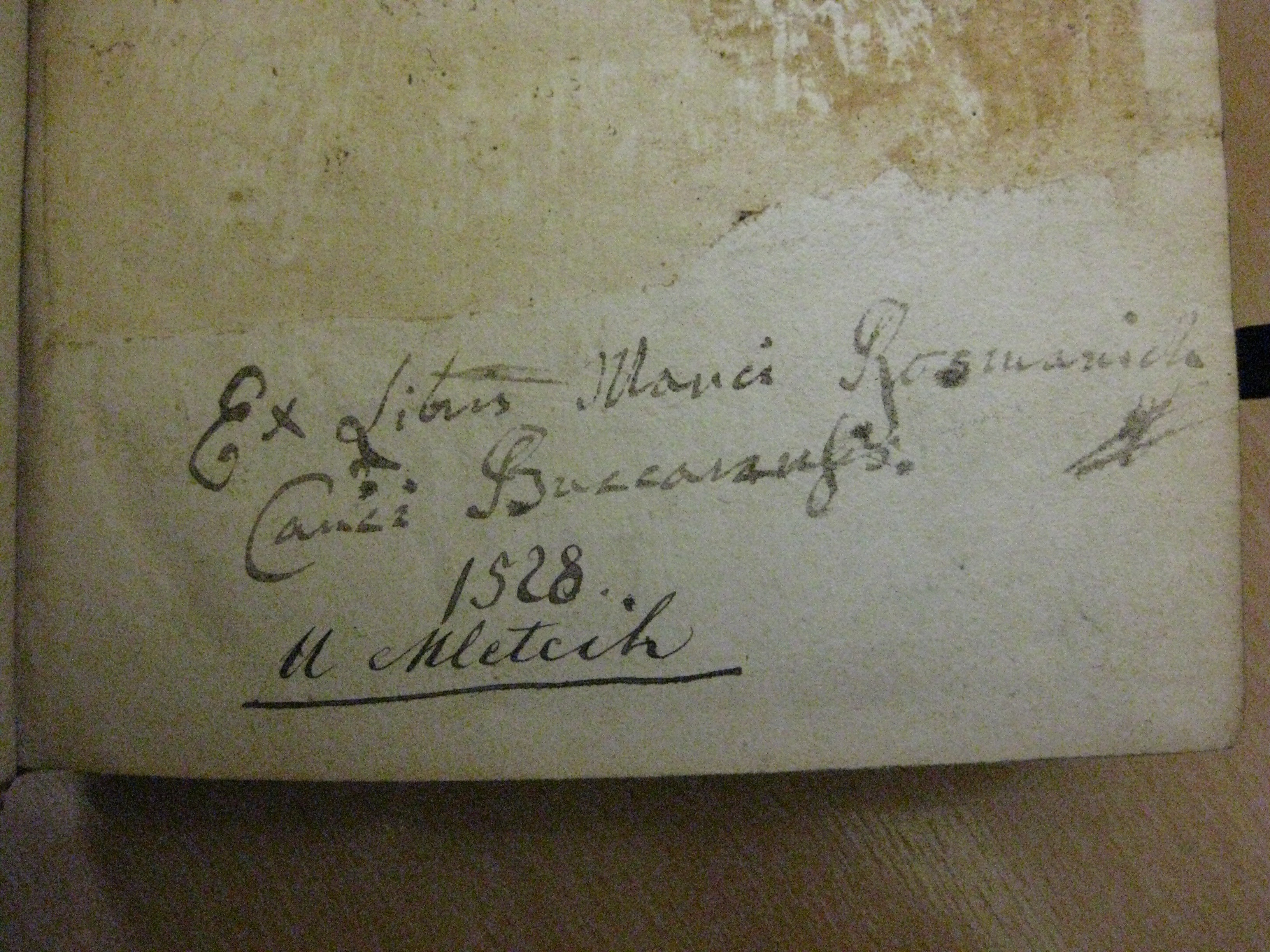  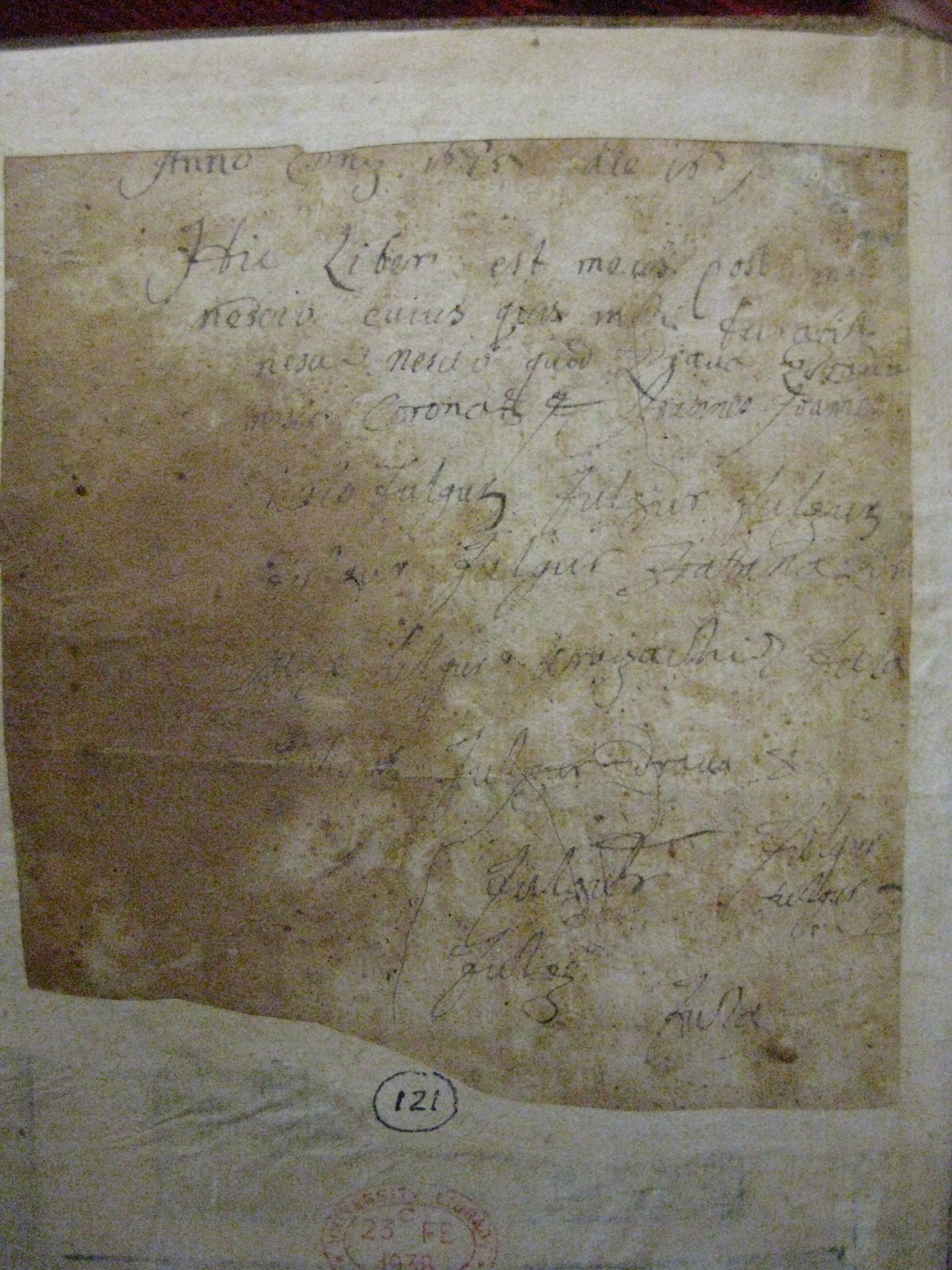 |
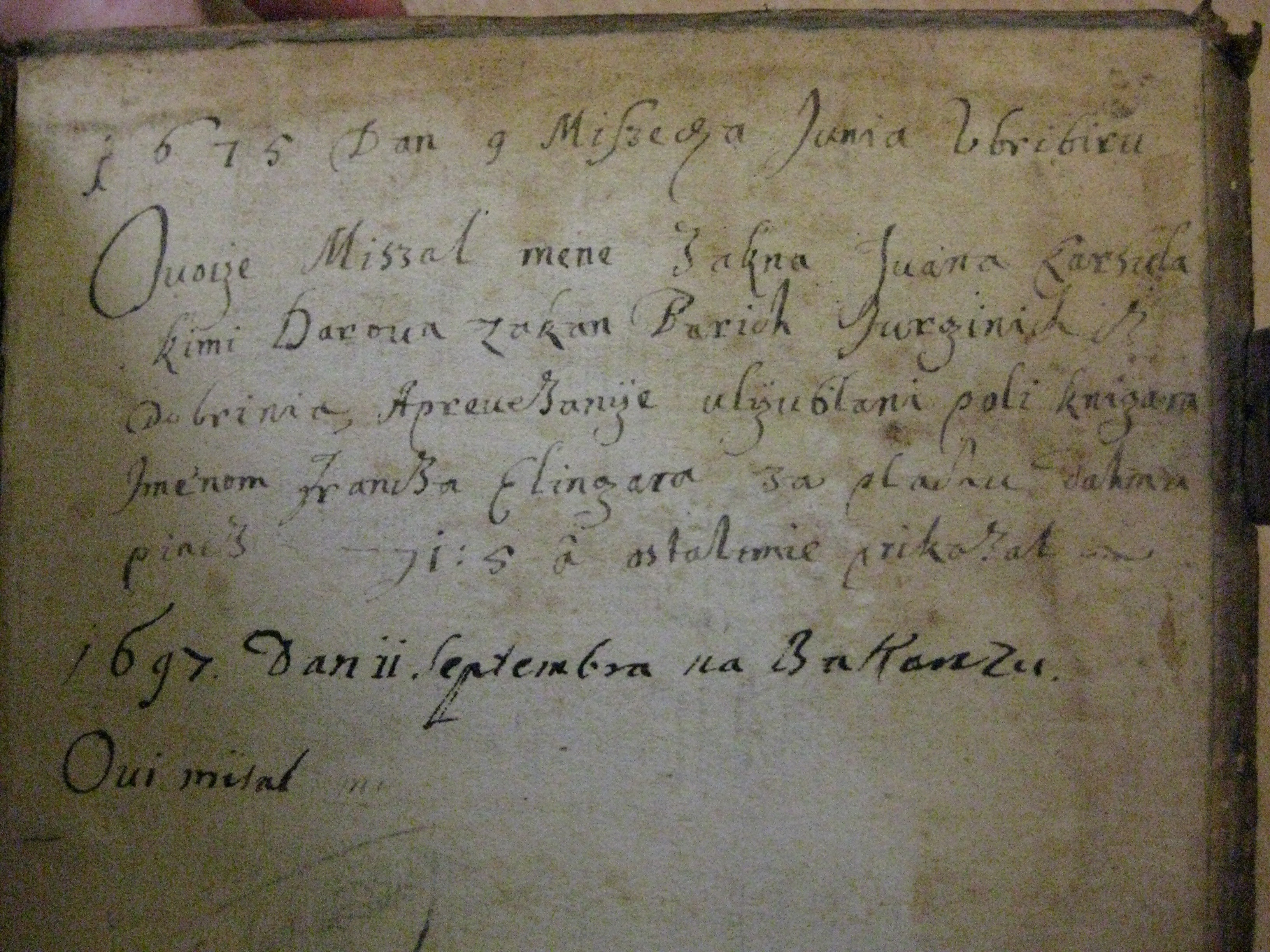 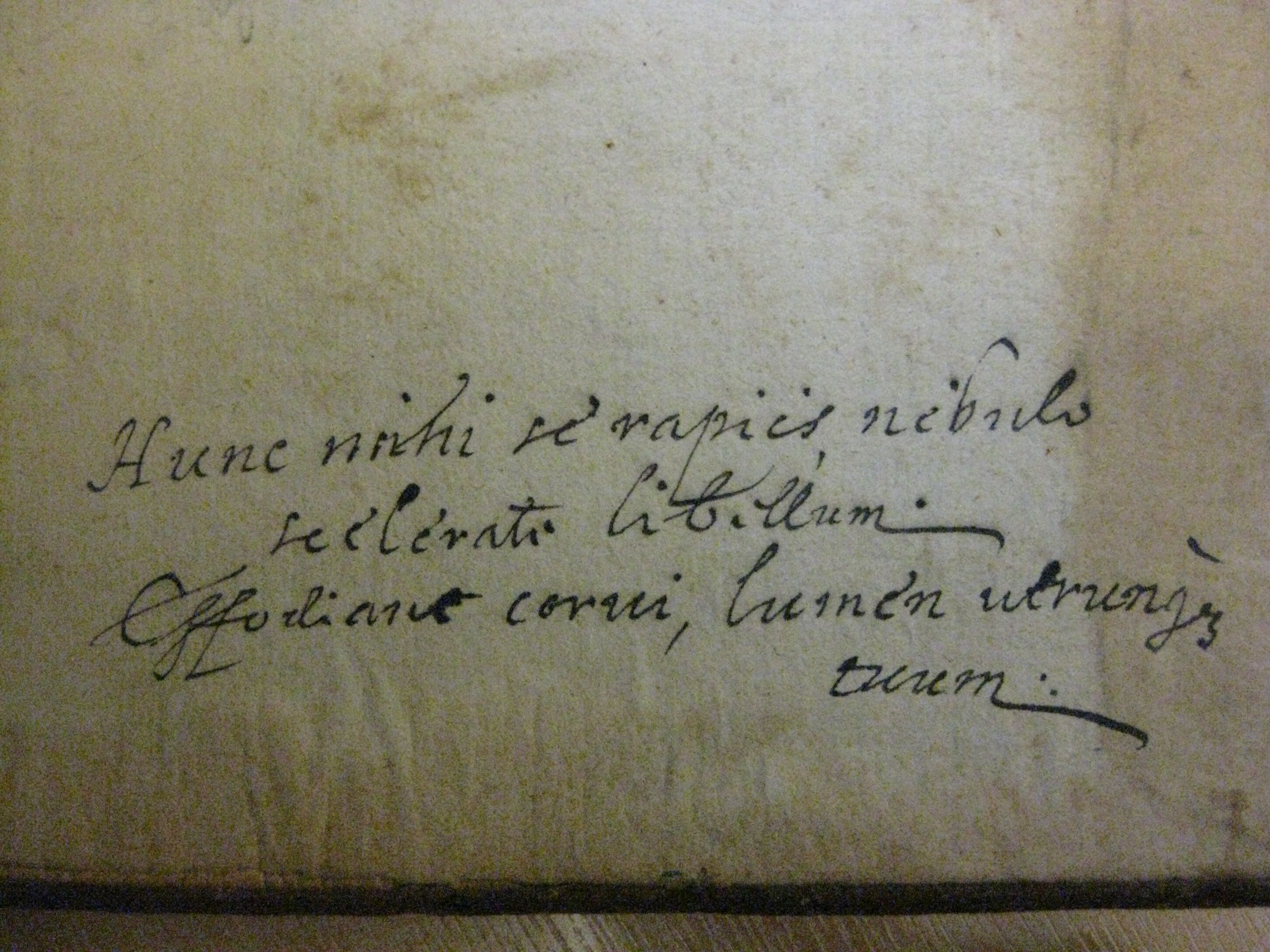 |
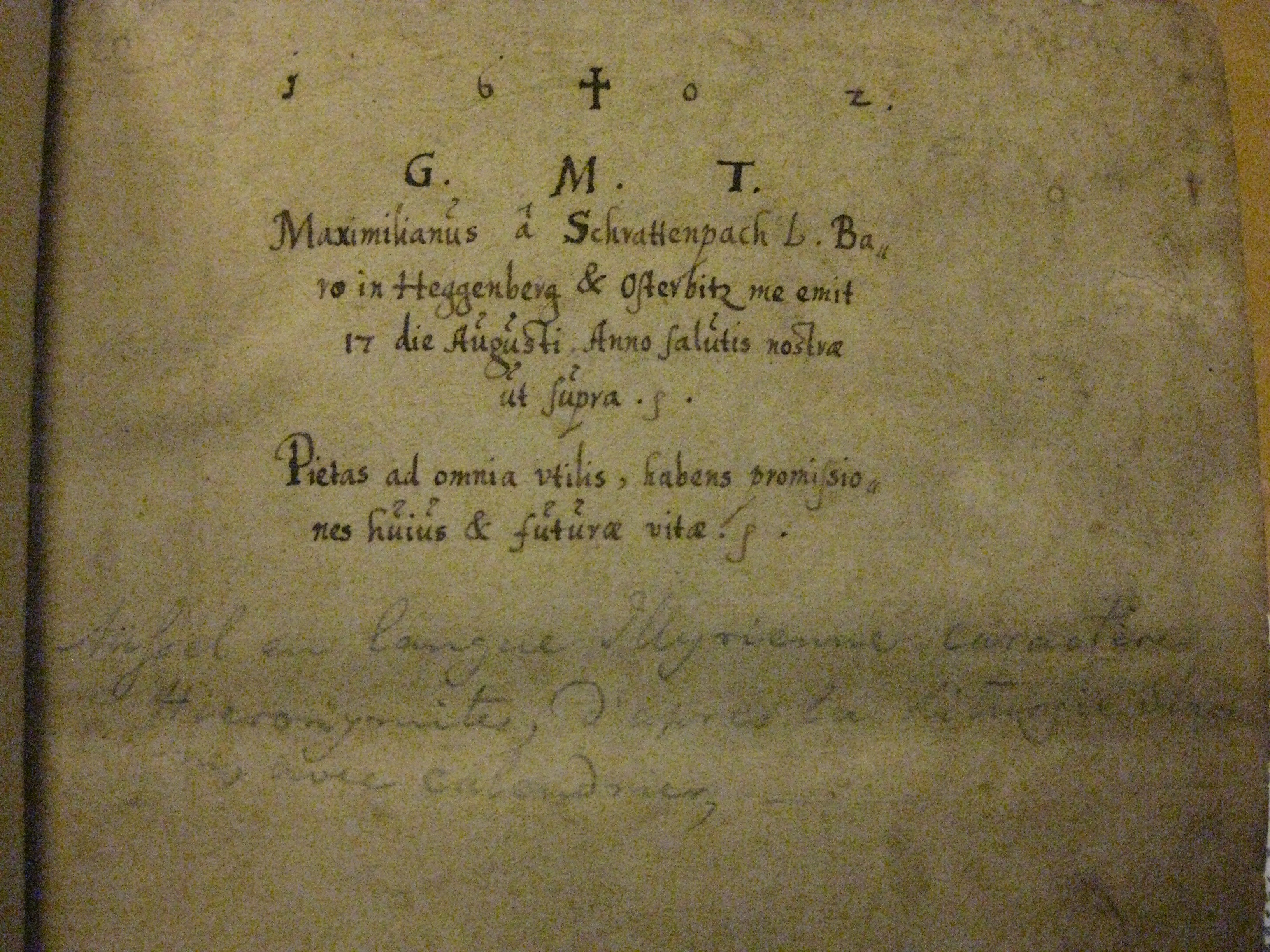 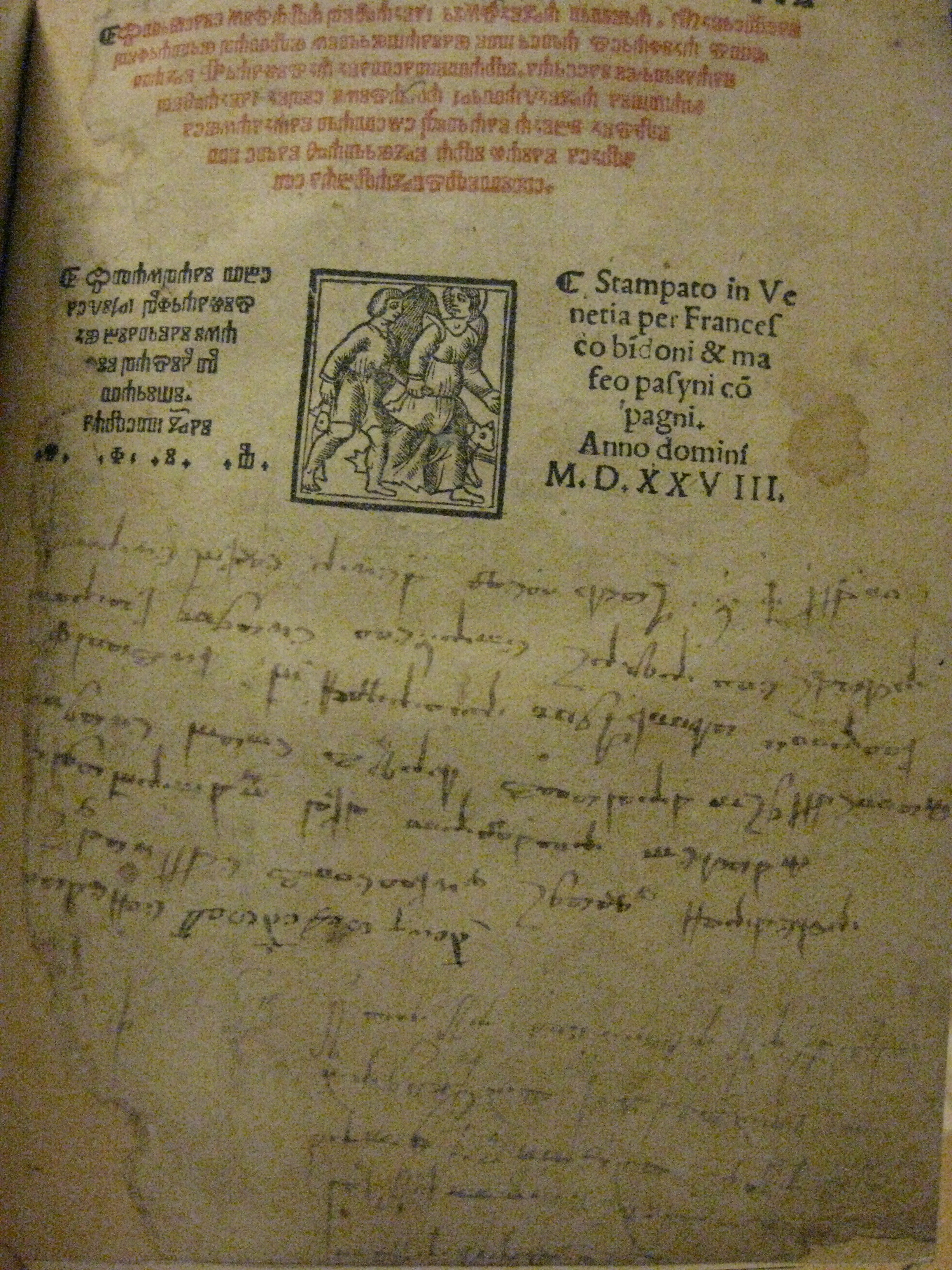 |
Click on each image to see it enlarged. Images of the BL Missal reproduced by kind permission; ©BL.
The UL’s copy was clearly used actively in private devotion, with prayers in at least two different hands written on its preliminary pages, and the calendar section of the Missal annotated to mark the deaths of those known to the owner. It eventually came to the Library in 1938, one of many purchases made through the bequest of Arthur Bromby Wilson-Barkworth. It can be consulted in the Rare Books reading room (F152.d.2.10). Work to upgrade its record and those of related books will continue in the new year.
We wish you, in Croatian, a Happy Christmas – Sretan Božić! Which is, of course, in Glagolitic:
Back to top of the page.
November 2015
The November 2015 Slavonic item of the month is a small Czech addition to the Waddleton collection of colour-printed books. Pohádka o zdravých dětech (A tale of healthy children; Waddleton.e.7.33) was printed in Prague in 1923. Its verse and drawings tell its young readers of the importance of a healthy way of life.
Front cover (and title page) of the book.
The story is framed by a doctor telling children about a country where small children never get ill, “where every child has laughter in their eyes and rosy cheeks”. He then goes on to describe the healthy lifestyle of these children, with cleanliness, exercise, rest, and good diet much promoted.
The book is obviously didactic, designed to encourage small children (and those reading it with them) to live healthily. The final two verses of the book read “[these children] always cared about their health well and merrily, as the Red Cross teaches children and grown-ups to do. They knew not the illnesses which are found in the world; live as they do and you will be healthy!”
The Red Cross is mentioned elsewhere too; the volume is described on its cover as “knížka Čs. červeneho kříže” – a book of the Czechoslovak Red Cross. The first president of the organisation was Alice Masaryk, the daughter of Czechoslovakia’s first president. It was formed in 1919 and oversaw work to improve the often appalling lot of people in the aftermath of the First World War and related conflicts. Masaryk wrote in 1921 that the “Red Cross wants to increase the standard of health of the people … Health care alone will not suffice, for insufficiently nourished human beings are indifferent to concerns of hygiene. During wartimes the activities of the Red Cross were limited to the care of the wounded, but today it must take care of a whole nation.” (from Alice Garrigue Masaryk, 1879-1966, 610:1.c.95.196).
The illustration accompanying verses praising a healthy diet.
There are few traces online of Antonie Tyrpeklová, who wrote the text in the book. The Czech National Library gives only one other title under her name: Snílkové z předměstí (Dreamers from the suburbs). The artist who illustrated the book, however, is better known. Zdenka Burghauserová’s entry in the 1947-1955 Nový slovník československých výtvarných umělců (New dictionary of Czechoslovak artists; S400:05.b.9.265-267) describes her as a painter first and foremost, whose work expressed “the inner world of modern Czech women”. By the time of the book’s publication, Burghauserová (1894-1960) had already had several exhibitions, and her work as a book illustrator is mentioned in the dictionary as a very minor line of activity. Among her works featured on the Czech Visual Artists site, however, some paintings of children can be seen, with My Jarmilek particularly reminiscent of the style seen in the book.
This delightful book was accompanied by another Czech addition to the Waddleton. Also a tale to encourage good living, Bacilínek (The little Bacillus; Waddleton.b.7.89) is for rather older childen, its colour illustrations confined to a few plates.
Back to top of the page.
October 2015
The 2015 Nobel Prize in Literature laureate Svetlana Aleksievich’s books bring together the narratives of witnesses to some of recent history’s most disturbing events. The 1986 Chernobyl nuclear disaster was the subject of her book Chernobyl’skaia molitva (Chernobyl prayer; C203.d.7984 (in Russian) and 429:4.c.95.5 (in English). This post looks at Aleksievich’s book and others on Chernobyl.
Chernobyl, in capital letters (ЧЕРНОБЫЛЬ), shown in a 1969 map of Ukraine (Maps.276.96.23). The nuclear town of Pryp’iat’, famously evacuated after the 1986 disaster, would only be established in 1970.
Svetlana Aleksievich’s name had been discussed in terms of Nobel recognition for some time, and the 2015 prize was awarded to her “for her polyphonic writings, a monument to suffering and courage in our time”. In Chernobyl’skaia molitva, Aleksievich writes “this book is not about Chernobyl, but about the world of Chernobyl. Thousands of pages have already been written and hundreds of thousands of metres of film recorded about the event itself. What I am concerned with is what would be called “missed” history … I write and collect the feelings, thoughts, and words of everyday life … Chernobyl [for my subjects] is not a metaphor or a symbol: it is their home.” This is her approach to all her work; her documentary prose provides a stark and compelling picture of events through its use of the voices of the ordinary people caught up in them, the “polyphonic” quality which won her the Nobel prize. War has featured prominently in her writing so far, with women’s and children’s accounts of the Second World War and soldiers’ experiences of the Soviet-Afghan war accounting for three of her books. These are among the nine books the University Library currently has by her; these are mainly in Russian (Aleksievich is a Russophone Belarusian writer*), but the number in English will doubtless rise thanks to her Nobel fame.
*(for an exploration of Belarusian (including Russophone) books in the University Library, please see this earlier post)
Chernobyl’skaia molitva contains 3 main chapters with 6 sections between them: The land of the dead, The soldiers’ choir; The wreath of creation, The people’s choir; Delighting in sadness, The children’s choir (this last section contains excerpts from interviews with seventeen children aged between 9 and 16). These “choirs” provide the reader with an unforgettable depiction of the disaster and its aftermath.
Chernobyl is the subject of dozens of books in the University Library. Click here to see a full list (based on the Library of Congress subject heading Chernobyl Nuclear Accident, Chornobylʹ, Ukraine, 1986). They are chiefly in English, with Russian a fairly distant second. Aleksievich’s book is among the three most recent Russian-language additions. The other two are both 2011 publications. Chernobyl’ : bol’shaia lozh’ (Chernobyl : a big lie; C203.d.2888) is by Alla Iaroshinskaia, a journalist and Gorbachev-era politician who has written several times on the disaster. The other book is rather less standard University Library fare. Chernobyl’ : real’nyi mir (Chernobyl’ : the real world; C203.d.2426) is described on its front cover as a “sensation”. Written by two people now living in the closed zone around the plant, it is a bizarre mixture of curious insights into the world of the closed zone (which many original inhabitants refused to leave) and distasteful exploration of the area in terms of popular disaster fiction books and video games. Its front cover (below, right) speaks volumes. By no means an academic publication, this book is nevertheless a useful addition to the Library as an example of the way in which Chernobyl’ has attained the status of science fiction in some parts of society.
L-R: covers of: Chernobyl : a big lie, Chernobyl prayer, and Chernobyl’ : the real world.
Chernobyl books have come in steadily over the years, with 27 items from the first five years after the explosion and publication peaks for anniversary years (8 in 1996, 6 in 2006). The thirtieth anniversary of the disaster, in 2016, will doubtless see further books be added to our collections.
Back to top of the page.
September 2015
Belarus has a small but steady presence in the University Library, with over 1800 items published in Belarus held here already and a dozen or so more added every year. The primary language is Russian, with Belarusian a sizeable minority. This post looks at the language divide in our holdings and at some recent acquisitions.
Covers of books in the library of P.F. Hlebka contained in the recently acquired bibliography of his collection (C210.c.2092)
Of the books produced in Belarus held by the University Library, fewer are in Belarusian (750) than in Russian (950). To a certain extent, this is a reflection of the Library’s collection development policy which focuses on material in languages taught in the University. Russian is the main Slavonic language to be taught in Cambridge, and Belarusian is not taught, although Belarus and its culture and history do feature postgraduate and post-doctoral research. The division of languages in our Belarusian holdings is also, however, to a degree representative of language use in Belarus itself.
Belarusian and Russian are both official languages in Belarus. The 2009 Belarus census (data from http://census.belstat.gov.by) showed that the two languages were at that point almost neck and neck in usage. As native tongues, Belarusian and Russian between them accounted for over 90% of the country’s 9.5 million inhabitants, with over 5,000,000 native Belarusian speakers and just under 4,000,000 native Russian speakers. The census also asked recipients to name any non-native languages known fluently. Belarusian had 1,280,000 responses for this and Russian 1,300,000. The CIA World Factbook section for the country, however, suggests that Belarusian is now very much in the minority, giving Russian as the native tongue of an eye-popping 70.2% of the population against a very low 23.4% for Belarusian.
The University Library’s holdings in Belarusian date mainly from the last 100 years. The pace of accession was very slow until it picked up in the 1960s (a decade represented by 60 Belarusian books) and then peaked in the 1980s (261 books). Figures since then have waned, most sharply between the 1990s (203) and the 2000s (50), but the figure of 39 books acquired so far this decade hints at a small revival. In all decades, these books made up fewer than 50% of our accessions from Belarus itself, with Russian standardly the main language. This largely continues to be the case to this day. A recent batch of arrivals has included the books detailed below, beneath the image which shows the covers of three of the arrivals.
The covers of three books discussed below (L-R item 3 under Belarusian, item 3 under Russian, item 2 (scaled down!) under Belarusian)
Belarusian
– Selected works on Belarusian grammar and lexicology by the renowned philologist A.M. Bulyka (C204.d.2137)
– A large-scale book of writings dedicated to Iazap Drazdovich (1888-1954), the Belarusian artist and scholar, accompanied by selected works by him (C201.b.7545)
– A bibliography of the 3867-volume library of the Soviet Belarusian poet and dramatist P.F. Hlebka (C210.c.2092). The volume includes a section of reproductions of the covers of books within the collection (some are shown in the illustration towards the top of the page).
– The selected works of Frantsishak Bahushevich, a major figure in 19th-century Belarusian literature (C204.d.2134). Before the acquisition of this volume, Bahushevich was represented in our collections only by a 72-page book of poems produced under a pen name (756:33.d.95.211).
Russian
– Belarusy v evropeiskom soprotivlenii (Minsk, 2015) – while the Belarusian partisans’ role within their country is fairly well known, V.P. Pavlov examines in this book the role played by Belarusians in resistance organisations in other countries across Western and Eastern Europe, including resistance work within prisoner of war camps (C204.d.2140)
– Five volumes of catalogues of the 17th-century (888.c.730) and 18th-century (888.c.731(1-4)) rare books of the Radziwill collection held by the Iakub Kolas Central Academic Library in Minsk. These lovely books provide detailed descriptions of hundreds of books, accompanied by facsimiles of notable title pages, provenance marks, and so on.
– Finally, Dokumental’naia pis’mennost’ Velikogo Kniazhestva Litovskogo (C210.c.2138) by A.I. Grusha, which looks at the introduction of the use of written documents as records of transactions and ownership in the Lithuanian Grand Duchy, whose territory included modern-day Belarus.
Back to top of the page.
August 2015
Three recent acquisitions – The Russian theatre (New York, 1922), Bonfire : stories out of Soviet Russia (London, 1932), and A history of Russian literature (1927) – bear marks of provenance that make their addition to the Library’s collections particularly valuable. The first, for example, contains a lengthy dedication to the Ballets Russes choreographer Michel Fokine from theatre producer Morris Gest.
Oliver M. Sayler’s The Russian theatre is a much-expanded version of an earlier work, The Russian theatre under the Revolution, and covers theatrical work in late Imperial and early Soviet Russia as well as Russian theatre in other countries. On the flyleaf in our copy (at Syn.5.92.110) is the following text:
To Michel Fokine, To whom America and in fact the whole world is indebted for his great artistry and for his genius which spoke the first word for Russia to America through his great creations of the Ballet Russe. For myself I shall always cherish the moments of our association and always be proud of knowing you! Affectionately, Morris Gest
Michel Fokine (1880-1942) was an massively influential choreographer best known for his work with the Ballets Russes, all of whose earliest performances he choreographed. While the company continued to perform his works throughout its existence, the deterioration of relations between Fokine and Diaghilev (the founder of the Ballets Russes) caused the former to sever his connections with the company within only a few years of its formation in 1909. By the time Morris Gest wrote his dedication in The Russian theatre, Fokine was in the United States. The American National Biography Online’s entry for Fokine provides the connection between dedicator and dedicatee. Fokine choreographed the ballet sections for Aphrodite and Mecca, two “oriental extravaganza[s]” produced by Gest.
The University of Texas’ Harry Ransom Center holds the Morris Gest Collection, and their front page for the collection contains interesting details about Gest’s own life. Gest was, as Fokine, born in the Russian Empire – in modern-day Lithuania. At the age of 12, he emigrated alone to the United States. The extraordinarily self-reliant and enterprising Gest (the Mishka Gershonovitch who had set out from Vilnius had adopted an American name) eventually built an impressive career in theatre production. Working with Fokine was only one example of the many times that Gest involved Russian artists. He brought, for example, the famed Moscow Art Theatre over for several tours.
Bonfire : stories out of Soviet Russia contains dozens of short stories by a total of 24 Soviet writers. The University Library’s copy (S950.d.9.279) contains the pretty bookplate as well as the confident signature of a previous owner – Monja Danischewsky. The bookplate (shown to the left) also has worked into it the name “Brenda”, Danischewsky’s wife. Monja Danischewsky was a scriptwriter, whose output included the script for Toptaki. Danischewsky was, again like Fokine and Gest, of Russian origin. Born in 1911, he was brought out of Russia in 1919 when his family fled the civil war. The Library holds Danischewsky’s autobiography White Russian–red face at 9415.c.878. Bonfire : stories out of Soviet Russia was put together by Serge Konovalov, of Birmingham’s Russian department, and includes one story (‘The cave’ by Zamiatin) translated by Prince D.S. Mirsky, a copy of whose A history of Russian literature is the last of the three recent acquisitions.
This was one of Mirsky’s landmark works – and this copy (at S950.d.9.278) contained a handwritten letter from him. The Oxford DNB article on Mirsky is written by G.S. Smith, the author of his biography (757:67.c.200.1). Also an Russian emigre (born in modern-day Ukraine) – the emigration necessary both through his own career as a White officer but also through his father’s work as a government minister in Imperial Russia – Mirsky was an extraordinary philologist whose books on Russian literature remain key reading to this day. He worked at the School of Slavonic Studies, as it was then called, in London from May 1922 for nearly 10 years. His association with the School ended in connection with a fact that seems extraordinary on the face of it – the White Army prince had become a Communist and applied for (and been granted) Soviet citizenship. In September 1932, Mirsky moved to the Soviet Union, where his new-found political zeal could not quite erase the Soviet memory of his background. The Stalinist purge of 1937 would claim him; he died in Siberia in 1939.
The letter is dated 22 April 1930 and contains Mirsky’s very positive responses to editorial feedback. “I was sure the book was too long,” he writes, “& I was precisely expecting you to tell what parts should be best compressed. There will be no difficulty in doing that.” Mirsky writes from the Hotel Littré in Paris and suggests a meeting at his editor’s club in London on the 29th (whether or not lunch might be included isn’t mentioned; Mirsky was an infamous gourmand). It isn’t clear about which new book or edition Mirsky and his editor (Mr Burdett) are in correspondence, nor can we be sure that the letter always belonged in this book. Nevertheless, the letter itself is a remarkable addition to our collections – a palpable connection to a fascinating figure. The letter is now in the safe hands of the Manuscripts Department, at MS Add. 9750/269.
Were the letter from Mirsky not enough, this copy of A history of Russian literature also contains the signature of a previous owner – the renowned artist R.B. Kitaj, a Jewish-American painter with East European roots. The Oxford DNB article on Kitaj details his work and life (the Oxford Art Online article on him has more on the former and less on the latter), with Kitaj’s painful departure from England – where he had lived for decades – back to the United States discussed in some detail. The book in hand would most likely have been acquired and then later left by Kitaj during his long sojourn in this country. His connection to the UK continues not only in the great number of his works in art museums (the Royal Academy alone holds 179 pieces) but also in the vast tapestry reproduction of his complex If not, not which hangs in the British Library’s lobby.
Back to top of the page.
July 2015
The Russian-language monthly children’s journal Murzilka was launched in 1924 and enjoyed huge popularity throughout the Soviet Union. In 2014, the publisher TriMag started to produce Arkhiv Murzilki (Archive of Murzilka), and the University Library has recently received the first four books in the set. Arkhiv Murzilki provides a selected anthology of material from the journal. While texts are largely reproduced in modern typography, the high level of illustrative matter included is reprinted without changes. It is a very interesting addition to our Slavonic collections, providing a fascinating and beautiful snapshot of Soviet life as it was portrayed to young children. Although the readership was juvenile, the journal covered all kinds of areas of Soviet experience, including World War 2 (Murzilka was, amazing, printed throughout the war) and achievements in industry and architecture. The image below shows the wherewithal for building a paper model of the Palace of the Soviets (never completed in real life), complete with a banner-bearing march at its front.
Cover of the Oct. 1947 Murzilka, celebrating the Revolution’s 30th anniversary. From S950:01.a.122.1
The compilers of Arkhiv Murzilki, which was published to mark the journal’s 90 anniversary (it remains in print to this day), planned to complete the publication in 3 volumes, with each volume covering a particular span of years. The first of these covers the first 30 years, 1924-1954, and is called ‘A history of the country through the eyes of a children’s journal’. It includes an introduction which provides some history of Murzilka. Initially published as an add-on to the workers’ newspaper Rabochaia gazeta, it eventually came under the auspices of the Communist Party’s youth organisations.
The build-your-own version of Boris Iofan’s Palace of the Soviets. From S950:01.a.122.1
Volume 2, called ‘The golden age of Murzilka‘ was published in two parts: book 1 covers 1955-1965, book 2 covers 1966-1974. The final volume – ‘A friend for all times’ – covers 1975-1984, and of this volume, we have so far received book 1. This covers the whole decade allocated to the volume, so we will have to wait and see whether more books within the third volume appear in due course – and, indeed, any further volumes. Our holdings of the title so far (volumes 1-3(1)) stand at S950:01.a.122.1-4 and can be ordered to the West Room.
A WW2-era illustration of an air-raid alarm practice. From S950:01.a.122.1
Although the Library holds some Russian-language children’s literature by major authors such as Samuil Marshak and Kornei Chukovskii, we collect in this area very conservatively. In terms of Murzilka itself, we own three physical issues. These are recorded on this shared record and come from the Waddleton collection (1954 no. 8, 1962 no. 6) and the Catherine Cooke collection (1927 no. 3). Looking at the 1927 copy as an example of a complete issue gives an insight into the kind of material that Arkhiv Murzilki has not preserved. A very interesting and diverting part of the issue, and one which does not feature in Arkhiv Murzilki, is the correspondence section. Children write in from across the Soviet Union to talk about their lives or particular events (in this issue, the particular event is the discovery by a reader in Vladivostok of a strange-looking potato). The correspondence section’s donations subsection is particularly captivating. Here Murzilka’s editorial team record details of donations made by its readers via the journal. N. Bratchikov, for example, has sent in 78 kopecks for the blind. Those benefiting most from the young readers’ generosity, however, are English miners, presumably in the aftermath of the 1926 strike. One 5-year-old reader from Turkmenistan writes in to say “Mama read to me from Murzilka that children are collecting for the English miners. I asked her for a pretty box, and I took it around our neighbourhood to ask people to give kopecks for the miners. I collected 50 kopecks. Then Mama wanted to buy me chocolate, but I added the money for that to the collection, so here is 1 rouble. Please send it on.”
A guide to book publishing. From S950:01.a.122.1
As with all children’s journals, the positive picture of life Murzilka paints is often rather too good to be true, but the journal (and therefore Arkhiv Murzilki) provides a very eye-catching and interesting insight into the Soviet Union its youngest citizens saw in their favourite title.
Back to top of the page.
June 2015
Eighty years ago, a group of British trade unionists and co-operative members travelled to the Soviet Union for a 4,000-mile tour around European Russia and Ukraine. The archive of one delegate, Herbert Clinch, a printer from Kent, was presented to the University Library three years ago and is this month’s Slavonic item of the month.
The archive contains photographs, postcards, and notes from the Soviet Union, and additional ephemeral material such as money, cigarettes, and a poster advertising a talk Clinch gave on what he had seen. Two articles by Clinch are also preserved in the archive: a piece he wrote for the Kent messenger in June 1935, shortly after his return, and one for the August 1935 edition of the Typographical circular. In these, he expressed sincere admiration of the Soviet Union’s achievements. His Kent messenger article starts:
It is not easy for me, a worker with my hands, to set down all that I saw in this marvellous country, where they do things on a scale so vast that it staggers the imagination.
The 22 British delegates sailed to Leningrad on a Soviet steamer, a journey lasting 5 days. They spent their time in Leningrad visiting factories, schools, hospitals, and cultural institutions, before taking the train to Moscow. There they joined a reported 3.5 million Muscovites to watch the May Day parade on Red Square (some of Clinch’s photos of this day make up the second illustration here). Clinch also had the chance in Moscow to see some of his own line of work in operation, viewing the printing of 3 million copies of Pravda in 4 hours.
After a trip to Moscow’s Red Army Academy, the delegation headed south, to Stalingrad, where they visited a collective farm. An inspection of sanatoria in Sochi on the Black Sea coast followed, continued in Kislovodsk in the Caucasus. The delegation then turned west and visited eastern Ukraine, viewing factories in Kramatorsk and Kharkov, before heading back to Leningrad via Moscow.
Clinch was clearly amazed by what he saw in the Soviet Union, commenting favourably on almost all aspects of Soviet life. In his articles, he discusses the positive attitude of workers towards their work and the care shown by government and management towards workers in turn, praises the integration of women into working life, and even makes positive mention of the penal system. His articles are by no means devoid of criticism, but his admiration takes very much centre stage.
How Clinch felt about what he had seen (and what he had written) in the light of subsequent news about life under Stalin, particularly in terms of the repressions of the later 1930s, are not recorded. While no Communist, Clinch had been genuinely impressed by the Soviet Union, and one can only assume that he must have struggled with the difference between what he himself had seen and what he subsequently heard from others.
Part of the archive contains material pertaining to Clinch’s life after his trip, including a large poster for his campaign in the 1938 Rochester municipal elections as the Labour candidate. One news clipping announces the appointment of Councillor Clinch to the position of Alderman and refers to his 1935 trip, including the detail otherwise unmentioned in the archive that he met Kalinin during his stay. Clinch served for 11 years on Rochester City Council and was also a long-standing magistrate. He died in 1977 in Rochester Cathedral, where he was a sidesman.
The archive came to the University Library through the generosity of a friend of Herbert Clinch’s late son, to complement existing archival, print, and ephemeral material relating to the Soviet Union in our collections. A full finding aid of the archive, detailing its contents, can be found on the Janus catalogue here. The archive can be ordered and viewed in the Manuscripts Reading Room.
Back to top of the page.
May 2015
Władysław Bartoszewski – Polish resistance member, prisoner, diplomat, and historian – died in late April at the age of 93. The University Library’s holdings of works by and about him date from 1968 and include a 6-volume set of his works (590:4.c.200.49-54). Our latest Bartoszewski acquisitions are the focus of the May Slavonic item of the month feature.
In his long life, Bartoszewski saw first-hand some of both the bleakest and most hopeful parts of modern Poland’s history. A young man when the Nazis arrived, he fought in the defence of Warsaw against the invading army and later in the 1944 Uprising. In between, he was imprisoned in Auschwitz and, on his release (organised by the Polish Red Cross), worked in the resistance, both in the main Polish Home Army and also in Żegota, whose work was focused on aiding Jews. In Communist Poland, he worked as a journalist and historian, but was imprisoned for much of the post-war decade. His last imprisonment came in 1981, during martial law, for his connections with Solidarność. Post-Communist Poland lauded him. In his two terms as foreign minister, he played a vital role in forging strong connections with Israel and Germany.
The death of a major figure such as Bartoszewski inevitably leads to a slew of re-editions of their work and the publication of new biographies; many of these will be acquired in due course by the University Library. At the time of writing, however, the latest of our 30 or so Bartoszewski acquisitions are three 2013 publications. Two of them relate to the plight of Jews in Nazi-controlled Poland and the Poles who tried to help them. O Żegocie (About Żegota; C209.c.4394) relates to two specific days in 1963, during a visit Bartoszewski made to Israel. On the 20th and 28th of November that year, he gave two lengthy reports on the activities of Żegota, the organisation which had helped an estimated 50,000 Polish Jews during the war and which was honoured at Yad Vashem on the second of those dates (Bartoszewski himself would later be recognised as Righteous among the nations). Remarkably, this 2013 book marks the first time these reports saw their first appearance in print, 50 years later.
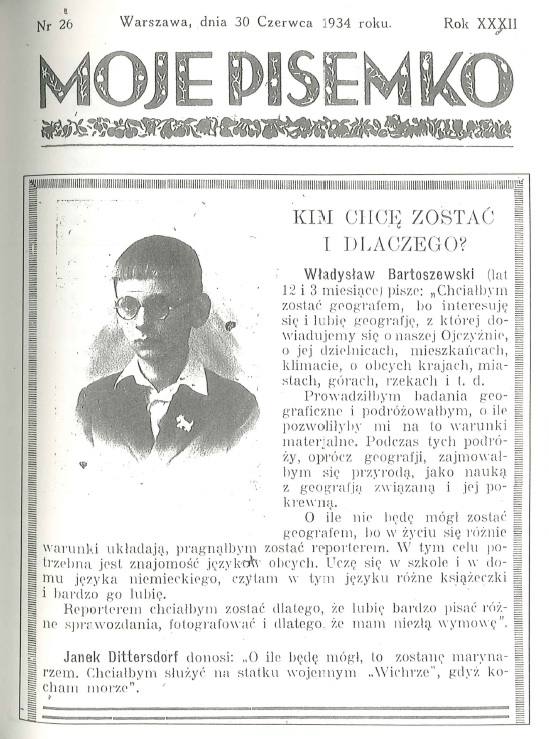
Facsimile of 12-year-old Bartoszewski's discussion of his future plans, from C209.c.6870.
Ten jest z ojczyzny mojej (This man is from my fatherland; C209.c.6871) is a new edition of a work first published in 1967. Edited by Bartoszewski and Zofia Lewinówna, its 967 pages provide rich source material about the work of Poles who helped Jews during the war. Its first section, which takes up most of the book, contains resistance members' recollections about their activities. This is followed by Dokumenty, which provides reproductions of related official and underground documents. The UL also holds two English versions of this book - Righteous among the nations (539:1.c.745.21; 1969; 834 pages) and a shorter version, The Samaritans (539:1.d.745.8; 1970; 442 pages).
The final of our three 2013 books is Mimo wszystsko (After all; C209.c.6870), which contains the transcripts of lengthy interviews of Bartoszewski by Michał Komar, in which he spoke about his life and experiences. The book, which runs to over 750 pages, is illustrated with photos of Bartoszewski and those close to him, from his pre-war childhood to his final days as a statesman. Among the most remarkable illustrations is a reproduction of a section in a Warsaw-published children's journal from the 30th of June, 1934. It shows a very serious Bartoszewski, aged precisely 12 years and 3 months, answering the question "What do I want to be when I grow up?" If, as young Bartoszewski writes, circumstances permitted, he would like to be a geographer.
Circumstances, it turned out, would change his life beyond recognition. Bartoszewski saw much of the worst that the 20th century provided, but he died an honoured and honourable man.
Back to top of the page.
April 2015
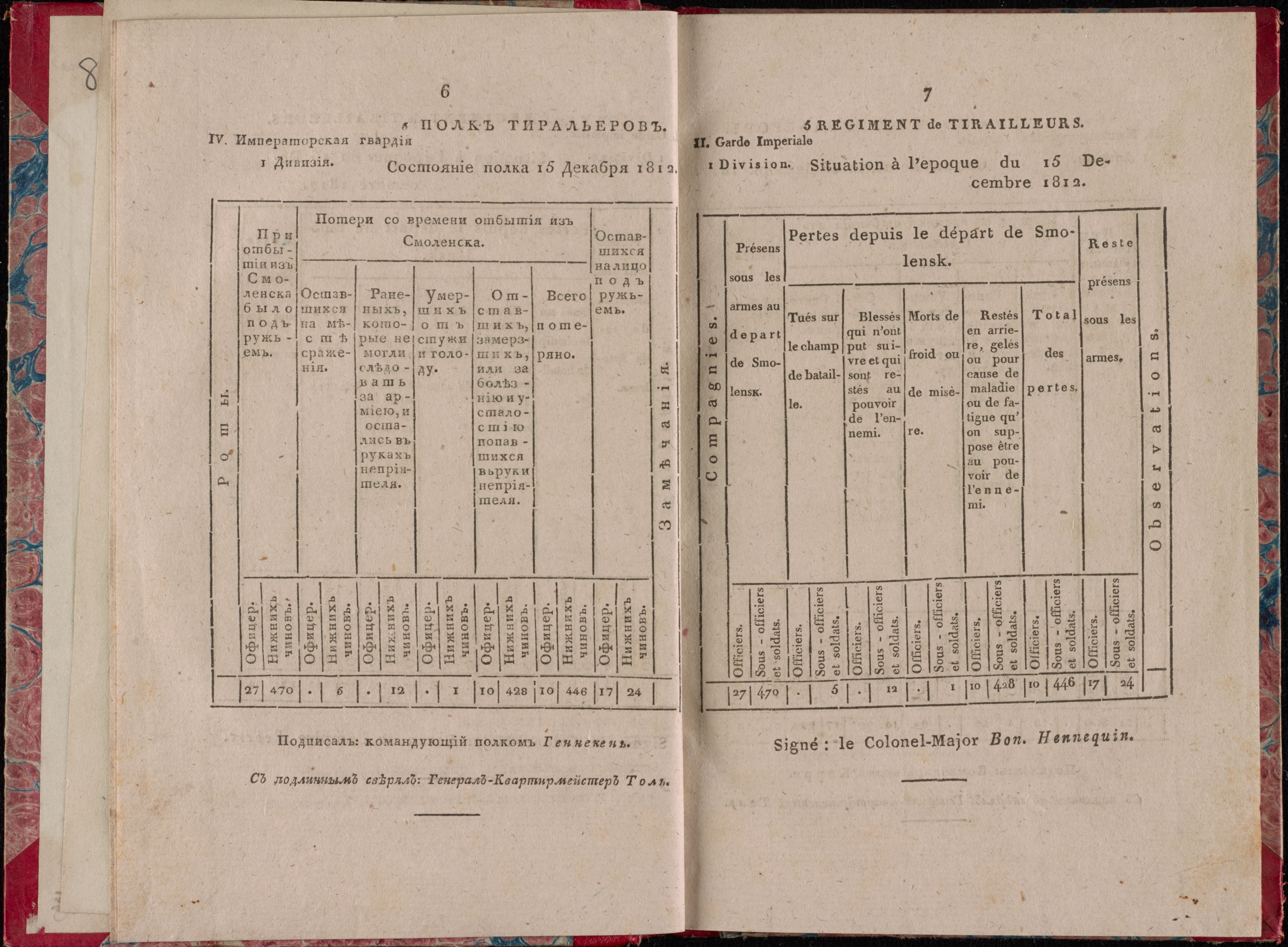
The opening which will be on display in the exhibition. It shows the list of casualties, in French (right) and Russian translation (left), of the French 5th regiment of Tirailleurs after withdrawal from Smolensk.
A University Library exhibition commemorating the bicentenary of the Battle of Waterloo opens to the public this Friday. Among the exhibits is a Russian book reporting the Imperial Army’s offensives against the French in 1813. One of its contributors, Field Marshal Kutuzov, was the subject of the first Slavonic item of the month, exactly two years ago.
The book in question is Izviestiia o voennykh” dieistviiakh” Rossiiskoi Armii protiv frantsuzov”, pervoi poloviny 1813 goda [Reports on the military operations of the Russian Army against the French in the first half of 1813; 8586.d.84]. This 155-page volume, the second of two published, contains sources from the Russian pursuit of the Grande Armée far into Prussia in the months that followed the catastrophic close of Napoleon’s 1812 invasion of Russia.
The very first section contains returns of casualties suffered by some units in the French army. These returns were seized from the enemy and therefore represent, as the covering note from Field Marshal Prince Kutuzov to the Tsar says, ‘incontrovertible proof’ that previous Russian reports of enormous French losses were ‘not exaggerated’. Four regiments of the French Guards are covered by the returns, which are provided in the original French with a Russian translation provided on the facing pages. The reports show the situation in December 1812 following the French withdrawal from Smolensk. They make grim reading. There are four categories of losses: those left on the field, those too wounded to follow the army and left in the hands of the Russians, the dead from cold and hunger, and those left behind through cold, illness, or fatigue (this category sees by far the highest figures). For all four regiments, the figures of those lost far outweigh the number of those who remained with the army. Overwhelming casualties had, of course, already crippled the French long before they reached Smolensk on their way back from Moscow.
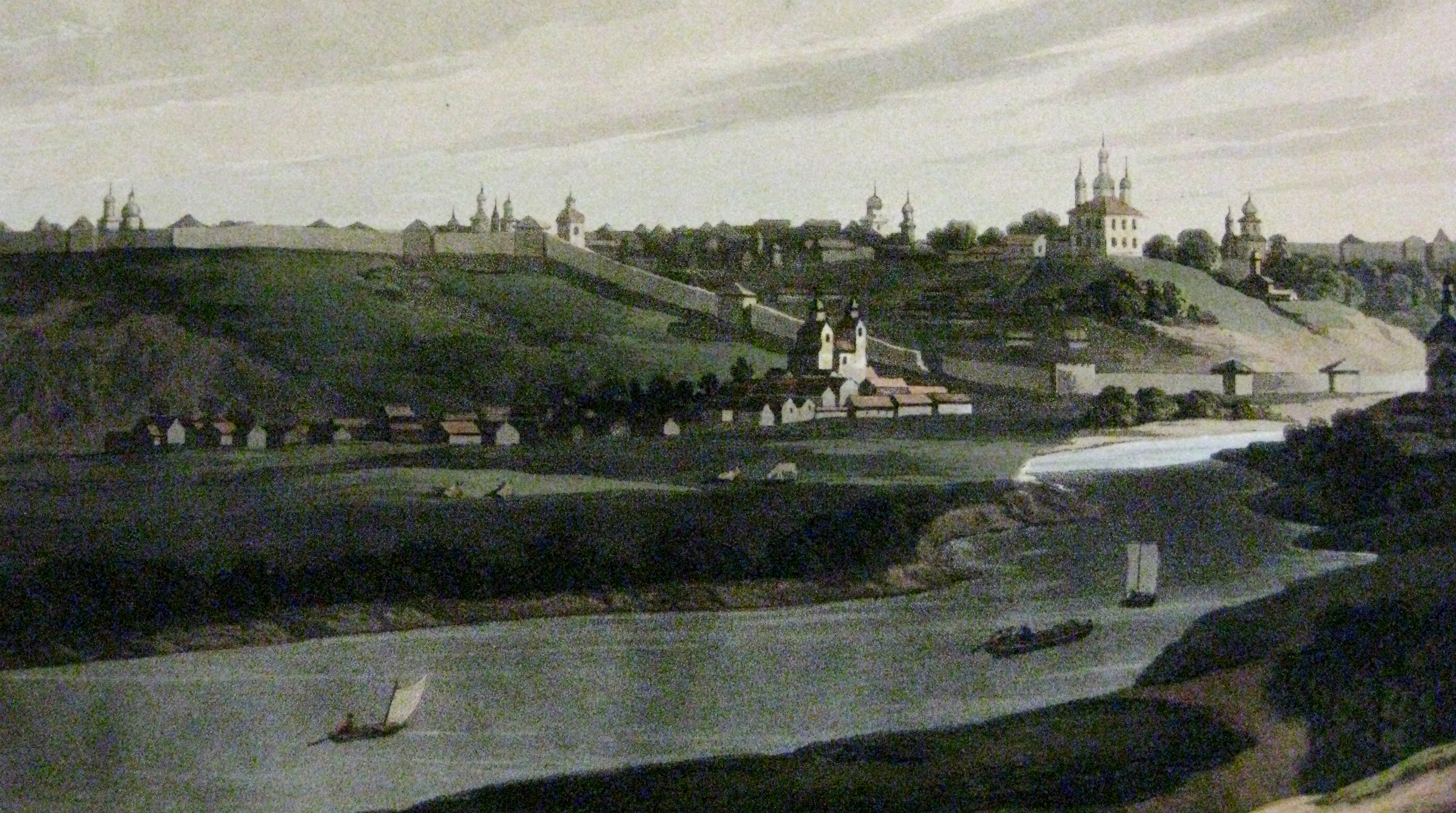
A view of Smolensk from Thomas Hartwell Horne's 1816 An illustrated record of important events in the annals of Europe, during the last four years : comprising a series of views of the principal places, battles (Harley-Mason.bb.84)
The remainder of the book contains day-by-day reports from the army’s headquarters and senior staff as the Russians pursue the French far beyond Russia’s borders. Occasional intelligences from Imperial Russia’s other active conflict of the time, the Russo-Persian War, also appear. The Tsar himself makes frequent appearances in the book, as his own headquarters travels to follow the French retreat. Some events are covered more than once, as different sources follow one another to give a fuller picture. Some sections contain very detailed figures. In the description of the siege of Toruń, for example, we are given a daily summary of the numbers of projectiles thrown into the fortress. Others, particularly sections which look back at the events of a particular part of the campaign, are more emotional and colourful, with commanders paying homage to the bravery of their troops or describing the army’s reception in a newly taken town or village.
Towards the end of the book, we find a report of the death of Field Marshal Kutuzov, whose words opened the volume. The Tsar had honoured him with the victory title High Prince Smolenskii in late 1812, to mark his decisive role in the Russian victory at Smolensk. He died in April 1813 at the age of 67 in Bunzlau, having led the victorious army far from the bounds of the empire they served. [A biography of Kutuzov published in 1813 was the first Slavonic item of the month, in April 2013]
The whole book makes for exciting reading and is to be recommended to Russian-reading researchers of the period. The University Library copy bears on its title page a stamp from the library of Prince Aleksandr Nikolaevich Golitsyn. Golitsyn was not a military man, but was a significant figure within the Imperial administration. A trusted adviser of the Tsar, he would have been carefully apprised of the events the book covers, and it is intriguing to think that our copy once belonged to him.
Back to top of the page.
March 2015
Earlier this year, the University Library started to buy Ukrainian material by approval plan. This method involves the vendor helping with selection by providing a tailored shortlist of books based on an agreed profile. The first delivery of Ukrainian books selected in this way has recently arrived; this post examines some of the new arrivals.
Book selection is a major part of the work of the European Collections and Cataloguing department. Several language areas are partially served by approval plans (a 2013 blog post discussed the French fine art approval plan), but this method had not previously been employed by the Slavonic section. Small Ukrainian print runs, however, have often caused us to miss out on material we would like to have bought, and for this reason we decided this year to try out the use of an approval plan for material published in Ukraine. In our profile, we stated that our main interest is in recent academic books in Russian or Ukrainian about Ukrainian or East European culture and history.
Several parcels have turned up in recent days, containing the first of the 139 items we have ordered via approval plan so far (few have been catalogued so far; classmarks for the items featured below will be added over time). Among the new arrivals are literary and historical works, but by far the most strongly represented subject is modern-day Ukraine and its troubles.
In terms of books about Maidan and the events which have followed, we agreed with the vendor to relax certain rules stated in our approval plan profile. Academic material about the situation will be published eventually; in the meantime, the books appearing on the Ukrainian and Russian markets are more memoiristic or journalistic. Nevertheless, it is extremely important that the University Library can provide its readers with examples of what is being produced. Many of the books we have received on approval plan so far which relate to the current and recent situation are much shorter than we would otherwise usually stipulate and almost all lack the academic, intellectual distance from events that we would otherwise seek. Among these books are:
- 94 dni : Ievromaidan ochyma TSN (94 days : Euromaidan in the eyes of TSN [a daily Ukrainian news programme]; 169 pages) – a heavily illustrated chronology of the events of Maidan, as seen and shown by TVN.
- Euromaidan : history in the making (281 pages) – a Ukrainian-English bilingual book of photographs of Maidan.
- Znakove svitlo Maidanu (The symbolic light of Maidan; 44 pages) – Maidan-inspired poetry by award-winning poet Nadiia Dychka, illustrated with photographs.
- Voina : perepiska odnoklassnikov (War : correspondence between classmates; 121 pages) – an interesting but depressing book containing an e-mail chain between Irina Anilovskaia in Ukraine and her old school classmate in Russia, held over the course of 3 days in March 2014. The conversation about Maidan and Ukraine-Russian relations starts warmly as the two friends try to make sense together of what is taking place, but gradually degenerates until the two part ways entirely.
- ATO : istorii zi skhodu na zakhid (ATO : stories from east to west; 82 pages) – ATO stands for Anti-Terrorist Operation; in the current Ukrainian context, it is a term specifically applied to the fighting in the east of the country. The heroes of Marharyta Surzhenko’s stories are, like her, young people from Luhansk who have moved west within the country to escape the violence.
These books join others already purchased by the Library about Maidan, the takeover of Crimea, and the war in eastern Ukraine. Some of these earlier purchases were discussed in an previous blog post.
Of the other books which have arrived, some are literary, such as:
- Anarchy in the Ukr (C203.d.9607) – a novel by the very popular and lauded writer Serhii Zhadan. Although the novel came out some years ago, this is the Library’s first copy of the book. Even this is touched by the current situation, however – our copy, printed in 2014, includes an additional work: Zhadan’s Luhans’kyi shchodennyk (Luhansk diary).
- Vybrani tvory (Selected works; C203.d.9504) – a collection of poems, manifests, and critical works by Valer’ian Polishchuk. This book is one in a series called ‘Rozstriliane vidrodzhennia’ (Executed Renaissance) produced by the publisher Smoloskyp, providing selected works, complete with critical commentaries, of writers who died in the 1930s. All catalogued books in the series can be seen here.
The last two books we have picked out from the new arrivals are about film – more specifically, about the film director Sergei (Serhii in Ukrainian) Paradzhanov, who died 25 years ago. Paradzhanov, born in Armenia and a Moscow graduate, was closely associated with Ukraine, living and working there for a long time. Both books contain articles by various authors, with the first focusing on the director’s relationship with Ukraine and the second on his films.
- Serhii Paradzhanov i Ukraina (Sergei Paradzhanov and Ukraine; C209.c.3795)
- Ekrannyi svit Serhiia Paradzhanova (The screen world of Sergei Paradzhanov)
Vendors usually send books they have selected by approval plan directly to the Library, with the default being that the Library will keep what we are sent with only rare exceptions. Since the Library's Ukrainian approval set-up is still in its infancy, the vendor will continue to e-mail lists of suggested items in advance so that we can help fine-tune their selection for us.
It is very gratifying to know that we are now able to get good and interesting books more quickly and with less chance of disappointment. So far, the vast majority are published in west Ukraine (mainly Kyiv) and predominantly in Ukrainian - only one of the books featured above is in Russian. As a peaceful resolution to the awful situation elsewhere in the country is found, we hope, then we will be able to look forward to a more representative selection.
Back to top of the page.
February 2015
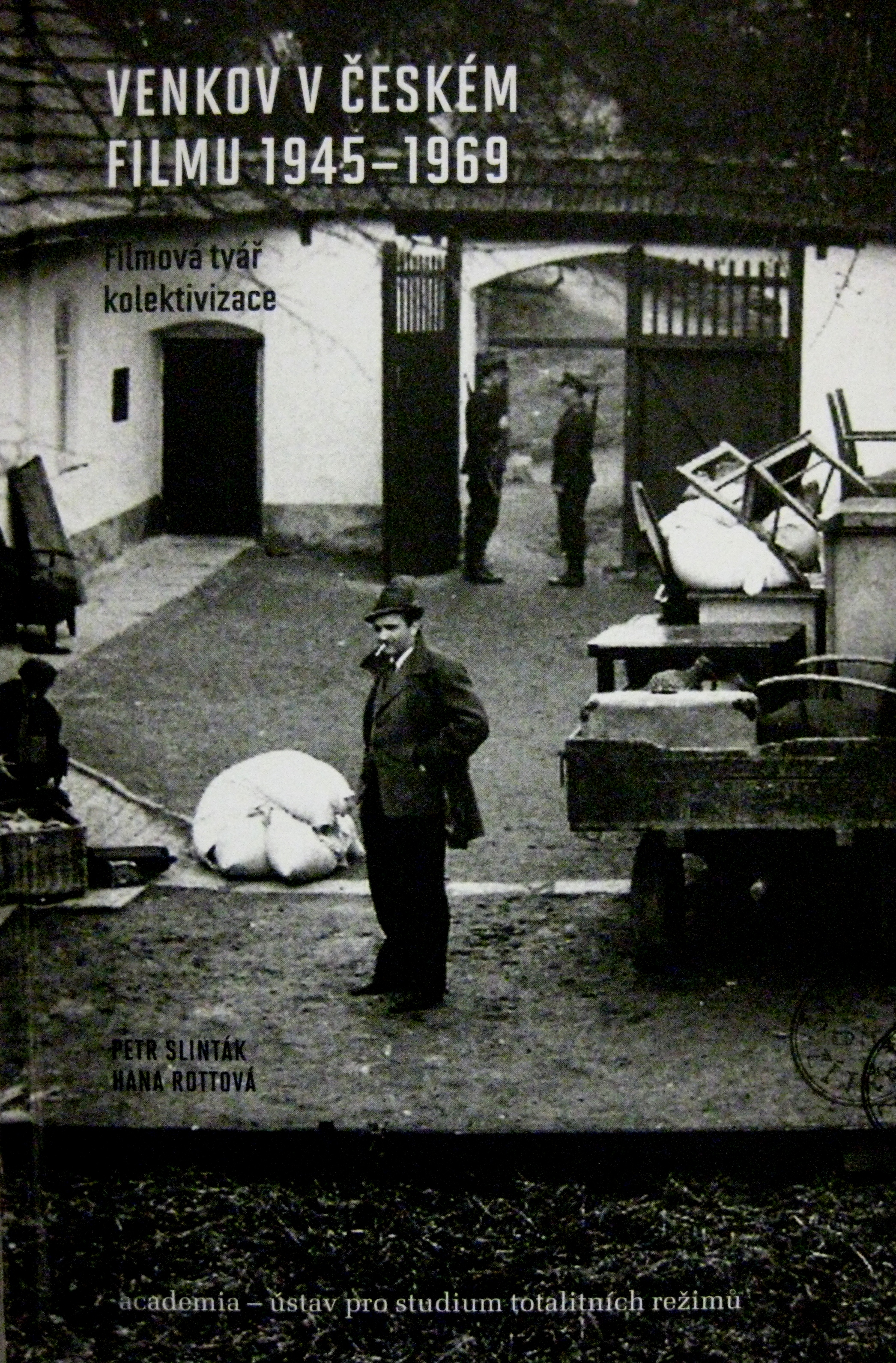
Front cover of Venkov v českém filmu 1945-1969 (The countryside in Czech film 1945-1969; C203.d.9215)
While the University Library no longer actively buys Czech-language material, it has since 2012 been the very fortunate recipient of donations from the library of the Ústav pro Studium Totalitních Režimů (Institute for the Study of Totalitarian Regimes) in Prague. Most address 20th-century Czech history and all are valuable additions to our collections.
The focus of the Library’s Slavonic acquisitions budget is of necessity on material produced in languages currently taught in the University – Russian, Ukrainian, and Polish. In the past, two other East European languages in particular were well catered for; these were Hungarian (we have over 8,000 Hungarian items in the Library) and Czech (over 15,000). When these languages ceased to be taught in the University, the Library also wound down active collection in them. East European material in languages other than Russian, Ukrainian, and Polish, then, is normally received nowadays only through donations. As with all such languages, we are very glad of material which looks at the history or culture of the country in question.
In terms of Czech, we have been very fortunate to become the regular recipients of donations from the Ján Langoš Library of the Ústav pro Studium Totalitních Režimů (USTR; Institute for the Study of Totalitarian Regimes) in Prague. Since 2012, we have very generously been sent several dozen items. The research section of the USTR focuses on the “examination and impartial evaluation” (quotation from their website) of the Czech experience of fascism and Communism, and most publications received by Cambridge concern this area. Almost all feature lengthy bibliographies, and every item is a welcome addition to the catalogue.
Among the donations we’ve received are three periodical titles, one in English and two predominantly in Czech:
- BIC : behind the Iron Curtain : review of the Institute for the Study of Totalitarian Regimes, Czech Republic (L611.b.53)
- Pamět̕ a dějiny (Memory and history; L610.b.80)
- Securitas imperii (donated volumes (2013 onwards) at L611.c.81)
The pictures on this page show several recent monographic additions to the catalogue. The first shows Petr Slinták and Hana Rottová’s Venkov v českém filmu 1945-1969 : filmová tvář kolektivizace (The countryside in Czech film 1945-1969 : the cinematic face of collectivisation; C203.d.9215), which studies the changes in Czech rural society and economy after the Second World War through analysis of films from the period. Its cover image is a still from the film Smuteční slavnost (Funeral ceremony), which is based on the 1967 book by Eva Kantůrková. The film was made within a couple of years of the book’s publication, but its release was blocked and it was shown for the first time in Czechoslovak cinemas only 20 years later. The Library’s first edition of Kantůrková’s book is at 758:43.d.95.305.
The second picture, above, shows six further recently added books. From left to right, their subjects are: a Czech priest's experience of imprisonment by both the Nazis and Communists (C209.c.2516); an exhibition about post-Second World War Catholic persecution (2015.10.17); rural collectivisation in Czechoslovakia (C209.c.2524); discipline in the Czechoslovak Communist Party (C209.c.2550); radio and television personalities in Czechoslovakia (C209.c.2346); and counterculture under totalitarianism (C203.d.9214).
All material donated by the USTR and catalogued so far can be found by running the search activated by clicking here.
The Library’s 15,000+ Czech books stretch from the 15th century to the present day. A full list can be provided to those interested, by e-mailing slavonic@lib.cam.ac.uk. We also hold over 3,000 in Slovak, for which a list can also be provided.
The USTR’s website is http://www.ustrcr.cz/ with an English variant (from which the quotation above is taken) here: http://www.ustrcr.cz/en
Back to top of the page.
January 2015
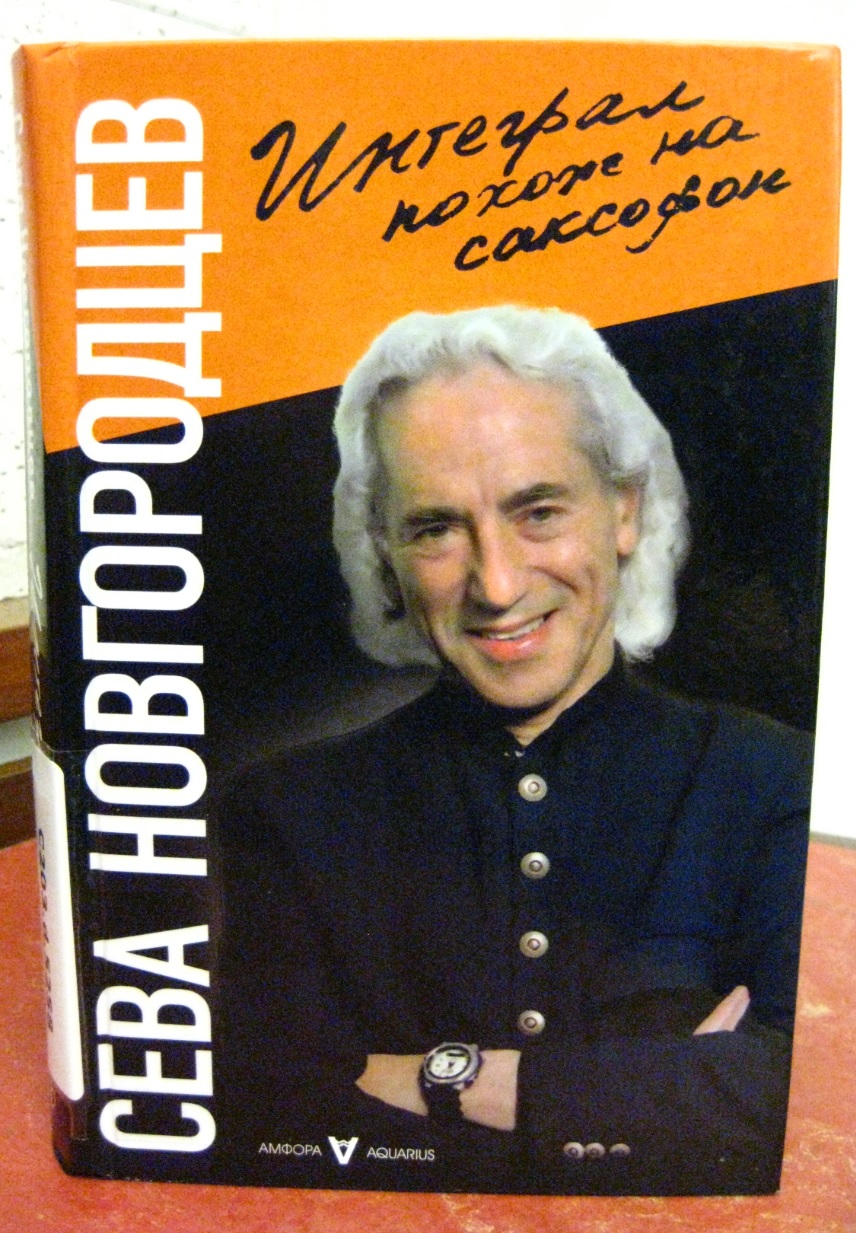
Novgorodsev's autobiography covering his pre-emigration years (C203.d.5258)
This post combines the bibliographical notes for 2015’s first CamCREES seminar - Dr Kristin Roth-Ey’s talk on non-Soviet radio (and particularly Seva Novgorodsev’s BBC programmes) broadcast into the USSR - with January’s Slavonic item of the month, Namedni, illustrated guides to international and domestic developments, in various fields, particularly significant to the 1946-2010 Soviet/Russian population.
This term, the CamCREES seminars are linked by the theme of Russian and Soviet mass culture. In the first seminar of 2015, Dr Roth-Ey of UCL SSEES spoke about Soviet audiences of targeted non-Soviet radio programmes. Listening to such broadcasts was not straightforward – frequencies were sometimes officially jammed, for example (examples of jamming noises were played from http://radiojamming.info/), and coverage was unreliable.
Of the many stations and programmes which broadcast into the Soviet Union, Dr Roth-Ey focused in particular on the BBC shows of the Russian émigré Seva Novgorodsev (his preferred spelling, which I use throughout this post; more standard transliteration from the Russian would be Novgorodtsev). These are known mainly by the name Rok-posevy, one of various titles of his broadcast over the years. While national stations played “approved" music, Novgorodsev introduced his vast audiences to all kinds of groups from the West. Another major part of the appeal of Rok-posevy was the presenter himself. Soviet presenters were trained to be uniform in their calm and contained diction; Novgorodsev capitalised on being able to convey his personality. His was a much more personal connection with his audience, and he standardly read fan mail received from the USSR out on air and played requests.
He received thousands upon thousands of letters from fans, but reportedly estimated that this represented only a fraction of the whole. Many correspondents, having guessed that their earlier letters had not made it out of the country, took to noting in their correspondence what number “attempt” the letter in hand was. Dr Roth-Ey talked about the strange three-way interaction which existed between Novgorodsev, his audience, and the Soviet authorities (represented in postal censorship or radio jamming).
A vast quantity of the letters Novgorodsev received are now held by the Hoover Institution Archives, although sadly many years are unrepresented, through loss of the letters. No letters are available online, but an inventory of the collection is linked to here. In the University Library, we have two books by Novgorodsev, both in Russian. The first book is Ostorozhno, liudi! (Look out, people!, C201.d.2495), the initial volume of his “chronicle of morals” made up of anecdotes and reflections; a second volume is currently on order. The other book by Novgorodsev currently held is his 2011 autobiography, Integral pokhozh na saksofon (An integral resembling a saxophone; C203.d.5258), which covers his life before emigration, including his career as a saxophionist.
Dr Roth-Ey’s 2011 book Moscow prime time : how the Soviet Union built the media empire that lost the cultural Cold War, in which she explores Soviet policy on mass media, stands in the Library’s collections at C209.c.1593.
Novgorodsev has a couple of links to the January item of the month. He appeared in a 1991 edition of the television programme Namedni (Recently); a recording of it is, at the time of writing, available here. Namedni ran on and off during the 1990s and 2000s, and its focus changed in that time. In the early days, when Novgorodsev was interviewed in his BBC studio, Namedni looked at events and news from the previous few days. Later, it was given the subtitle “our era” and took on a more historical bent, with each programme devoted to significant international and domestic moments in a given period of post-WWII history; it eventually covered the years 1961 to 2003. Since the last broadcast in 2003, its presenter through both manifestations, the journalist Leonid Parfenov, has produced books of Namedni, expanding on the programmes not only in terms of the period covered (to date, this stretches from 1946 to 2010) but also in terms of the number of subjects looked at in each year.
Novgorodsev appears in the 1975 book, in a section called Vrazh’i golosa (Enemy voices). His appearance in this year, two years before his BBC career actually started, is explained by the fact that the section follows on in subject from the previous one, which looked at the Helsinki Accords signed by Brezhnev, among others, that year. The Enemy voices section starts by saying that the agreement included commitments to freer access to information and saw a temporary cessation in the jamming of radio frequencies in Soviet cities (smaller towns and the countryside were never the target). The main body of the section talks about the influence of Western radio programmes and the BBC in particular. The BBC's Anatolii Maksimovich Gold’berg attracted the political listener, Parfenov writes, while Seva Novgorodsev attracted the apolitical.
The Namedni books follow a very set pattern, as the picture above of the set in the University Library shows. The standard image of Parfenov being broadcast on a television set appropriate to the period (the 2005-2010 set is instead a tablet computer) is a nod to the format of the television programme, which saw Parfenov slotted into historical footage. The books essentially provide a largely colour-illustrated chronological list of the events and developments which made an impression on the Soviet people, from international events to domestic products. If we take the list for 1975, for example, we can see an extraordinary range of subjects. Among these are: the launch of the Russian-langauge gameshow “What? Where? When?”, war in Laos and Cambodia, the Soiuz-Apollo mission, the rise of the singer Alla Pugacheva, the OPEC siege in Vienna, Sakharov’s Nobel prize, and the electric samovar.
Due to the books’ size and heavily illustrated content, they have all been put in the S950 class and must therefore be consulted only in the Library’s West Room. Here is a list of their entries in the catalogue.
Back to top of the page.
December 2014
The December Slavonic item of the month is a 1652 travel permit issued in the tsar’s name to English merchants. A star piece in the Library’s small Russian manuscript collection, it was the subject of a recent informal session with Slavonic Studies postgraduates during which we grappled with handwriting, abbreviations, and an anno mundi date.
This week, three postgraduate students in the Department of Slavonic Studies came to the University Library to look at our early Russian manuscript holdings. There are only a few of these, but it was a fascinating session. Most of our time was spent studying a Russian travel permit (referred to in the catalogue and also in this piece as a passport) granted in 1652.
Written in gold and black ink, the document was issued to John Lent, John Hebdon, and their clerk Andrew Bush. A very large part of the passport’s wording concentrates on the tsar, Aleksei Mikhailovich (1629-1676), detailing the lands he rules and the power he wields. Aleksei Mikhailovich ruled from 1645 until his death, and the document he is most famous for was in fact contained in another manuscript we looked at, albeit much more briefly. The Ulozhenie of 1649 was a huge legal code, created in reaction to the proliferation of often contradictory edicts and to quell serious unrest in the country. The University Library’s manuscript copy of the Ulozhenie dates from approximately 1700 and is particularly notable for the extraordinary number of hands in which it is written, varying hugely in style. It was given to us by Sir Ellis Minns, the famed archaeologist whose bequest to the University Library was hugely generous and significant. Through the collection he left to us, archaeology became the foremost East European subject in the Library and our pre-1900 Russian holdings of literature and history grew enormously. Sir Ellis’ bequest will be the subject of a future blog post.
The passport’s provenance is unfortunately not known. An early entry in the Additional Manuscripts class, it is an example of the richly miscellaneous nature of items in the class. (A 2013 Special Collections blog post about Additional Manuscripts provides an interesting history and overview of the class, and in fact refers to the passport.)
The postgraduates led the way in reading the text of the document. For reference, I had brought the Library of Congress transliteration table for Church Slavic, to help with deciphering some of the early Cyrillic letters the passport contained. It took quite some effort, at times, to read the hand. A word I had initially read as Pshodshii (which has no meaning), for example, turned out to be the far more sensible Pskovskii (of the city Pskov) – the letters looked so misleadingly similar to other, modern ones. The practice of abbreviating words was also confusing. Gradually we made it through to the end, past specifications about the need for the named men to be allowed to pass without being detained (reminiscent of the “to pass freely without let or hindrance” wording of the modern UK passport).

The central line contains the names of the two merchants.
The transliteration table was particularly useful for decoding the date at the end of the passport. The date is prefaced by so sozdaniia miru (from the creation of the world), a clue that the scribe has employed the standard Russian practice at that time of giving an anno mundi rather than anno Domini date, adding an extra 5508 years. We knew from the entry for the passport in the Additional Manuscript catalogue that it had been dated to 3 February 1652, and we therefore worked backwards, looking at the table to calculate how the 3 and the 7160 (the AM year) should appear and seeing if this could be made out in the letters on the page – a successful exercise.
In the middle of the passport, we encounter the names of the men it has been issued to. In the shot above, the central line reads kupchiny Ivan Lent da Ivan Gebdon (the merchants John Lent and John Hebdon). The final letter, which resembles the Roman H floats above the rest of Hebdon’s name. The beginning of the next line, which doesn’t show in the picture, refers to their clerk, Ondr Bush (Andrew Bush). The three are referred to once again in the document, although Bush is not mentioned by name a second time, simply referred to as the clerk of the first two.
Hebdon’s entry in the Oxford DNB states that he was first known to have been in Russian in 1640 and that he made his last trip there in 1667, only three years before his death in 1670. The article refers to him becoming a “roving agent” for the tsar – from whom, his will showed, a debt was in fact still due when Hebdon died. In J.T. Kotilane’s Russia’s foreign trade and economic expansion in the seventeenth century (586:45.c.200.17), Hebdon is an influential figure in trade diplomacy. The breakdown in trade relations between Russia and England in 1649 after the execution of Charles I only eased fully in 1661, on the coronation of Charles II (pages 110-111). Hebdon’s passport, issued barely two years after Charles I was beheaded, becomes an even more interesting artefact in this context, and is presumably symbolic of the trust put in him personally by the tsar. John Lent doesn’t appear in the DNB, nor is there any trace of Andrew Bush.
The passport is housed in a glass-fronted permanent frame, making it a very tricky subject to photograph with standard equipment. Happily, our Imaging Services department had a professionally shot image on file, shown to the left. The photograph captures the entire physical item – the passport itself, complete with seal at the bottom, and the frame it’s held in. Readers who would like to see the passport in person can order it in the Manuscripts Reading Room; its classmark is Add. MS 152. Those interested in the history of Russian passports can read about their early manifestations and their eventual transfer to printed forms in the 18th century in the article ‘Printing and Social Control in Russia 1: Passports’ (Russian history, 37 (2010)) by Professor Simon Franklin of the Department of Slavonic Studies.
I am very grateful to the postgraduate students (Rosie Finlinson, Katie Sykes, and Nick Mayhew) for suggesting the session. It was great fun and extremely interesting.
Back to top of the page.
November 2014
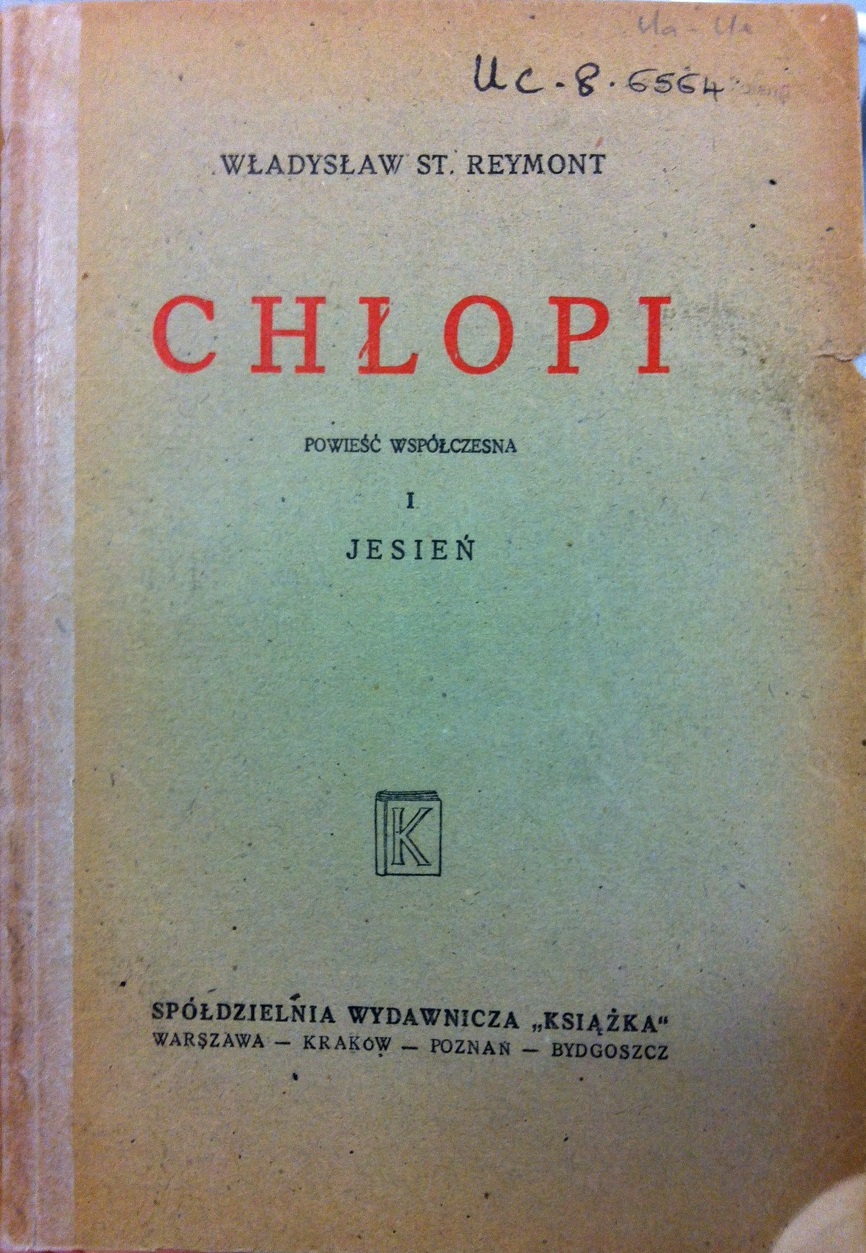
Front cover of v. 1 of a 1931 edition of Chłopi, Uc.8.6564.
In November 1924, the Nobel Prize for Literature was awarded to the Polish prose writer Władysław Reymont, the second of four Polish-language literature laureates to date. To mark the award’s anniversary, we look at the University Library’s Reymont holdings, consider our scant acquisitions in recent decades, and search for Reymont in the card catalogue.
Ninety years ago this month, Władysław Reymont was awarded the Nobel Prize for Literature. The Swedish Academy always explains its choice. In Reymont’s case, this was given in some brevity: Reymont was recognised “for his great national epic, The peasants”. He is one of nine laureates, so far, for whom the Academy has “singled out a specific work for particular recognition” (see the Nobel literature fact page and Reymont’s Nobel page), and the second Polish-language literature laureate, following Henryk Sienkiewicz’s award in 1905.The University Library’s earliest copy of The peasants (Chłopi in Polish) dates back to 1931. With the exception of this and a Polish-French bilingual copy of one other work, the Library’s holdings of books published before Reymont’s death in 1935 are all translations – into English, into German, and even into Spanish. All told, there are at the time of writing only 20 records in the Library’s online catalogue listed under Reymont as author. Against the three other Nobel literature laureates who wrote predominantly in Polish, this is not a strong record. Czesław Miłosz (who won in 1980) leads the field with 124 items; next is Sienkiewicz (1905), with 76 records; and even Wisława Szymborska, the 1996 laureate known for her relatively slim corpus of work, is in front of Reymont with 22 items.
This blog has seen other posts talk about literary prize-winners in other languages and gaps in the Library’s holdings. Poland’s national library, the Biblioteka Narodowa, lists today over 1000 holdings by Reymont, but a closer look suggests that we might not have missed quite as many publications as that figure suggests. It includes a vast number of translations into other languages, plus all multi-volume sets have been catalogued at the volume level (so a 10-volume set, for example, becomes 10 catalogue records to our one). Interestingly, breaking the results down by date shows that the BN holds fewer books by Reymont published in the last 60 years than before. This is born out to some degree in NUKAT, the Polish union catalogue, although multiple copies and a spike in numbers when the centenary of Chłopi was celebrated with jubilee editions earlier this century change the figures somewhat.
Looking, then, at the University Library’s records in the light of these searches, our few holdings reflect to some extent Reymont’s gradual decline in Polish publishing schedules. Our most significant holding is without doubt the 20-volume Pisma (Writings; 758:53.c.90.207-226). Published by Gebethner and Wolff in Warsaw between 1949 and 1952, it contains all Reymont’s main literary works. Among these are of course his most famous novels – Chłopi (The peasants, named in his Nobel award) and Ziemia obiecana (The promised land). The set’s final volume and the 6th in the set described in the catalogue record’s contents note as containing Nowele (shorter prose works) includes a shorter novel called Bunt (Revolt). This dystopian piece describes the takeover by animals of a farm which ends in terror. The debate about whether or not George Orwell knew of Reymont’s early 1920s work when he wrote Animal farm appears to be alive and well – various Google searches for terms such as Orwell Reymont Bunt or Orwell Reymont Revolt bring up tens or hundreds of thousands of hits.
No major new critical edition of Reymont’s collected works has appeared for decades. Should the centenary of his Nobel prize in 2024 and/or the centenary of his death the following year see such an edition appear, the Library will of course do all it can to procure a copy. In the meantime, any modern signification editions of separate pieces of work will also be sought out.
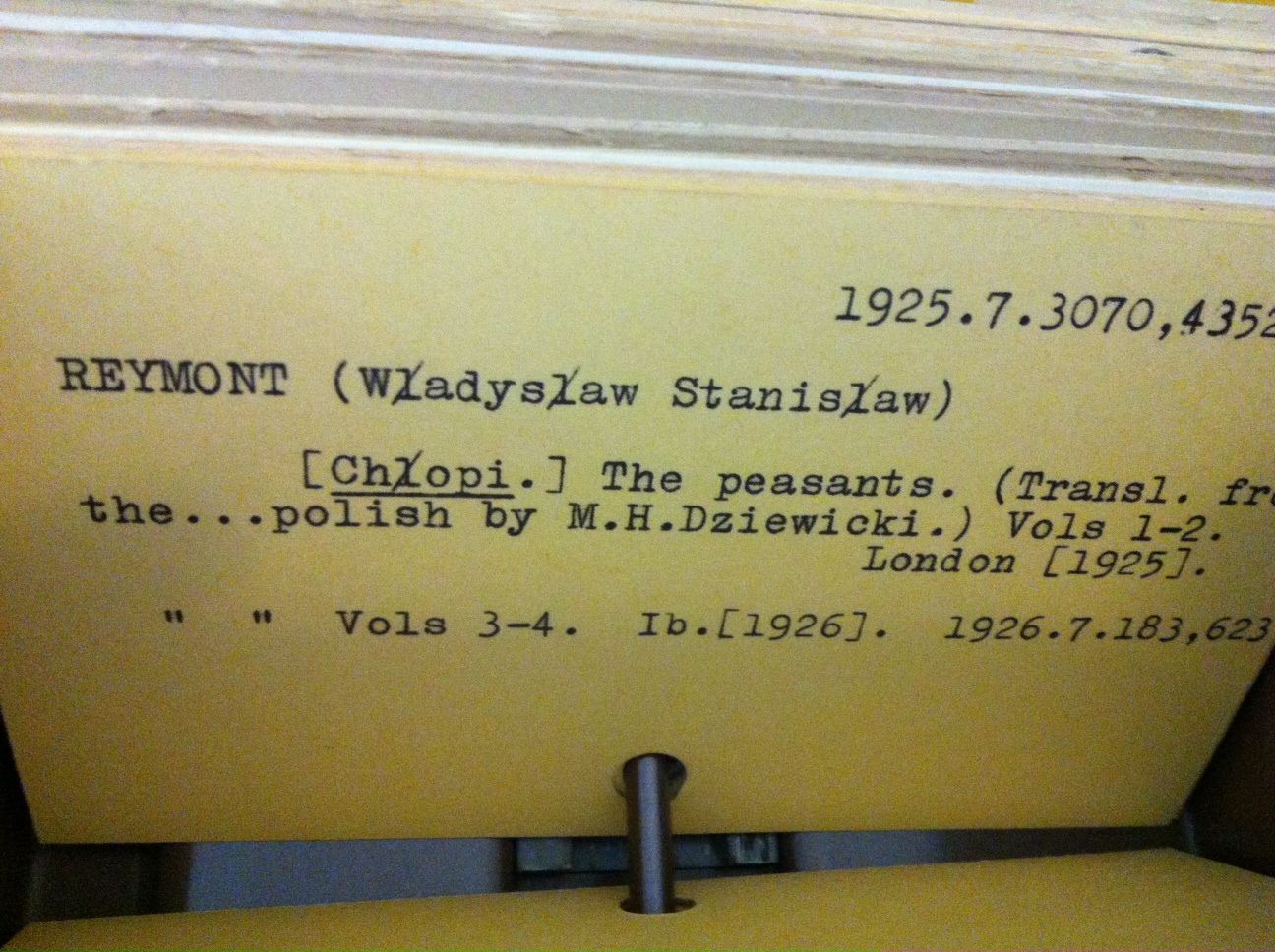
An entry for a 1920s London translation of Chłopi in the Library’s card catalogue.
The first illustration on the page shows the first volume’s front page of our earliest copy of Chłopi. A rather fragile paperback 4-volume set, it can be ordered to the West Room (Uc.8.6564-6567). No publication date is provided on the set itself, but a cataloguer has at some point determined the date from another source to be 1931. Below the Roman figure I on the title page is the word Jesień – autumn. Chłopi follows the course of the year, from autumn to summer.
The second illustration shows an entry in the Library’s card catalogue for Reymont – in this case, an English-language translation of Chłopi. Many readers are unaware of the existence of the “supplementary catalogue” this card is in. It is housed in the corridor running off to the south from the Reading Room’s main door and contains records for material considered of a secondary, non-academic nature by librarians at the time of accession. The card catalogue holds records for secondary material from 1906 to 1977, and the majority of these records are not online (the retrospective conversion cataloguing project team managed to reach the very early 1920s before the project was halted, so all the records in the slip catalogue on the other side of the hall, which covers 1800 to 1905, are online). Readers interested in material such as translations of foreign works into English within the 1920-1977 time frame are therefore strongly encouraged to check the card catalogue during their research. All books in the card catalogue can be ordered to the West Room.
Reymont’s 20 holdings in the online catalogue are supplemented by a total of 2 more items in the supplementary catalogue, all English translations: the four-volume 1925 London edition of Chłopi whose card is shown in the picture, and a 1945 Birkenhead edition of selections from Chłopi (titled Burek, the dog that followed the Lord Jesus, and other stories). There is a third card in the catalogue, for a 1921 New York edition of The comédienne (Komediantka in the original), but this was reached by the conversion team and is therefore also represented in the online catalogue. The 1925 and 1945 volumes bring Reymont’s total haul in the Library, albeit predominantly in translation, to 22 – neck and neck with Szymborska.
Back to top of the page.
October 2014

Illustration for Lermontov's Aul by Martiros San'ian (S756.b.91.6)
The 200th anniversary of the great Russian poet Mikhail Lermontov’s birth falls this month, as marked by library and literary blogs the world over. In this post, we look at books produced a hundred years ago to mark the first centenary of his birth,
focusing in particular on a illustrated set of his complete works.
The earliest book by Lermontov held by the University Library was published in 1842; this is the first half of a two-volume set of his poems (8757.d.7-8). The poet had already died the year before, killed outright in a duel in the Caucasus at the age of 26. Only one collection of his poetry was published in his lifetime, in 1840; his poems had otherwise been printed in larger, shared publications. A great deal of Lermontov’s work came out only after his untimely death, although Geroi nashego vremeni (Hero of our time), the prose novel for which he is possibly best known to Anglophone readers, had already appeared in 1840.
One hundred years ago, the centenary of Lermontov’s death was celebrated in print by a number of special issues of and about his work. Among them was the set which is our Slavonic item of the month. Illiustrirovannoe polnoe sobranie sochinenii M.Iu. Lermontova (The illustrated complete works of M.Iu. Lermontov; S756.b.91.1-6). Five of the six volumes which make up this lovely set contain works by Lermontov himself. The last contains recollections of the poet by his acquaintances and a section of critical articles on his work. All six are liberally illustrated with pictures by a large number of various artists, including the poet himself. Minor illustrations are printed directly on to the page, with more significant ones printed on to individual plates.
The plate shown in the illustration here is one of the relatively few in full colour. Its surface is protected by a thin tissue sheet on which the lines of poetry it corresponds to are printed. The poem in question is Aul Bastundzhi (Bastundzhi aul (‘aul’ is defined in the OED as ‘a Caucasian or Tartar village or encampment’)), one of Lermontov’s many works set in the Caucasus. Aul Bastundzhi is 80 eight-line stanzas long and tells the story of two brothers, Akbulat and Selim. Selim falls in love with Zara, Akbulat’s wife, and the tragic tale of the three ends with the destruction of the aul.
The painting illustrates stanza 23 from the second part of the poem. Akbulat has discovered that Zara and his favourite horse have gone missing and charges out into the night to find them. The quotation on the tissue sheet gives the three lines which describe what he suddenly catches sight of – a horse racing like light smoke, its mane whipping over its neck, and something white twisting above it (its rider, Zara). Both horse and rider are ultimately doomed.
The illustration is by Martiros Sar’ian, an Armenian painter who was a member of the Moscow Symbolist group. Oxford Art Online has an article on Sar’ian. Its description of his style strikes a clear chord with the illustration above. ‘Like the other members of the group, Saryan painted fantastic themes, sometimes based on folk tales, although in brighter colours and with stronger rhythmic patterns than were typical of the other Symbolists. [His 1906/7 works] indicate a growing interest in exotic places and an increasingly stylized treatment of figures and animals.’
Oxford Art Online lists Sar’ian under the anglicised form ‘Saryan’, and this is also the form used in the Library of Congress name authority file; his authorised form of name is ‘Saryan, Martiros, 1880-1972’. The University Library currently holds 6 books by or about him – a list can be seen here.
While this illustration is in volume 6 of the set, facing page 192, the actual text of the poem Aul Bastundzhi appears in volume 2, starting at page 44.
The Library holds three other books from the 1914 centenary of Lermontov’s birth. Vienok M.Iu. Lermontovu : iubileinyi sbornik (A wreath for M.Iu. Lermontov : a jubilee collection; F191.b.14.4) contains nine pieces about the poet’s work by eight authors. The remaining two books are also critical works about Lermontov, but each wholly by an individual author. M.Iu. Lermontov: k stolietiiu so dnia rozhdeniia velikago poeta (M.Iu. Lermontov : for the centenary of the great poet’s birth; 756:34.c.90.55) is by Dmitrii Ovsianiko-Kulikovskii, M.Iu. Lermontov (756:34.c.90.73) by Aleksandr Borozdin.
Back to top of the page.
September 2014
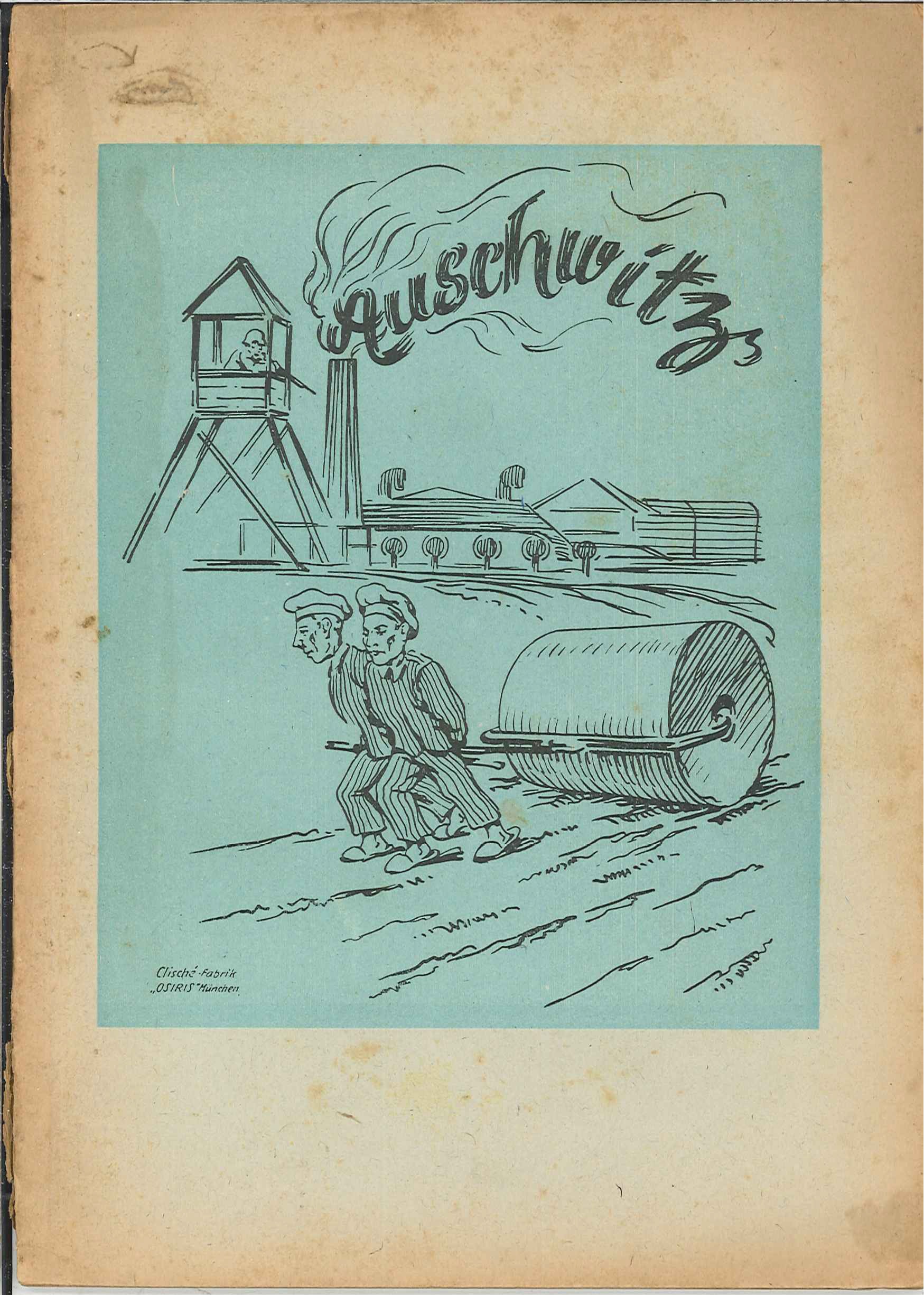
Front cover of Al'bum politv'iaznia by Paladii Osynka (CCC.62.121)
The University Library is currently running a small exhibition of Ukrainian diasporan material from the Peter Yakimiuk Collection in the main entrance hall. The September item of the month is also from this collection – a book of drawings and wry caricatures of the horrors of Auschwitz seen through the eyes of a Ukrainian political prisoner.
Petro Balei was a Ukrainian writer and nationalist who emigrated to North America after World War II, a very common background among authors whose work is represented in the Yakimiuk Collection. The majority of books by such authors in the collection usually cover Ukrainian history and politics, including personal narratives of active engagement in fighting during the war. Balei’s work, however, is rather different – under the pseudonym Paladii Osynka, he produced a book of caricatures of life in Auschwitz, where he spent several years as a political prisoner.
Al’bum politv’iaznia (Album of a political prisoner; CCC.62.121) contains 15 cartoonish drawings in coloured pencil depicting life (and death) in the most notorious of Nazi concentration camps. Each drawing is accompanied by a caption in Ukrainian and English (the latter translated, often rather idiosyncratically). Some scenes are purely horrible, such as one showing selection for the gas chamber, but often the picture and/or caption demonstrate a certain wry humour. One drawing, for example, shows two men with deeply unpleasant smiles on their faces. The caption explains that these are examples of the camp’s ‘aristocracy’ – a blokovyi (block leader) and a heavily tattooed kapo (the standard word used to stand for these notorious prisoner functionary positions in the death camp system).
While this kind of book is rare in the Yakimiuk Collection, it complements very neatly another of the Library’s recently donated collections. The ground-breaking Chadwyck-Healey Liberation Collection contains works published from the Liberation of Paris to the end of 1946 dealing with the French experience of the war, including a great deal of pictorial material and also books by concentration camp survivors. This collection is the subject of the main current Library exhibition: ‘Literature of the Liberation: the French experience in print 1944-1946’. Both this and the Yakimiuk exhibition (‘Ukraine Abroad: the Yakimiuk Collection’) are free to readers and the public alike, and both end on Saturday 11 October 2014.
The Library of Congress Name Authority File, which aims to give every published author a standardised and unique bibliographic identity, currently has Balei and Osynka listed as entirely unrelated individuals. The book provides only a faint clue of a link in the appearance of the initials ‘PB’ in Cyrillic in the corner of each internal drawing, but several websites make the connection explicitly. Petro Balei (1912-2003) was imprisoned in two concentration camps: first in the 1930s, under the Poles, in the Bereza Kartuska camp, and later for several years in Auschwitz under the Nazis. These two incarcerations suggest strongly that he was a prominent, or certainly committed, Ukrainian nationalist. Many online biographies (here, for example, and here) only, however, list the periods of his imprisonment and not the reasons for it. Via a Displaced Persons Camp, Balei eventually moved to America where he worked in agriculture. This book is the only one for which he used the pseudonym Osynka. Changes have been submitted to Library of Congress for application to the Balei and Osynka authorities; once these changes have been incorporated, the two will make clear reference to each other.
The book’s introduction makes clear that its publication is aimed to counteract criticism of Ukrainian participation in the war. The English introduction begins ‘There is no doubt that in World War II the Ukrainian nation took part in common with other freedom-loving peoples. Nevertheless, this day, the Ukrainian war efforts have not been justly valued by anybody.’ Intense bitterness about this part of the war continues, tragically, to this day. The introduction emphasises the Ukrainian fight against the Nazis (including mention both of the nationalist Ukrainian Insurgent Army and of Ukrainians in the Soviet Red Army) and also refers to the huge Ukrainian losses in Nazi concentration camps.
The book’s first caption starts 'Arbeit macht frei – work makes you free. What irony. It frees you only from life.'
Back to top of the page.
August 2014
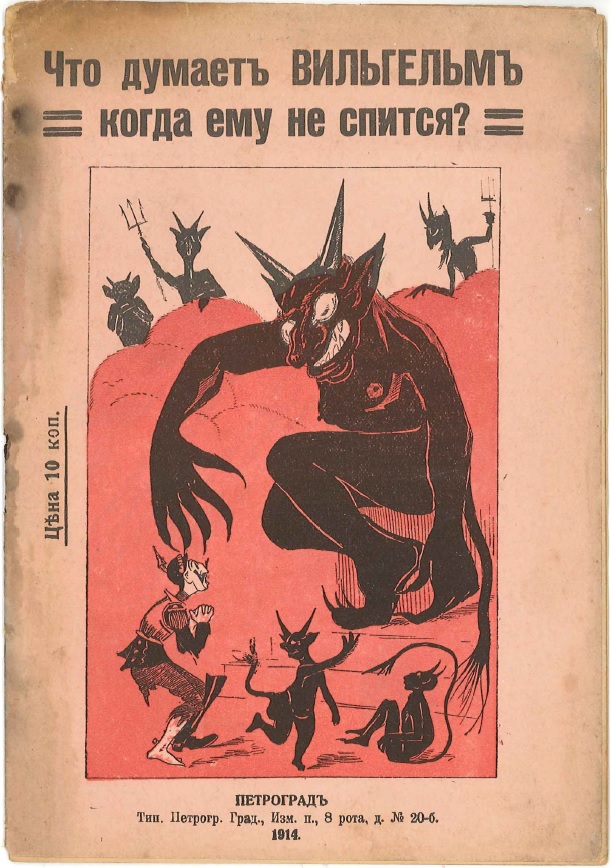
Front cover of N.A. Ratomskii's Chto dumaet Vil'gel'm kogda emu ne spitsia? (CCC.54.469)
In August 1914, Germany and Austro-Hungary declared war on Russia, and the bloody Eastern Front of the First World War opened. The war saw a great deal of propaganda on all sides, some surprisingly humorous. We look at a mischievous pamphlet from Petrograd (renamed from the Germanic "Sankt-Peterburg" that same month) about Kaiser Wilhelm.
Imperial Russia's involvement in the First World War was disastrous, seeing the deaths of millions of soldiers and eventually the empire's own demise too. The bloody Eastern Front opened after Russia's incursion into Galicia with the Battle of Tannenberg, a battle lost so catastrophically by the Russians that their commander, Aleksandr Samsonov, chose to commit suicide than face the Tsar.
Anti-German sentiment was at fever pitch in Russia, and in August 1914, the empire;s capital, Sankt-Peterburg (St Petersburg) was renamed Petrograd to be more Slavic. The University Library has about 30 publications printed in 1914 with the place of publication given as Petrograd. Among these is Chto dumaet Vil’gel’m kogda emu ne spitsia? (What does Wilhelm think about when he can’t sleep?; CCC.54.469), by N.A. Ratomskii.
Written in verse and highly illustrated by 'A.Ia.', it pokes extremely satirical fun at the Kaiser, who is shown on the front cover cowering in fear at the devil, surrounded by delighted imps. Its opening lines show Wilhelm tossing and turning in his bed, waiting for morning and thinking about his life – 'nothing but sins, all sins!'. One of its illustrations shows the Kaiser staring aghast at a map of Europe on which he cannot find Germany.
There is no Germany on it! No Germany!
On the left, he sees French control,
And beyond, the Belgians,
On the right and below – Russian control.
Where is Germany? Where?!
On the back cover, other books from the same stable are mentioned (including Vil'gel'm sumashedshii (Wilhelm the Mad), listed there as forthcoming, but not to be found in library catalogues). The University Library's fragile copy of Chto dumaet Vil'gel'm, part of the peerless Catherine Cooke collection, is the only one in the country.
The book's illustrator is identified only by the initials A.Ia., leading, it would seem, to a dead end. This, though, is where the Library's reference collection comes into its own. Our 1956-1960, 4-volume copy of Ivan Masanov's Slovar' psevdonimov russkikh pisatelei, uchenykh i obshchestvennykh deiatelei (Dictionary of pseudonyms of Russian writers, academics and public figures; in the Reading Room at R756.45) has an index in volume 3 specifically dedicated to artists. A.Ia. is listed there, with the artist's name given as Aleksandr Ianov, and the supplementary 4th volume also provides his patronymic (Aleksandrovich) and date of birth (1887).
Back to top of the page.
July 2014
The Russian and Ukrainian publishing markets have been quick off the mark to produce books which relate to the ongoing Ukrainian crisis. For this month’s feature, we look at two specific examples, one from each country, and we also look at how library catalogue subject headings might be used for material on events in Ukraine.
Euromaidan and Crimea have become major subjects in the Ukrainian and Russian book markets, and the ongoing crisis in eastern Ukraine will no doubt follow suit as soon as manuscripts can be found which fit the bill. The speed with which publications have appeared certainly make the University Library’s Slavonic book selector cynical, but the importance of our collections containing examples of books published in immediate reaction to such extraordinary events is not in doubt.
The two main examples featured here both relate to the Euromaidan protests which ultimately led to Ianukovych’s removal as president of Ukraine. Through their covers, they are immediately illustrative of the extremely diverse views of the Maidan – were the protestors violent fascists or patriotic defenders? The book on the left is Evromaidan imeni Stepana Bandery : ot demokratii k diktature (The Stepan Bandera Euromaidan : from democracy to dictatorship; C203.d.7080), a Russian-language study of right-wing extremism in Ukraine by Stanislav Byshok and Aleksei Kochetkov. The book on the right is Nebesna sotnia : antolohiia maidanivs’kykh virshiv (The heavenly hundred : an anthology of Maidan poems; C203.d.7081), a volume of poems collected in memory of those who died during the Euromaidan protests. The Molotov cocktail and bat in the hands of the protestor in the first have turned into a spear and a shield showing the Ukrainian trident in the second. While the first is surrounded by fire and anarchy, the second marches with a companion – presumably towards the Berkut, the loathed riot police.
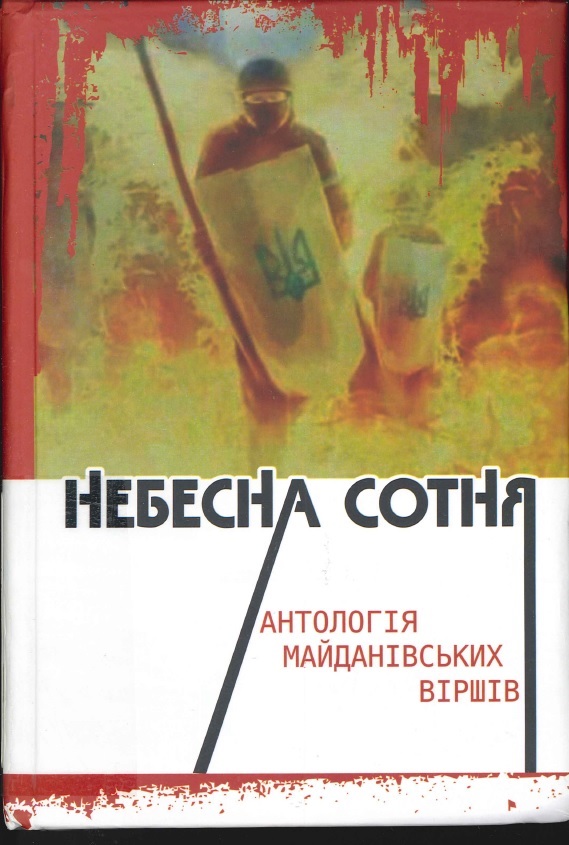
The front cover of Nebesna sotnia (C203.d.7081)
Nebesna sotnia contains over 200 poems, primarily in Ukrainian but with a few in Russian and one in Belarusian. In the compiler’s introduction, she writes that the authors represented in the book are “not only professional writers but also ordinary Ukrainians who, possibly, have now written the one and only poem they’ll write in their lives.” The poems are accompanied by monochrome reproductions of Maidan-related art works, also produced by professionals and amateurs. One shows Taras Shevchenko, Ukraine’s most important cultural figure, whose 200th birthday is celebrated this year, with a baseball bat held on his shoulder, a hard hat on his head, and standing with a pugnacious pose in front of a Ukrainian flag.
While the contents of Nebesna sotnia make almost no reference to the mid-twentieth-century Ukrainian resistance movements OUN-UPA, Evromaidan imeni Stepana Bandery makes the link between them and Euromaidan explicit in its very title – Stepan Bandera was a major leader of the OUN (Organisation of Ukrainian Nationalists). The role of Ukrainian nationalists during World War 2 remains an extremely divisive and difficult subject and is a major propaganda factor in the current unrest. Patriotic heroes fighting for independence, pitiless fighters and Nazi collaborators – names of people such as Bandera can be used as a compliment or condemnation.
Evromaidan imeni Stepana Bandery views Bandera negatively and see the modern Ukrainian right-wing extremist parties Svoboda (Freedom) and Pravyi sector (Right sector) as his natural fascist descendants. The book studies the rise of the far right in Ukraine from the break-up of the Soviet Union through to Euromaidan. As a purely curious aside which readers might find interesting, the website of the foundation under whose auspices the book was published (Narodnaia diplomatiia (National diplomacy)) has as the geographical domain element of its website address the letters “su”, rather than the expected “ru” (for Russia). The “su” stands for – the Soviet Union. There are an incredibly large number of .su websites, the vast majority presumably registered long after the Soviet Union itself no longer existed. To give a sense of currency, a search for Путин (Putin), specifying the .su domain results in nearly 3 million hits on Google – a fraction against the 47 million in the .ru domain, but impressive nevertheless.
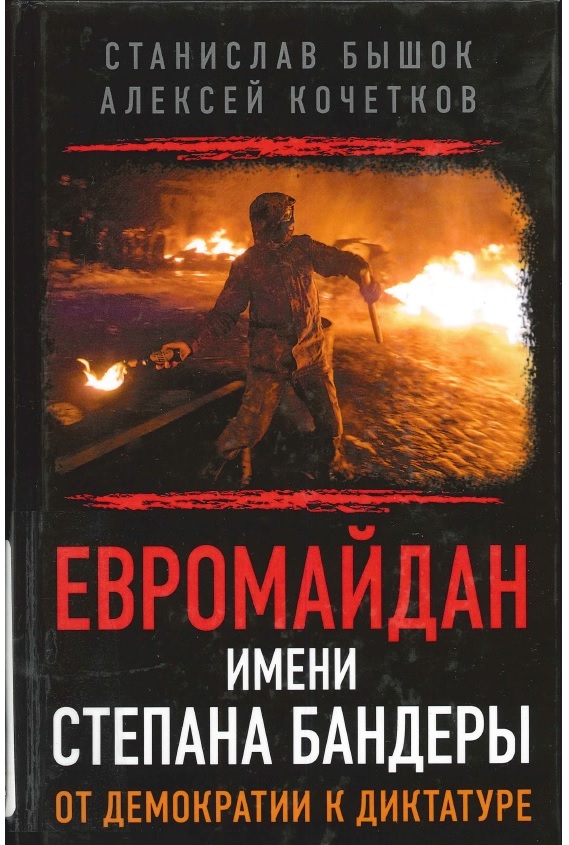
The front cover of Evromaidan imeni Stepana Bandery (C203.d.7080)
At the time of writing, no Library of Congress subject headings (LCSH) covering recent events in Ukraine have been released, so we must make do with existing headings and, ideally, make a note of records to which we would add more specific headings as and when they become available. Nebesna sotnia has already got one (Ukrainian poetry – 21st century) since multiple-author anthologies are commonly given such headings. This expresses what the book contains but not what it is about. LCSH reflecting the actual subject of a literary work are fairly rarely used (although this tradition is changing), mainly employed only when the work is about a specific person (eg Andropov, IU. V. (Iurii Vladimirovich) – Fiction, as the books featured last month have) or a specific event (World War, 1939-1945 – Drama). When a specific heading for Euromaidan is added, we will add that to this book’s record, with the form subdivision Poetry.
The Russian book will also have the eventual Euromaidan heading added (without any form subdivision). In the meantime, Ukraine – Politics and government – 21st century is the closest we can come. A look behind the scenes in the Library of Congress file of proposed subject headings shows that a specific heading has been put forward (Ukraine – History –Euromaidan, 2013-2014), but its form may well change as it is debated by subject indexers before inclusion in the formal list, so we must hold back from using that form now.
Books on recent events in Crimea have also started to be produced, such as Aleksandr Shirokorad’s Bitva za Krym (The battle for Crimea; C208.c.5897). Crimea’s own authority form currently remains Crimea (Ukraine), and presumably this would only change to reflect Russia’s integration of Crimea if certain western governments chose to recognise the March 2014 referendum. As the record linked to shows, the LCSH we’ve used therefore stem from Crimea (Ukraine) and include one in which we’ve applied a standard subdivision allowed for countries and regions, Annexation to … followed by the name of the country which has taken control, so: Crimea (Ukraine) – Annexation to Russia (Federation). Note that Russia (Federation) is the form for post-Soviet Russia – Russia stands for pre-Soviet Russia.
Books about the current conflict in the east of Ukraine will no doubt come on sale before very long. Again, no specific headings to cover the conflict have yet come through, so the books’ records would likely include some existing LCSH about local or national politics and others about Russian/Ukrainian relations.
Back to top of the page.
June 2014
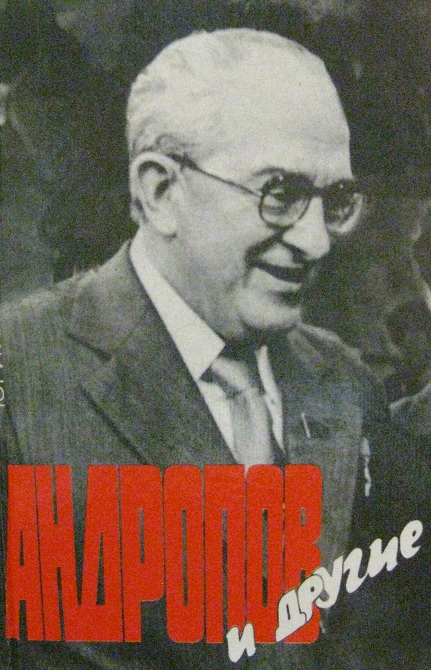
Cover of Iurii Teshkin's Andropov i drugie (Andropov and others; 9003.d.1849.
The subject for June 2014 is Iurii Andropov, the Soviet head of state in the wake of Brezhnev’s death, who was born 100 years ago in June 1914. When Andropov died nearly 70 years later, in February 1984, he had been in power for only 15 months. We look at two fictional works about him.
Although Iurii Vladimirovich Andropov led the Soviet Union for only a short time, his was already a well-known name when he took power in late 1982. He had been linked to the repression of the Hungarian Revolution in 1956 (Andropov was the Soviet ambassador to Hungary from 1953 to 1956) and to other international military interventions such as the putting down of the Prague Spring in February 1968. By 1968, Andropov had become the head of the KGB, a position he was to hold for 15 years.
On the basis of Andropov’s pre-leadership career, then, he was seen as a Soviet hawk – and one with a KGB background to boot. Stories from his leadership, though, suggest a possibly more liberal side. A search for Andropov Gorbachev on our LibrarySearch+ catalogue of electronic resources, for example, comes up with a hit for a Guardian article from 1991 which reports a revelation by a government aide that Andropov saw the progressive Gorbachev as his successor and not the conservative Chernenko.
The uncertainty of what Andropov might have achieved had he not died so quickly after coming to power might, then, explain why two of the University Library’s holdings about Andropov are works of fiction.
Iurii Teshkin’s Andropov i drugie (Andropov and others; 9003.d.1849) is described in its colophon as a documentary-fictional publication (descriptions like these are quite standard in Russian publishing and will be the subject of a future blog post). The publisher’s blurb says:
Iu.A. Teshkin’s novel Andropov and others is a documentary-fictional work in which an attempt is made to look at Iu.V. Andropov differently – as an unorthodox, tragic, and also mystical character, not only because that character was the last of a stellar group of leaders, but also because an epoch died with it, followed by a new and extremely difficult one for all Russians.
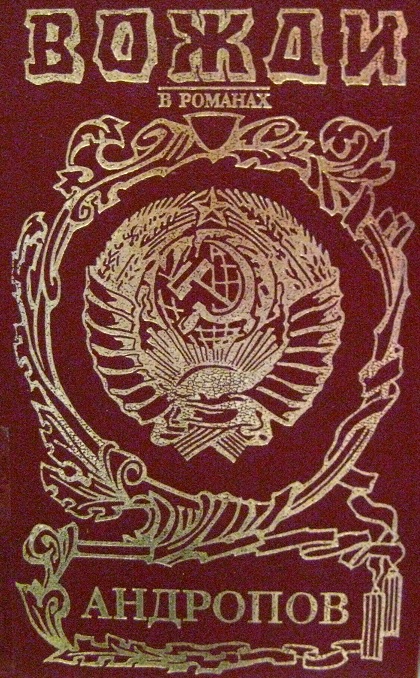
Cover of I.A. Minutko's Bezdna : mif o Iurii Andropove (Abyss : myth about Iurii Andropov; 9002.d.8340.
I.A. Minutko’s book Bezdna : mif o Iurii Andropove (Abyss : myth about Iurii Andropov; 9002.d.8340) is one in a series of books called Vozhdi v romanakh ([Soviet] leaders in novels) and is described in its colophon as a fictional publication. The publishers’ introduction explains that this novel is the first in the series, which they intend will also cover Lenin, Stalin, Khrushchev, Brezhnev, Chernenko, and Gorbachev (the last two appear to have remained unpublished). The aim of the series is evidently also to show a different picture of these figures.
For our leaders, strong and weak, clever and not so clever, were not only statesmen. Like all people on earth, they were husbands , lovers, fathers, and grandfathers [sic]. Before the readers’ eyes will pass episodes of [their] private lives.
Non-fiction books about Andropov are largely to be found on the open shelf, and all which are can be found within the main Russian history section, 586 (North Front 5). Books by Andropov which are in the open-shelf collection are divided between two locations, even though their subject matter (Soviet Communism) is the same. These two locations relate to the two elements of that subject – 586 for Russia (including the Soviet Union) and 231 for Communism. In one case, the French translation of selected articles and speeches, Sur le chemin du socialisme (On the path of socialism; record here), both locations are used! While the Library has for some years not been in a position to take material which duplicates its holdings, this was not always the case. One copy of Sur le chemin is at 586:92.c.95.693, the second at 231.c.98.294.
Coverage of Andropov’s funeral can be found at this link (certainly at the time of writing). Although non-Russian speakers might find the sober voiceover and Chernenko’s speech unrewarding, the first half in particular has got interesting footage. It starts with footage of important mourners – major foreign Communists, foreign heads of state (Indira Gandhi, Margaret Thatcher, and George Bush Sr among them), Soviet Communist officials (with Gorbachev on Chernenko’s right), and Andropov’s family – before the coffin is taken to the Lenin mausoleum in Red Square. According to a Russian news article published on the centenary of Andropov’s death, there was a hiccup during the Red Square ceremony (which the video linked to above does not show). Unaware that the microphones were already on, Chernenko asked his neighbour, “Shall we take our hats off?” (they were all wearing fur hats) and then answered the question himself – “It is frosty” (the hats stayed on). It is not hard to hear the evidence in Chernenko’s speech of a lifelong smoking habit. His time in power was even short than that of his predecessor – 13 months after Andropov’s interment, Chernenko’s own funeral would take place.
Back to top of the page.
May 2014
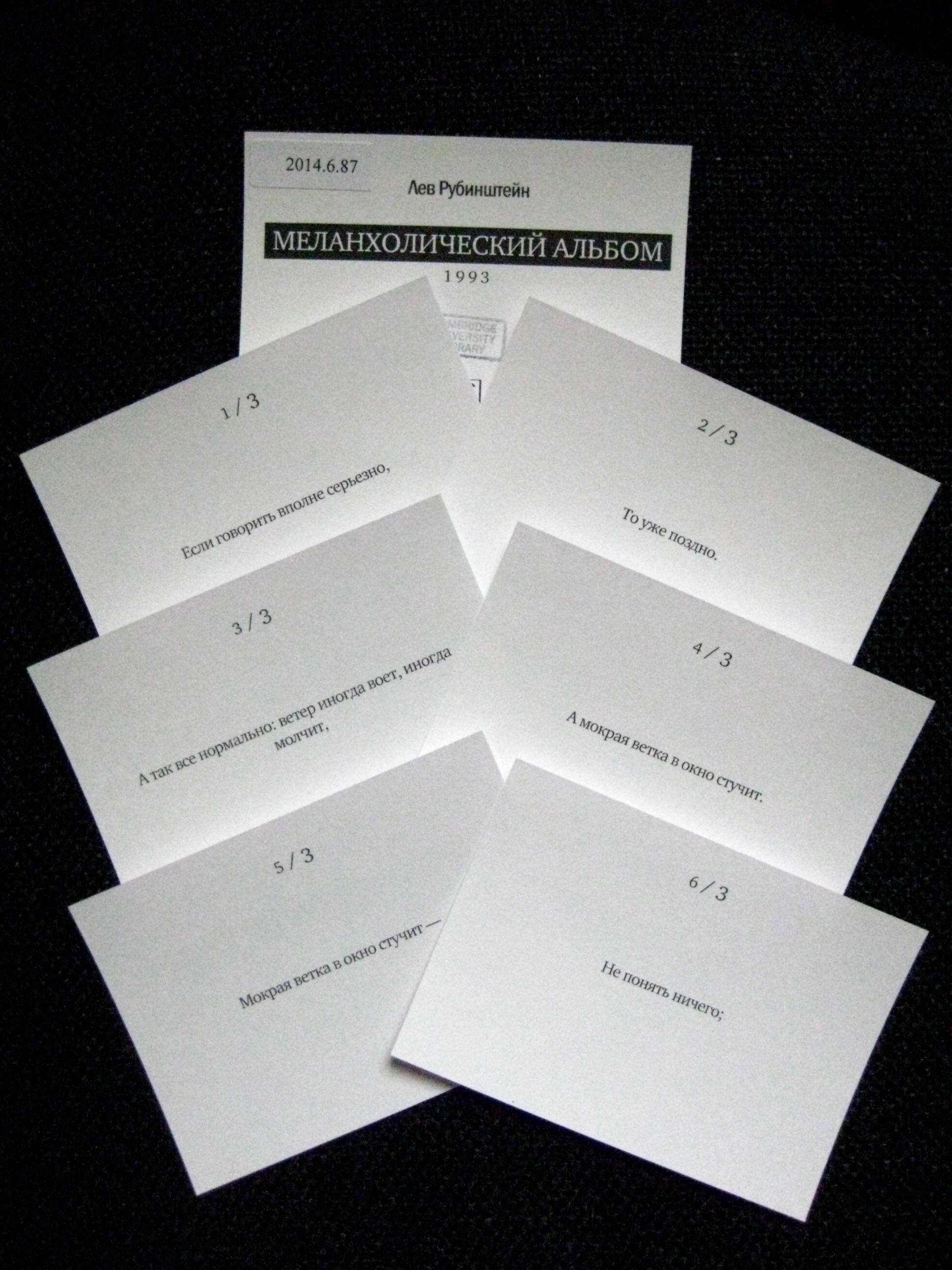
Cards from Lev Rubinshtein's Chetyre teksta iz Bol’shoi kartoteki (2014.6.85-88).
This month, we look at a 2011 set of poetry by Lev Rubinshtein printed on hundreds of index cards, replicating Rubinshtein’s own kartoteka (card catalogue) approach to the physical recording of his poetry. The piece starts off with a reflection on this year’s Victory Day and Rubinshtein’s role as a dissident figure in modern Russia.
This month saw Victory Day on May the 9th, originally the Soviet annual celebration of the end of World War II and still celebrated by many post-Soviet states, Russia primary among them. Given the appalling military and civilian losses caused by the Eastern Front and its attendant atrocities, this day of celebration is always painfully underscored by the unparalleled cost of victory. For many in Eastern Europe, memory of the war has the awful added dimension of a particularly complex relationship with the Soviets and Nazis. The continued turmoil in Ukraine has shown both how little the ghosts of the 20th century seem to have been put to rest and also how quickly people jump to exploit them, using sweeping generalisations and heightened emotional language to cause further division and mutual resentment.
The 2014 Victory Day was therefore a source of concern and nervousness for many, with the emphasis on WWII history having been a major factor in the stirring up of public opinion over the Ukrainian upheaval and the incorporation of Crimea into Russia. On the day, news agencies focused on the prolonged Red Square military parade and Putin’s visit to Crimea. With headline-grabbing political posturing and extreme public opinions on offer, there was little appetite in the press to focus on the more thoughtful and sober marking of an emotional and difficult day of remembrance by ordinary people. And this is where Lev Rubinshtein comes in.
Described in Mark Lipovetskii’s article on him in the 2004 volume Russian writers since 1980 (R718.60, v. 285) as “one of the most prominent poets of Russian conceptualism and postmodernism”, Rubinshtein has in recent years also become a major figure on the current dissident scene. As many others, Rubinshtein has an active and popular presence on social media – through his Twitter account, for example, and his facebook page. The latter, not restricted by the word (or, rather, character) limit of the former, is where he posts lengthier reflections as well as anecdotes and poems. While he never shies away from speaking out against human rights abuses, hypocrisies, and intolerances, what runs through all Rubinshtein’s posts is a sense of simple humanity and decency, free from deep-dyed political or tribal affiliation. Many of his posts are in fact reminders to his readers of the basic values and basic happinesses too often lost sight of in anxiety and anger. It is worth learning Russian simply to read Rubinshtein’s posts.
His post on the 9th of May was typically simple and moving, shifting his own and his readers’ minds away from any cynical and political exploitation of the day to personal and family memories. What he writes is simply his family’s experience which, although it is therefore a particular set of memories, is written for commemorative and not political purposes. The post is provided below in a rough and ready translation. [Towards the end, Rubinshtein refers to “coloured ribbons,” referring to the proliferation of commemorative ribbons seen in some part as empty and needless symbols.]
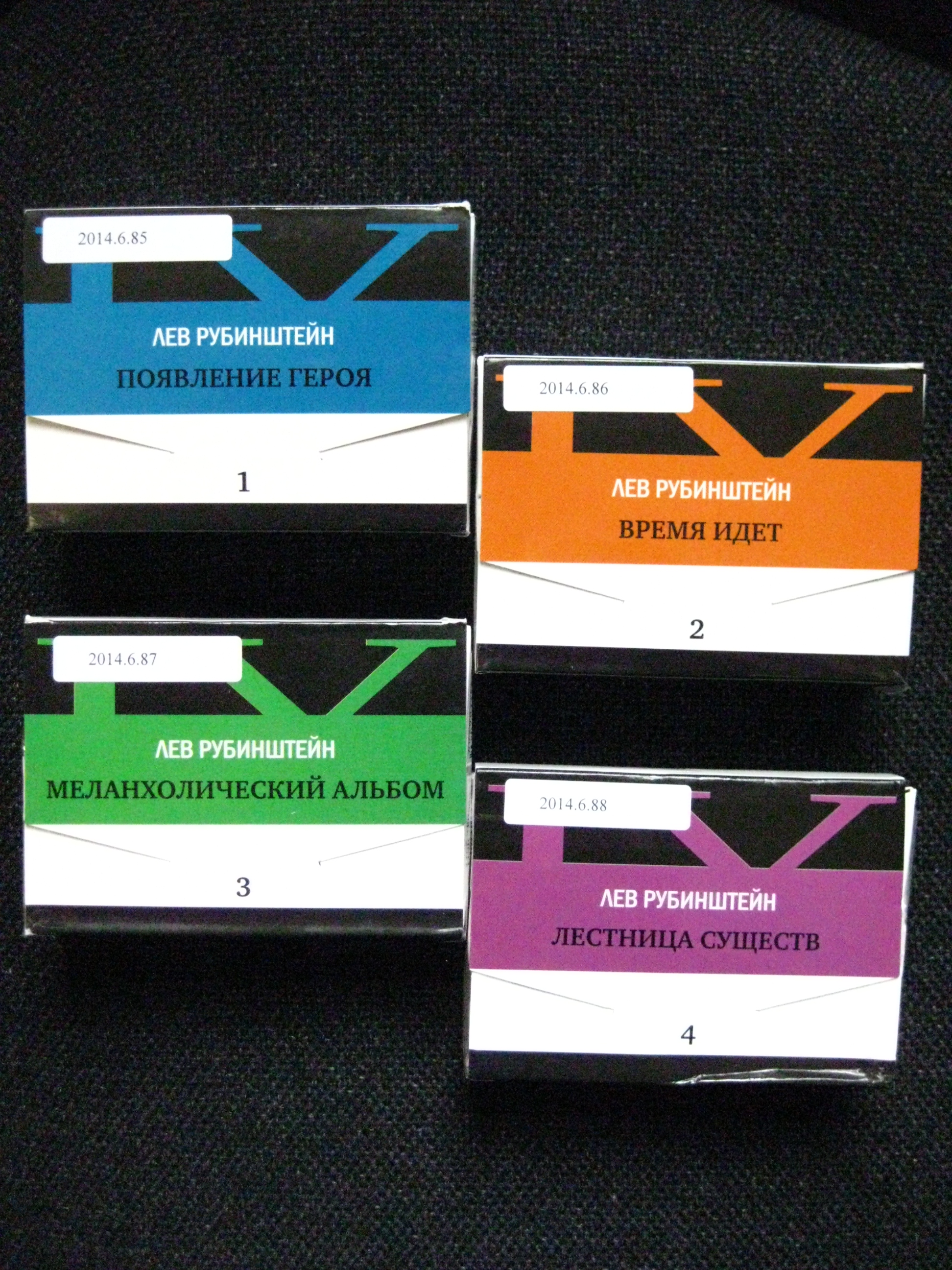
The four boxes containing Lev Rubinshtein's Chetyre teksta iz Bol’shoi kartoteki (2014.6.85-88).
Many people say that our day of celebration has been stolen. Yes, we are up to our necks in streams of aggressive vulgarity, of shouting, of pathos and the rending of clothes. And this has only grown and grown in recent years. So it is. But on this day I will still bring out and study an old photo of my father which he sent from the Leningrad front. A photo which shows him with new insignia. A photo which made my brother, aged 5, on seeing it, ask my mother so loudly that the whole queue for bread heard it, “Mama! Who’s more important – Papa or Stalin?” I will still remember how that same brother could never, to the end of his life, quit the habit of collecting crumbs left on the table and eating them. I will still remember my mother’s stories of that wonderful night when no-one slept because they were all waiting for an ANNOUNCEMENT. And when that announcement came through, the whole of Moscow poured out onto the streets and went to the centre. There they cried and laughed, and strangers hugged each other. Neither they, nor I, nor we needed then nor need now to cover ourselves in coloured ribbons. Therefore no-one can ever steal anything from us. Happy Victory Day, my friends.
Rubinshtein was first published in the 1970s, in Russian samizdat and foreign publications. The University Library’s holdings of his work, in terms of his own books, do not go so far back. An author search of Rubinshtein, Lev shows that we have in total seven books by Rubinshtein at the moment; we have also got several more currently on order. The oldest at the time of writing is a 1998 set of essays (Sluchai iz iazyka (translated in Lipovetskii’s article as ‘Happenings of language’), 2011.8.2374), and the sole non-Russian item is a 2001 translation into English of poems, published in the Glas new Russian writing series (Here I am, L756.c.112.27). The item picked out as the May item of the month is much more recent, a particularly interesting set of poetry published in 2011.
Lipovetskii refers to Rubinshtein’s “distinctively personal literary genre, a kind of multirhythmic and multidiscursive poem in the form of the card catalogue” – the kartoteka style of writing on catalogue index cards which the poet first employed in the early 1970s while he was working as a bibliographer (he was a librarian for over 20 years). Lipovetskii says that Rubinshtein “describes his initial impulse to use this highly unorthodox form for his poetic experiments as a desire to combine visual and verbal media.” In 2011, the publisher Vremia produced a set of four boxed Rubinshtein poems printed on cards, imitating the kartoteka. The title of the overall set is Chetyre teksta iz Bol’shoi kartoteki (Four texts from the Large Kartoteka), and the four poems it contains date from 1986 to 2006. The two illustrations used on this page show, first, the initial cards of the third poem (1993’s Melankholicheskii al’bom (Melancholic album)) and, second, the four boxes of the set.
Chetyre teksta iz Bol’shoi kartoteki can be ordered to the Library’s West Room (classmark 2014.6.85-88).
Back to top of the page.
April 2014
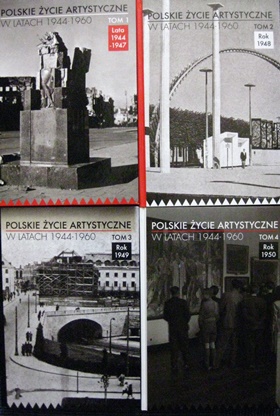
T. 1-4 of Polskie życie artystyczne w latach 1944-1960 (S950:01.b.153.1-4).
The re-introduction of Polish Studies in Cambridge has recently come a step closer, with the recruitment of a temporary lecturer currently in progress. The University Library has long collected Polish material, albeit with a modest budget recently, and this month we look at an example of recent purchases – a set on art in post-war Poland.
The University Library holds over 20,000 items in Polish, stretching from the mid-sixteenth century to the present day. Since Polish ceased to be taught as a degree-level language in the early 2000s, Polish spending in the Library has been modest. The initiative to bring Polish Studies back to the Department of Slavonic Studies, however, has long been an added incentive to ensure that we do continue to build on our existing collection, and this initiative recently received a major boost when funding was made available for the four-year appointment of a lecturer in Polish Studies.
The main areas of focus in Polish-language acquisitions for the Library are literature, history (including a major emphasis on Polish Jewish history), art, and music. The latest consignment of material from Poland, which came through earlier this month, included the first few volumes of Polskie życie artystyczne w latach 1944-1960 (Polish artistic life in the years 1944-1960; S950:01.b.153.1-4), a set which will eventually run to over 10 volumes. The Library has received the four volumes which have been published so far; these cover the period 1944-1950. 1944 and 1945 are, unsurprisingly, represented relatively briefly.
The descriptions of the set available at the point of selection had been fairly short, but the obviously interesting subject matter and the fact that the set was being published under the auspices of a section within the Instytut Sztuki Polskiej Akademii Nauk (the Polish Academy of Sciences’ Institute of Art) meant that I was confident this was a resource we should get. I realised when these first volumes arrived that we were getting something rather different to what I had imagined. For example, I’d expected the books to be very illustration-heavy and was a little disappointed to find that even the few illustrations each volume contains are provided in black and white. Looking more closely at the books, though, I realised that what we had received was of a different but very great value.
The set provides a detailed chronology of events in Polish artistic life. The standard format is: date, place, description, and a list of sources which refer to the event in question. In many cases, this format is expanded with quotations from the sources. The events covered vary from competitions to conferences, with an overall preponderance of exhibitions. If we look, as an example, at April 1948, 32 of the 50 events covered for that month are exhibitions. The month’s pattern also shows that Warszawa (Warsaw) saw by far the greatest level of activity, with 17 events listed there. The remaining events, however, are widely scattered, with 19 other locations hosting events. The two most active after Warszawa in April 1948 were Poznań and Kraków.
One of the more heavily covered events in April 1948 is an exhibition of works by 57 Jewish artists who died during the German occupation of Poland. The exhibition was held in the library of the Żydowski Instytut Historyczny (the Jewish Historical Institute) in Warszawa and ran from the 18th of April to the 15th of June. A good twenty sources are listed, with lengthy quotations from three of them completing the entry.
An example of another kind of listing is the announcement on the 15th of April of the end of the architectural competition for the building to house the Panorama Racławicka (the Racławice Panorama, the famous >100-metre-long cycloramic painting initiated by Jan Styka which shows the 1794 Battle of Racławice). After the war, the vast painting was moved from Lwów - which had now become Ukrainian L’viv - to Wrocław - which had just ceased to be German Breslau. The listing also contains information about what happened afterwards (this is an occasional feature in the set). None of the eleven entries to this first competition was awarded first prize. The next contest was held in 1956, with the eventual building opening only in 1980 – and access to the full painting was first given to visitors only in 1985.
Back to top of the page.
March 2014
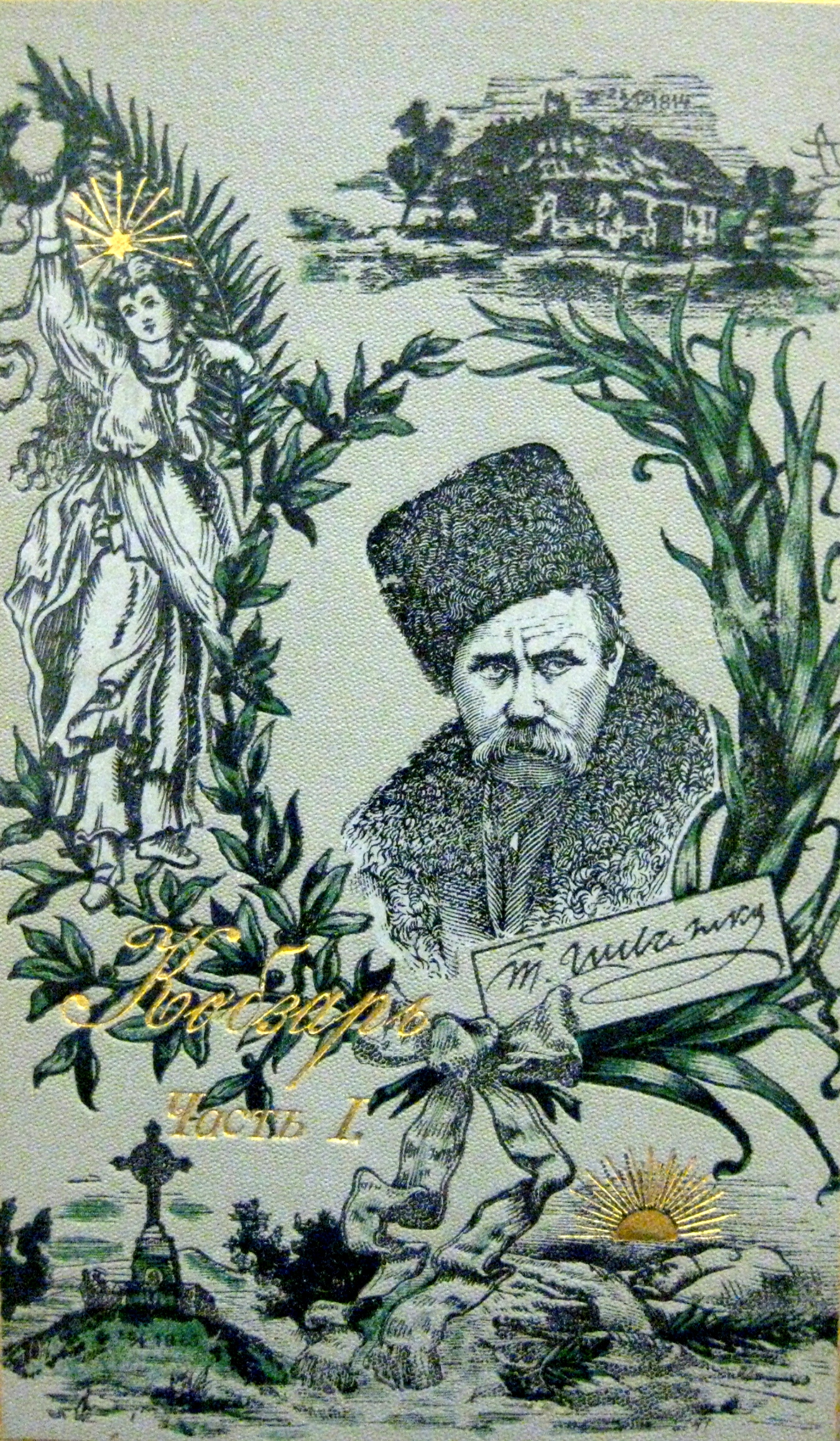
Front cover of volume 1 of Kobzar (756:33.d.85.13-16).
This month's feature, on the University Library's earliest set of Taras Shevchenko's Kobzar, is combined with the UL's bibliographical notes for the final CamCREES seminar of the Lent term, at which Peter Fedynsky spoke about his English translation of the Kobzar. This text is repeated on the CamCREES bibliographical notes page, where all previous pieces can also be seen.
The CamCREES seminar series for the Lent term ended on a cultural high, with the journalist and translator Peter Fedynsky talking about his translation of the Ukrainian poet Taras Shevchenko’s celebrated Kobzar. 2014 marks the bicentenary of the birth of Shevchenko, the giant of Ukrainian artistic, literary, linguistic, and political culture born to a serf family in 1814. The CamCREES session was supported by Cambridge Ukrainian Studies as part of its Shevchenko 2014 celebrations.
The term Kobzar (the word for a player of the kobza, a traditional Ukrainian instrument) was the title of a collection of eight poems which Shevchenko published in 1840. Over time, the word came to be used as a collective term for Shevchenko’s entire poetic output. The poems contained in the comprehensive Kobzar were written over many years, during which Shevchenko’s star rose and fell – many of them were written, for example, during his exile. All but two (which are in Russian) are in Ukrainian.
Mr Fedynsky’s is the first ever translation of the complete Kobzar into English. His talk gave both an interesting introduction to Shevchenko’s life and work (for example, we were shown many of Shevchenko’s exquisite artistic works) and a fascinating insight into the practicalities of translation. Translating poetry causes the translator more headaches than normal, given that the form of the original usually plays a bigger part than it does in prose. Mr Fedynsky explained that he had concentrated on getting across what Shevchenko said in his poetry rather than how he said it.
English translations of Shevchenko can be found by searching for Shevchenko, Taras as the author and specifying the language of the resource to be English (through Newton’s advanced search page, for example). Among the hits is Mr Fedynsky’s complete Kobzar translation, which stands at C208.c.753 (to be ordered via the Reading Room, but borrowable).
The earliest book by Shevchenko held by the University Library was published long after his death at the age of 47 in 1861. It is a four-volume set of selected works published in L’viv from 1893 to 1898, each volume featuring the beautiful front cover shown in the picture. The set is confusingly called Kobzar’ (the word was written with a soft sign at the time) but its contents correspond neither to the original eight-poem publication nor to the total poetic output. The first two volumes do contain the complete Kobzar, but the final two volumes are made up of other works. Volume 3 actually contains translations of two works Shevchenko wrote in Russian – a diary and an autobiographical tale. Volume 4 contains short stories.
As is unfortunately the case with many old records, the catalogue record for the set was rather woeful.
name was not in the authorised form (Shevchenko, Taras, 1814-1861), and his patronymic was misspelt to boot. Two versions of the name of the person who wrote the introductory section to volume 1 (the name of which section was also misspelt in the record) were recorded as headings, neither correct. The name of the body which published the book was given as a series title. At least the addition of “[and other works]” let the reader know that there was more than the Kobzar itself to find, even if the form of the addition was certainly not in keeping with current standard cataloguing practices!
Here is the record as it stands now:
It looks a bit overwhelming with all the diacritics, but it should nevertheless be an improvement! All the headings are in their correct form, for example; a contents note lets the reader know what each volume contains; and a note explains that part of the set is translated from Russian (and the translator, the writer Oleksandr Konys’kyi, gets a heading). The catalogue record can be seen in Newton here. The set can be called up to the Rare Books Reading Room.
I’ll end with another record which was in sore need of improvement – a 1963 Soviet publication of Shevchenko’s diary in Russian (the language he wrote it in). I first noticed the record because the heading for Shevchenko was also not in keeping with the standard authority. Going into the record to update it, though, I saw that there was rather more work to be done:
For a start, the single work of the title featured not one but two typos – Dpevnyk should be Dnevnik! The record also showed many of the typical signs of old, minimal records, with the pagination and publisher missing, for example. I was also curious about the note which said that the book was “With: Avtobiografiia” (autobiography). Fetching the book from NW5 allowed me to update the record to what is also a pretty bare summary, but one which should be much more useful:
The heading is authorised, the title transcribed correctly, the publication and physical details filled in. The Avtobiografiia turned out to be a very slim section at the end of the diary, a section too slight to be mentioned in the catalogue. It is then followed by nearly 50 pages of editorial notes, largely on the people Shevchenko mentions in his diary, but there is no mention of the notes’ author. The colophon does give the name of an editor (K.A. Sribnaia), but the layout suggests that she was the publisher’s copy editor rather than the proactive compiler-editor, so there is no entry for her or anyone else beyond Shevchenko. The diary is at 756:34.c.95.48.
Back to top of the page.
February 2014
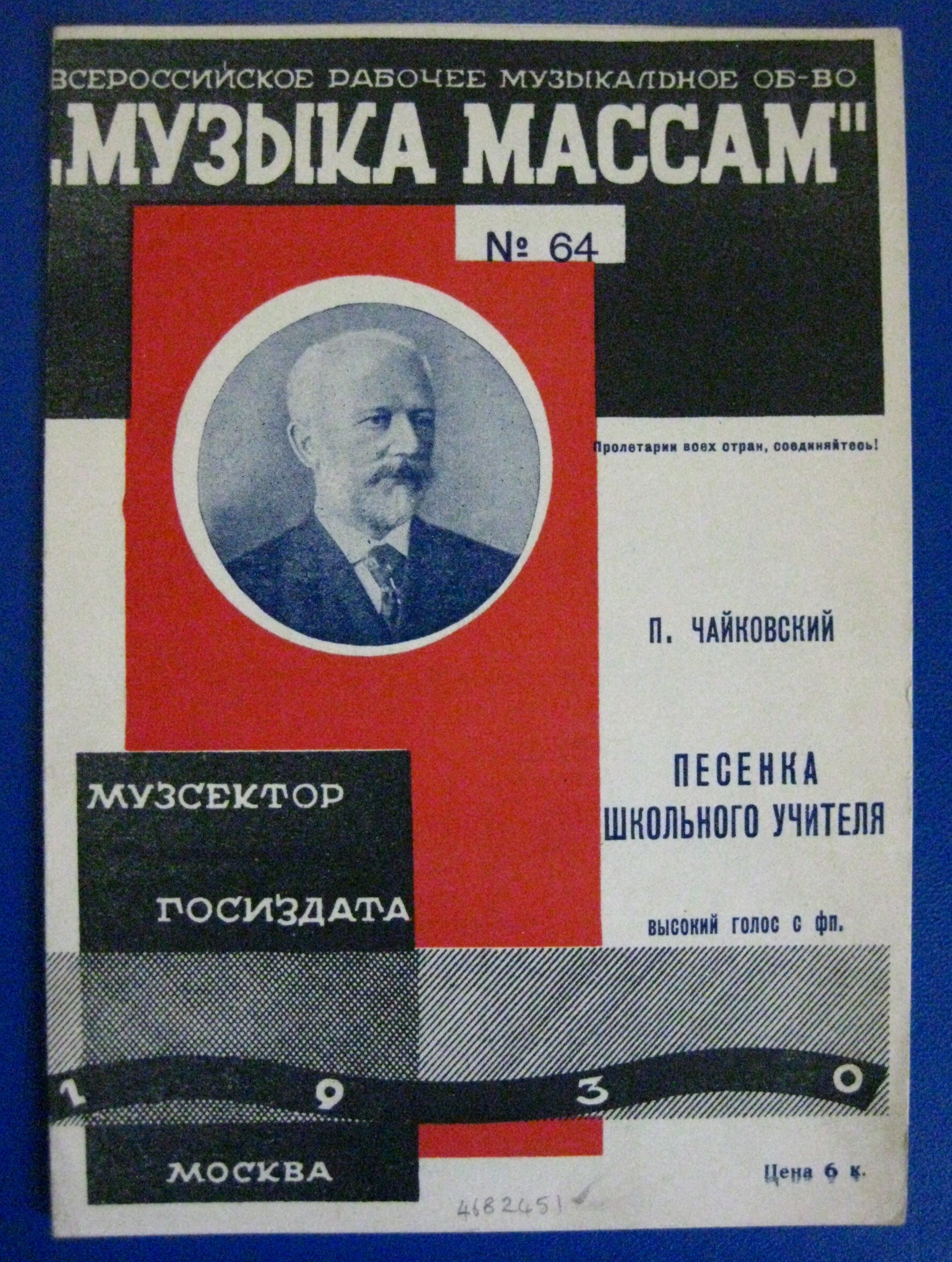
Front cover of Pesenka shkol'nogo uchitelia (CCD.54.315).
Russia’s recent PR hasn't been good, despite (and sometimes because of) the Sochi Olympics. Sochi itself was even the location of the Putin/Ianukovych meeting often considered the catalyst for the shocking events we have seen unfold in Ukraine. So what did the Olympic opening ceremony have to say in favour of Russia? Rather a lot.
The Sochi 2014 opening ceremony did not attract total approval. Many news sites and commentators focused on the failure of the fifth snowflake to turn into an Olympic ring (a technical failure nicely taken off in the closing ceremony held last night, with a will-it/won't-it sequence mirroring the original). Many also focused on the surprising/unsurprising involvement of Alina Kabaeva, rumoured to be Putin's partner, in the finishing stages of the torch relay. Others, though, found more interesting food for thought. This University of Nottingham blog post, for example, looks at the way in which the ceremony's representation of Russian history and culture played to domestic and international audiences.
The ceremony opened with the azbuka, the Russian alphabet. Each letter was paired with someone or something related to it, even if not always straightforwardly (the use of Pushkin for the letter ъ (the hard sign, a letter whose use was significantly curtailed by the early Soviet orthography reforms but which had previously been very common (Pushkin’s own name would have ended with it during his lifetime)) was a bit of a stretch). The azbuka sequence works well as a section to look at in more detail, since its make-up is representative of the broader issues of a ceremony which celebrated Russian history and culture – including the choices the organisers made about what to include.
Many of the subjects of the azbuka were obvious, reflecting the ceremony's emphasis on Russia's huge contribution to literature, music, and art and also her contribution to science, particularly in terms of space exploration (G for Gagarin, etc). Some of the subjects were less obvious, and particularly for the non-Russian audience. The letter Ë, for example, stood for Ezhik v tumane (Hedgehog in the fog), a hugely popular Soviet cartoon. As one would expect from any list compiled with such a huge ambition of representation, certain inclusions and exclusions were notable; it would have been fascinating to have heard the discussions which led to the final choices. Once the sequence had started, one wondered, for example, if S might go to Stalin or to Solzhenitsyn (it went to Sputnik).
In total, it gave the impression of huge pride. Yes, there were issues of selective memory, but certainly for this viewer it stood up as a celebration of the many great things which are too often forgotten in favour of the negative publicity modern Russia tends to attract. Among the figures it celebrated was Tchaikovsky (strictly transliterated as Chaikovskii, but usually referred to with the standard anglicised Tchaikovsky version). He was paired not with the letter which begins his name (Ч) but the one which ends it (й). His inclusion was not notable in terms of his importance as a composer, but it was potentially (if possibly just my own interpretation!) notable given the issue of his probable homosexuality. It might be that the organisers are among those who dismiss the discussions of Tchaikovsky’s sexual orientation as totally false, or it might not – but nevertheless the inclusion of his name (not, in fact, the only one in the azbuka who is thought to have been gay) is simply a celebration of the delight his work has brought to Russian and global audiences for over a century.
The Slavonic February item of the month is a music pamphlet by Tchaikovsky called Pesenka shkol'nogo uchitelia (Little song of the school teacher; CCD.54.315) dating from 1930. It features an excerpt from the opera Cherevichki, based on a Gogol short story, and has been adapted for a piano accompaniment. It comes from the UL's peerless Catherine Cooke collection. Catherine, who died ten years ago this month, in February 2004, collected both material which was about architecture and design and also examples of design – and this little pamphlet is likely to have been procured with the latter in mind. Its front cover, a photo of which accompanies this piece, is attributed to an artist called Boris Titov, and is a lovely specimen of good design and careful printing.
Back to top of the page.
January 2014
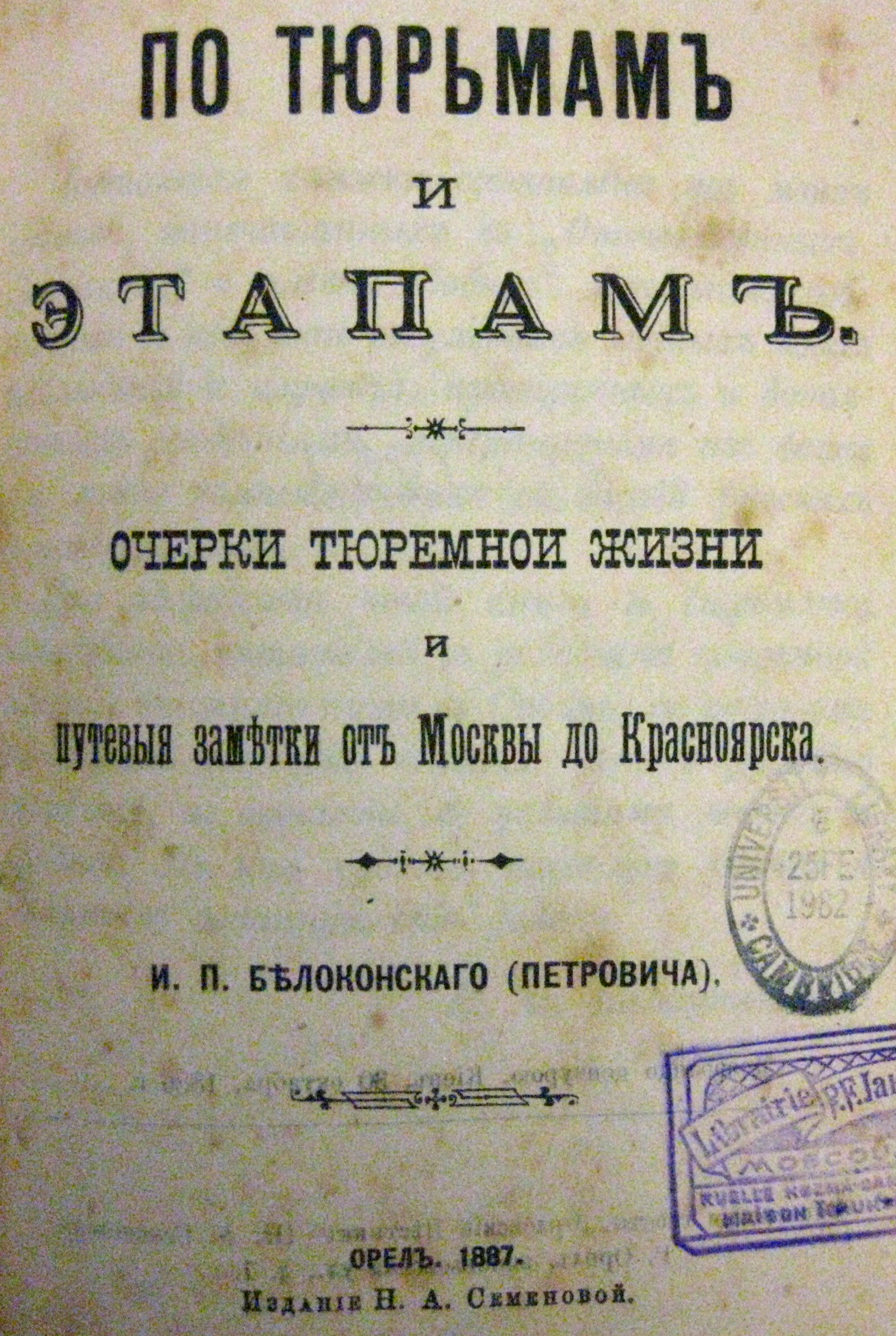
Title page of Po tiur'mam i etapam (8620.d.87)
The December early release from prison of former IUKOS chairman Mikhail Khodorkovskii as well as Pussy Riot members Mariia Alekhina and Nadezhda Tolokonnikova was a major news story. Personal experience of imprisonment and exile in tsarist Russia form the subject of the January item of the month - Ivan Belokonskii’s 1887 Po tiur’mam i etapam.
The Bol’shaia sovetskaia entsiklopediia (Great Soviet encyclopedia (third edition, R900.R11)) tells us that Ivan Petrovich Belokonskii was born in Chernigov (modern-day Chernihiv) in 1855 and died in Khar’kov (Kharkiv) in 1931. After studying in Kiev and Odessa, he grew close to the Narodniki, a populist movement largely followed by the educated middle class, and was arrested for agitation in 1879 and sent to eastern Siberia. He returned in 1886, the year before this book was published.
The full title of the book is Po tiur’mam i etapam : ocherki tiuremnoi zhizni i putevyia zamietki ot Moskvy do Krasnoiarska (Through prisons and stages : details of prison life and notes on the journey from Moscow to Krasnoiarsk). The term etap has the general meaning of a stage in a process, but also, at the time, had the more specific meaning of a ‘halting place … for groups of deported convicts in transit’ (Oxford Russian dictionary, fourth edition, R785.R62).
In the introduction, Belokonskii explains that the book is made up of work previously published in newspapers and journals and is based on his own experiences supplemented by the reports of others. ‘Through this book,’ he writes, ‘I attempt to acquaint readers with the conditions of prison life, the stage (etap) journey to Siberia which thousands of members of Russian society make every year, and, in part, the conditions of life in Siberia.
The ten main chapters cover the realities of the fate of prisoners and exiles vividly and are often full of dialogue. Each chapter starts with a heading listing the subjects it covers. Chapter 1, for example, covers no fewer than 39 subjects (the whole book is 240 pages long), such as the start of the day in prison, children, escapees, and the cruelty of the prison administration. The final chapter is followed by an additional section which covers the route from Ekaterinburg to Krasnoiarsk and data about the cost of essentials. Turning to page 237, we find a table which shows the relative costs of products such as flour, salt, and sugar in three stops along the route (Tobol’sk, Tomsk, and Achinsk) and Krasnoiarsk itself.
The University Library owns one of few copies of the book in western libraries; the majority have instead microfilm copies. The Library of Congress subject headings given in our catalogue to the book are three: Penal transportation, Prisons, and Exile (Punishment), each subdivided geographically by Russia (the LC term for pre-Soviet Russia (post-Soviet Russian is called Russia (Federation)).
Back to top of the page.
December 2013
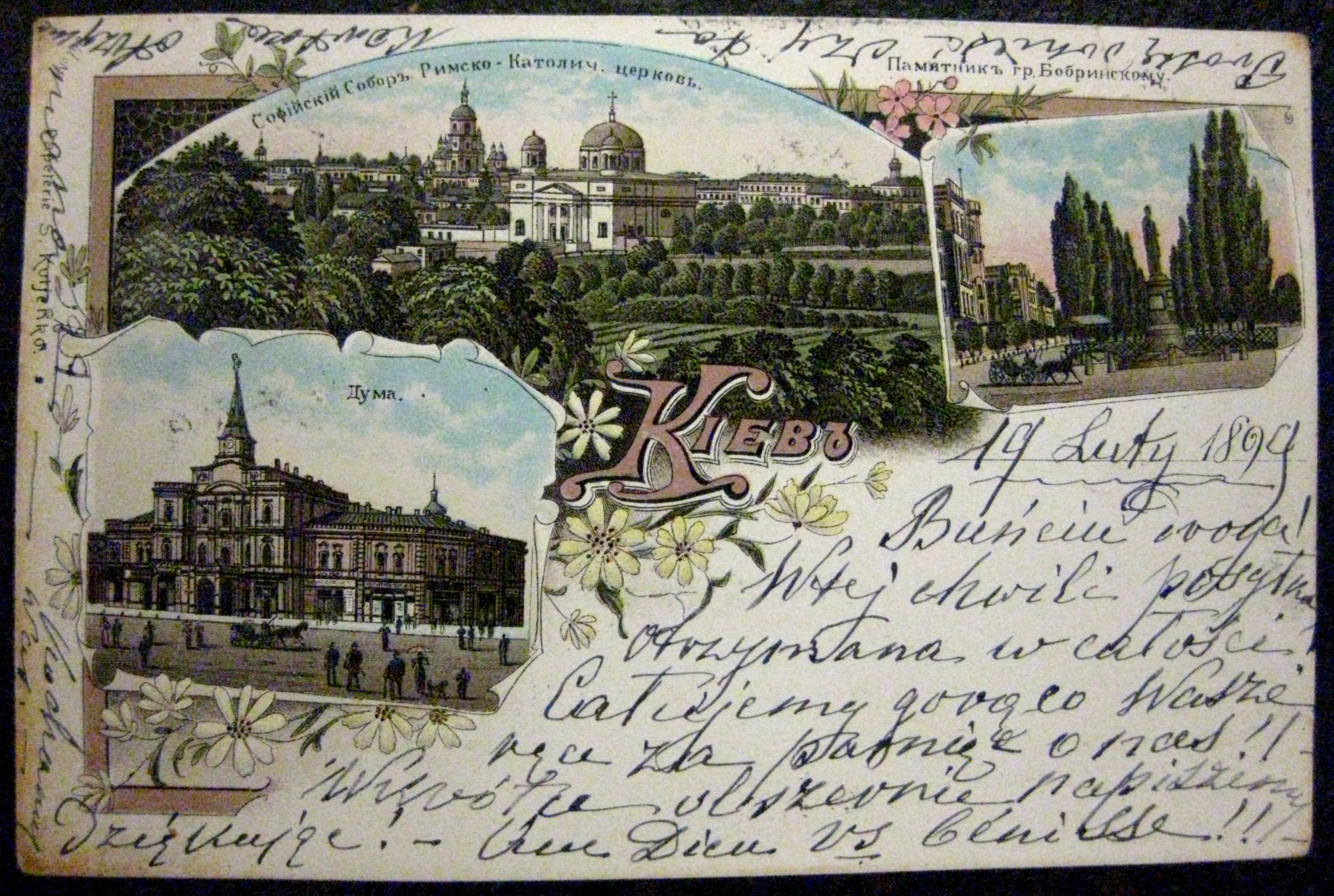
Picture and message side of Views.PC.Cooke.1
The December Slavonic item of the month is a postcard - the first of hundreds of postcards from the late Catherine Cooke's collection due to be added individually to the library catalogue over the coming months. It shows three scenes from Kyiv (often called Kiev in the west), is written in Polish and French, and is addressed in Russian to a location in modern-day Latvia! As with so many items in the Cooke collection, there are a great many interesting details waiting to be found.
The greeting on the picture side of the card reads as follows (with a translation into English after it):
Buńciu droga!
W tej chwili przesyłka otrzymana w całości. Całujemy gorąco Wasze ręce za pamięć o nas! Wkrótce obszernie napiszemy dziękując! Que Dieu vs [vous] benisse!!!
Proszę donieść czy ta kartka otrzymana. Kochamy Was.
Dear Buńсia,
Your parcel has just turned up safe and sound. We warmly kiss your hands for remembering us! We will write again soon to thank you more extensively!
May God bless you!!!
Please let us know if you receive this card. We love you.
The address given on the verso is to the Lukno estate near Rezhitsa (now Rēzekne, a Latvian city) in the Vitebskaia guberniia, which was later divided between Belarus, Latvia, and Russia. The addressee looks to be Vanda Kazimirovna Buinitskaia (she appears to have been nicknamed Buńcia, possibly through a diminutive form of her surname). After some research, we have fairly confidently identified her to be the daughter of the writer Kazimierz Bujnicki (Kazimir Buinitskii in Russian).
Bujnicki was a Polish inflantczyk, a resident of the Inflanty, or Livonia. The address on the postcard fits perfectly with this.
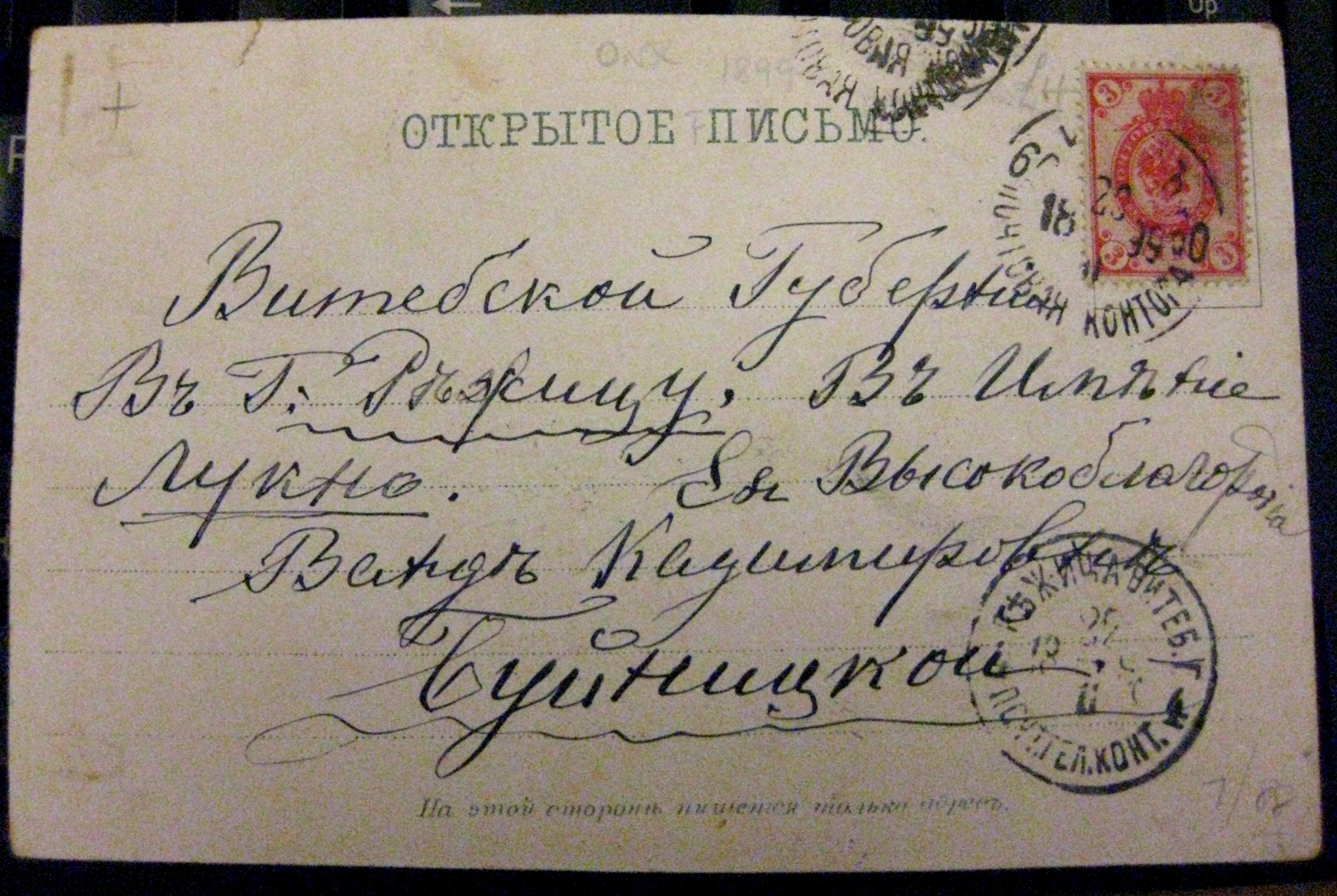
Address side of Views.PC.Cooke.1
Bujnicki is little known nowadays, but a two-page bibliographical and critical sketch can be found in volume 2 of the Polski słownik biograficzny (Polish biographical dictionary, R457.P5) in the Reading Room. The postcard dates to 1899, by which point Bujnicki was dead – he passed away on the 14th or 15th of July, 1878. His entry in the dictionary contains an interesting detail. In the general anti-Polish reaction to the January Uprising, which started in 1863 and saw Poles revolt against Imperial Russia, and also in particular reaction to Bujnicki’s own son’s acts of defiance, the Bujnicki estate was attacked twice and eventually burned. His library and manuscripts were lost, and Bujnicki himself only narrowly avoided death.
Nothing is known of the writer of the card. It appears to be an elderly hand. If any reader might be able to help identify it, I would welcome their input!
The postcard, produced by Papeterie S. Kukljenko and printed in Russian (Kyiv was also within the Russian Empire), shows three scenes: the Duma (parliament), the St Sofiia Cathedral, and a statue of Count Aleksei Bobrinskii, the Russian nobleman who founded the sugar industry in Ukraine. Only the first has survived to current times; the statue was removed in the 1930s, and the Duma was seriously damaged in World War II and later pulled down. The area where the Duma once stood is now called Maidan nezalezhnosti – Independence Square, the setting of dramatic scenes in recent weeks as the main site of protests against the Ukrainian government’s step back from potential European integration. Updates about the Ievromaidan (Euromaidan) protests are widespread in traditional and modern media – the Cambridge Ukrainian Studies facebook page is a good source of pointers to various reports, and Twitter users can keep up to date by tracking the hashtag #euromaidan.
We wish our readers a very Happy Christmas and join them in hoping for a peaceful resolution to the situation in Ukraine.
Back to top of the page.
November 2013
This year is the 80th anniversary of the end of the Holodomor, the terrible man-made famine which caused the deaths of millions of people in Ukraine in 1932 to 1933. We remember its victims this month with a relatively early book about the famine: Naibil'shyi zlochyn Kremlia ('The Kremlin's greatest crime') by M. Verbyts'kyi. Its cover shows a scythe-wielding skeleton looming over a dead woman and a grieving figure next to her.
Published in 1952 by the UK section of the Democratic Organization of Ukrainians Formerly Persecuted by the Soviet Regime, it is partially made up of survivors' narratives divided by area. The introduction to this section says that their tales complement one another and provide incontrovertible evidence that these zvirstva ('atrocities' (the word, which relates to zvir ('beast'), suggests something inhuman)) were conducted za iedynym plianom dlia vsiiei Ukrainy ('according to one plan for the whole of Ukraine') [page 27].
The narratives make, of course, harrowing reading. One about a village on the Dnipro river is introduced by the witness' statement that he zaprysiahnuv pered Bohom, shcho budu pysaty lyshe pravdu, khoch vsiiei pravdy opysaty ne mozhu ('swore to God that I would tell only the truth, although the whole truth I cannot describe') [page 33].
The term 'Holodomor' became a standard term to describe the Ukraine famine only many years after this book was published. The term used in the book is the standard holod (hunger, famine). The mor added to its end to create the current term is a root relating to death; mor itself means plague/epidemic, but the verb moryty means to kill or to exterminate. A search in the Library of Congress subject heading list for Holodomor shows a cross-reference from Holodomor, Ukraine, 1932-1933 to the authorised heading Ukraine -- History -- Famine, 1932-1933. Other headings relating to the famine include: Holodomor denial (which is used for works which, according to the heading's scope note, 'discuss the diminution of the scale and significance of the Ukrainian Famine of 1932-1933 or the assertion that it did not occur') and Holodomor denial literature (used for works which 'make such assertions').
The Holodomor is a very political and, naturally, emotive subject to this day. In 2009, Cambridge Ukrainian Studies and Trinity College's Wren Library put on an exhibition of the 1933 diaries of Gareth Jones. A Cambridge graduate, Jones was the only foreign journalist in Ukraine who made concerted and extensive efforts to get news of the famine to the world. His appeals fell on deaf ears, but his courage and determination are now widely recognised. The website of the exhibition can be found here.
The author, M. Verbyts'kyi, is unknown beyond this book - the name might be a pseudonym. If any readers might be able to cast more light on his identity, we would be very interested to know more - please e-mail slavonic@lib.cam.ac.uk. The book comes from a very important recent donation to the University Library: the Yakimiuk collection. Hundreds of predominantly 20th-century books in English and Ukrainian about Ukraine, its culture and history, were donated by the family of the late Peter Yakimiuk, a British Ukrainian whose library the collection was. The books are a hugely valuable addition to the Library. The majority of the Ukrainian-language books come from the Ukrainian diaspora, with books from Western Europe and both North and South Americas. To find out more about the Yakimiuk collection, please click here.
Back to top of the page.
October 2013
This month, we look at a work connected to the first CamCREES seminar of Michaelmas 2013. Dr Valeria Sobol spoke about Antonii Pogorel'skii's Monastyrka, and you can read more about her talk in the CamCREES bibliographical notes section of the Slavonic webpages. The UL's earliest holding for Pogorel'skii is a 2-volume set of works from 1863. Monastyrka is in volume 1, but volume 2 is where we concentrate the Item of the Month's focus. The second volume mainly contains Pogorel'skii's earliest major work, Dvoinik ili, Moi vechera v Malorossii ('The double, or, My evenings in Malorossiia'). You can see the set's record in Newton here.
Dvoinik features several tales, many richly Gothic. Unlike the volume containing Monastyrka, the 1863 volume of Dvoinik includes illustrations. They give an extremely potent impression of the content of Pogorel'skii's fiction. The example we've chosen for this page shows a cat dressed up and wearing a military hat, trotting around a table after two women. The picture comes from the story Lafertovskaia makovnitsa. The title of the story is the appellation of its villain - a woman who lives in the Lafertovskaia part of Moscow and sells honey poppy (makovye) flatcakes. After each day's work selling cakes, she turns to her other occupation: witchcraft. The scene in the pictures shows her walking in circles followed closely by her terrified great-niece Masha, who is in turn followed by a cat gradually taking on human form. The scene ends with Masha fainting from terror. In the next, she wakes up only to be scolded by the Lafetovskaia makovnitsa for failing to appreciate her first sight of her future husband.
The rest of the volume is taken up by three much shorter pieces than Dvoinik, including the pleasingly named Novaia tiazhba o bukve Ъ ('A new quarrel about the letter Ъ' (the Cyrillic alphabet's hard sign)).
Pogorel'skii has rarely been translated into English. Publications of his work even in Russian have of late usually involved his children's story Chernaia kuritsa ('The black hen'). In 2010, however, the academic publisher Nauka produced as full a set of works and correspondence as they could. Sochineniia, pis'ma ('Works, letters') is available on North Wing 5 at 757:23.c.201.1. Its Newton record can be seen here.
Back to top of the page.
September 2013
This month we again take advantage of the New and Old Style calendars. 185 years ago, in early September (N.S.; end of August (O.S.)) 1828, the literary giant Lev Nikolaevich Tolstoi was born. Tolstoi's name, as those of so many established 19th- and early 20th-century Russian figures, is anglicised in the standard Library of Congress authority file. Items by or about him can be found in library catalogues under the form Tolstoy, Leo, graf, 1828-1910.
The University Library's holdings of Tolstoi material go far back to the 1860s, but the very earliest holdings are in English. The first Russian-language material dates from 1886. Both pamphlet-sized but with colourful illustrated front and back covers, it was so hard to choose between them that this month we break with the short history of Slavonic Item of the Month and focus on two items instead of one.
The first is a play, Pervyi vinokur, ili, Kak chertenok kraiushku zasluzhil (The first distiller, or, How the little devil earned his crust (Ud.8.5005)). Based on the short story Kak chertenok kraiushku vykupal published earlier that same year, the play preaches against the evils of drink.
The second is a short story, first published in 1885, but published again the following year (the UL's edition) with illustrations. Upustish' ogon', ne potushish' (usually translated along the lines of 'A spark neglected burns down the house' (Ud.8.5002)). Poor relations between two families result in devastation and tragedy, but, after much soul-searching, the story ends with good relations restored and a positive future for both sides as a result.
Back to top of the page.
August 2013
In August 1913 (New Style; July per the Old Style), the great Ukrainian poetess Lesia Ukrainka died at the age of only 42. Born Larysa Kosacheva in 1871, her pseudonym (essentially 'Lesia the Ukrainian') appeared with her first published piece in 1884. Her identification as a Ukrainian, at a time of intense Russification, was a huge force in her life's work. The excerpt shown in the photo is from a poem which perfectly exemplifies her passion for her country and her fury at its oppression. Here are those verses in English, translated by Percival Cundy:
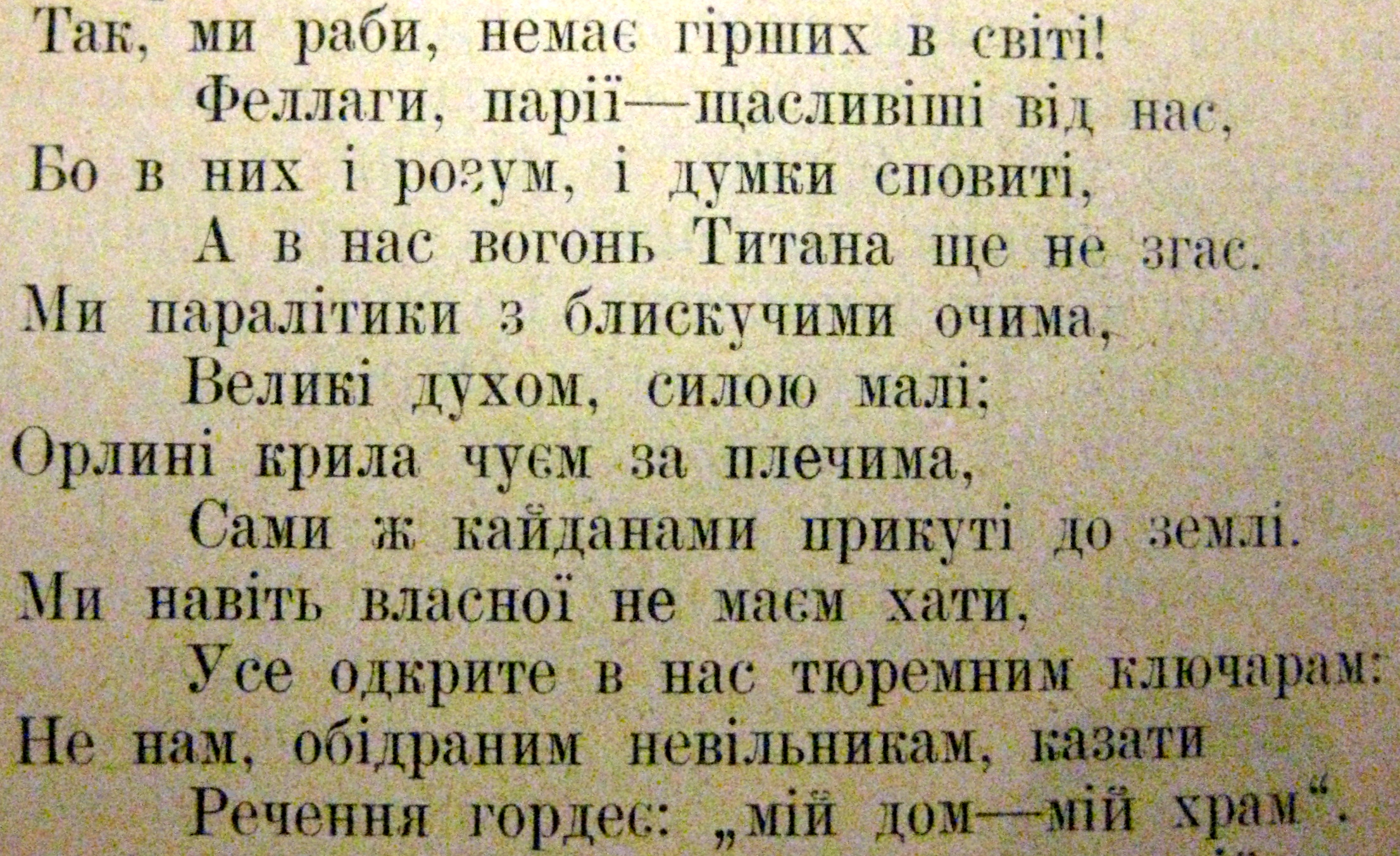
Excerpt from Lesia Ukrainka's poem 'Tovaryshtsi na spomyn' (detail from Iefremov's Istoriia ukrains'koho pys'menstva, 756:13.c.90.27)
Yes, we are slaves, none worse are there on earth! / The Fellahs, Pariahs, know no fate so dire, / For they have common sense, keep their thoughts close, / While in us lives unquenched the Titans' fire! / Yes, we are paralytics with bright eyes, / In spirit wealthy, but in strength there's dearth. / Behind our shoulders we feel eagles' wings / While still our feet are fettered to the earth. / Our land we dare not even call our own; / All opens for us with a jailor's key; / We, ragged captives, ne'er can proudly say: / "This is our home, our temple, which ye see." (excerpt from 'Reminder to a friend' in Spirit of flame : a collection of the works of Lesya Ukrainka [9756.c.473])
The University Library's Ukrainian collections are unfortunately to a certain degree representative of this struggle. The classification system, dating from the time of empires, traditionally put Ukrainian history and literature in with Russian (a separate Ukrainian literature class was only introduced in 2011). More specifically, of Lesia Ukrainka's own work, the Library four earliest holdings are in translation - three in Russian, and Cundy's collection in English. The earliest book by her in Ukrainian dates to 1965 and was in fact published in Edinburgh (Newton record here)!
In order to find a book early enough to take an image from while keeping to the terms of the copyright rules, the net was cast more widely to take in anthologies and works of literary criticism. Gold was finally struck with Serhii Iefremov's Istoriia ukrains'koho pys'menstva (Newton record here), the August 2013 item of the month. Iefremov was a famous literary critic (the book in question is a major work in the field of Ukrainian literary studies) and journalist and also a political activist. He was the chief defendant in the infamous Union for Liberation of Ukraine show trial in 1930. His death sentence was commuted to imprisonment but the commuted sentence killed him nevertheless; he died in the Gulag system in 1939.
Iefremov's Istoriia ukrains'koho pys'menstva is a wonderful resource, giving clear and concise coverage of centuries of Ukrainian writing. Lesia Ukrainka (whose mother, the poetess Olena Pchilka (also a pseudonym) is also discussed in the book) features in the chapter on the 1880s. Iefremov, writing before Ukrainka's death, describes the passion and bravery of her writing. Among the poems he quotes in her section is also the last section of her 'Contra spem spero' which, again in Cundy's translation, runs:
Yes, through all my tears I still will smile, / Sing my songs though troubles round me loom; / Hopeless, still hope on against all odds, / I will live! Away, ye thoughts of gloom!
Back to top of the page.
July 2013
2013 marks the 400th anniversary of the ascent of the Romanov family to the Russian throne. In particular, July 2013 sees 400 years since the coronation of the first Romanov tsar, Mikhail Fedorovich.
The University Library has got a huge number of items relating to the Romanovs. Those which concern the dynasty as a whole or a number of figures within it will have the Library of Congress subject heading Romanov, House of. Works on individual monarchs will have that person's own subject heading. The heading for Mikhail Fedorovich, for example, is Michael, Czar of Russia, 1596-1645 (Russian monarchs' names tend to be heavily anglicised).
The item we've chosen to focus on is in the Library's famous Waddleton collection. The late Norman Waddleton collected and donated to the vast library of early colour-printed books. Rossiiskii tsarstvennyi dom Romanovykh (The Russian Imperial House of Romanov; click here to see its record) is a collection of chromolithograph portraits of all the monarchs in the Romanov family. The image we've used serves as the frontispiece and is the only non-portrait in the book. It shows the teenage Mikhail Fedorovich's coronation, which took place in Moscow in July 1613, several months after he had been elected.
Two portraits precede Mikhail Fedorovich's own (which can be seen here). These are of his parents, Filaret and Marfa, and can be seen by clicking here and here respectively. In the main, non-monarchs feature very rarely in the album, although later spouses do feature. The last two portraits are of the last of the ruling Romanovs - Nikolai II (portrait here) and his wife Aleksandra Feodorovna (here). Unlike the other portraits, which are each accompanied by a biographical note, these last two take up the full page, leaving room only for titles and dates. Nikolai II's own ascent to the crown would have been the inspiration for the book's publication. The only bibliographical dates in the book relate to each portrait's date of approval by the censor; these span from 1894 (the year when Nikolai became tsar) and 1896 (the year of his coronation).
Back to top of the page.
June 2013
The University Library's Music Department was the focus of the search for this month's material, since June 2013 sees 105 years since the death of the Russian composer Nikolai Andreevich Rimskii-Korsakov. Uncovering the full extent of the Music Department's riches involves using their card catalogues as well as the online catalogue - details about finding music material can be found here.
On Newton alone, UL has got over 200 items by Rimskii-Korsakov (known bibliographically by an anglicised version of his name, Rimsky-Korsakov, Nikolay, 1844-1908,), the vast majority of which are music scores. The one we have chosen is one of the earliest listed - the score of Svetlyi prazdnik, one of Rimskii-Korsakov's most famous works, known commonly in English as the 'Russian Easter festival overture'. The photo featured shows a detail from the score. Published in Leipzig in 1890 by the Russian music publisher Mitrofan Petrovich Beliaev, the score has got the Beliaev standard of a very intricately decorative title page, linked to here. It's so intricate, in fact, that it's almost impossible to make out the writing, or details such as the music notation (click here to see a close-up of the music).
As far as books about Rimskii-Korsakov are concerned, there are over 50 listed on Newton alone. The earliest of these is a slim volume by Nikolai Fedorovich Fendeizen, published in 1908 shortly after Rimskii-Korsakov's death (Nikolai Andreevich Rimskii-Korsakov, MR529.c.90.2). Here's a link to an image of its front page and one to the portrait of the composer which opens the book.
Back to top of the page.
May 2013
This month we mark the 70th anniversary of the Warsaw Ghetto Uprising, the extraordinary attempt by the thousands of Jews trapped in the Ghetto's tiny area of Warsaw to resist the Nazis which was finally put down so brutally in the middle of May 1943. The uprising is the specific subject of several dozen items in the University Library, with the dedicated Library of Congress Subject Heading Warsaw (Poland)--History--Warsaw Ghetto Uprising, 1943 used in many records, often with more specific further subdivisions (eg Personal narratives or Sources). The earliest is a Yiddish book published in Tel Aviv 1948, with many languages represented in the 30+ books produced since.
The items we decided to look at to help mark the anniversary, though, in fact pre-date even World War II itself. The destruction of the ghetto in 1943 was followed by the almost total destruction of the whole city the following year, during and after the suppression of the 1944 Warsaw Uprising. We therefore decided to commemorate those who fought and died in the two uprisings by celebrating the city they knew before the horrors of war struck it.
The UL's Maps Department holds not only maps and atlases but also postcards and similar picture albums. The Department's holdings on Newton reflect only items catalogued since August 2000. For items catalogued before then, one must look at the card catalogues which stand in the Map Room, and a search for Warsaw produced several items of interest. What we have chosen as our item of the month is the fold-out map Plan Warszawy, 1934-35 r. [Map of Warsaw, 1934-35; Maps.c.273.93.3], from which the image shown comes. The synagogue shown in the middle was Warsaw's Great Synagogue (Wielka Synagoga), which was destroyed by the Nazis during the suppression of the ghetto uprising and never rebuilt.
The synagogue can be seen in various pictures held by the Maps Department. The Album Warszawy (Warsaw Album; Views.273.90.1), dating from the early 20th century, contains a drawing of the synagogue which you can see here. Another view is provided in a French-language photo album of Warsaw (Vues de Varsovie (Views of Warsaw; Views.273.89.1)) published in Warsaw in 1899 - click here to see it.
Finally, we should also mention one post-war resource in particular. While we can't show images from it due to copyright, readers interested in finding out more about the huge and terrible effects the war had on Warsaw should consult Warsaw as it was : original city maps before 1939 and in 1945 (Atlas.6.98.248). This contains reproductions of two maps of the city and shows the scale of the devastation suffered.
Back to top of the page.
April 2013
This month we mark the 200th anniversary of the death of one of Imperial Russia's great generals - Mikhail Illarionovich Golenishchev-Kutuzov (in Library of Congress subject heading terms, Kutuzov, Mikhail Illarionovich, svetleishii kniaz' Smolenskii, 1745-1813). Kutuzov is most famous for his crucial role in the defeat of Napoleon in Russia in 1812. He survived his greatest victory by only a few months. The item we've chosen to celebrate Kutuzov is a biography published in the year of his death, Zhizn' i voennyia dieianiia general-fel'dmarshala svietlieishago kniazia M.L. Golenishcheva-Kutuzova Smolenskago (The life and military exploits of Field Marshal M.L. Golenishchev-Kutuzov, his Highness Prince of Smolensk). The portrait of Kutuzov, which serves as our illustration, is slightly stained but otherwise clear, and is in keeping with most other Kutuzov portraits, hiding the right-hand side of his face. As a young man, Kutuzov sustained a terrible head injury which affected his right eye. The biography, by an unnamed author, is in three parts, but bound together. At its end is a folded and slightly crumpled map of the battlefield of Borodino. The book stands at 8586.d.86, accessible through the Rare Books Reading Room. Click here to see its record on Newton.
Back to top of the page.

